My most current blog entry:
Entries in Old Doors & Windows (41)
A New Years Eve Ramble Near Hua Hin, Thailand
 Friday, March 20, 2020 at 2:05PM
Friday, March 20, 2020 at 2:05PM 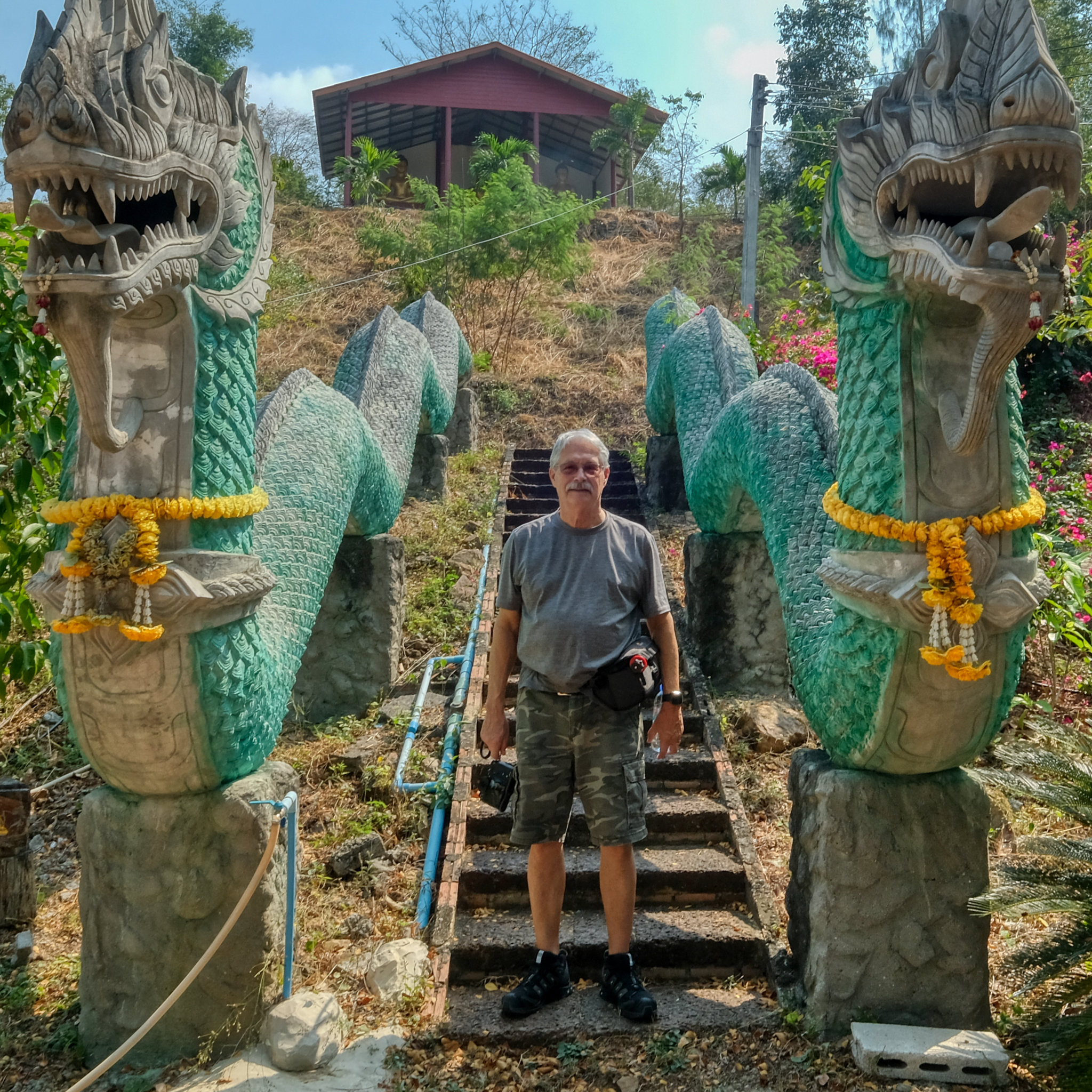 My visiting friend (of 45 years) on the verge of a long climb!
My visiting friend (of 45 years) on the verge of a long climb!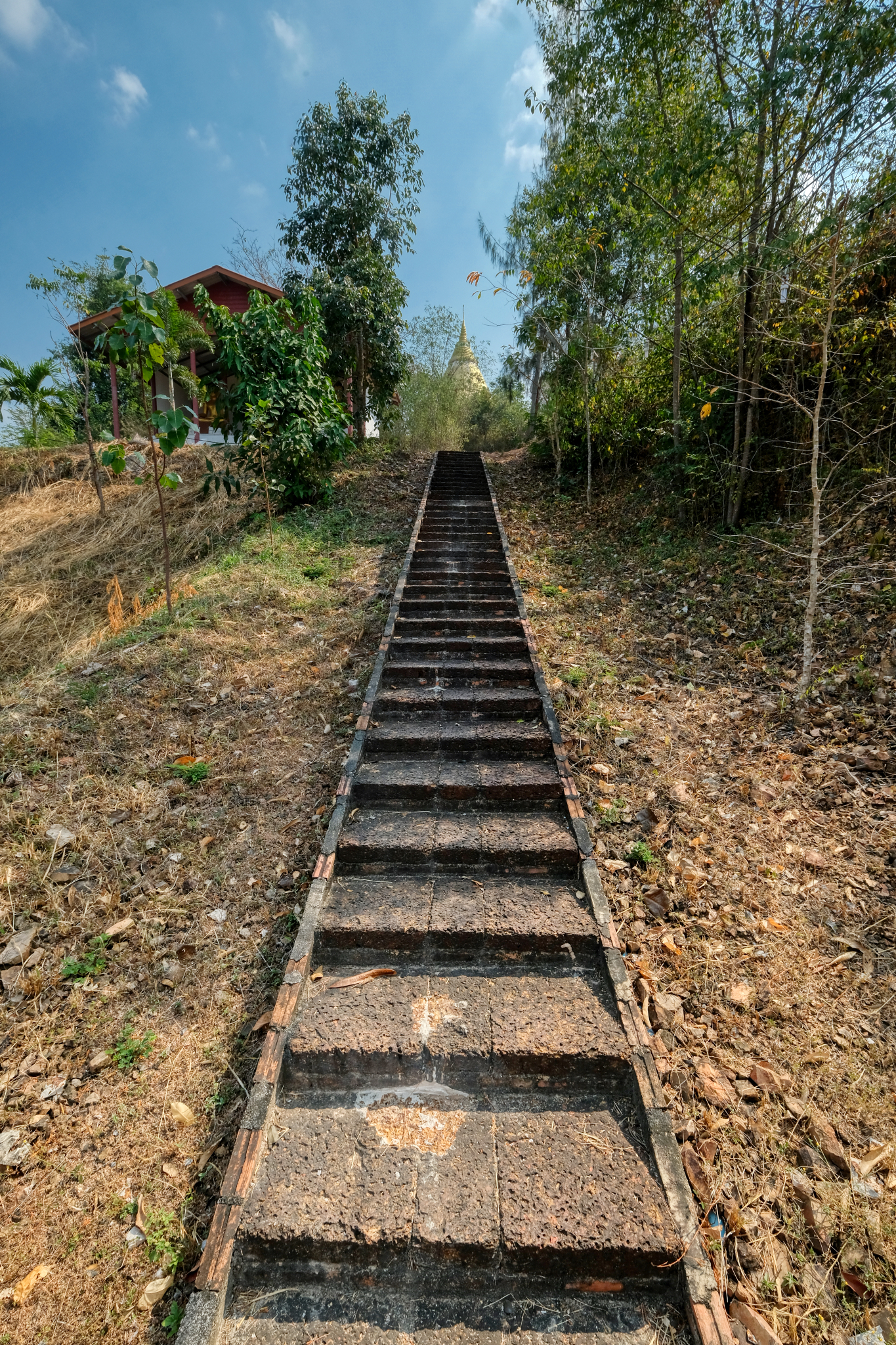 A long way up to the chedi.
A long way up to the chedi. 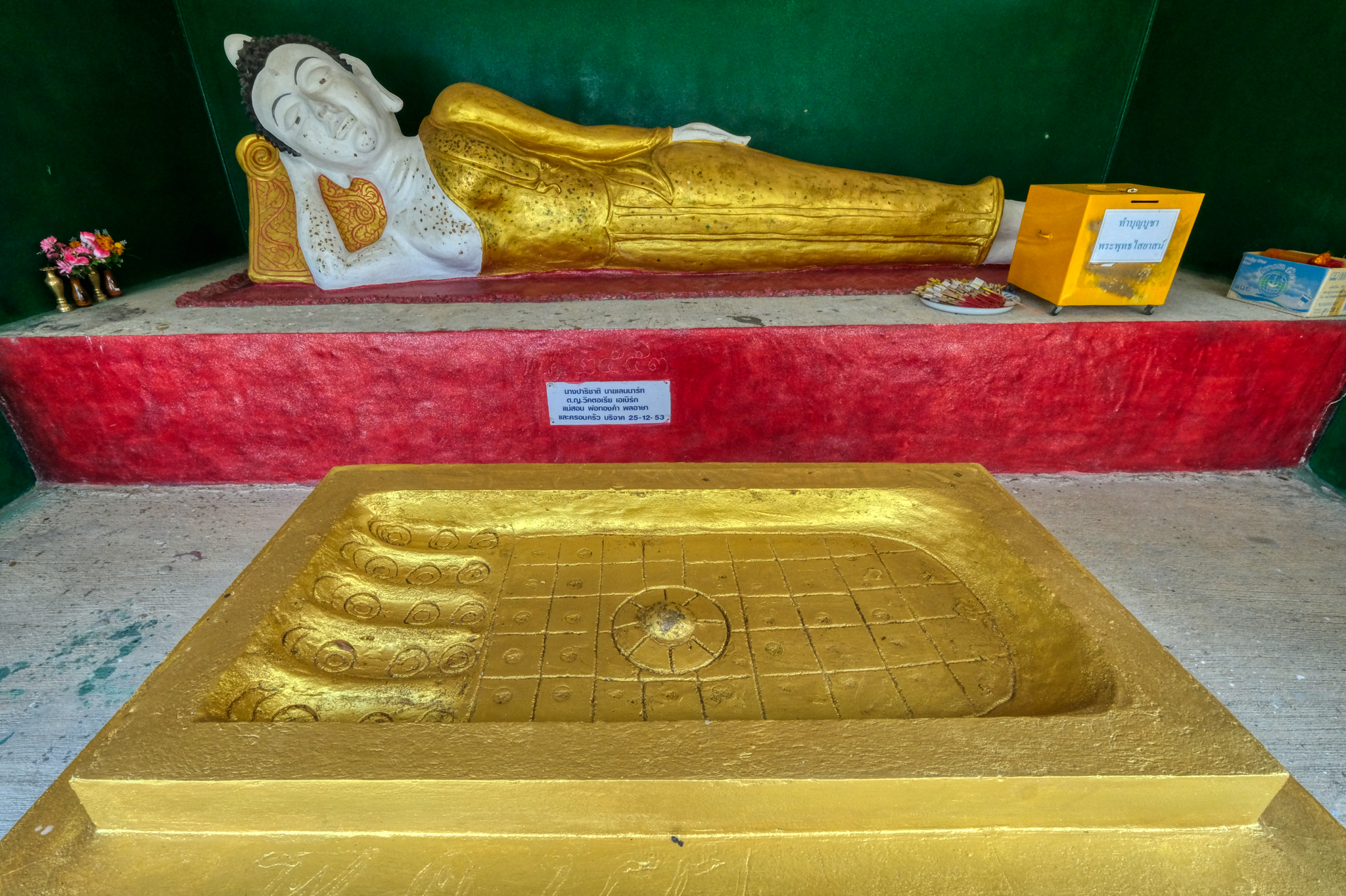 A beautiful shrine with a reclining Buddha on the way up . . .
A beautiful shrine with a reclining Buddha on the way up . . . 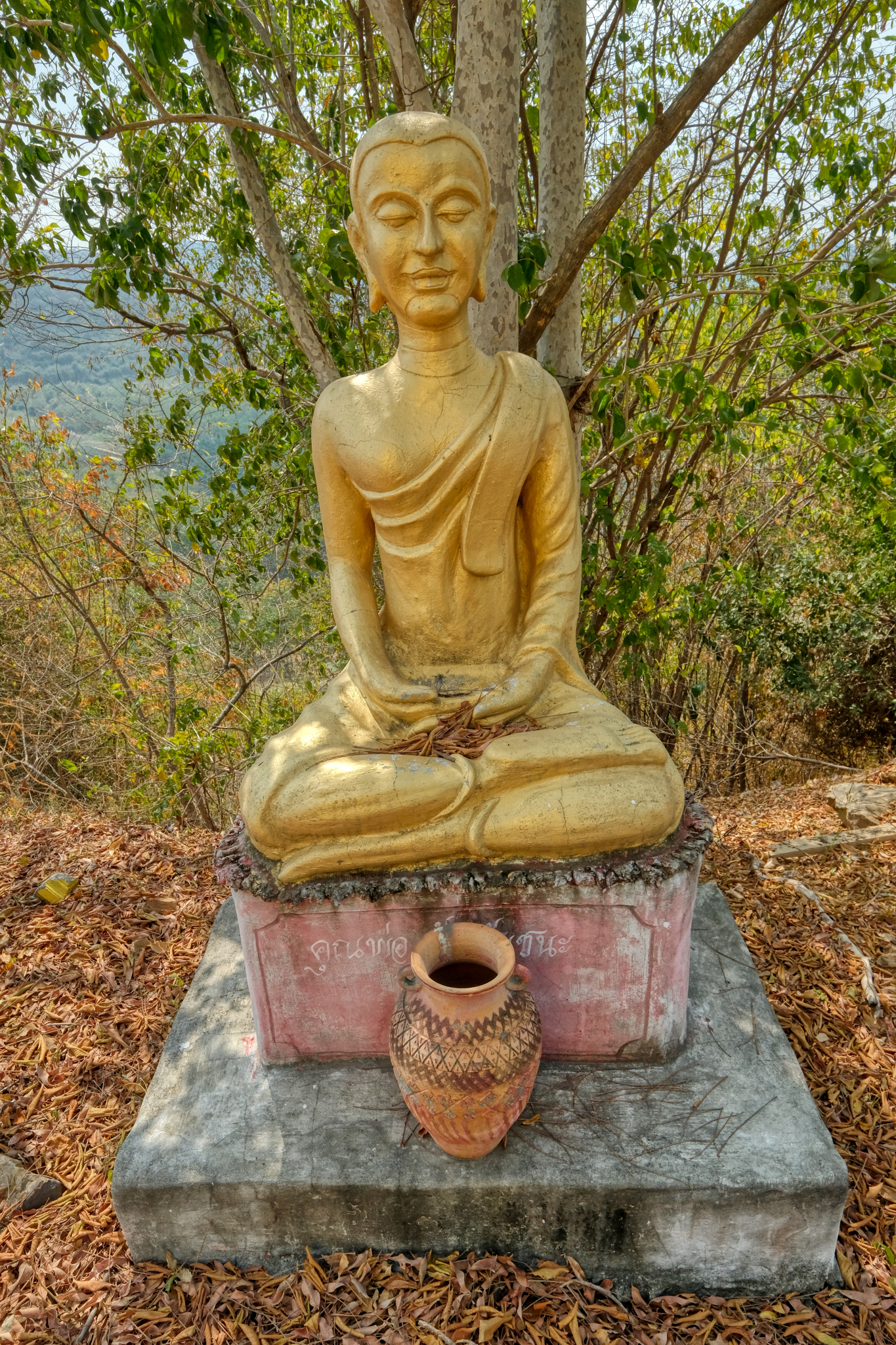 This 'naive art' Buddha image was very heartwarming.
This 'naive art' Buddha image was very heartwarming.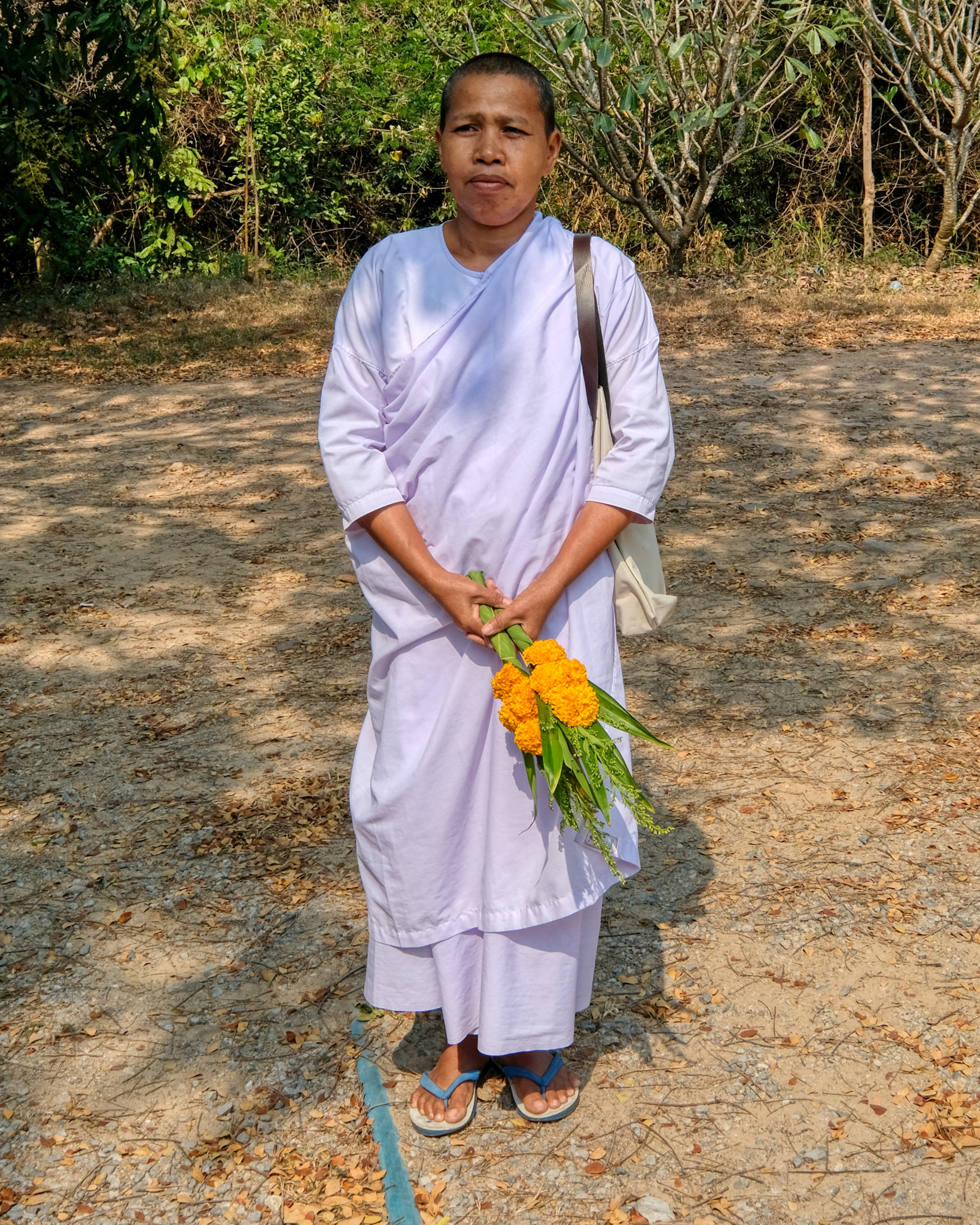 This Buddhist 'nun' followed us around for the afternoon. She is a kind of security guard. Good idea . . . there are some very beautiful and rare Buddha statues in the golden chedi (known as a 'stupa' in other Buddhist trditions and countries).
This Buddhist 'nun' followed us around for the afternoon. She is a kind of security guard. Good idea . . . there are some very beautiful and rare Buddha statues in the golden chedi (known as a 'stupa' in other Buddhist trditions and countries).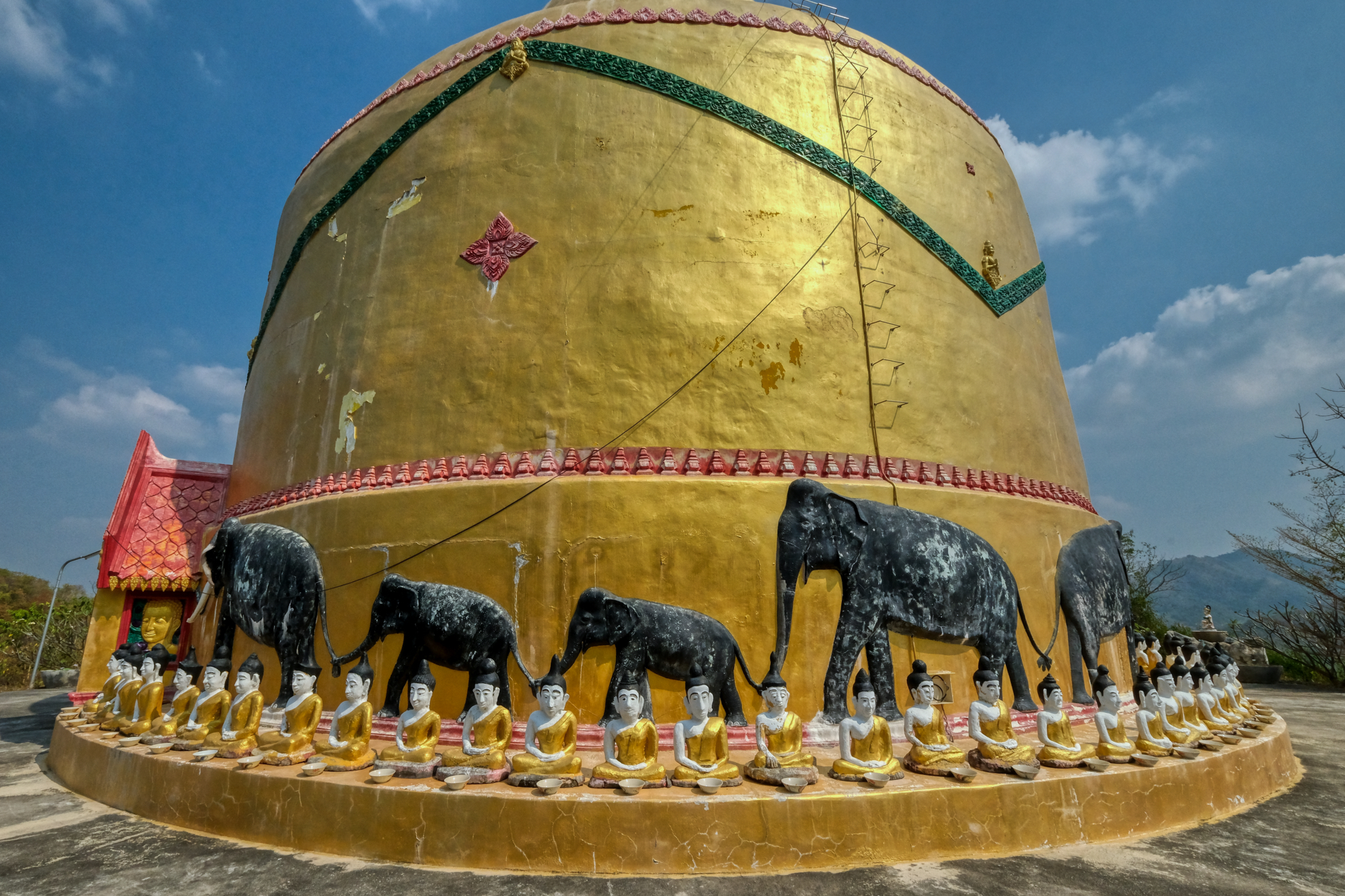 This is what I had taken my friend to see . . . and for me, to see again.
This is what I had taken my friend to see . . . and for me, to see again.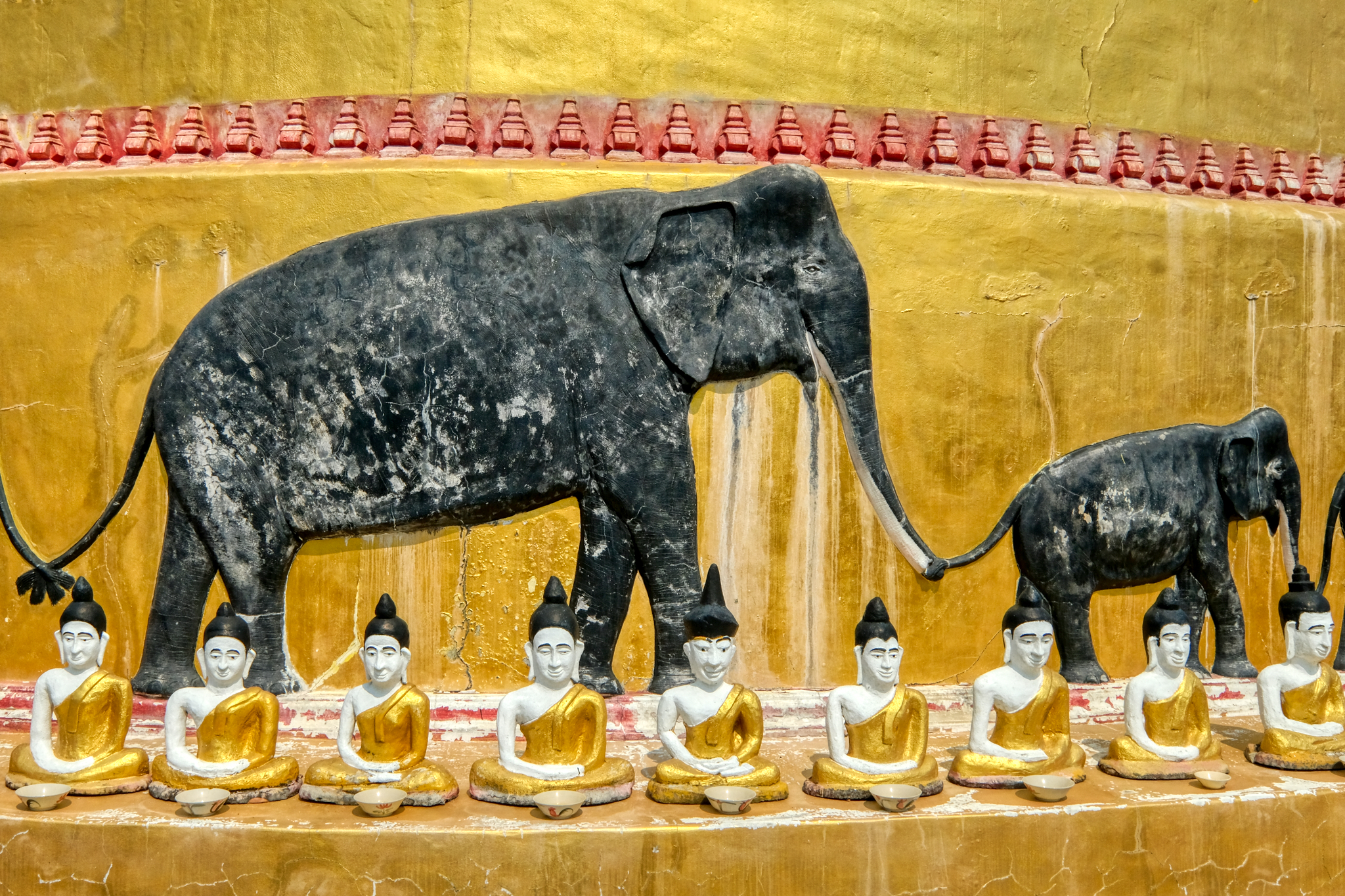 More fascinating, and individualistic, naive art Buddha images. As interesting as the outside of the chedi was, it is the inside that brought me back!
More fascinating, and individualistic, naive art Buddha images. As interesting as the outside of the chedi was, it is the inside that brought me back!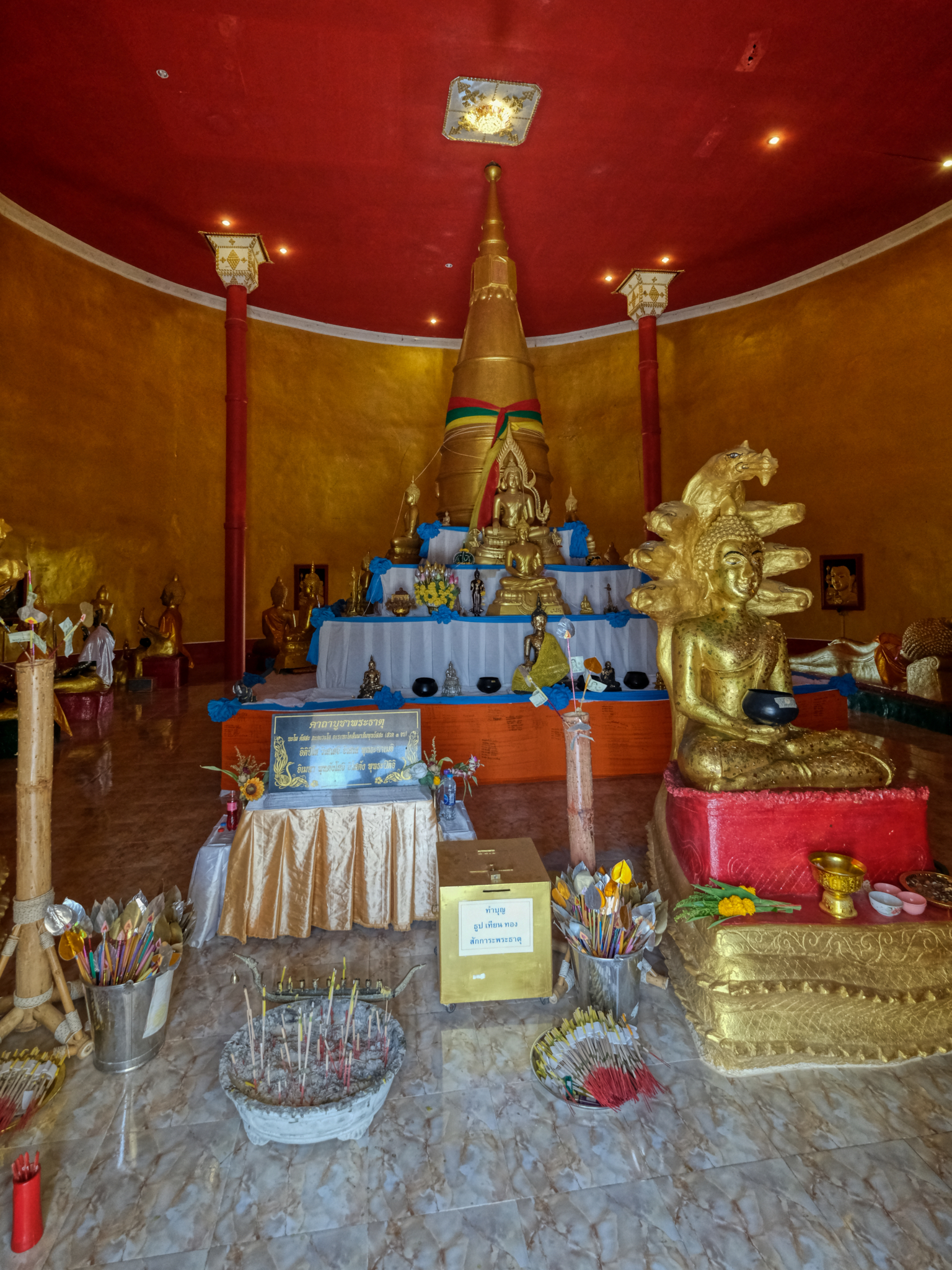 Looking into the chedi interior from the front door. WOW!
Looking into the chedi interior from the front door. WOW!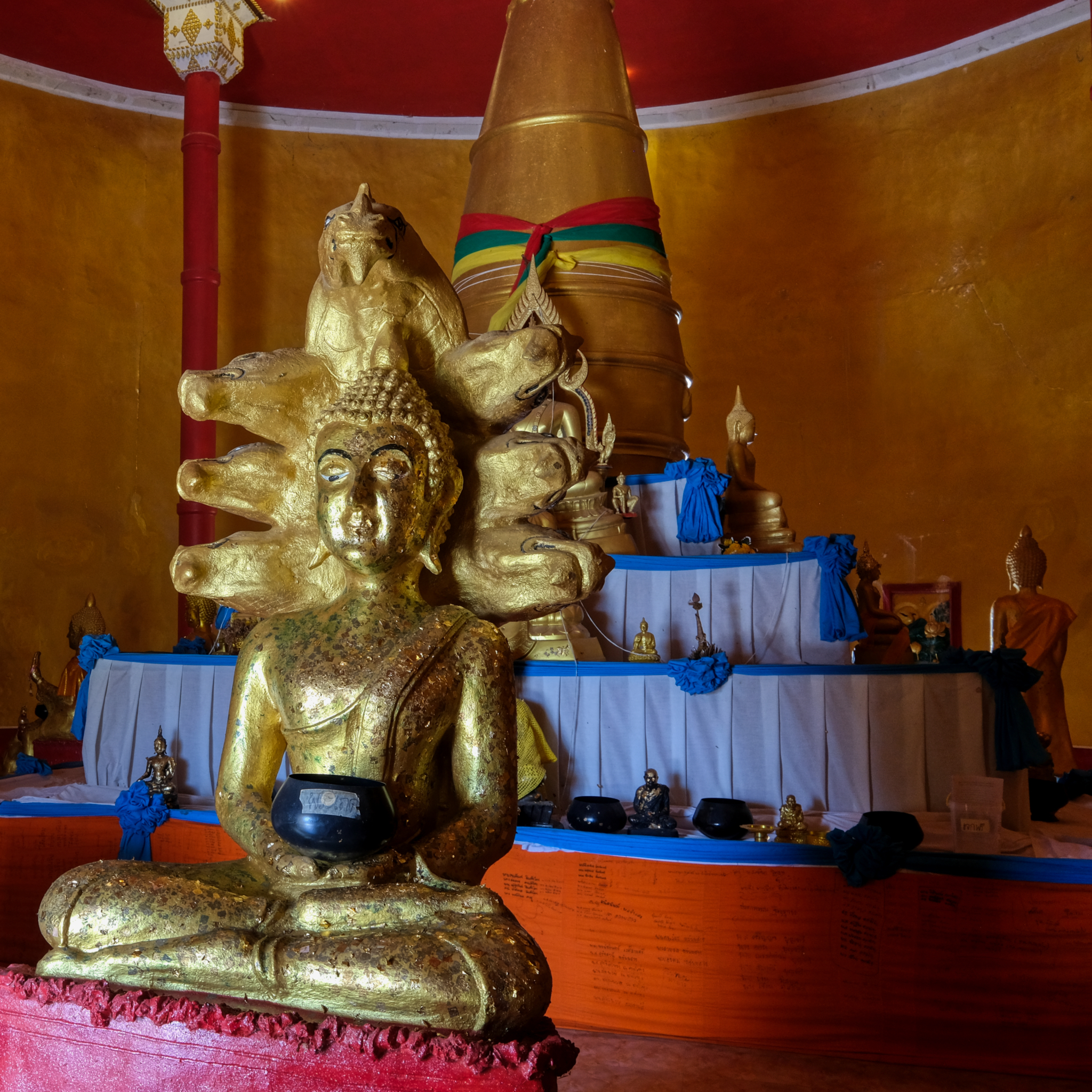 The light was so scrumptious, the images so serene . . .
The light was so scrumptious, the images so serene . . .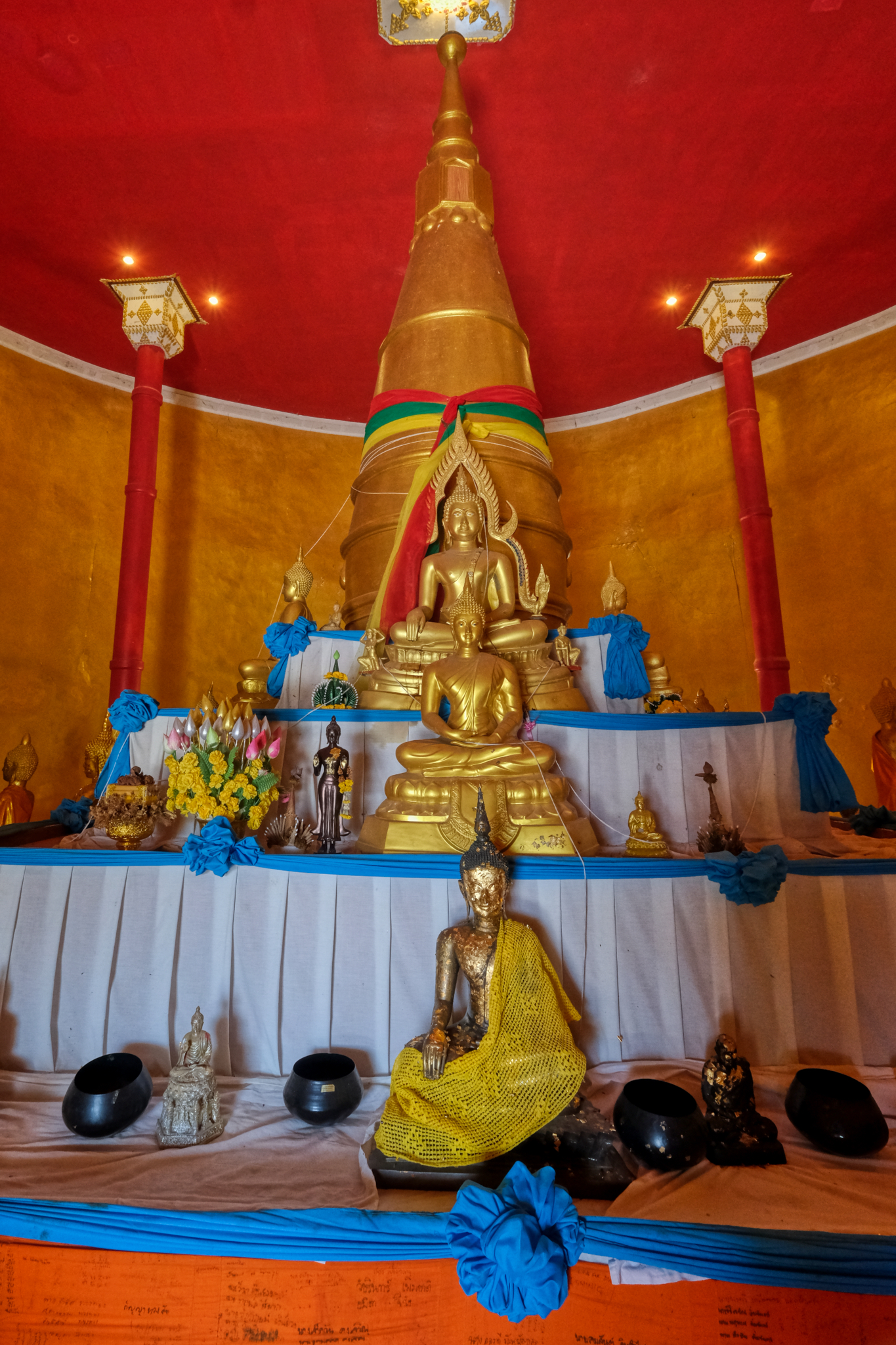 The front of the entry altar. The big interior in its marvelously bright colors.
The front of the entry altar. The big interior in its marvelously bright colors.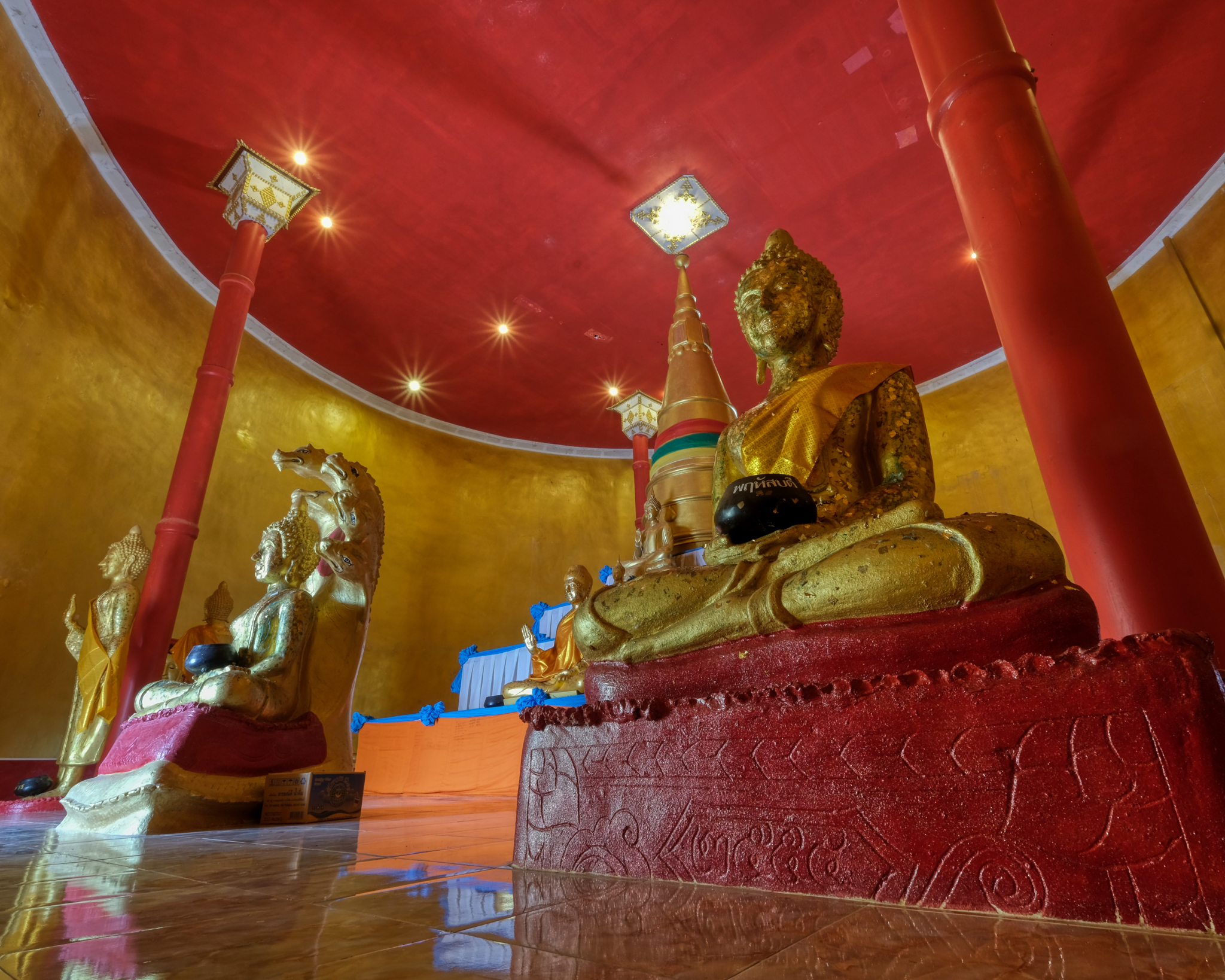 My camera on a small tripod . . . so many superb images to capture.
My camera on a small tripod . . . so many superb images to capture.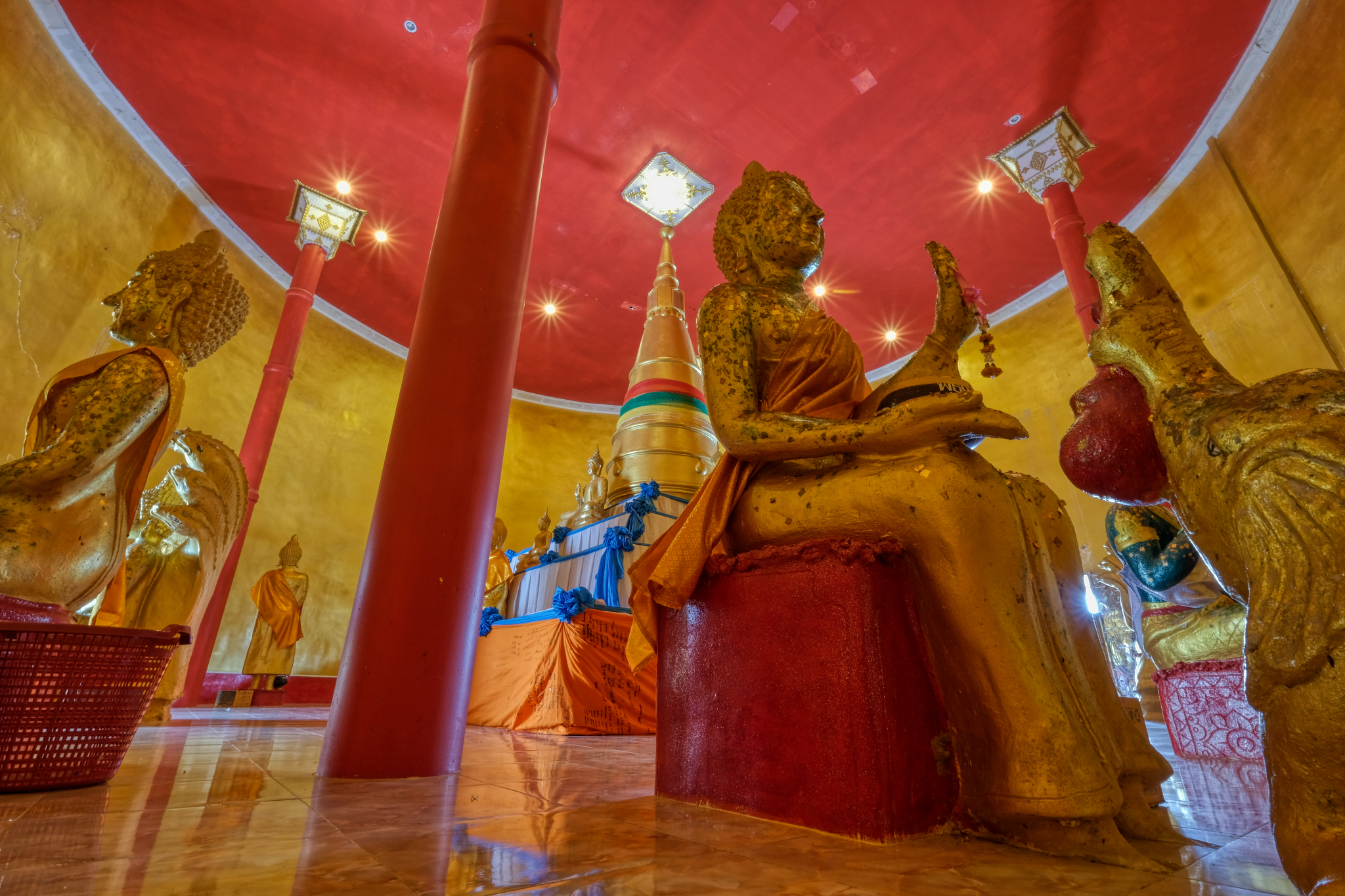
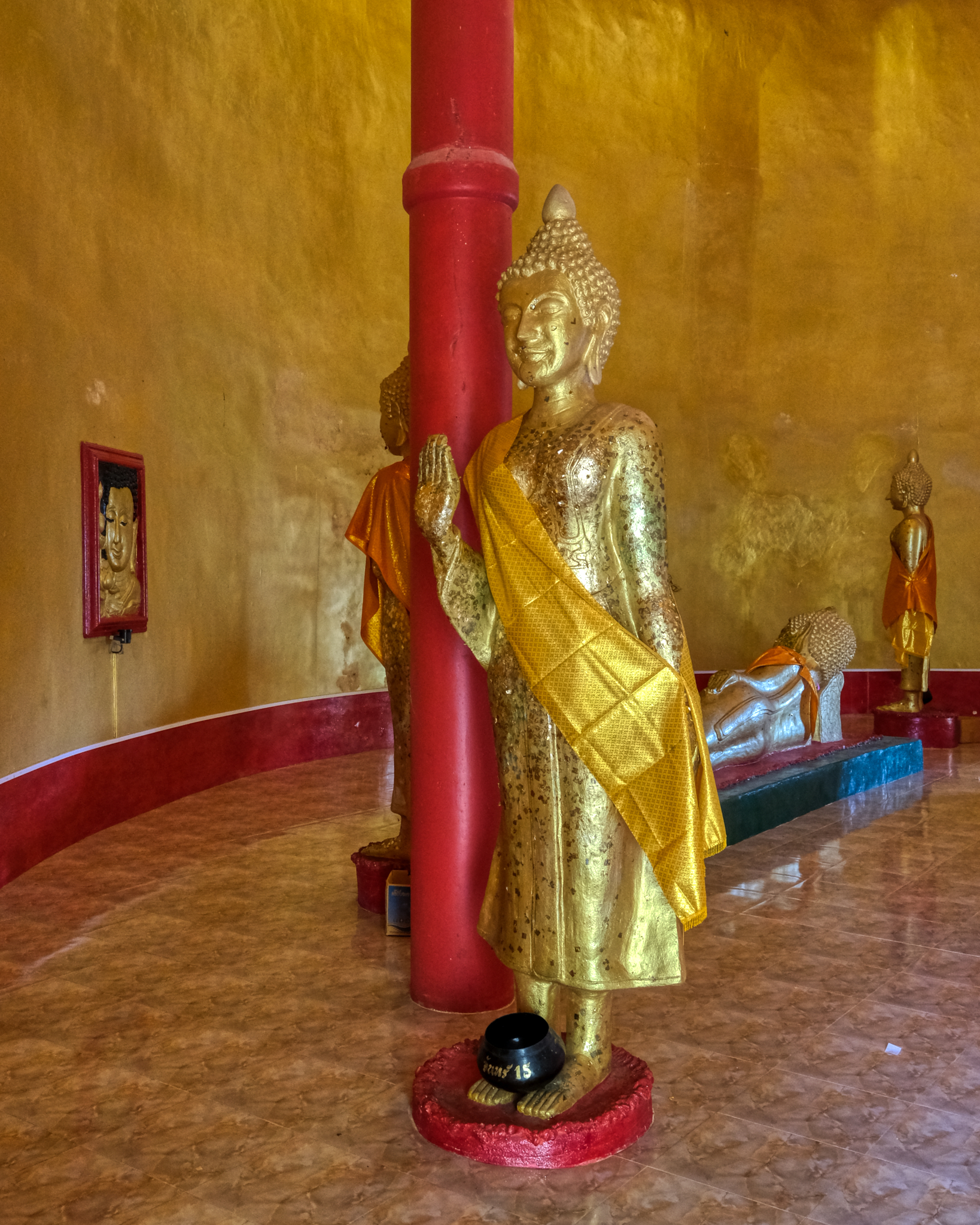 Holding Back The River of samsaric temptation.
Holding Back The River of samsaric temptation.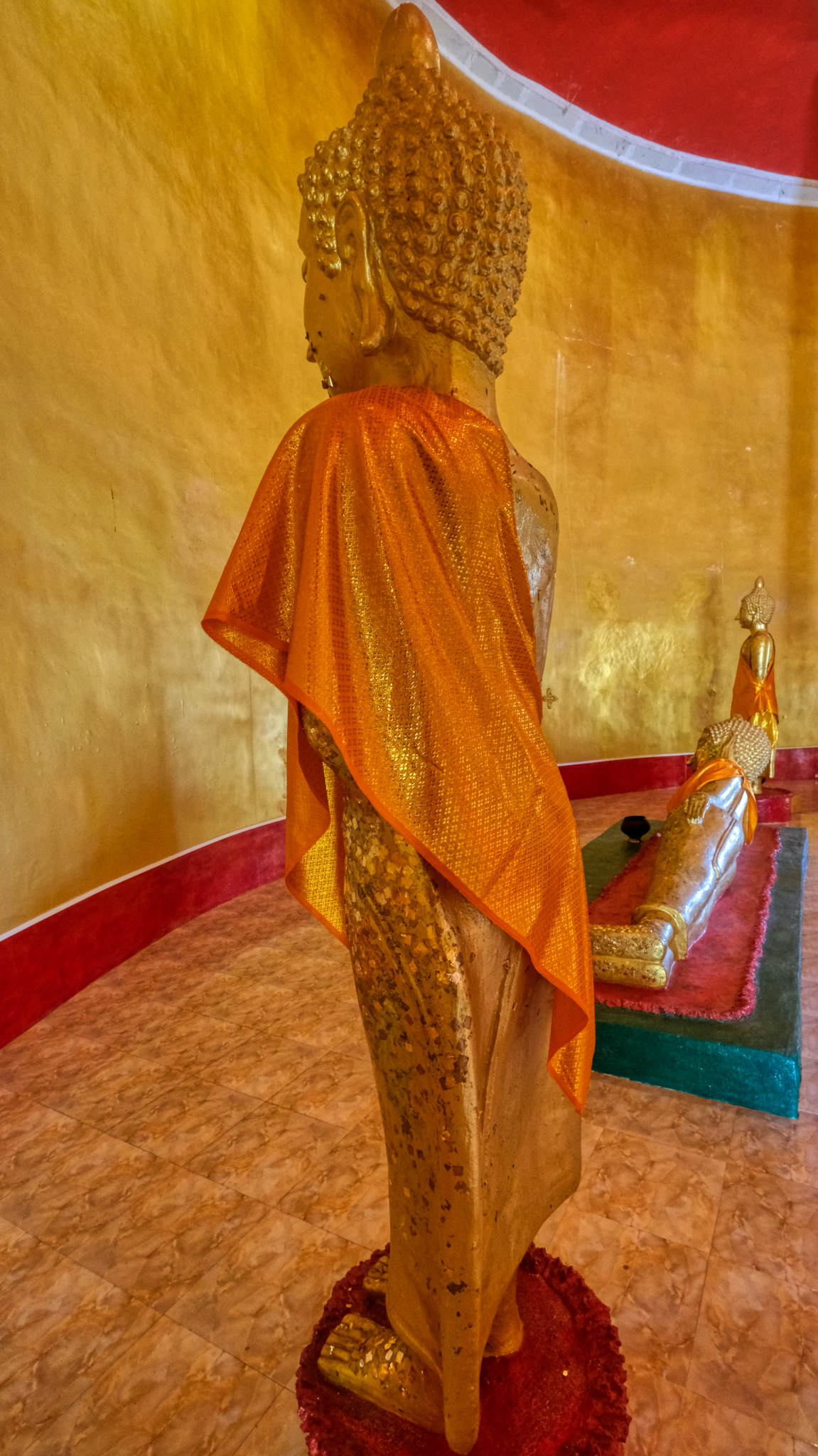 Beautiful spiritual space of Buddhanature.
Beautiful spiritual space of Buddhanature.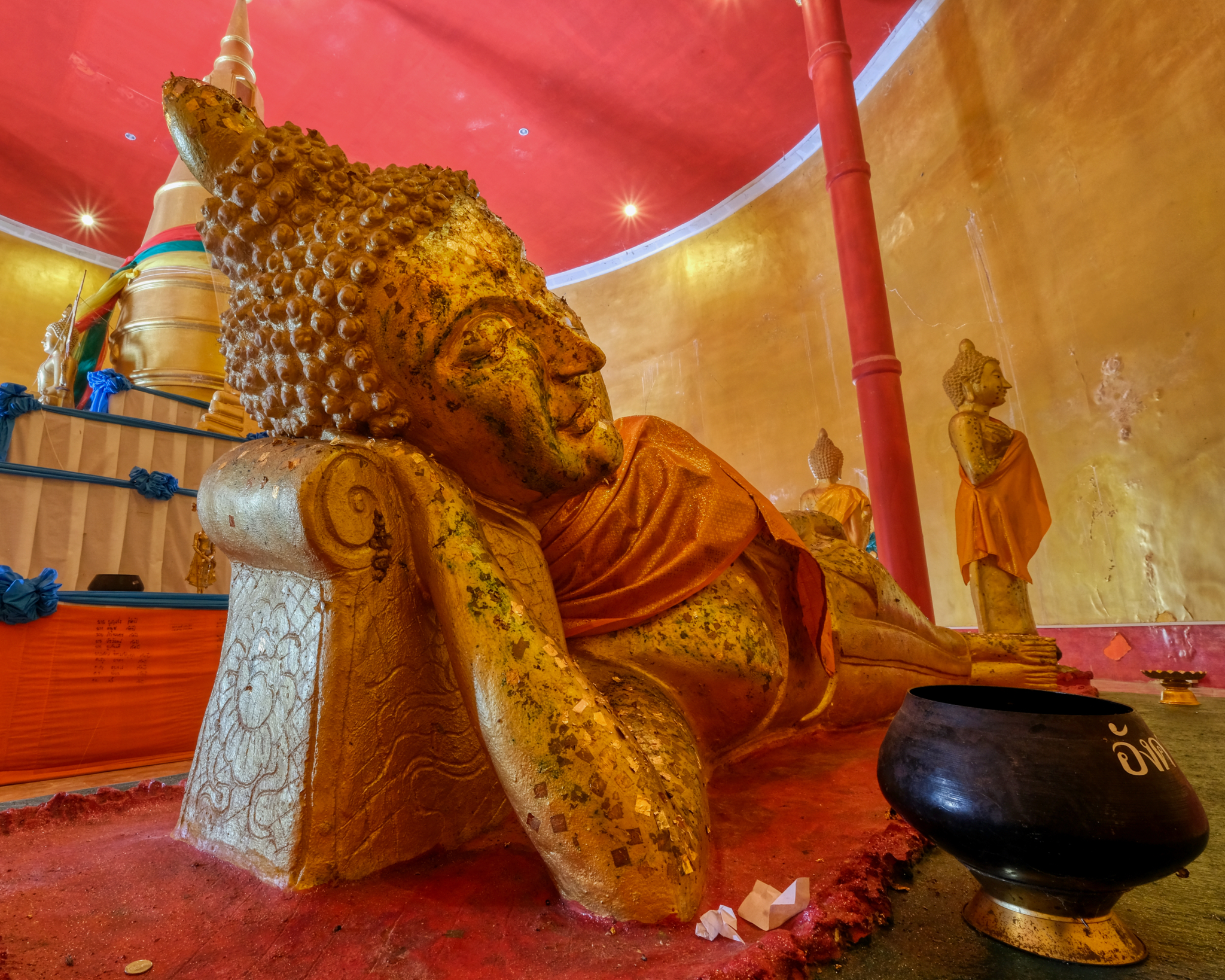 A Reclining Buddha . . . this posture represents the mahāparinabbāna: the Buddha's final state of enlightenment before his death!
A Reclining Buddha . . . this posture represents the mahāparinabbāna: the Buddha's final state of enlightenment before his death!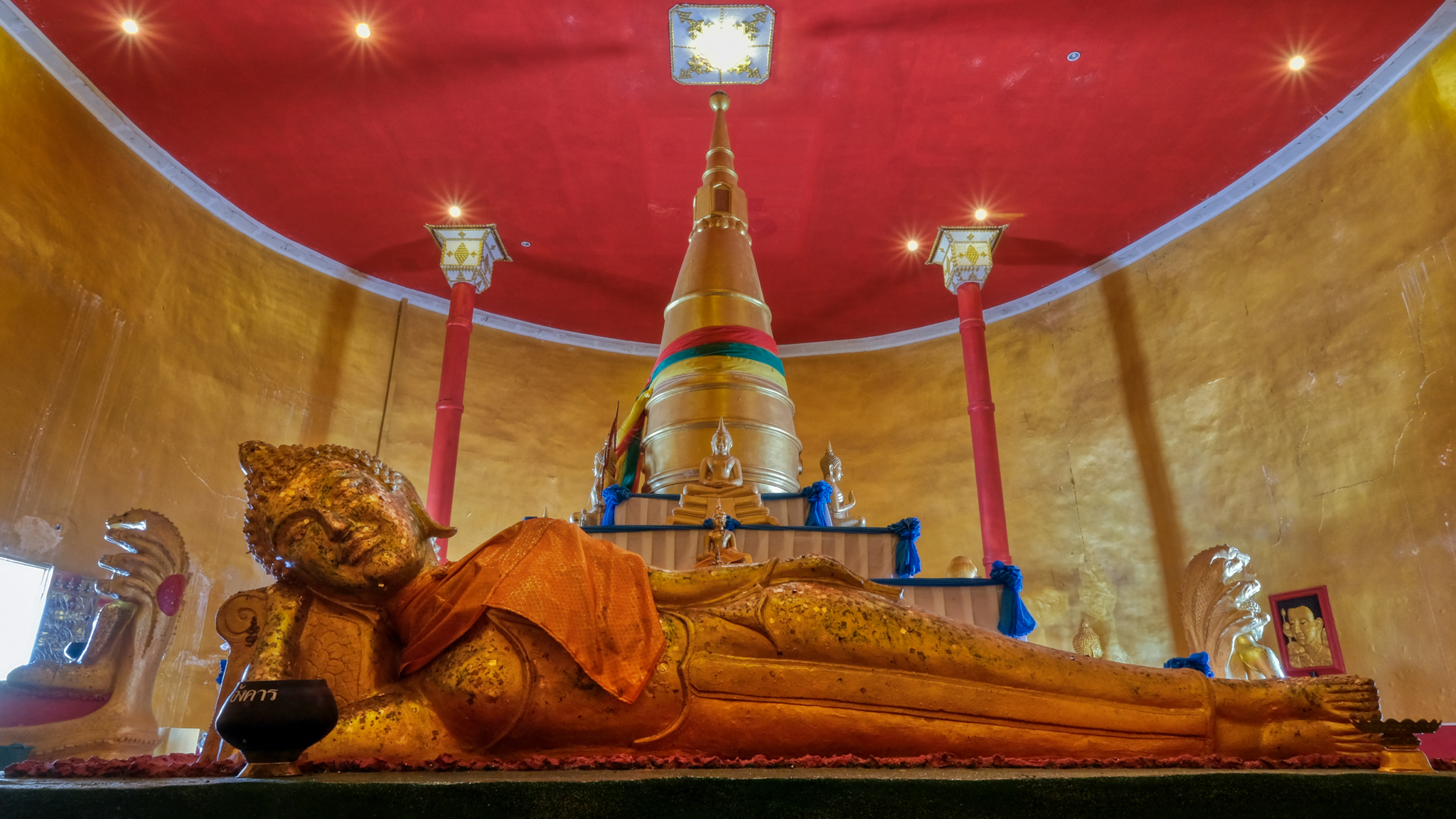 The last time I was in this chedi I did not have a lens wide enough to take this photo. I'm very glad I came back, and would have come back even without a camera. This chedi has become a favorite spiritual pilgrimage site for me.
The last time I was in this chedi I did not have a lens wide enough to take this photo. I'm very glad I came back, and would have come back even without a camera. This chedi has become a favorite spiritual pilgrimage site for me.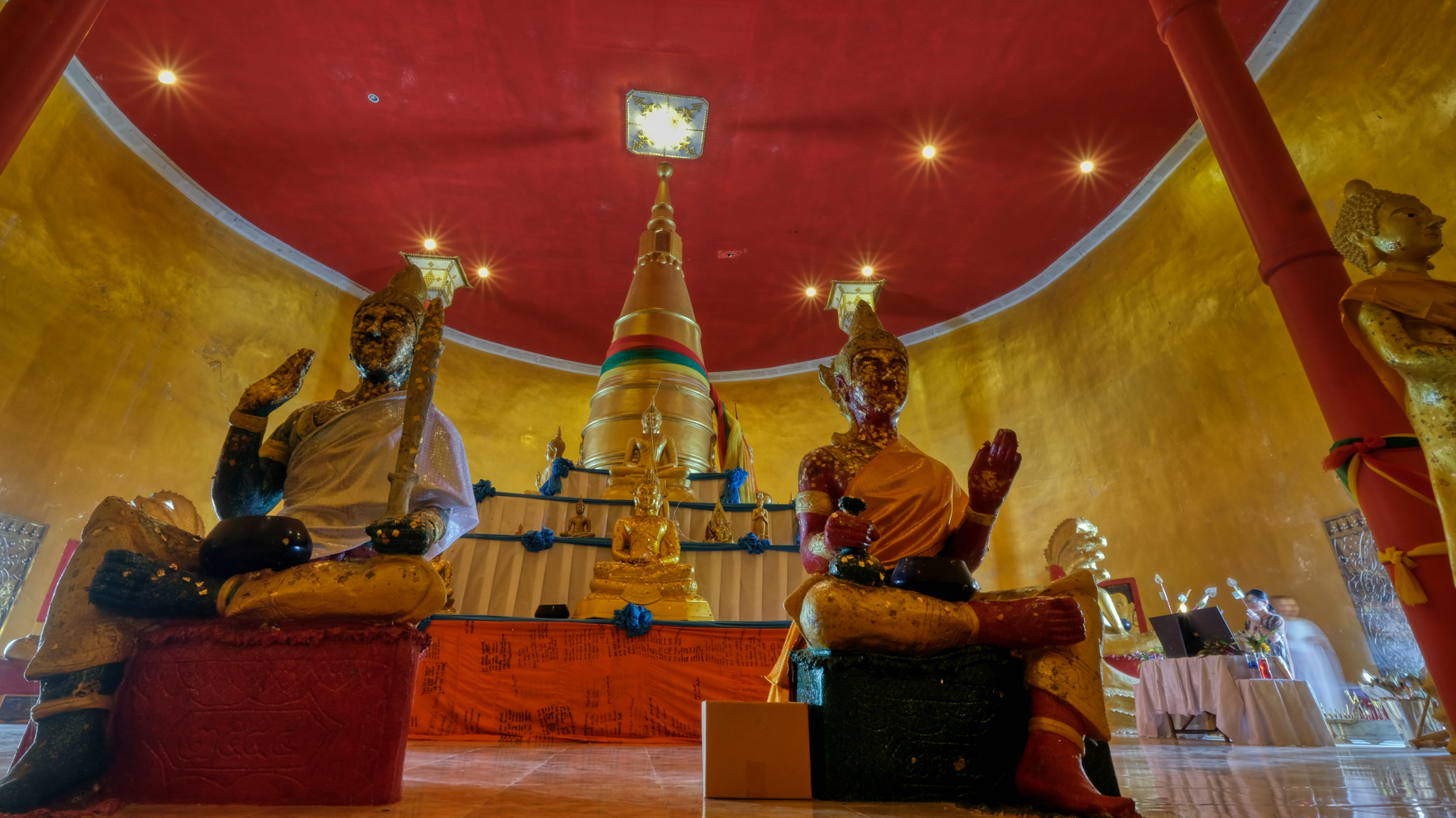 Each side of the central interior chedi presents a different compositional arrangement. Notice our nun and another pilgrim on the right.
Each side of the central interior chedi presents a different compositional arrangement. Notice our nun and another pilgrim on the right.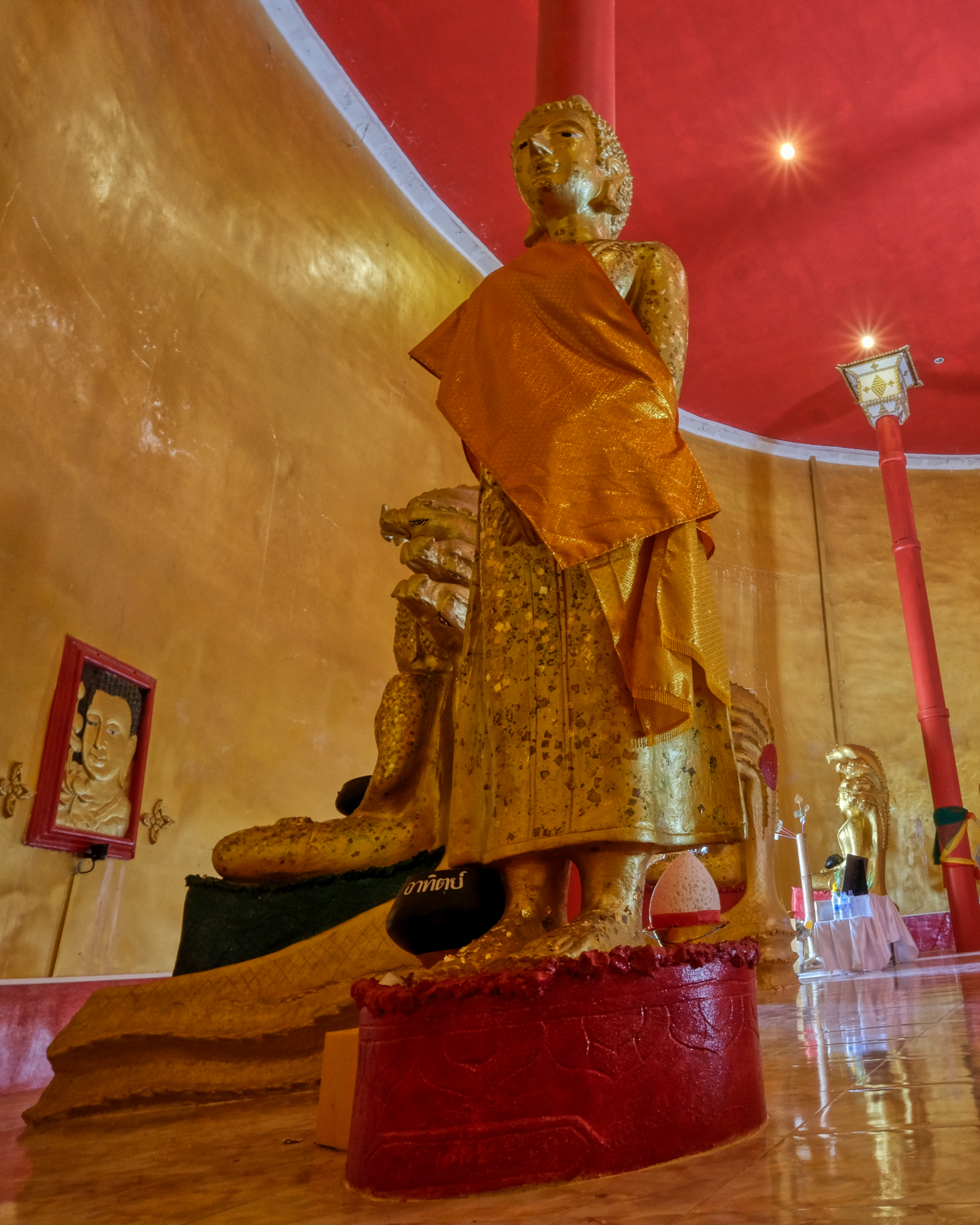 Move a few feet and see another striking composition . . .
Move a few feet and see another striking composition . . .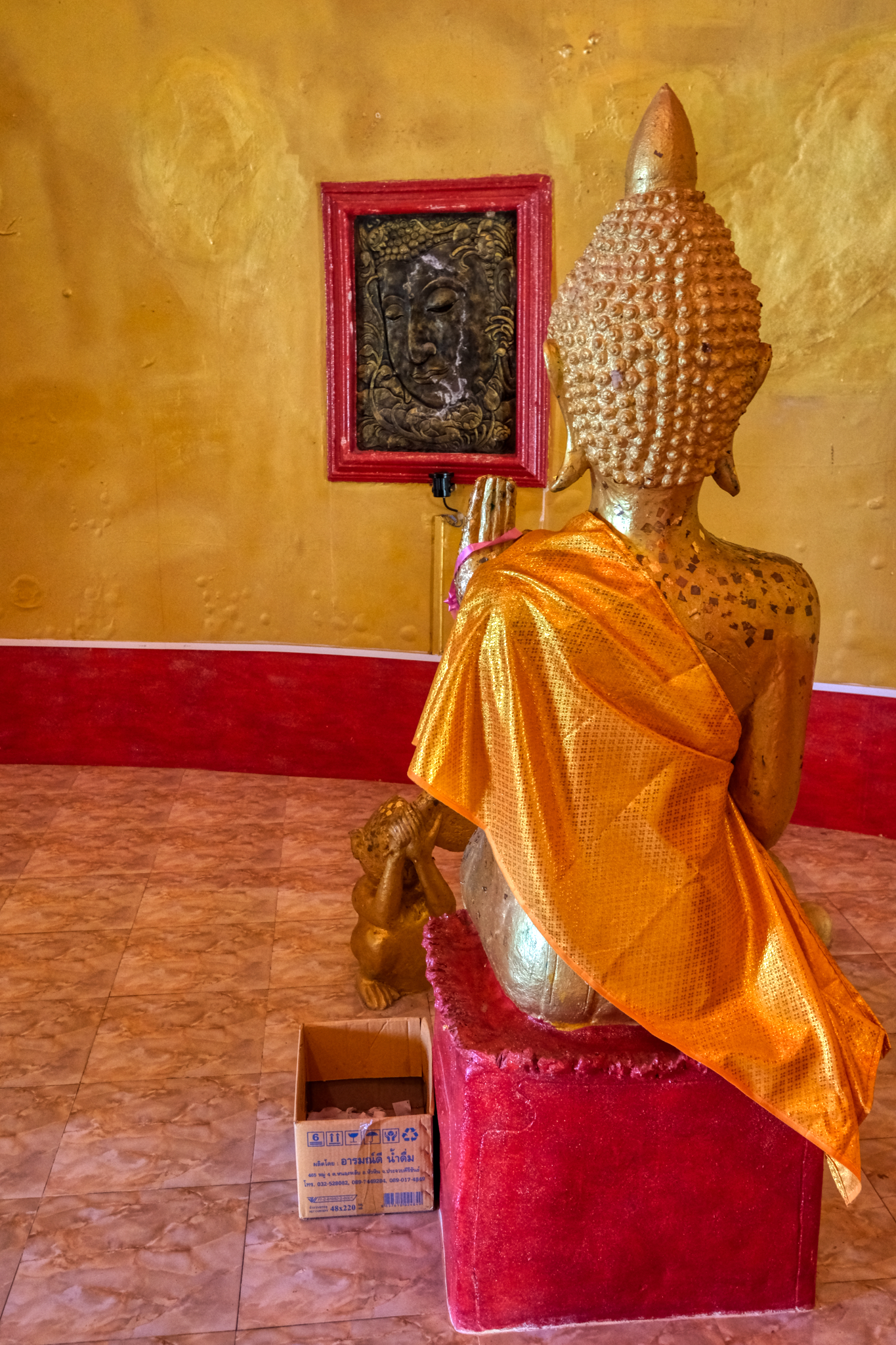 Not all of the statuary represents the Buddha. Some, like this one, are of bikkus, followers of the Buddha captured in a moment of listening to the dharma.
Not all of the statuary represents the Buddha. Some, like this one, are of bikkus, followers of the Buddha captured in a moment of listening to the dharma.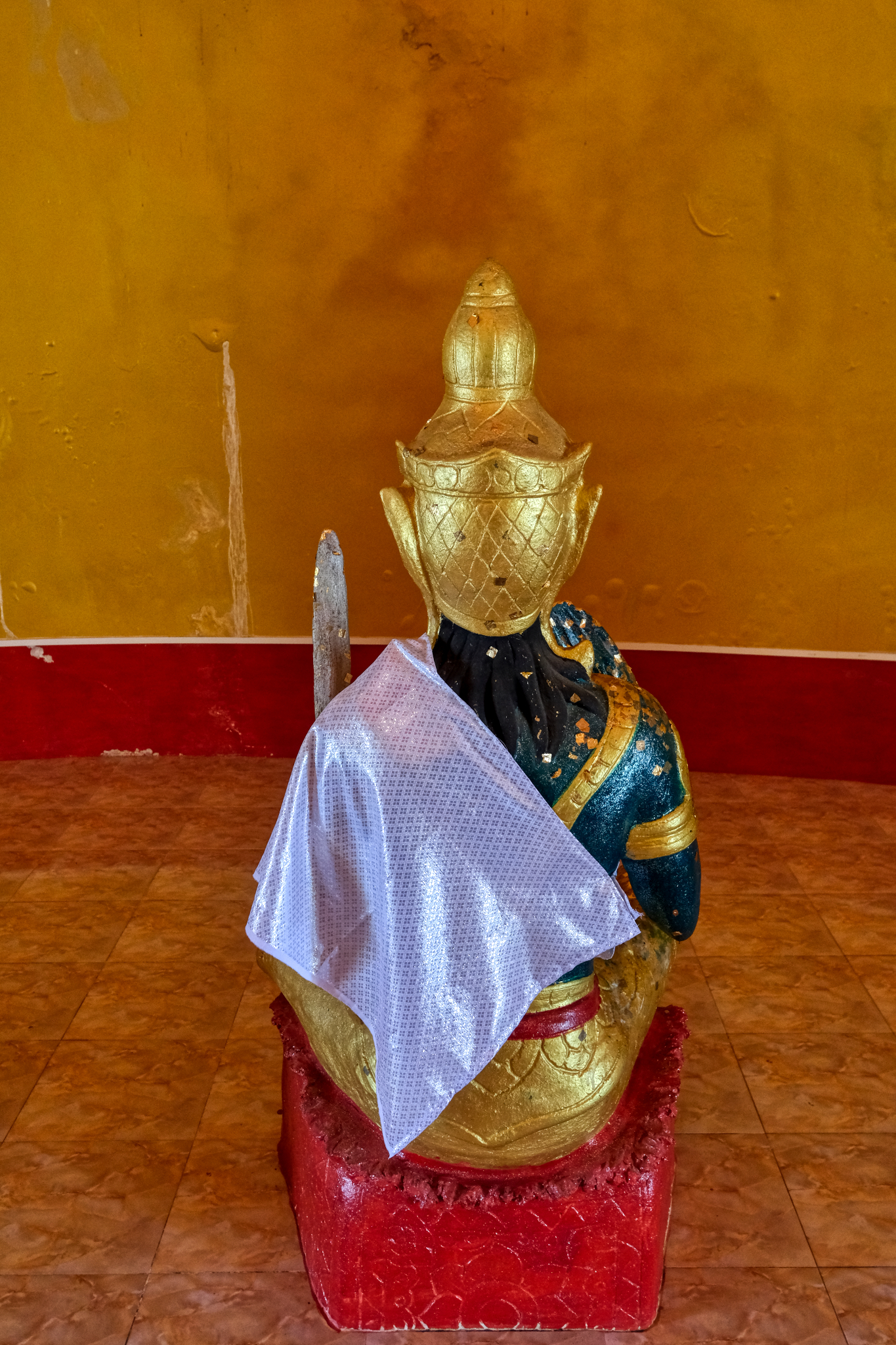 A bikku.
A bikku.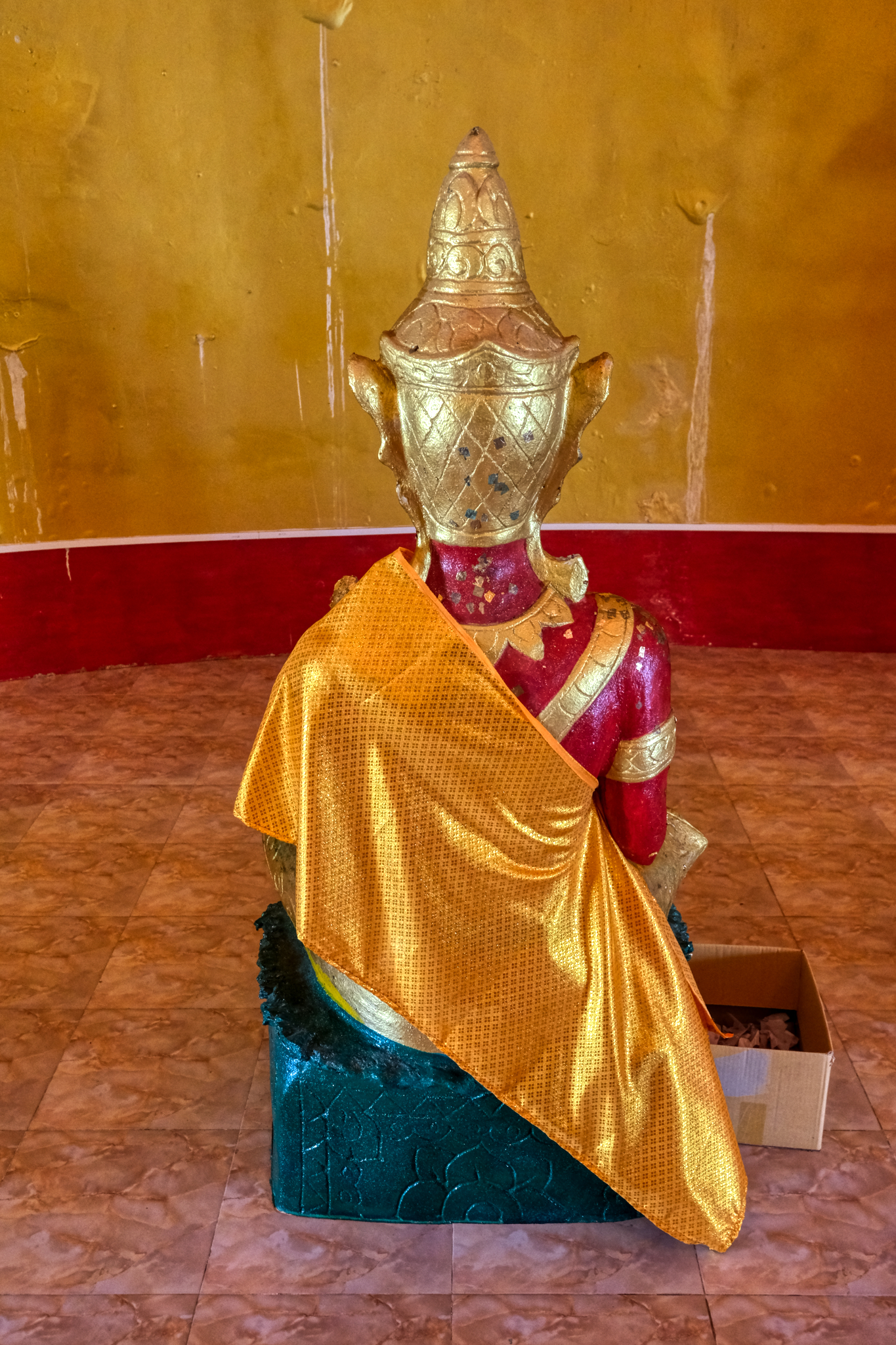 A bikku. The cardboard box is for the paper fold left over after a visitor has laid a piece of gold leaf on the statue in reverence.
A bikku. The cardboard box is for the paper fold left over after a visitor has laid a piece of gold leaf on the statue in reverence.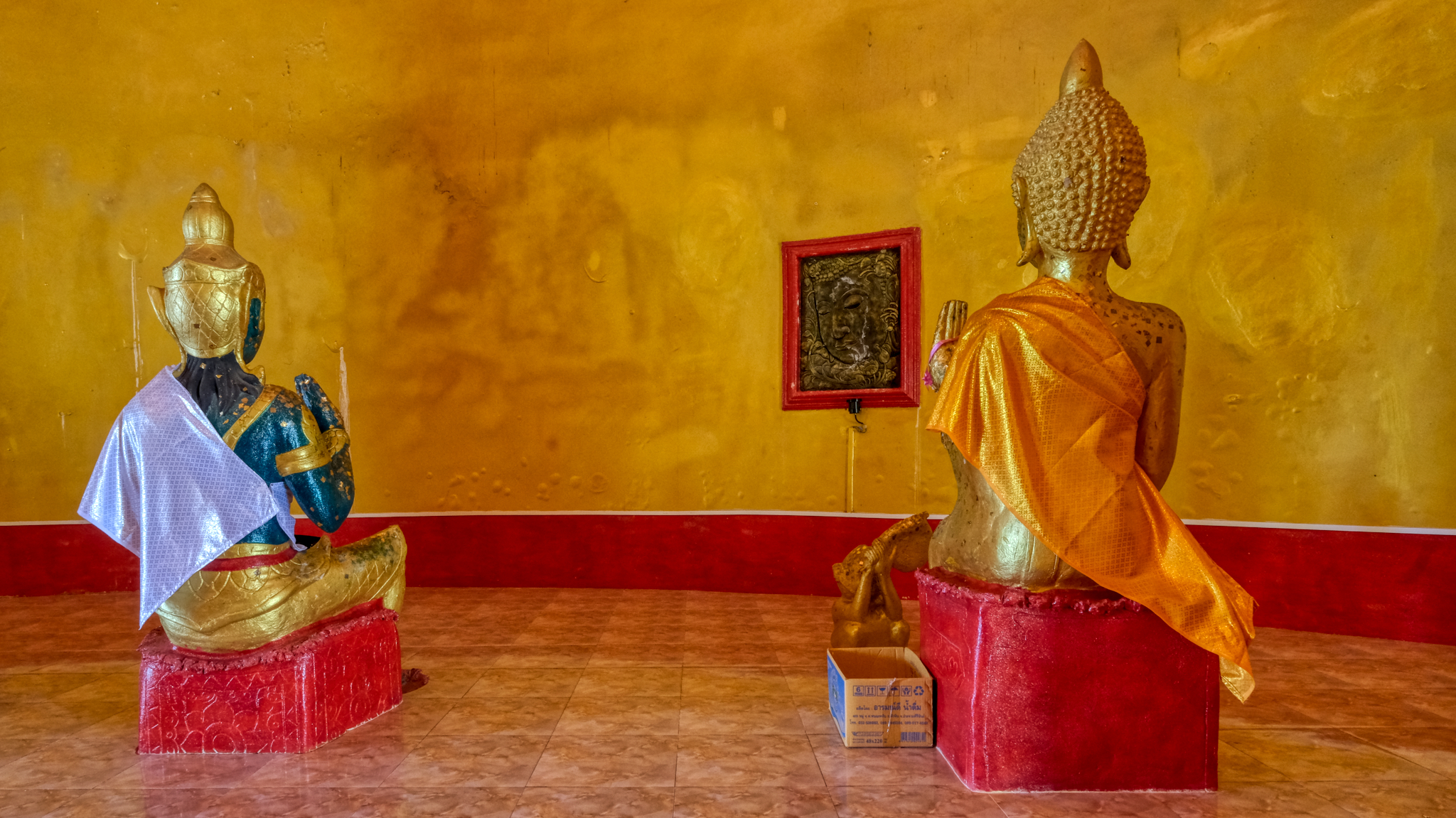 There is something so compelling about these dressed statues.
There is something so compelling about these dressed statues.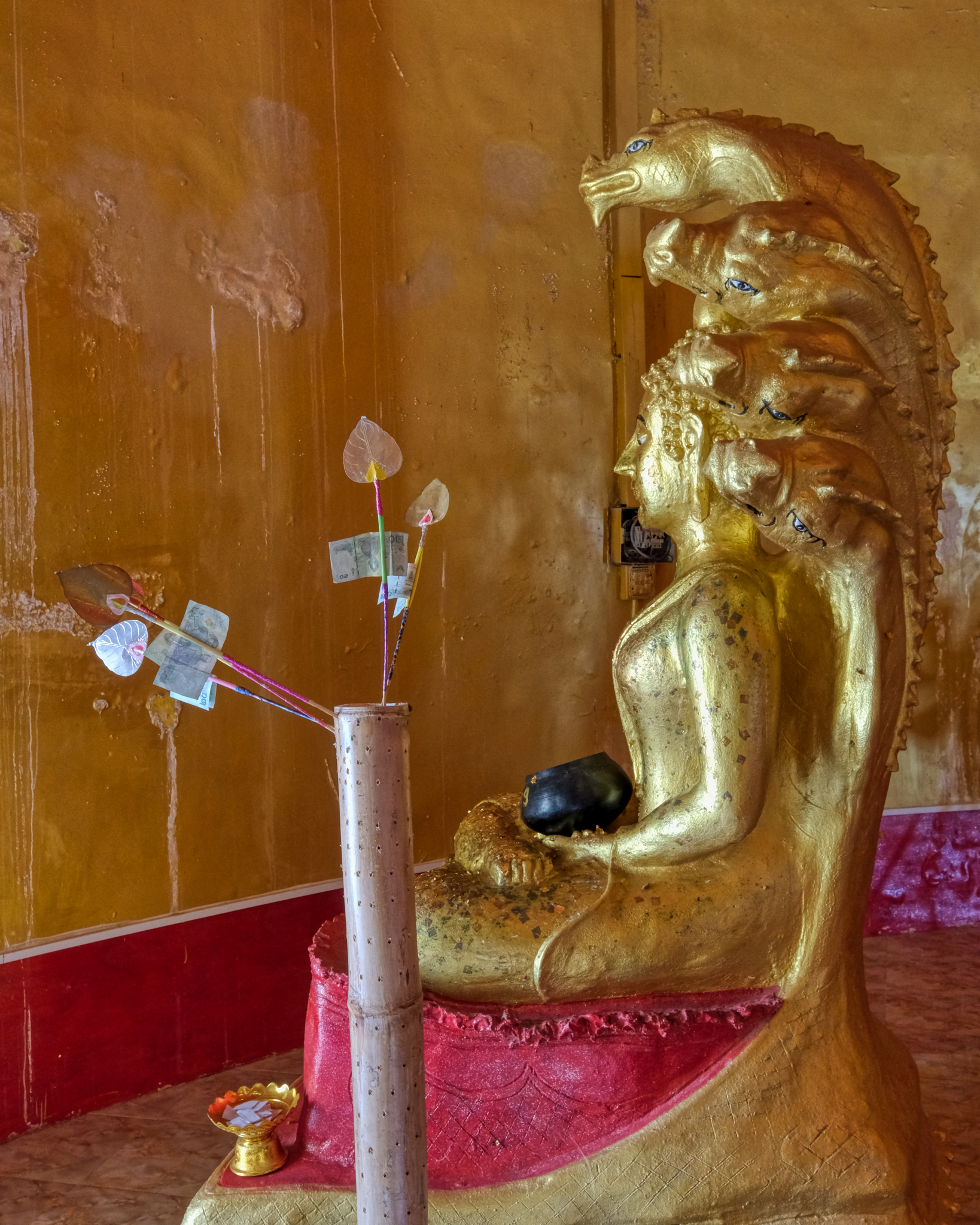 Every few feet . . . another image to never forget . . .
Every few feet . . . another image to never forget . . .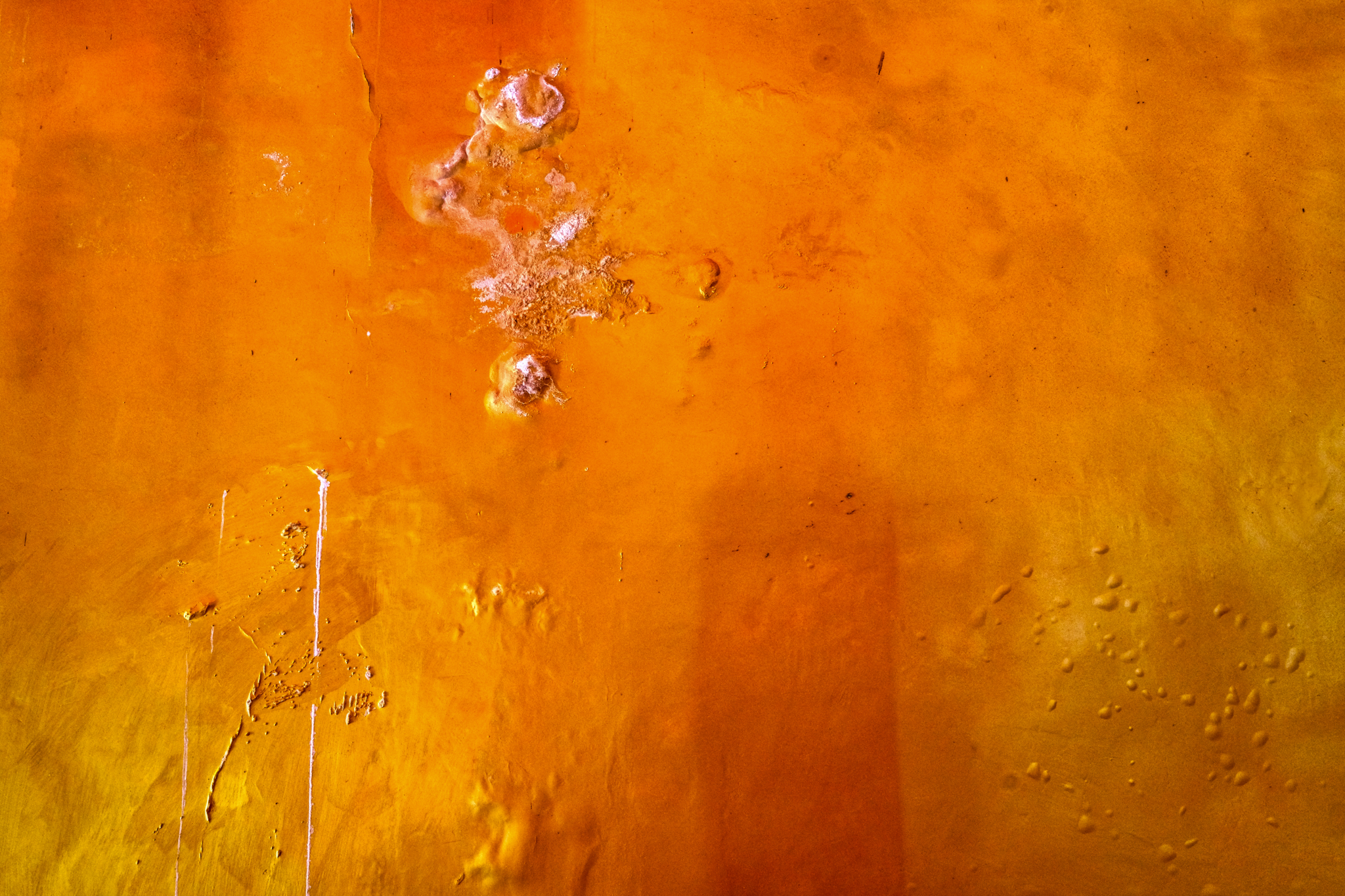 The walls themselves were a thing of wonder.
The walls themselves were a thing of wonder.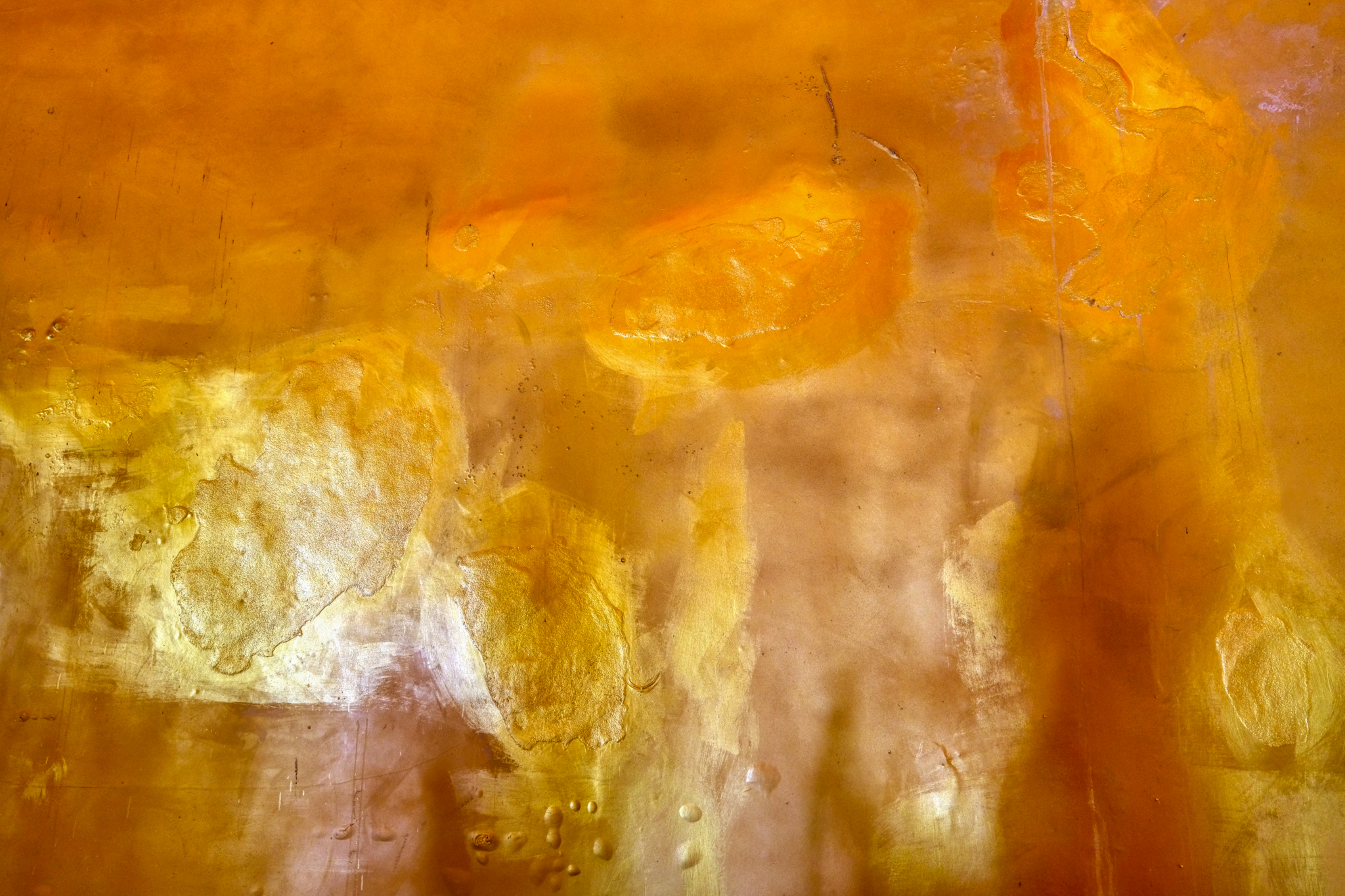 I am very nearly moved to tears by these walls . . . the color, the play of light, the human touch, the honesty.
I am very nearly moved to tears by these walls . . . the color, the play of light, the human touch, the honesty.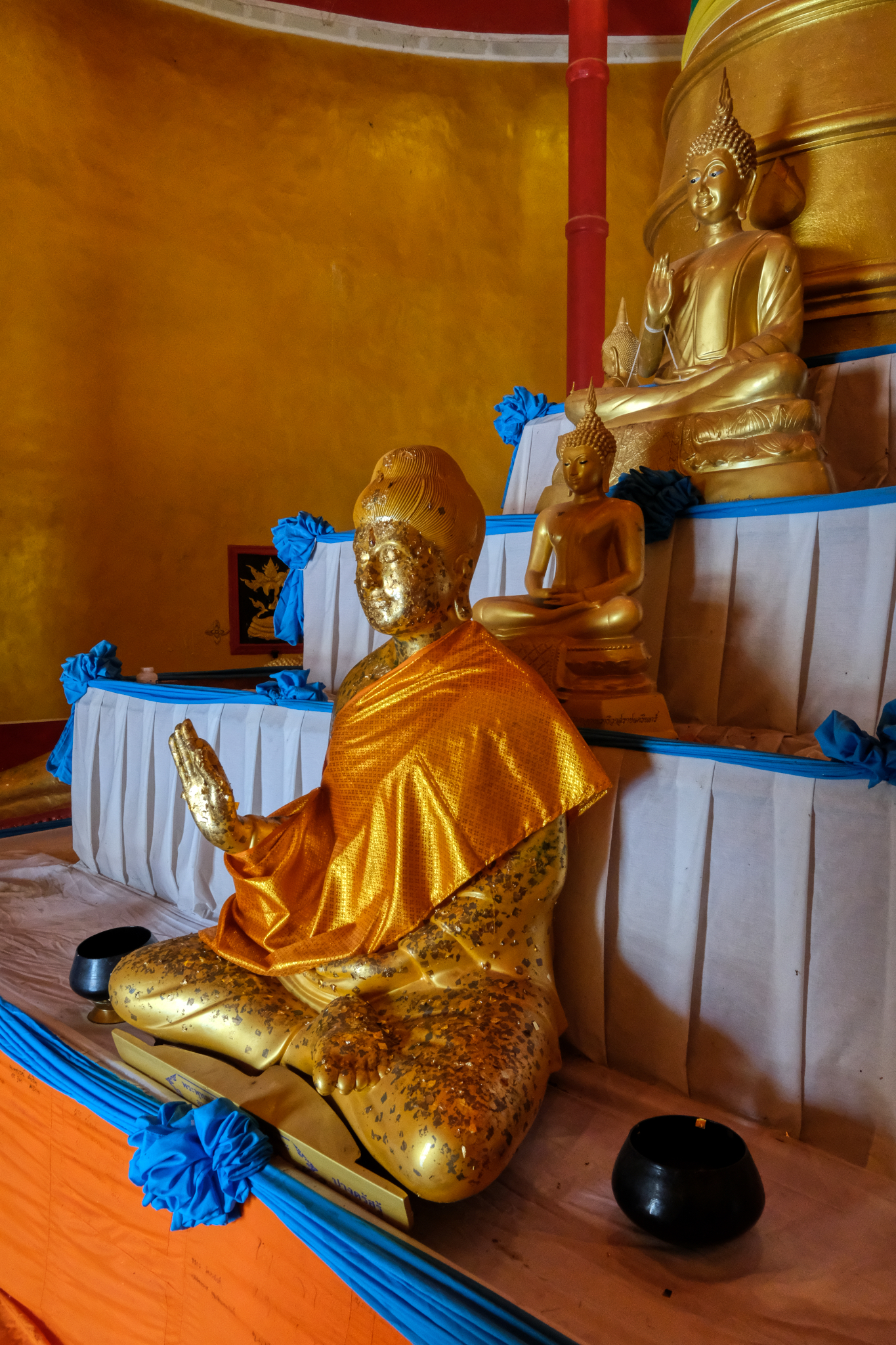 An altar facing an opposite door and sunlight.
An altar facing an opposite door and sunlight.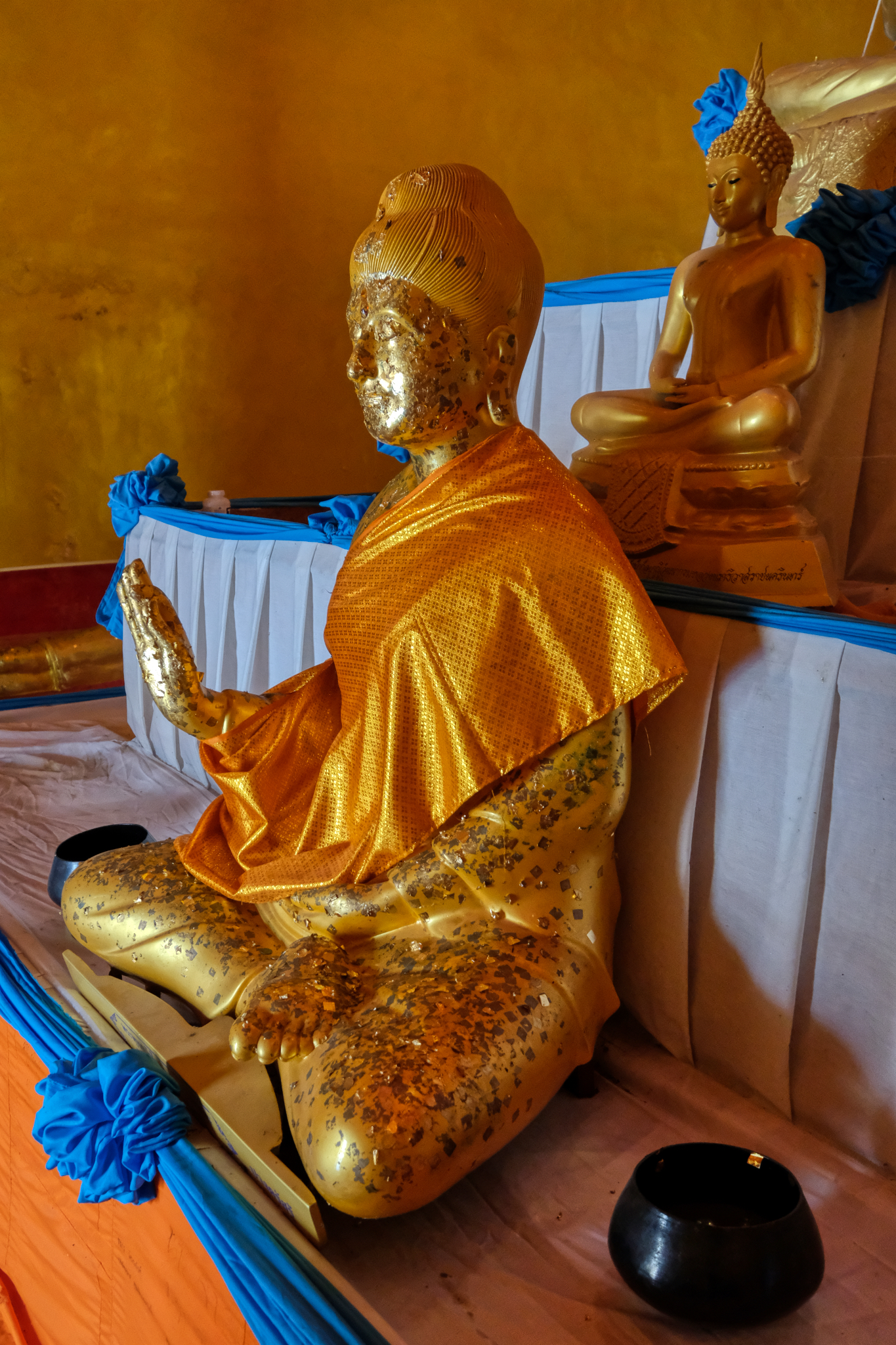 This Buddha statue in the Fearlessness (Abhāya mudrā) pose.
This Buddha statue in the Fearlessness (Abhāya mudrā) pose.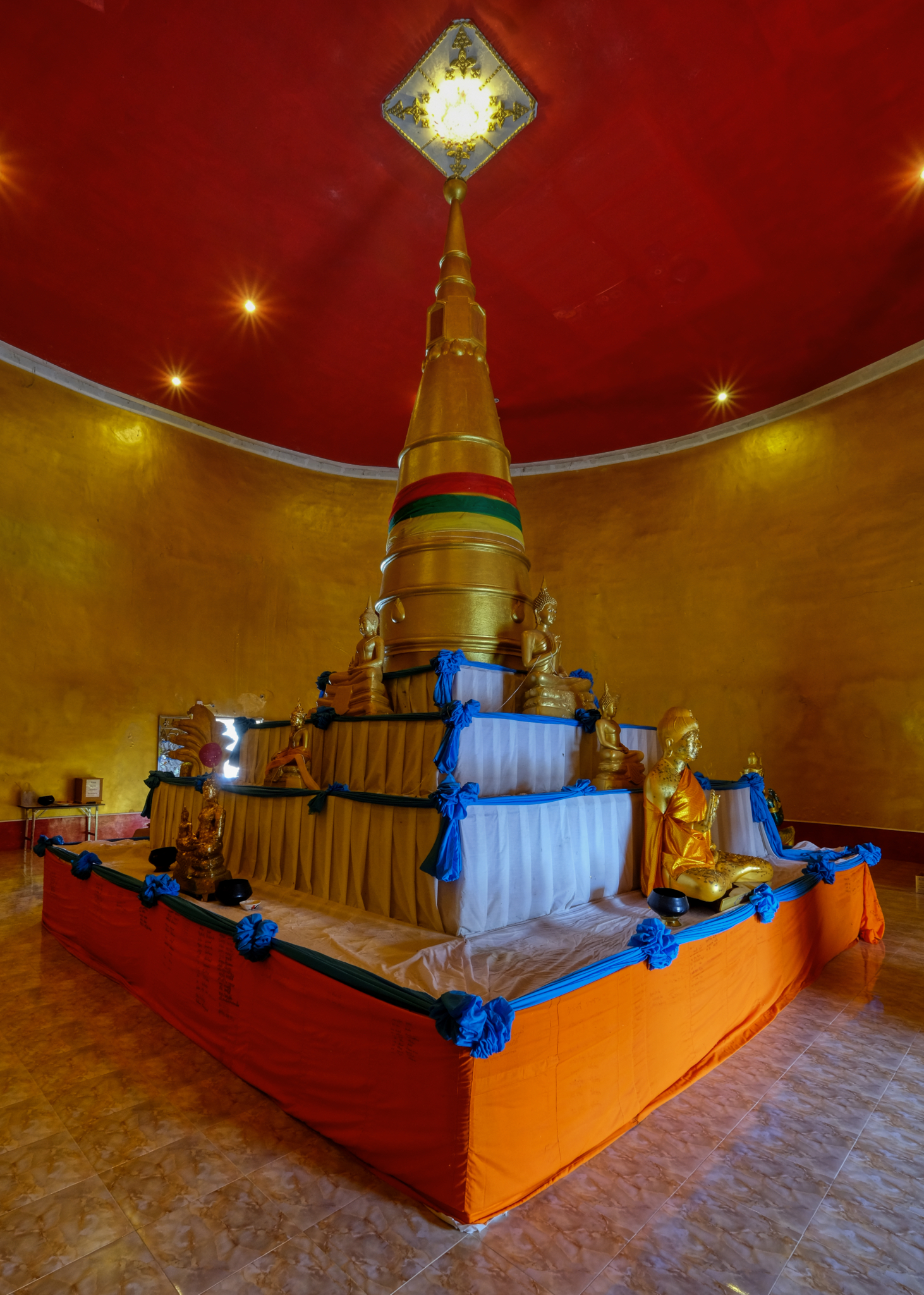 The chedi within the larger chedi.
The chedi within the larger chedi.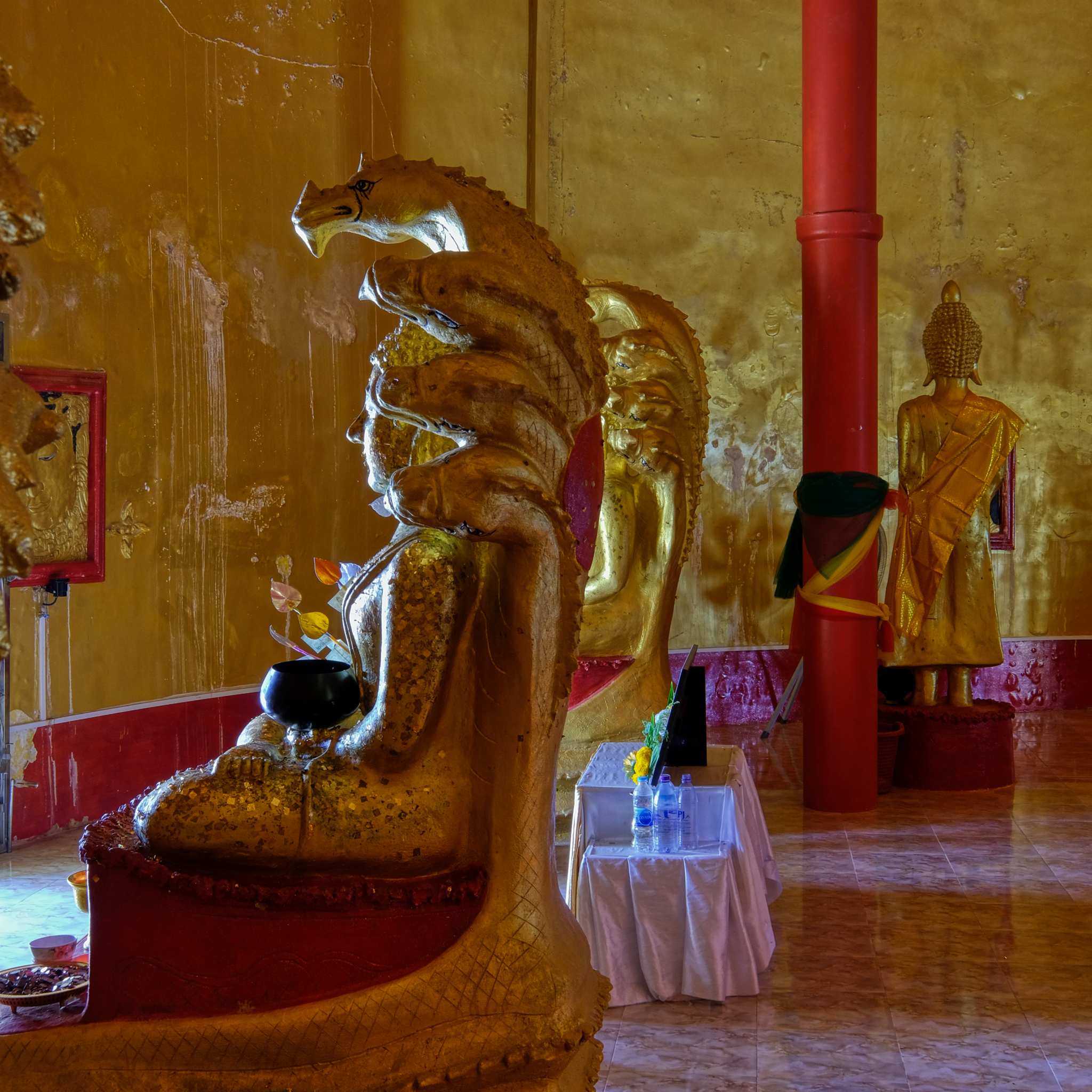 In some locations the light on the figures and on the wall came together in fantastic ways!
In some locations the light on the figures and on the wall came together in fantastic ways!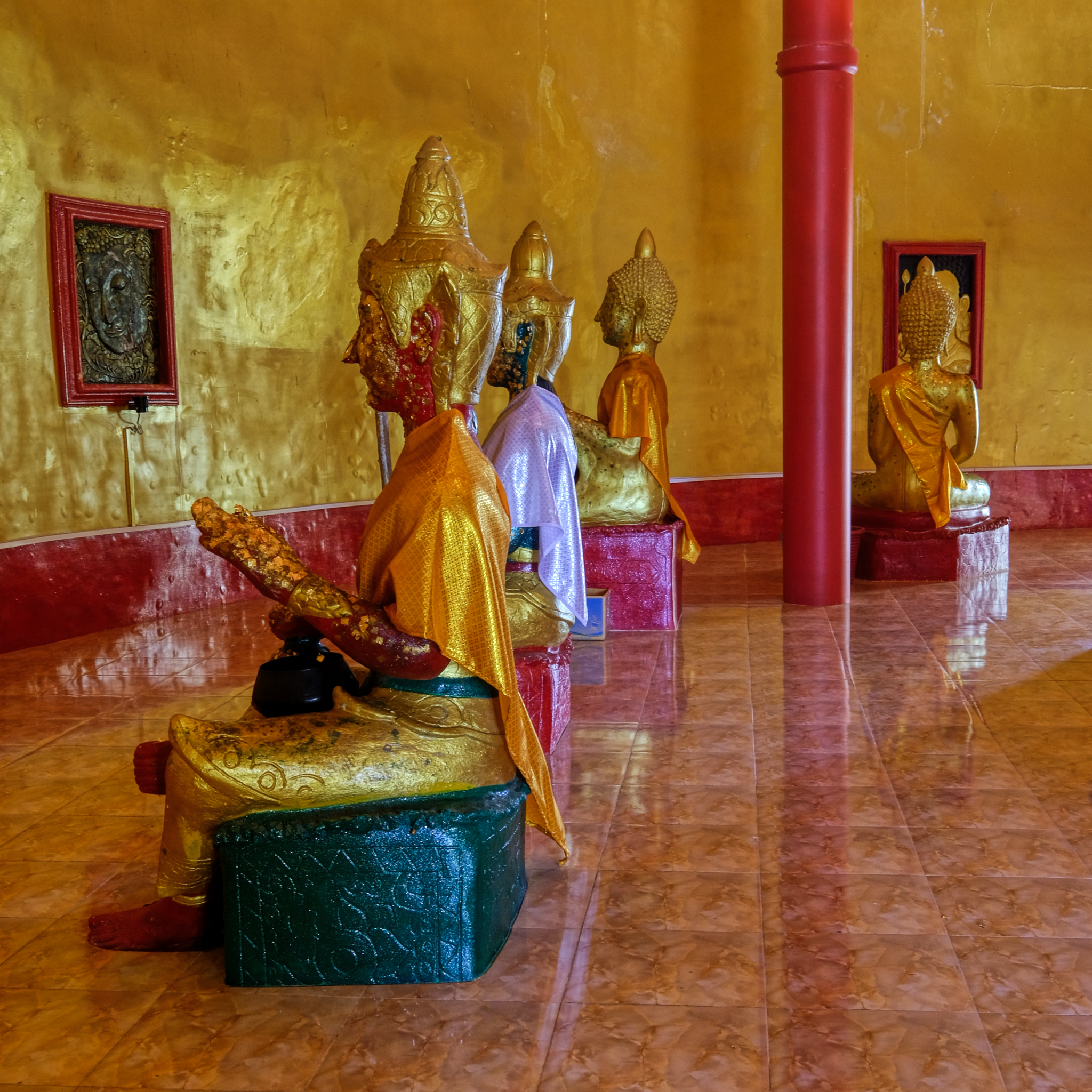 Phenomenal light and color and shapes . . . .
Phenomenal light and color and shapes . . . .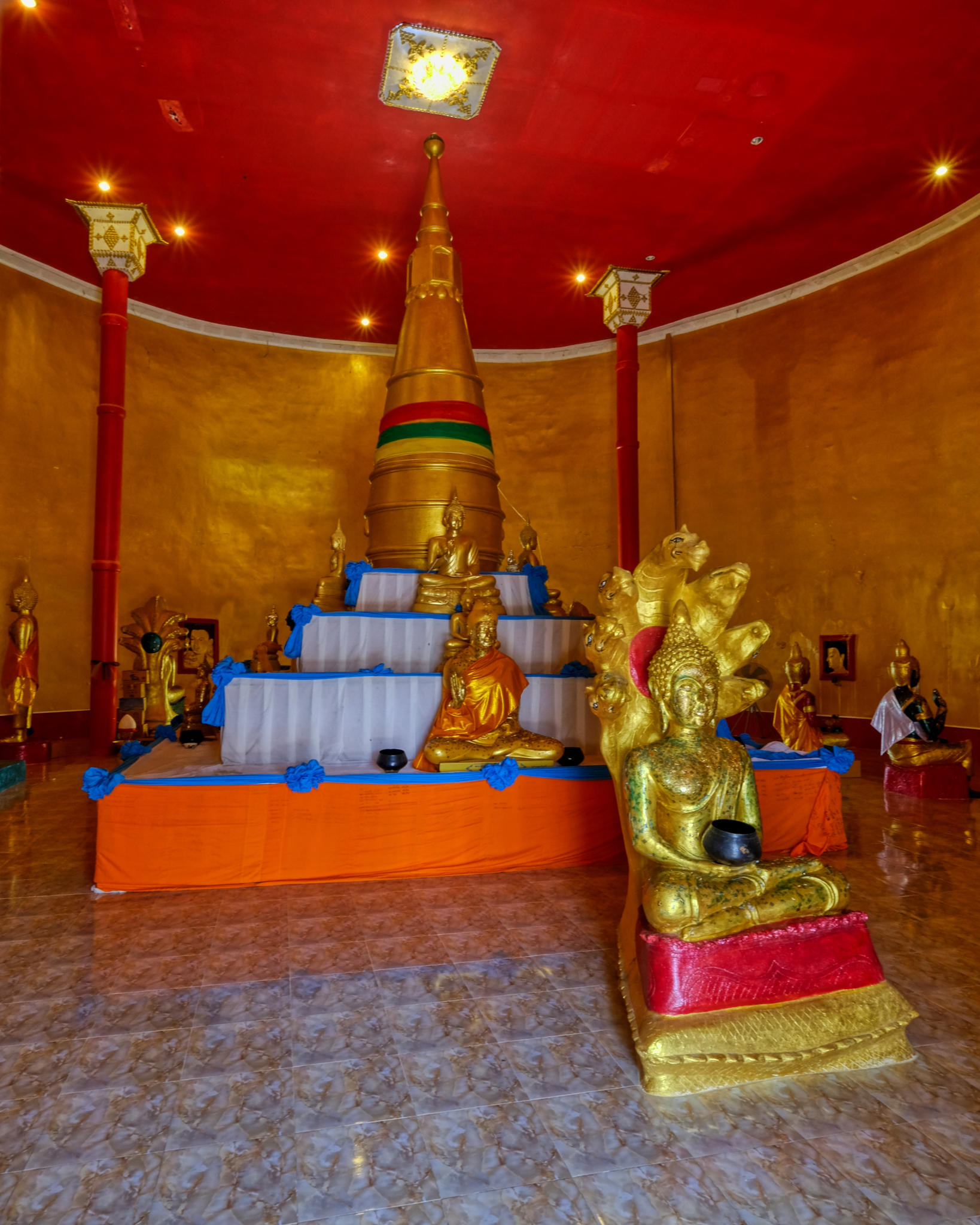 Although the Buddha figures seem sparse in this photo it seemed FULL of them.
Although the Buddha figures seem sparse in this photo it seemed FULL of them.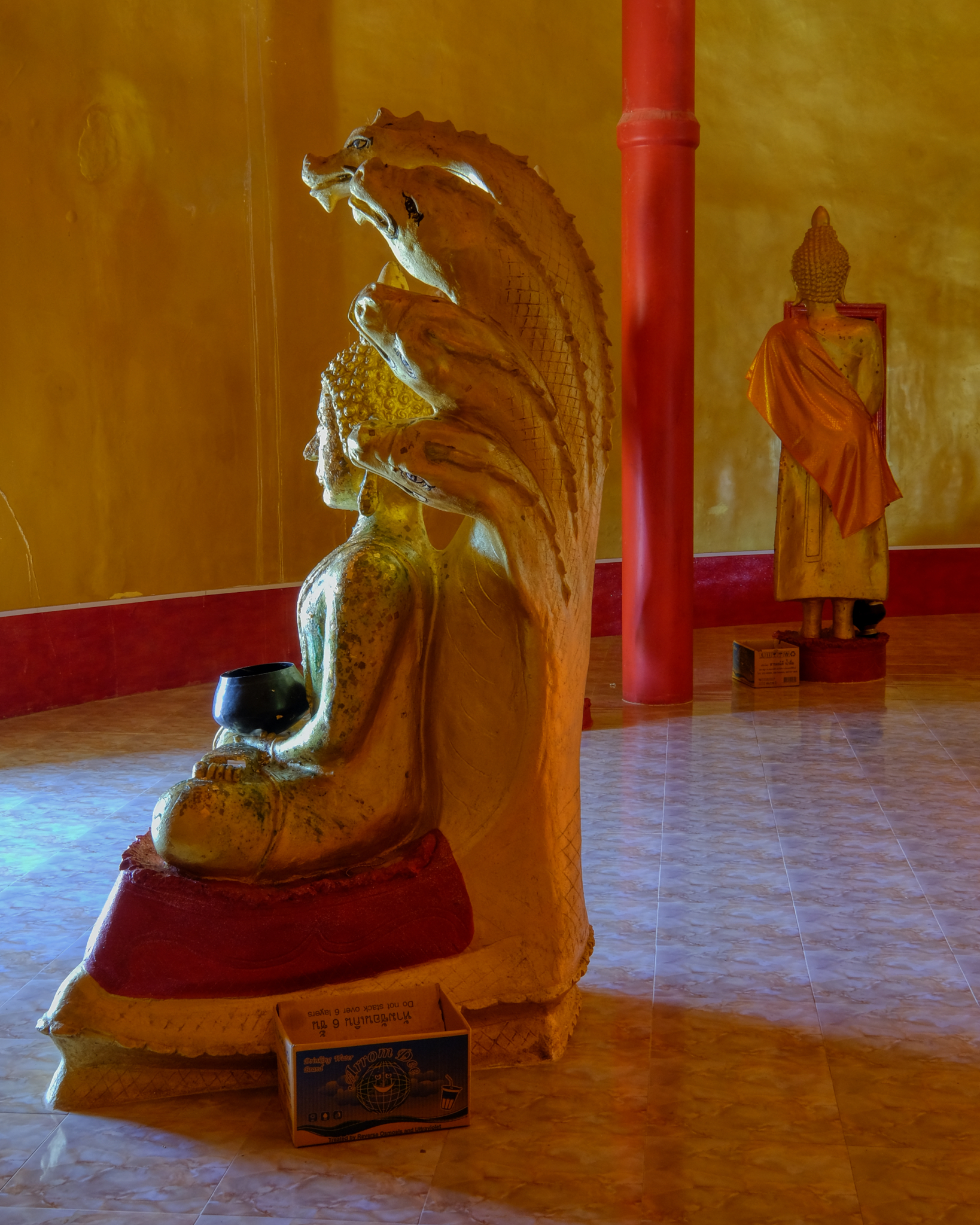 I did not know when to stop taking photos. I took a break and made merit at each Buddha image with gold leaf and reverent wais.
I did not know when to stop taking photos. I took a break and made merit at each Buddha image with gold leaf and reverent wais.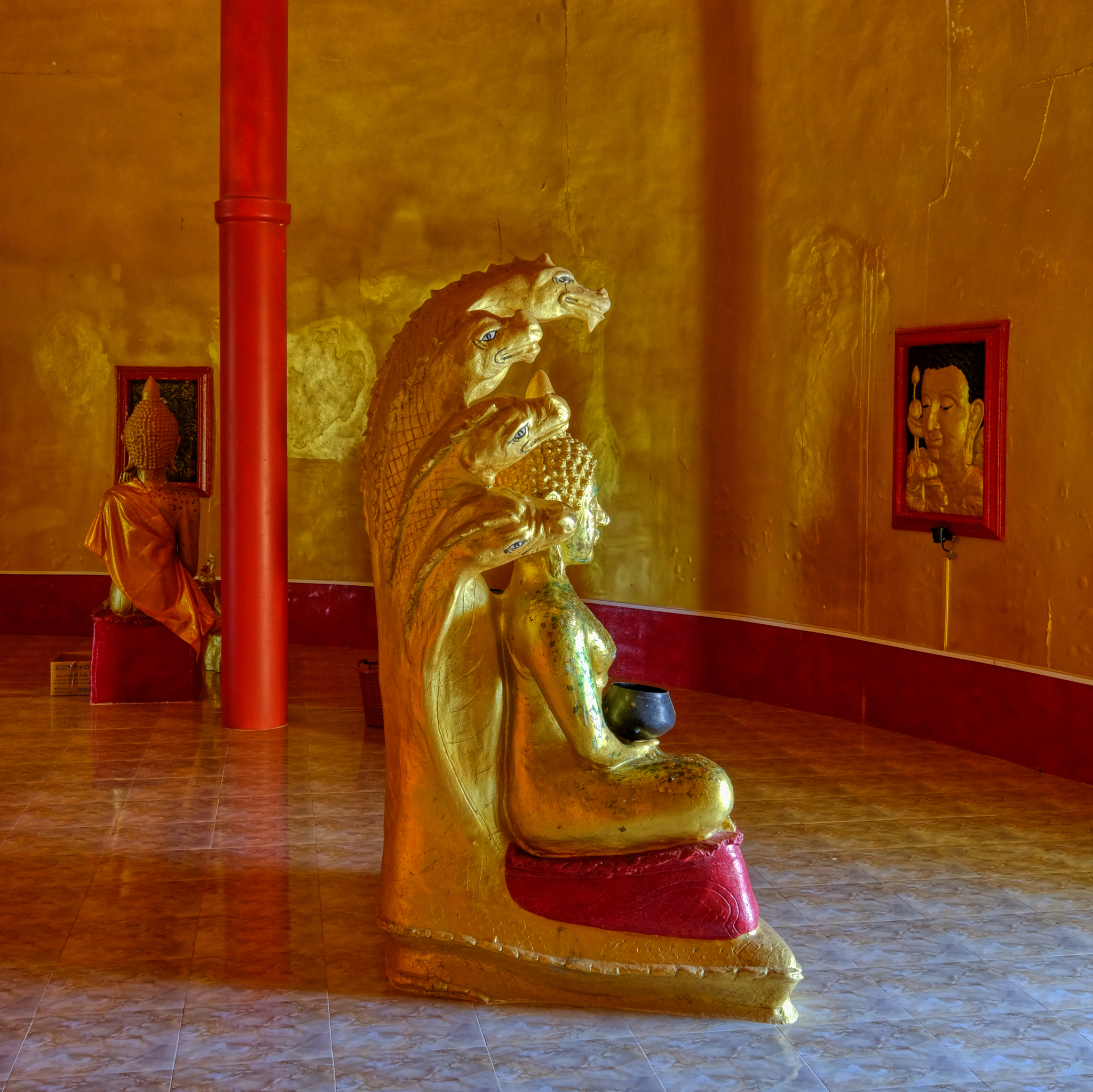 I became aware that as the sun outside brightened and dimmed, so did the lighting effects in the interior. Fantastic!
I became aware that as the sun outside brightened and dimmed, so did the lighting effects in the interior. Fantastic!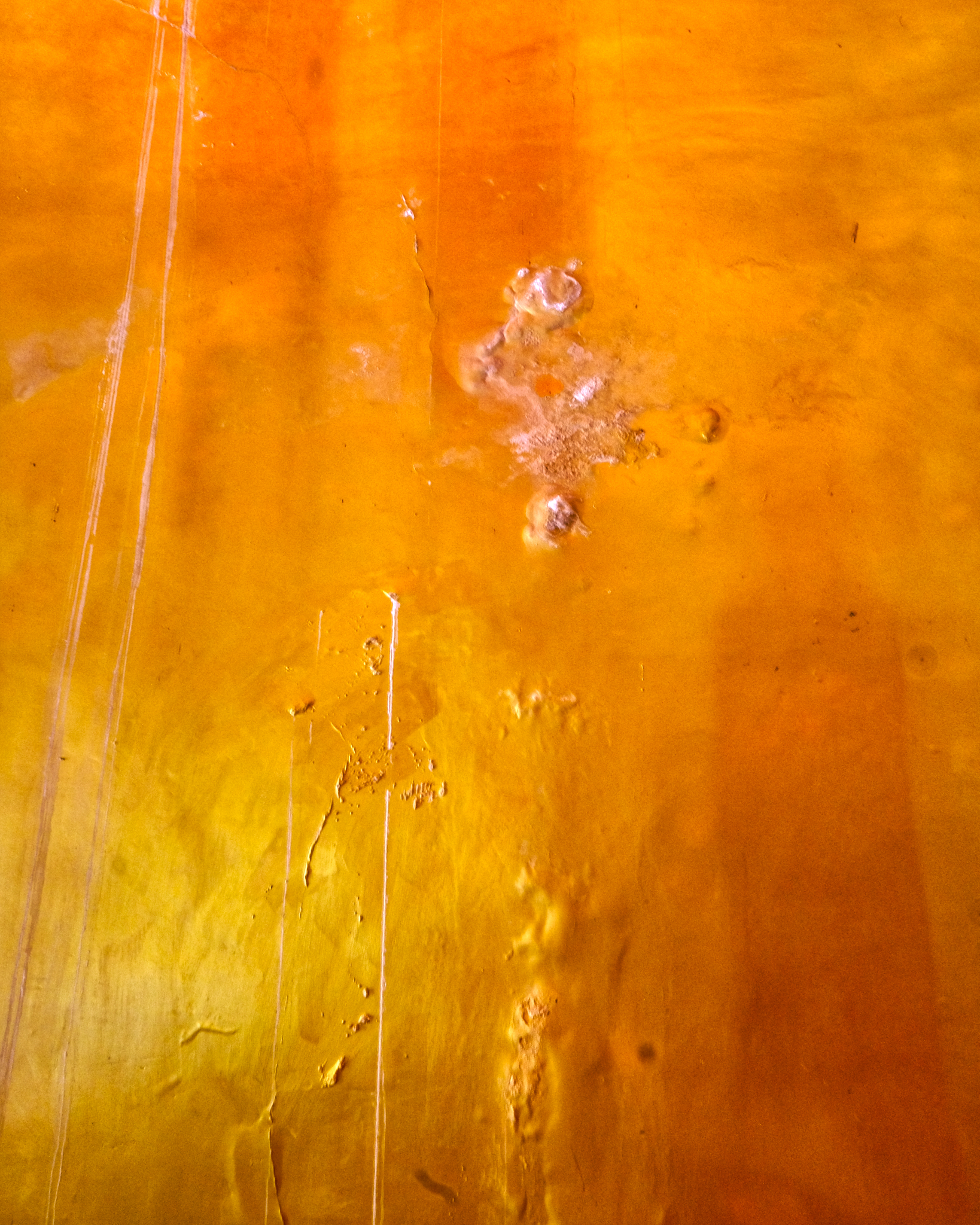 We spent several hours inside this remarkable chedi. So captivated by everything . . . standing staring at the walls in absolute wonder.
We spent several hours inside this remarkable chedi. So captivated by everything . . . standing staring at the walls in absolute wonder.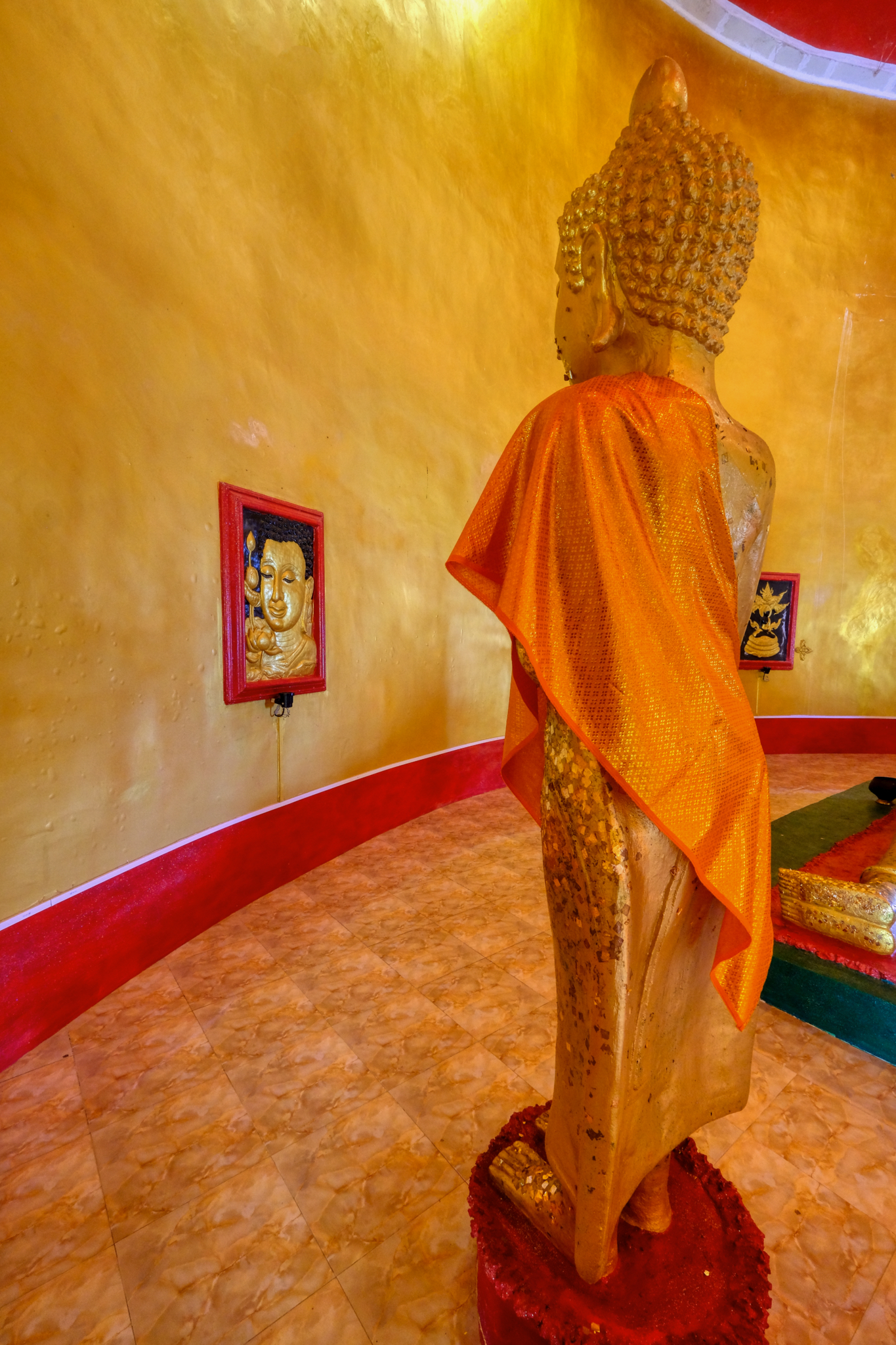 We had to leave . . . reluctantly. We had a whole day ahead of us and many adventures to have.
We had to leave . . . reluctantly. We had a whole day ahead of us and many adventures to have.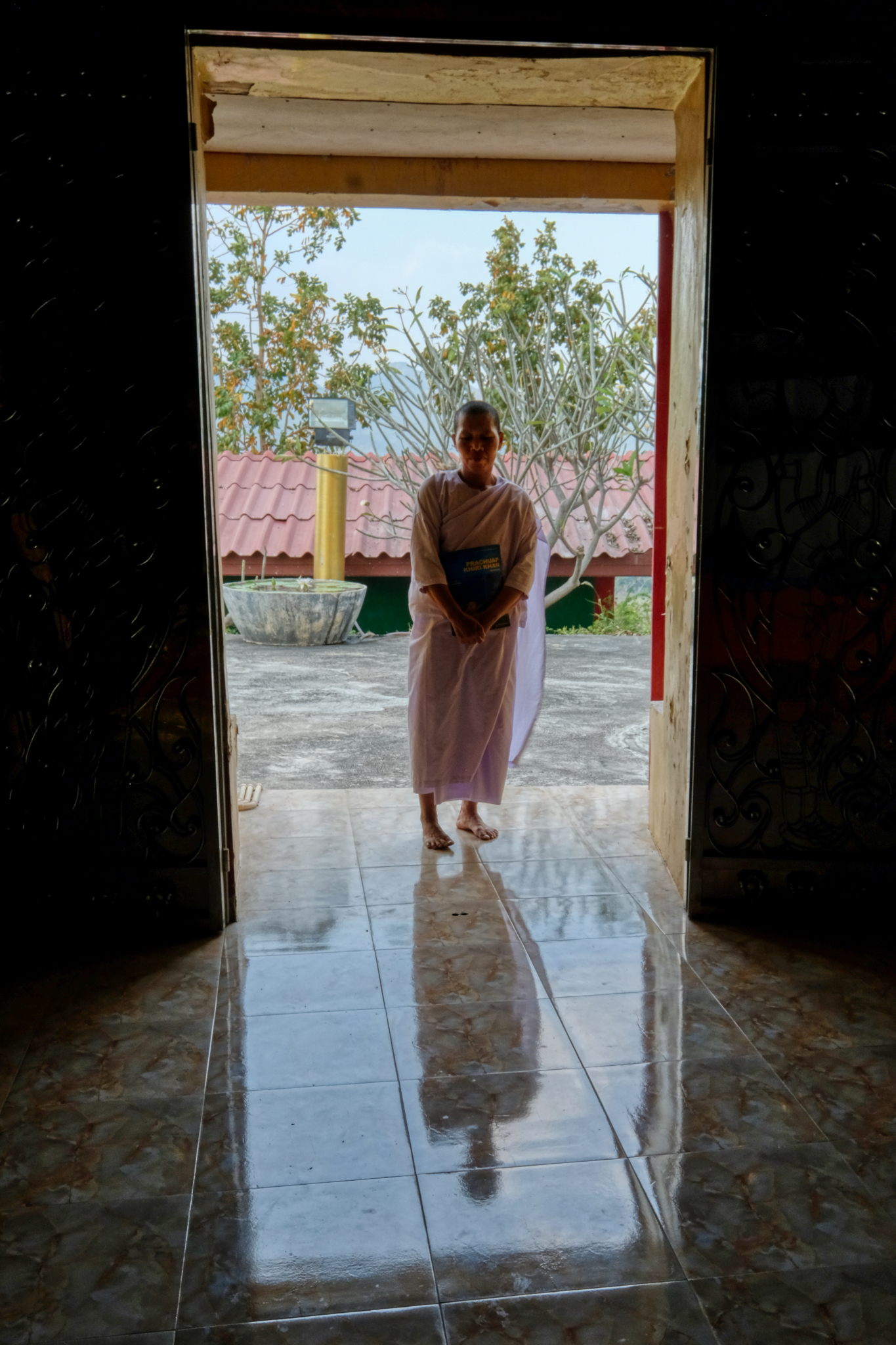 We at last left the chedi to the nun to have on her own in solitude.
We at last left the chedi to the nun to have on her own in solitude.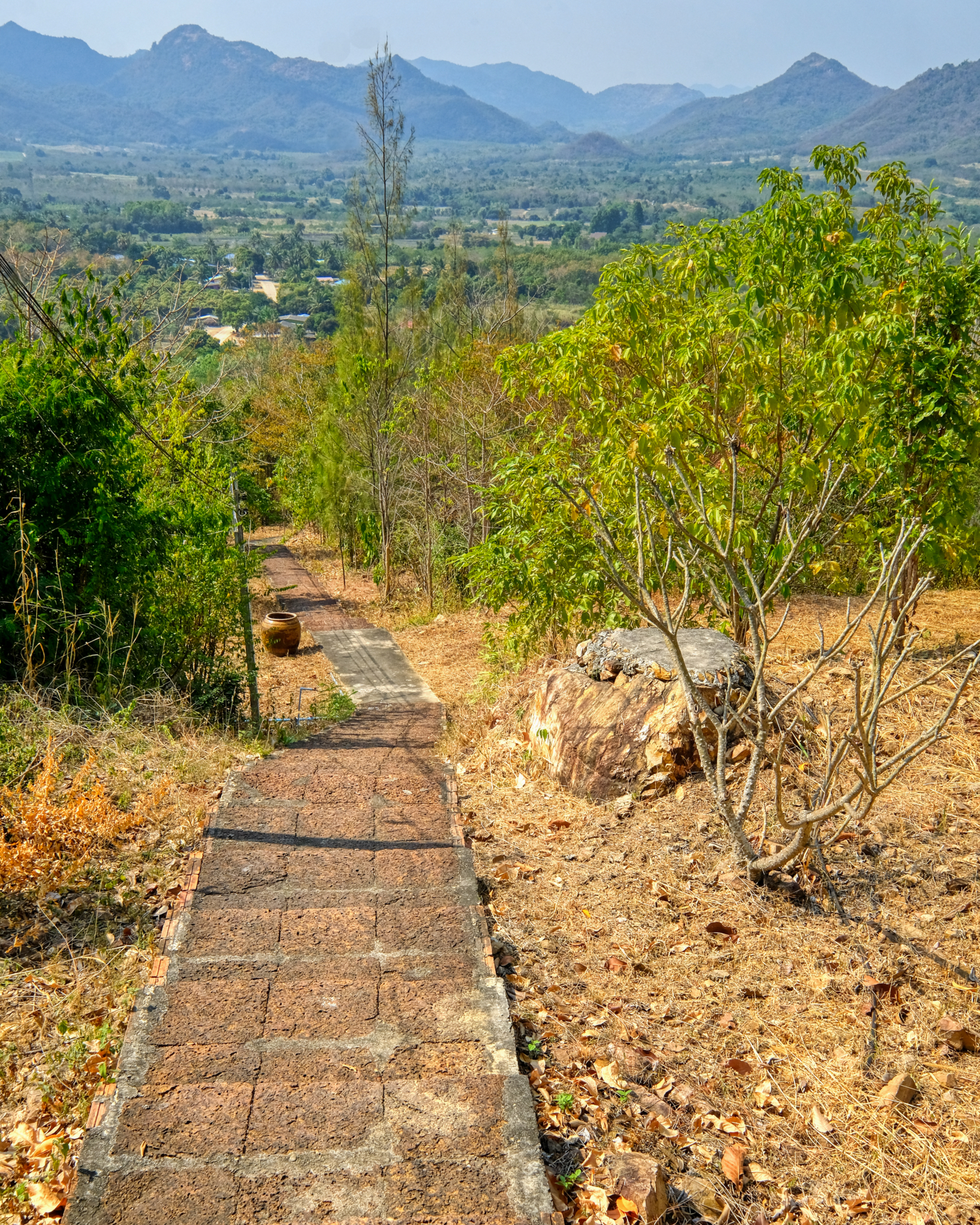 The chedi sits high on a hilltop with a wide view. This is a very rural location west of Hua Hin.
The chedi sits high on a hilltop with a wide view. This is a very rural location west of Hua Hin.Luang Prabang, Laos - Wat Xieng Thong
 Sunday, October 27, 2019 at 8:55AM
Sunday, October 27, 2019 at 8:55AM 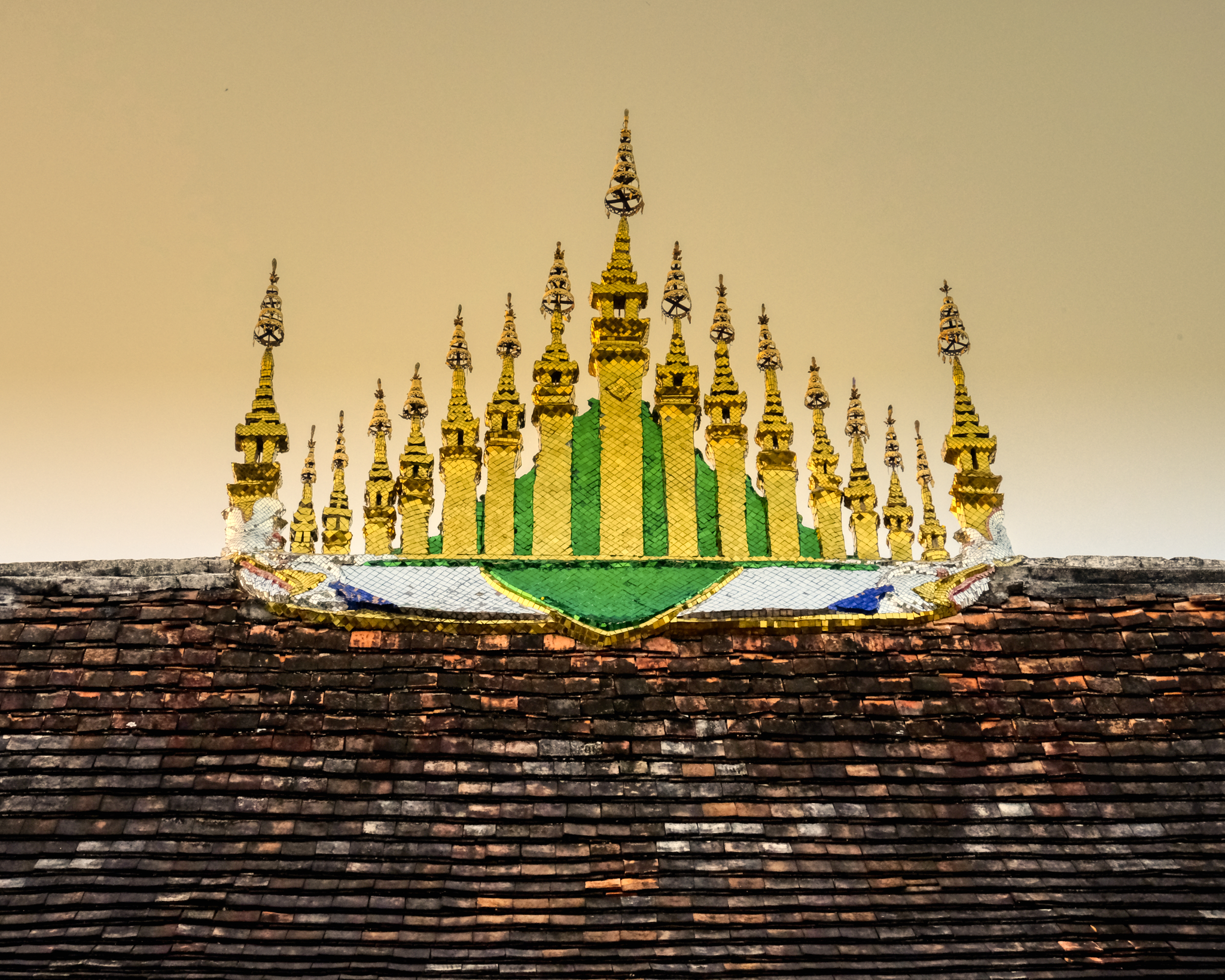
Luang Prabang is a UNESCO Word Heritage Site locate in west-central Laos. I was last here 22 years ago and always wanted to go back. I finally did . . . and I was very happy I did.
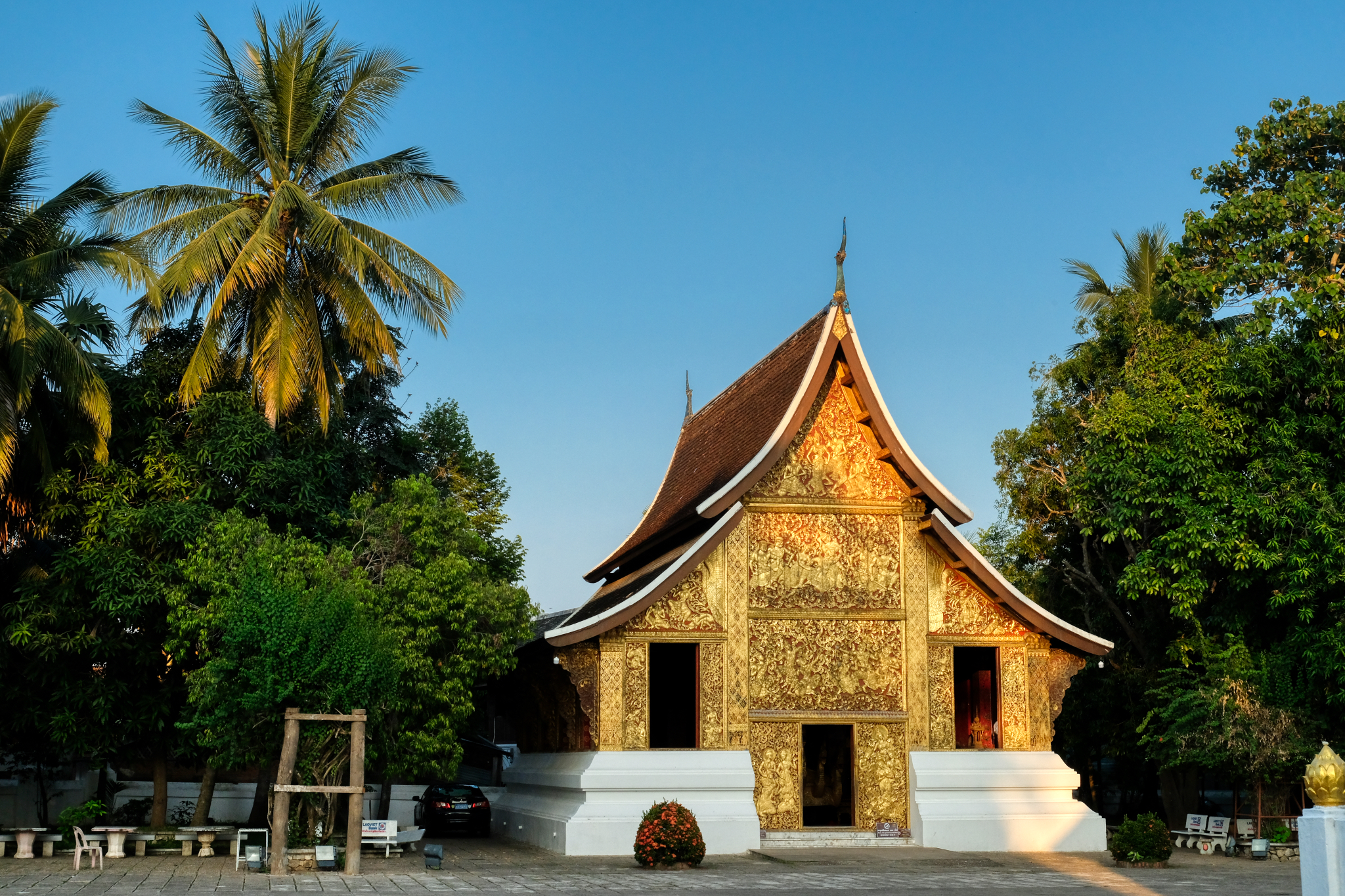
Wat Xieng Thong (c.1559) is the most revered Buddhist temple (wat) in all of Luang Prabang.
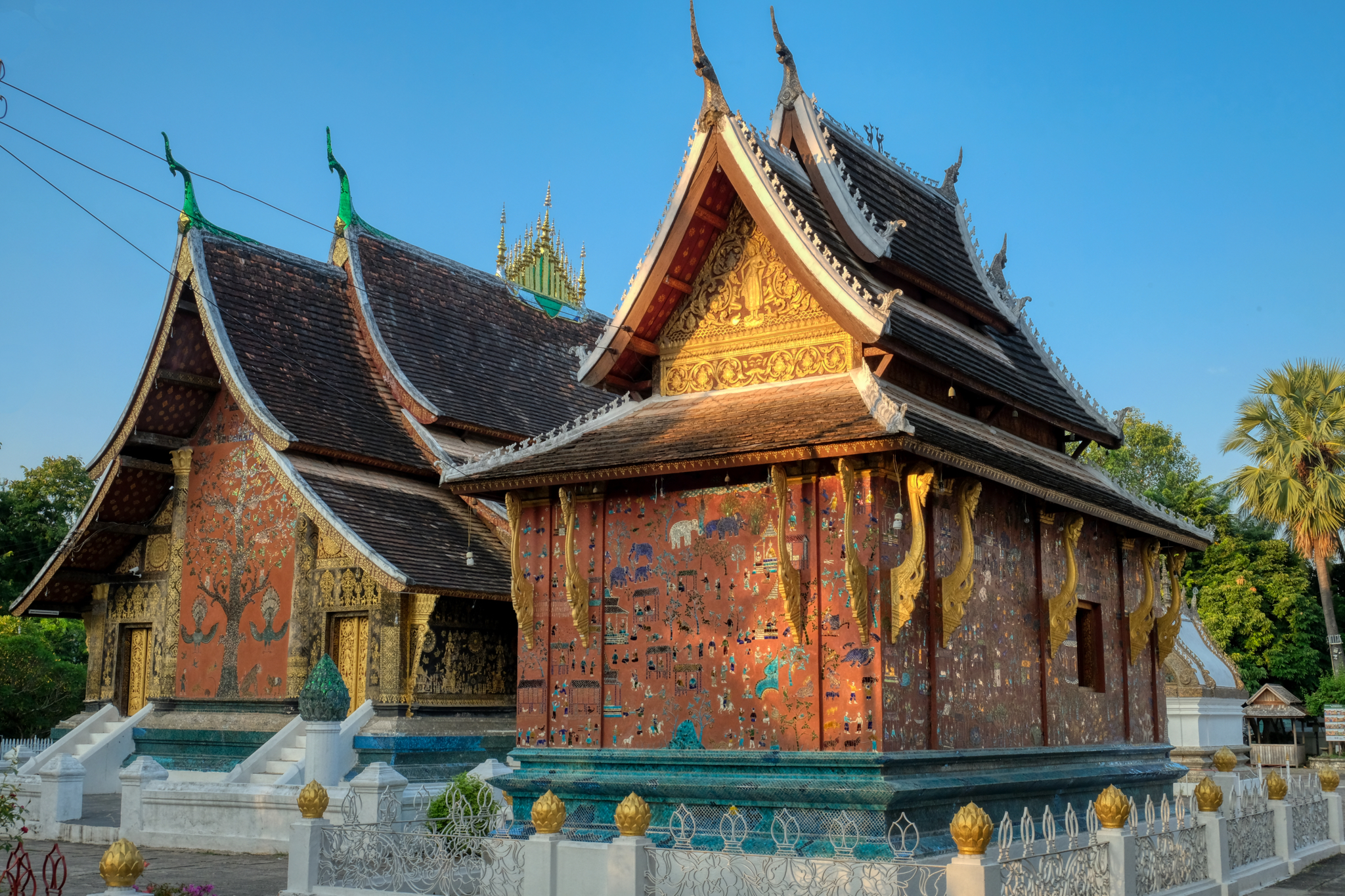
Wat Xieng Thong had many buildings within the grounds. Many had fine, primitive mosaic depictions of life in long gone times.
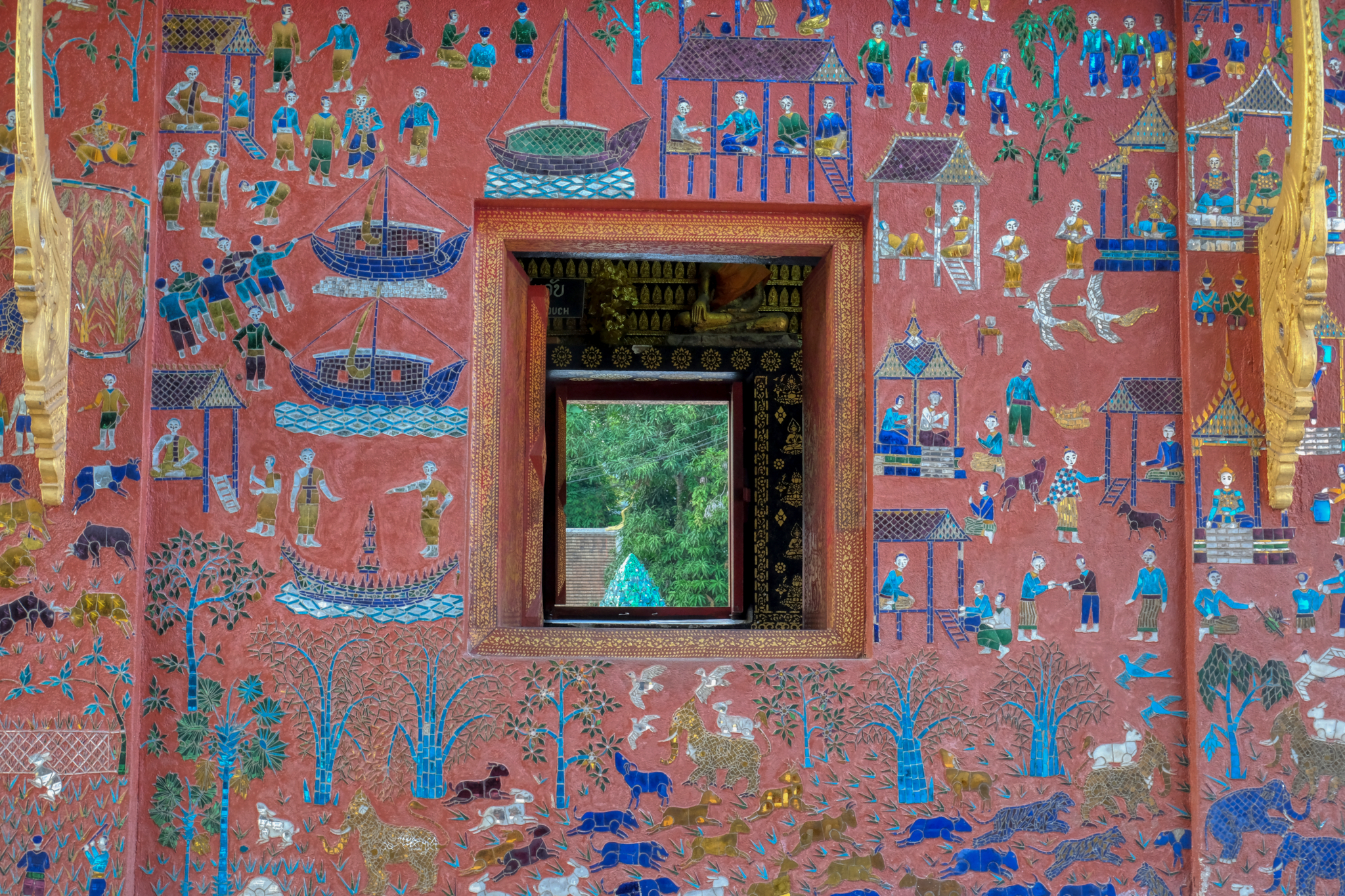 The state of preservation, restoration, love, and care of all of the wats in Luang Prabang was exemplary.
The state of preservation, restoration, love, and care of all of the wats in Luang Prabang was exemplary.
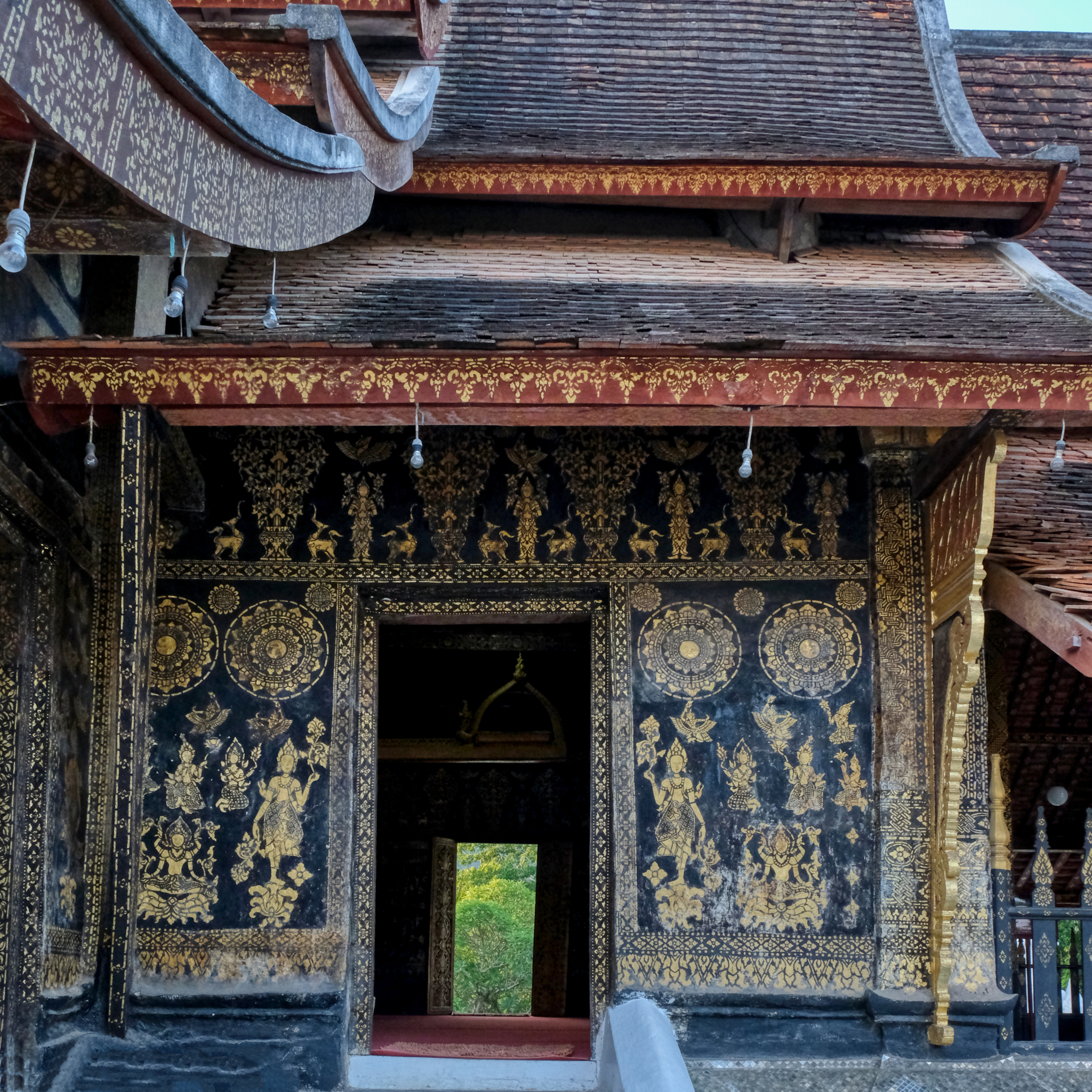 Ancient stenciled patterns on many walls.
Ancient stenciled patterns on many walls.
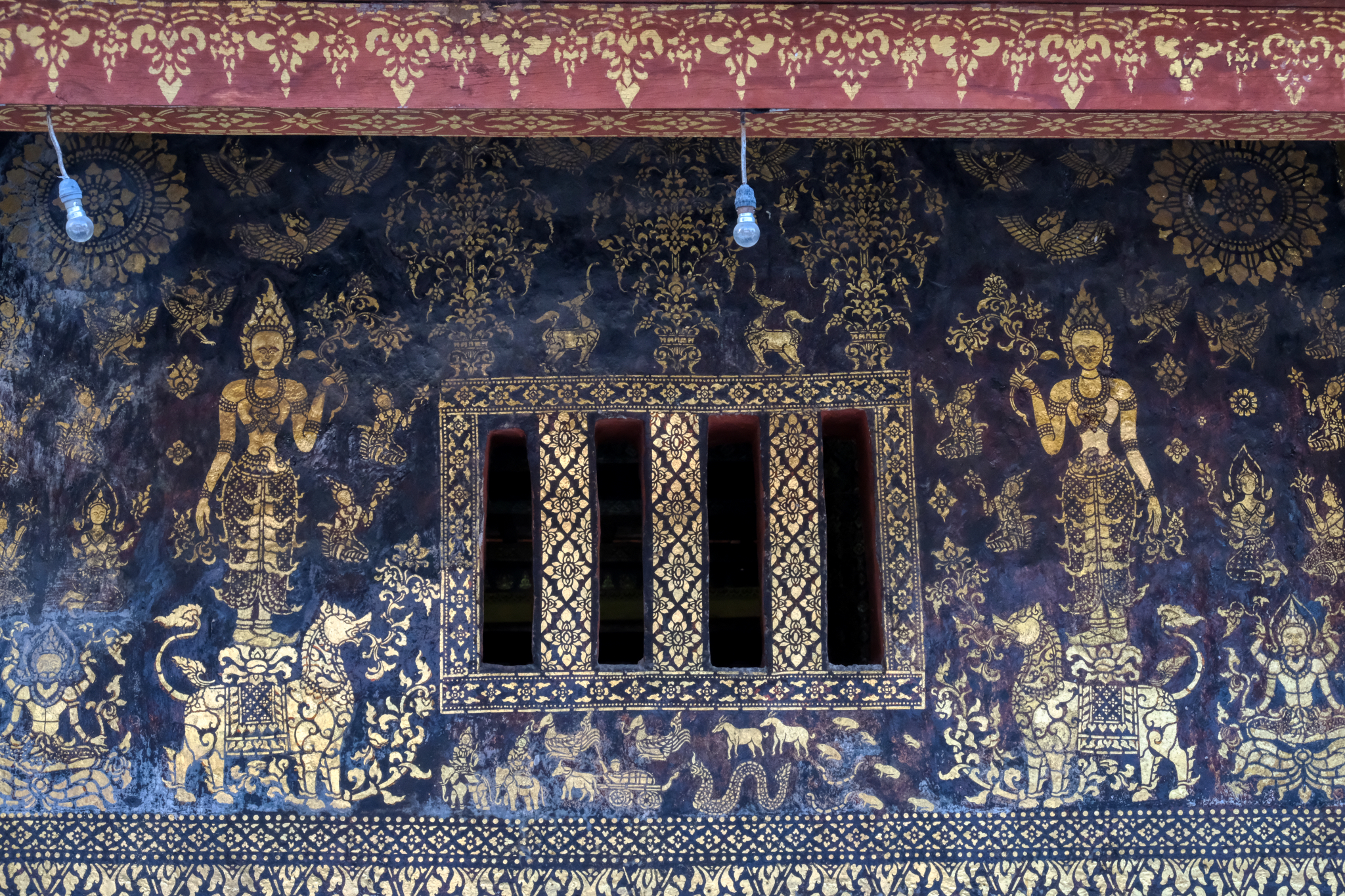 Lovely work.
Lovely work.
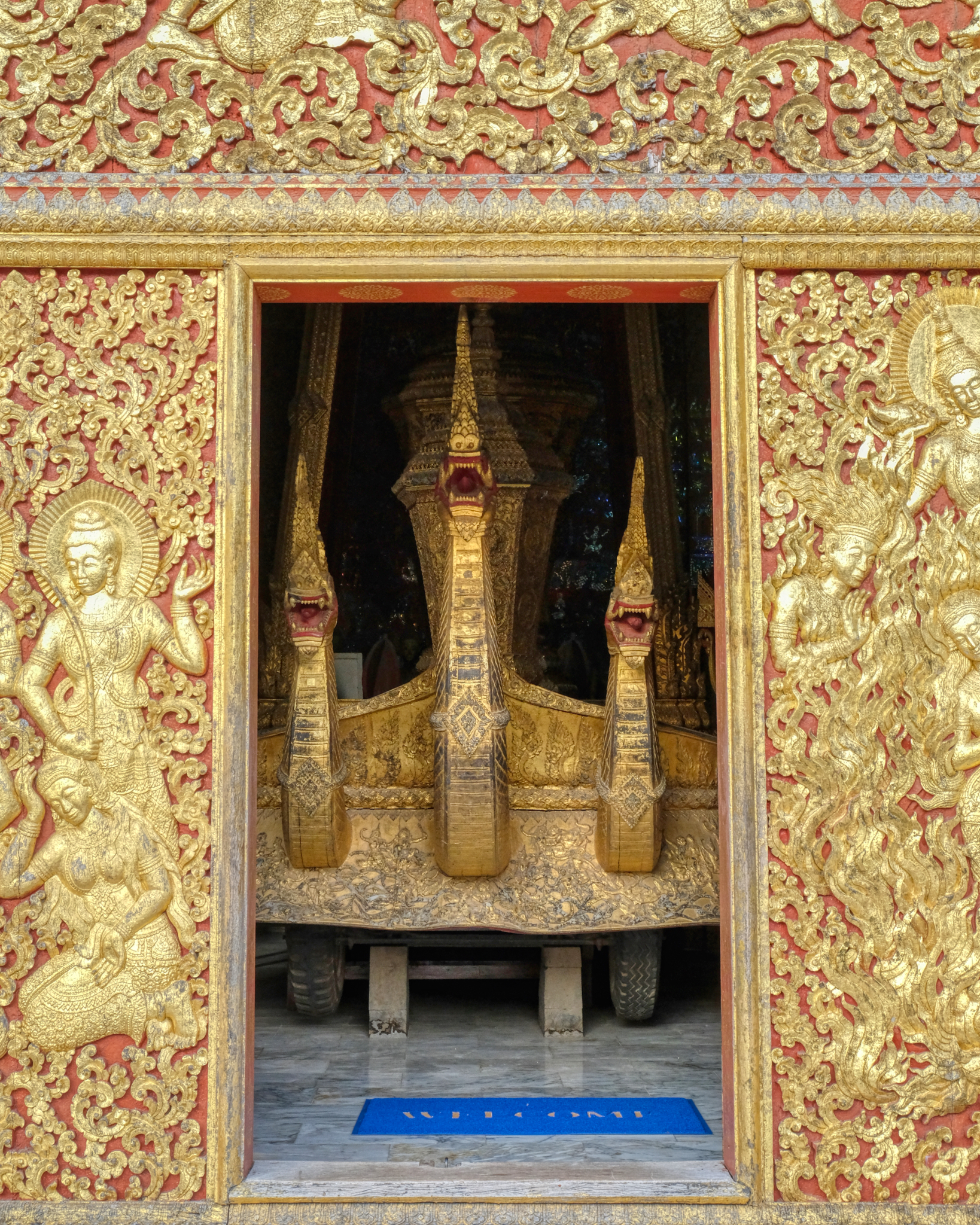 A special building was built to house this gold leaf funerary carriage.
A special building was built to house this gold leaf funerary carriage.
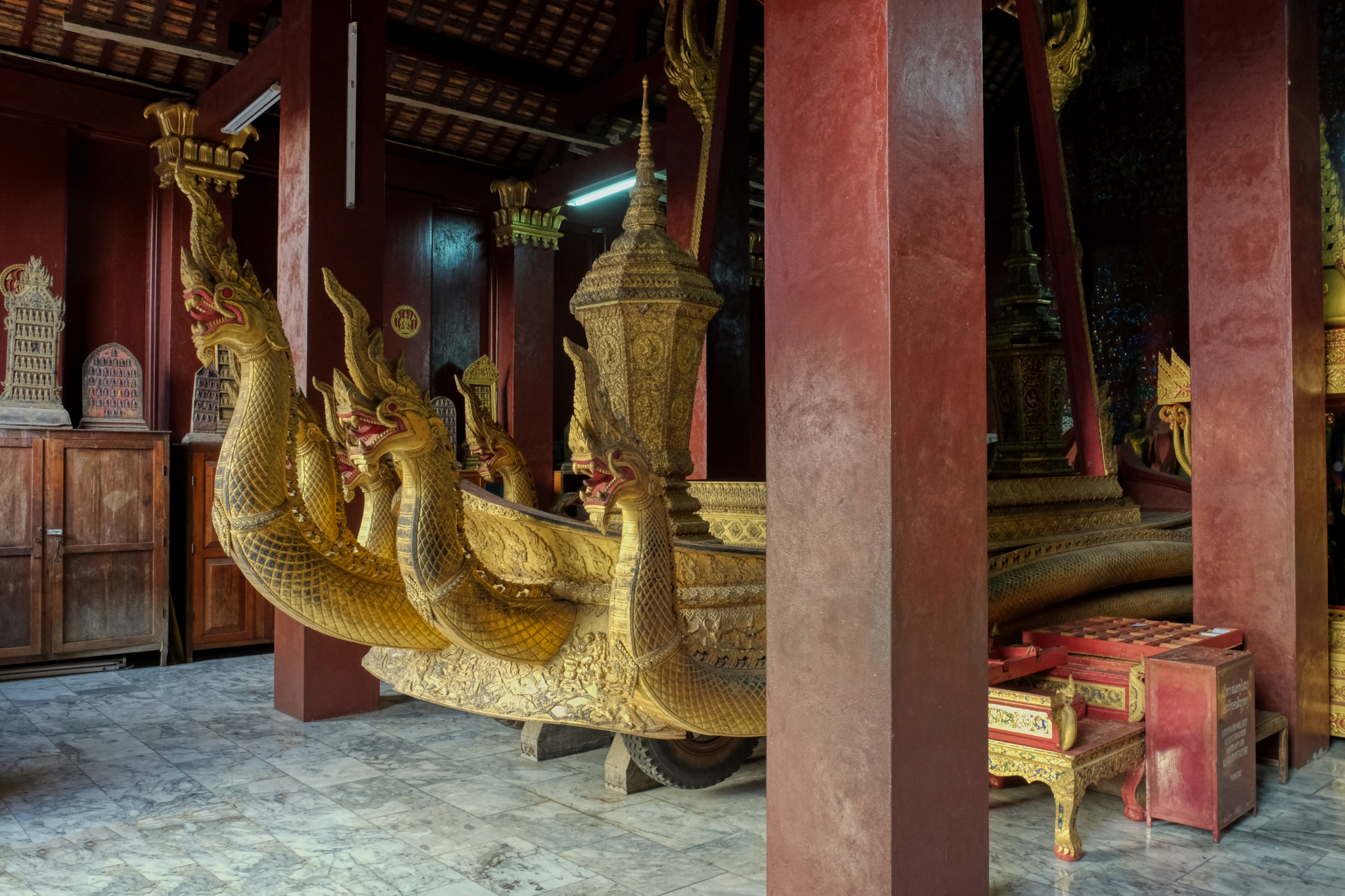 The inside of the funerary carriage temple was astounding! Such a surprise . . . and many nooks and crannies to look into.
The inside of the funerary carriage temple was astounding! Such a surprise . . . and many nooks and crannies to look into.
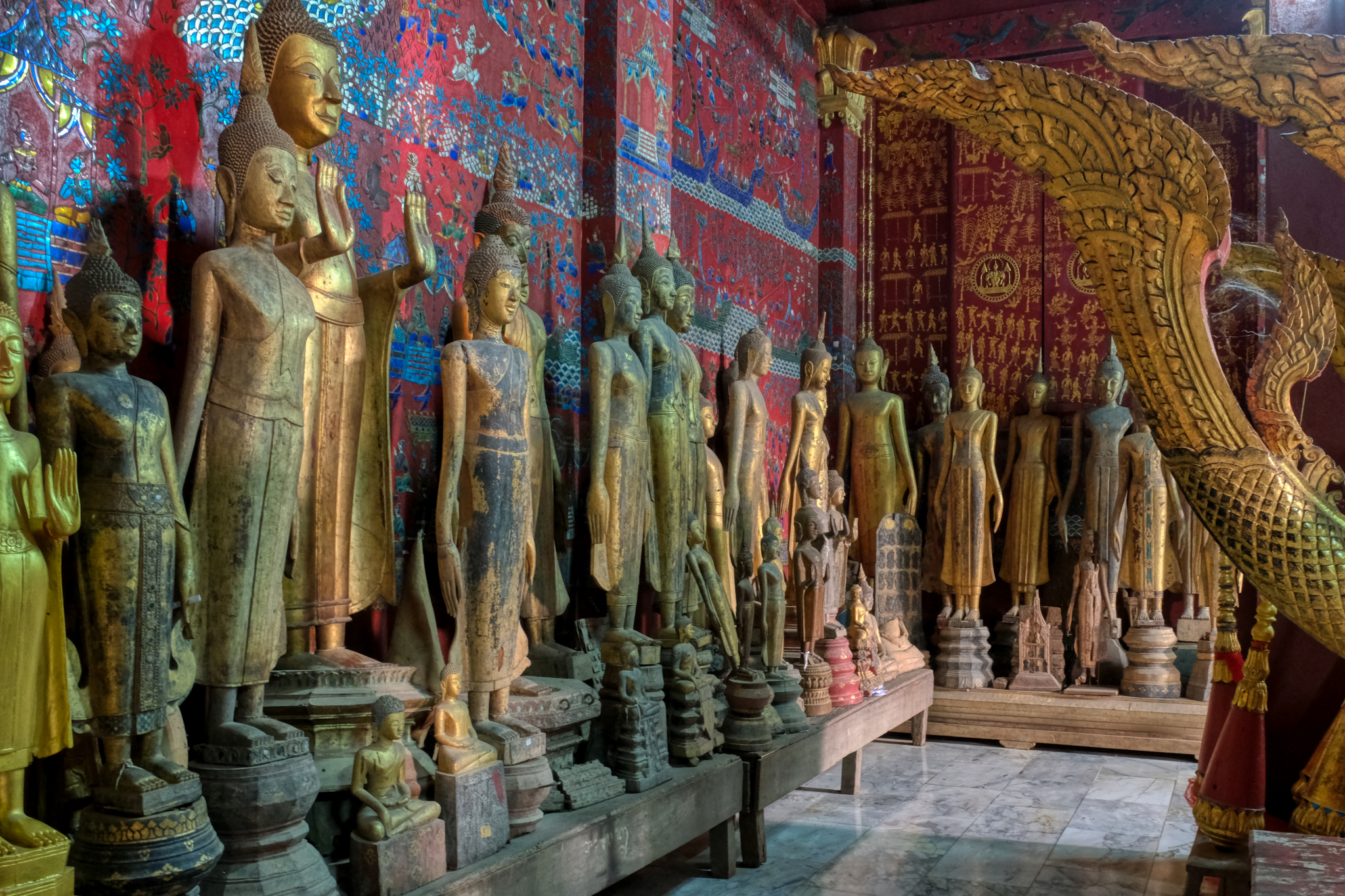 A mosaic covered wall with a line of ancient Buddha statuary.
A mosaic covered wall with a line of ancient Buddha statuary.
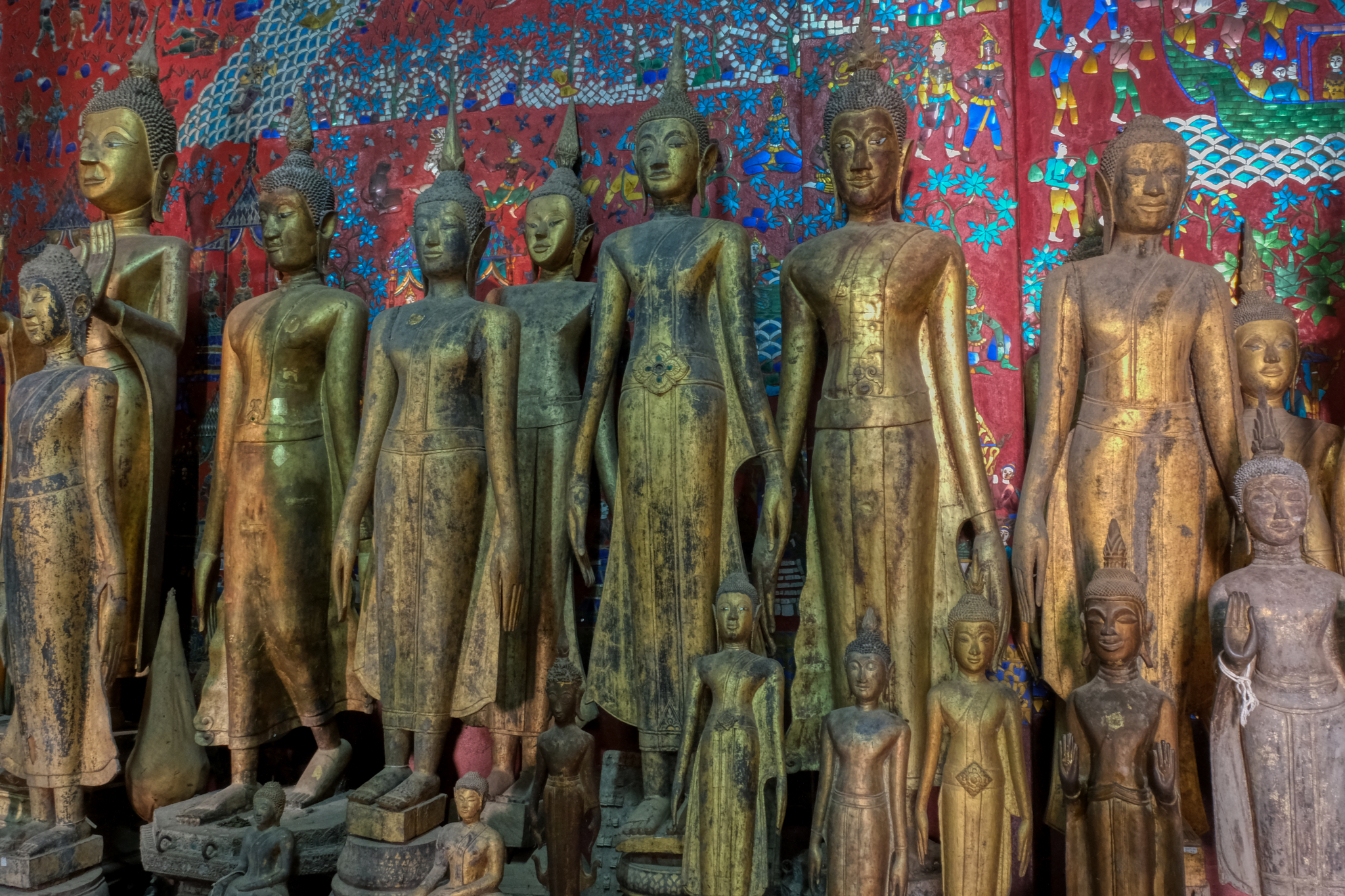 Spiritual simplicity depicted.
Spiritual simplicity depicted.
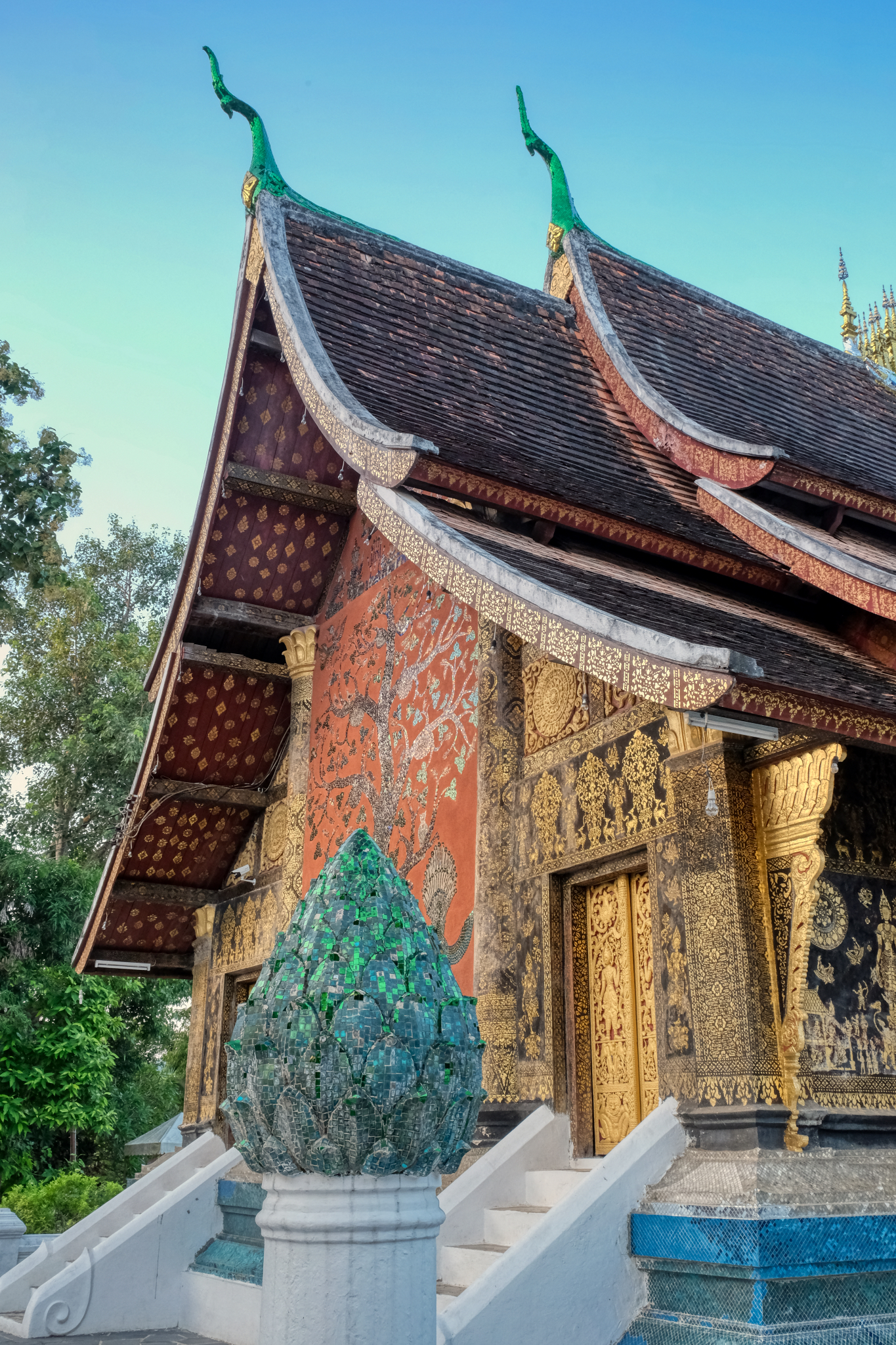 There were many structures to explore at this wat. I came twice with my camera as it was very close to our hotel.
There were many structures to explore at this wat. I came twice with my camera as it was very close to our hotel.
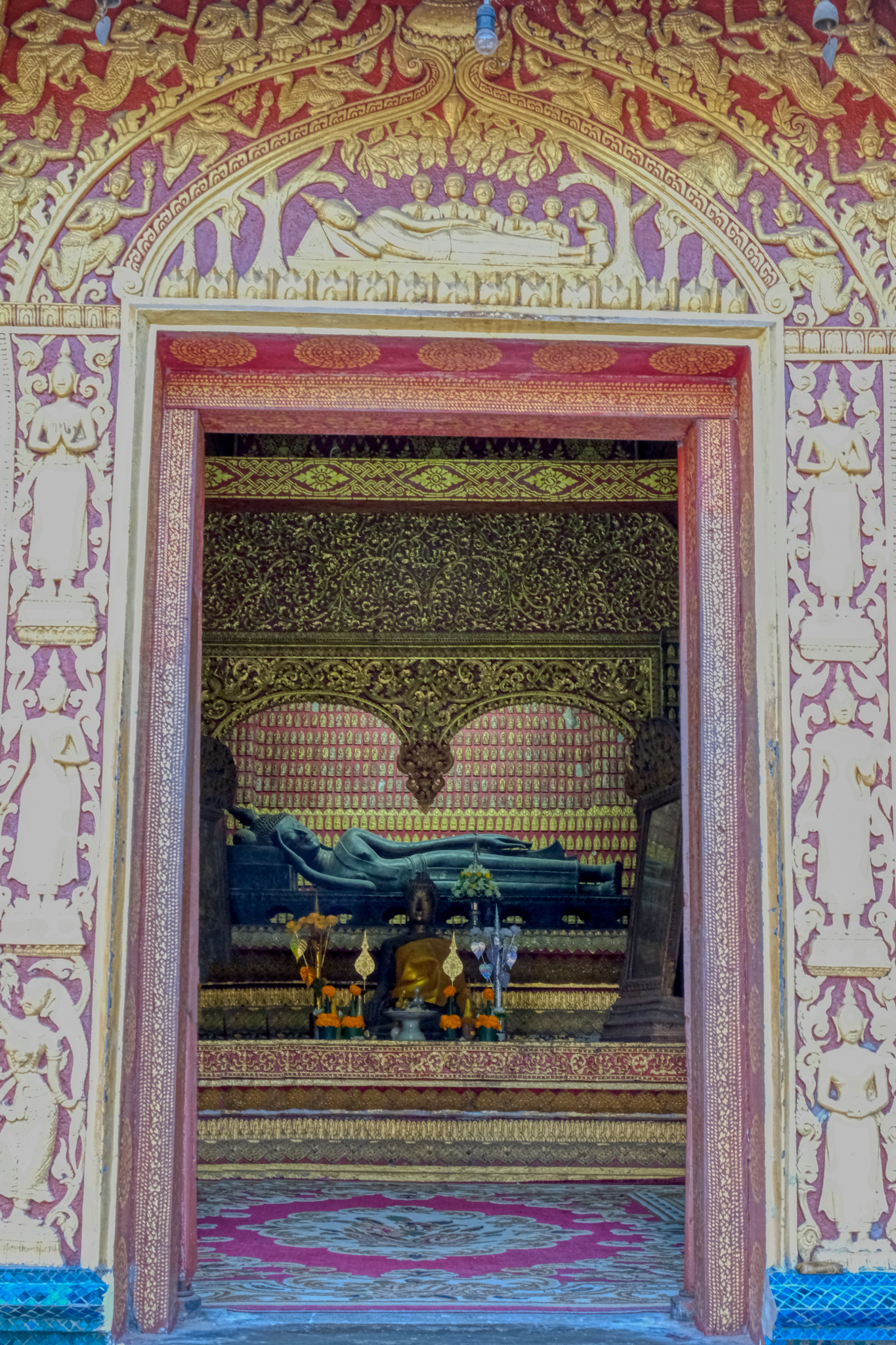 An inviting open temple.
An inviting open temple.
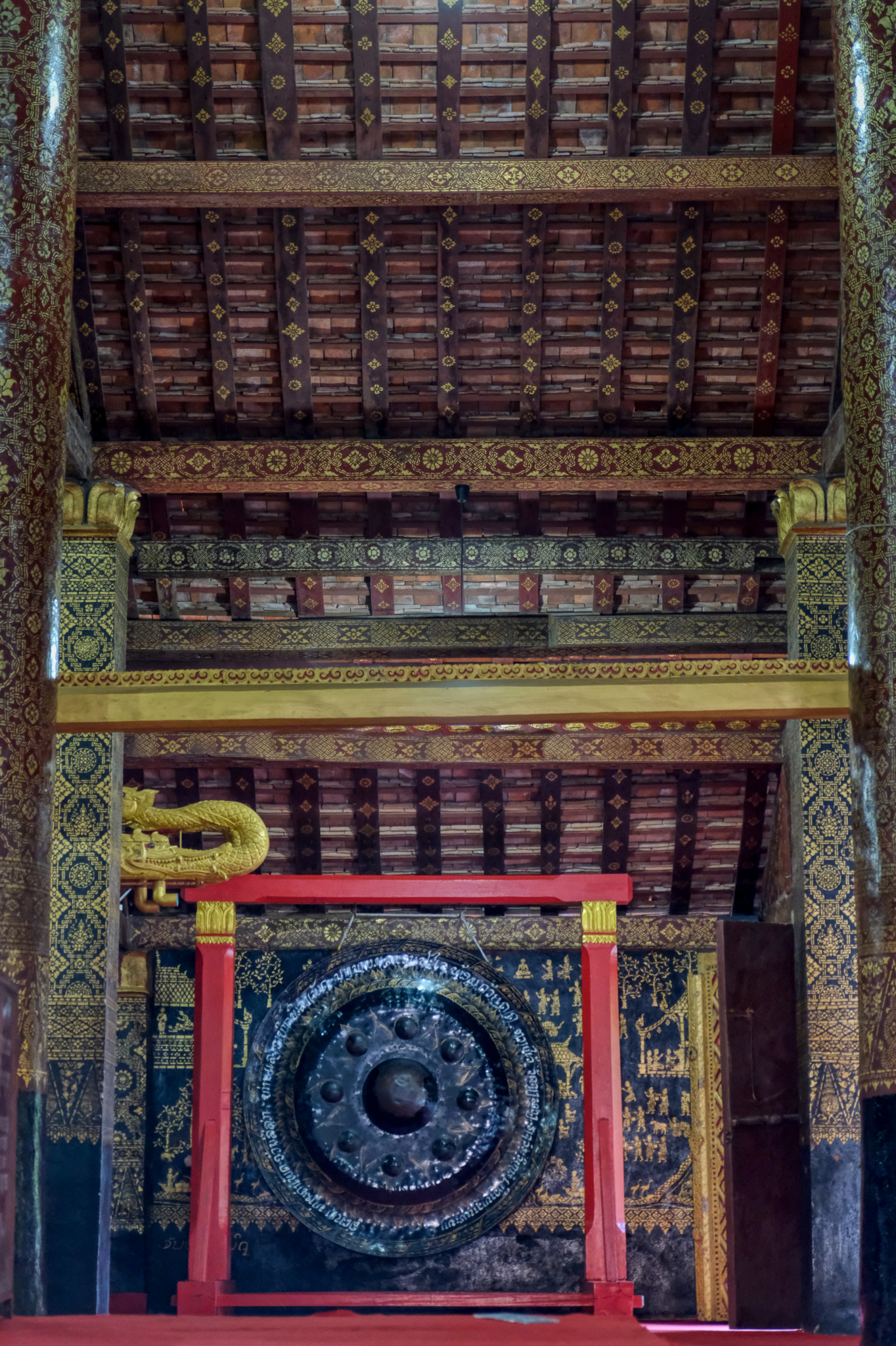 A temple gong.
A temple gong.
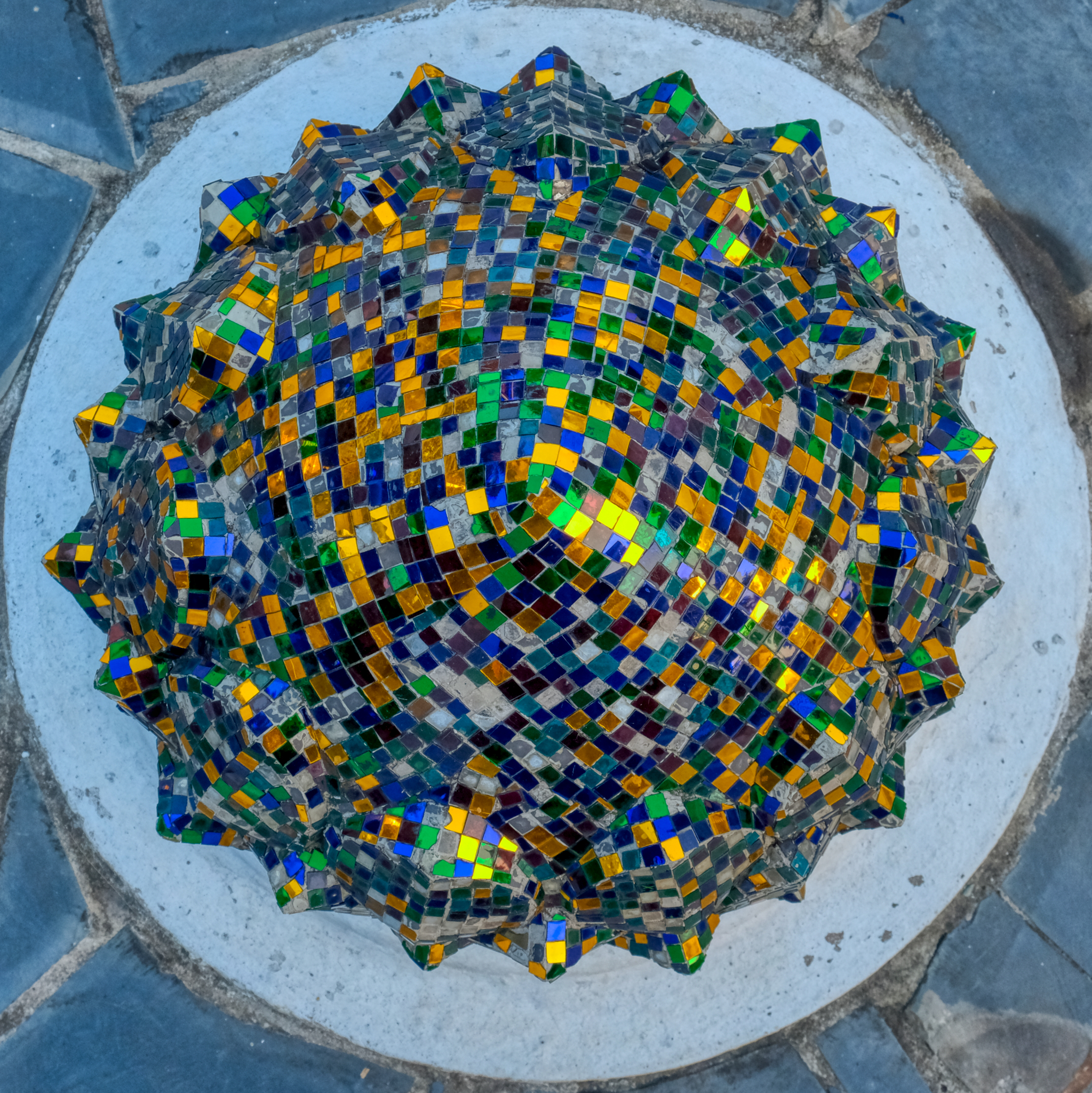 Shiny outdoor decoration.
Shiny outdoor decoration.
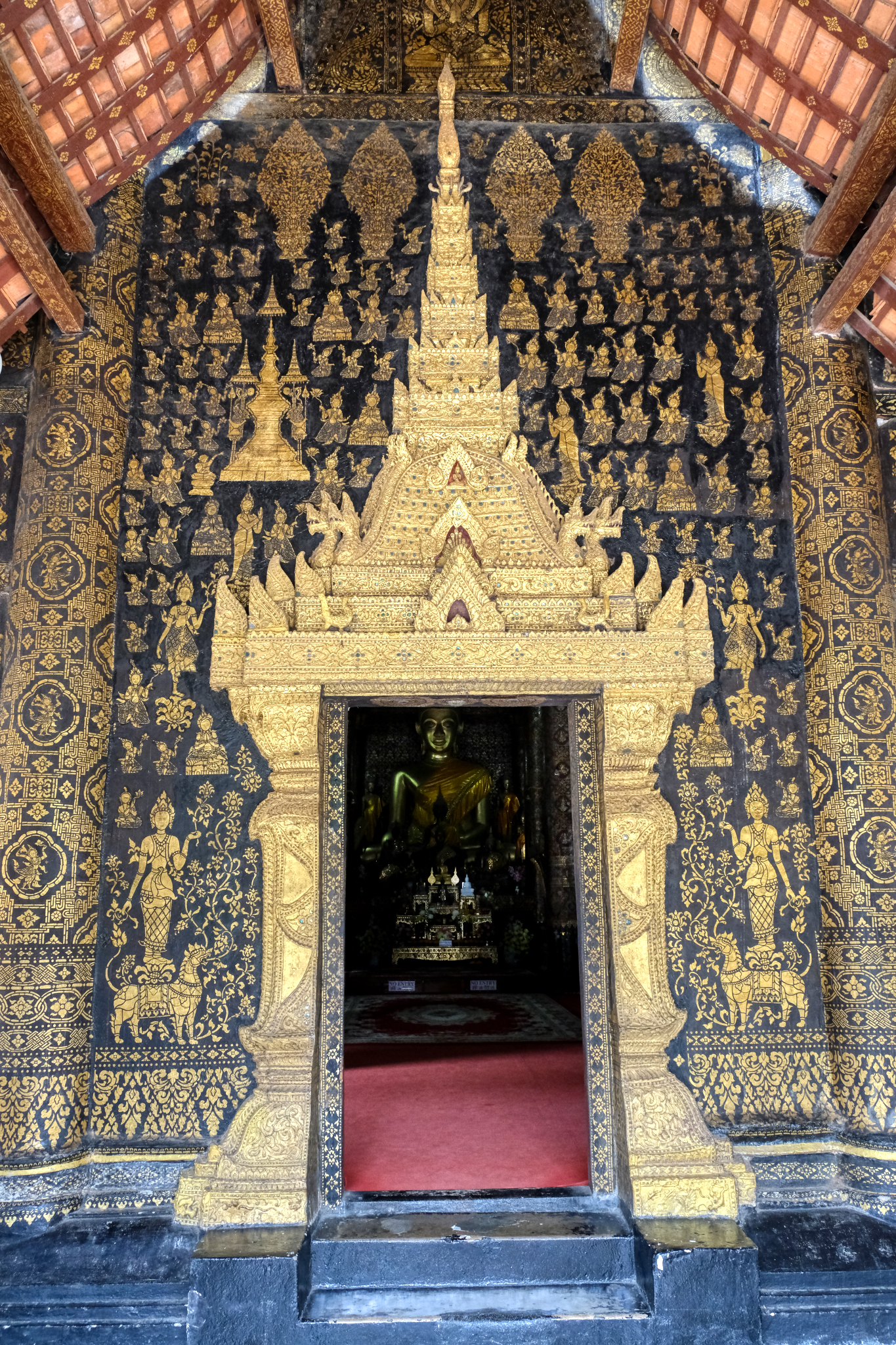 This looks inviting . . .
This looks inviting . . .
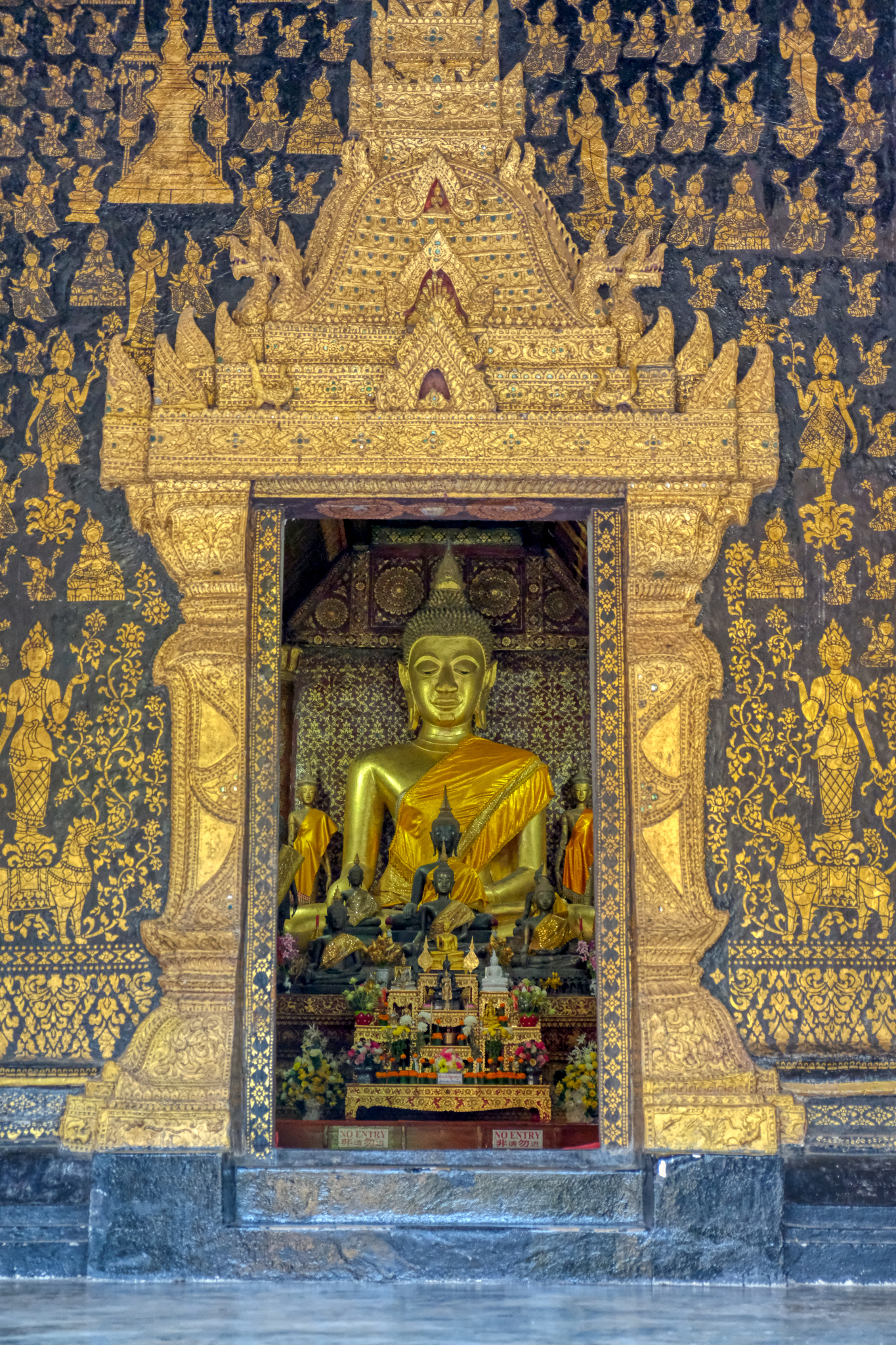 A view to the Buddha altar in the main hall. Magnificent architecture.
A view to the Buddha altar in the main hall. Magnificent architecture.
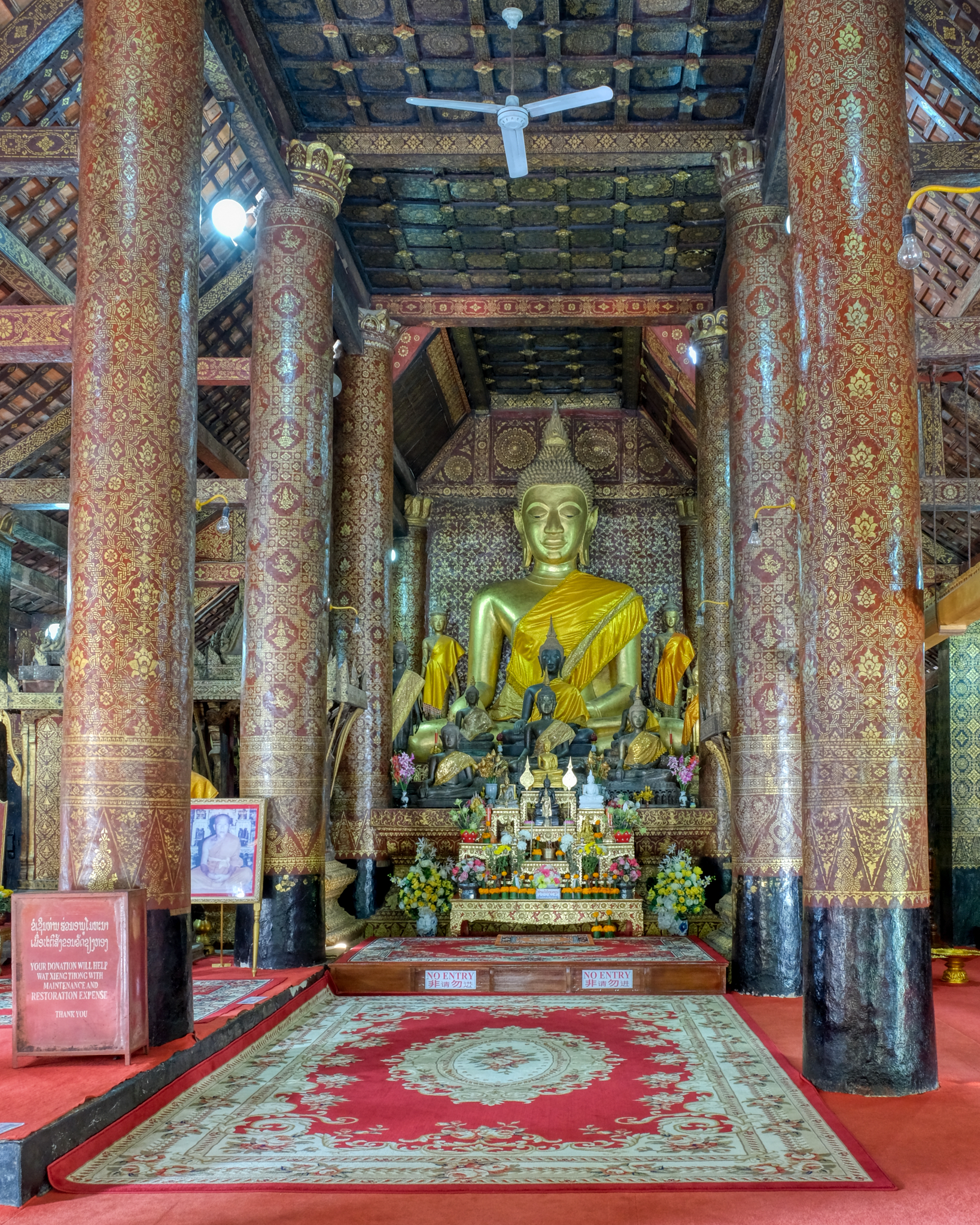 The main altar of Wat Xieng Thong.
The main altar of Wat Xieng Thong.
 A favorite altar.
A favorite altar.
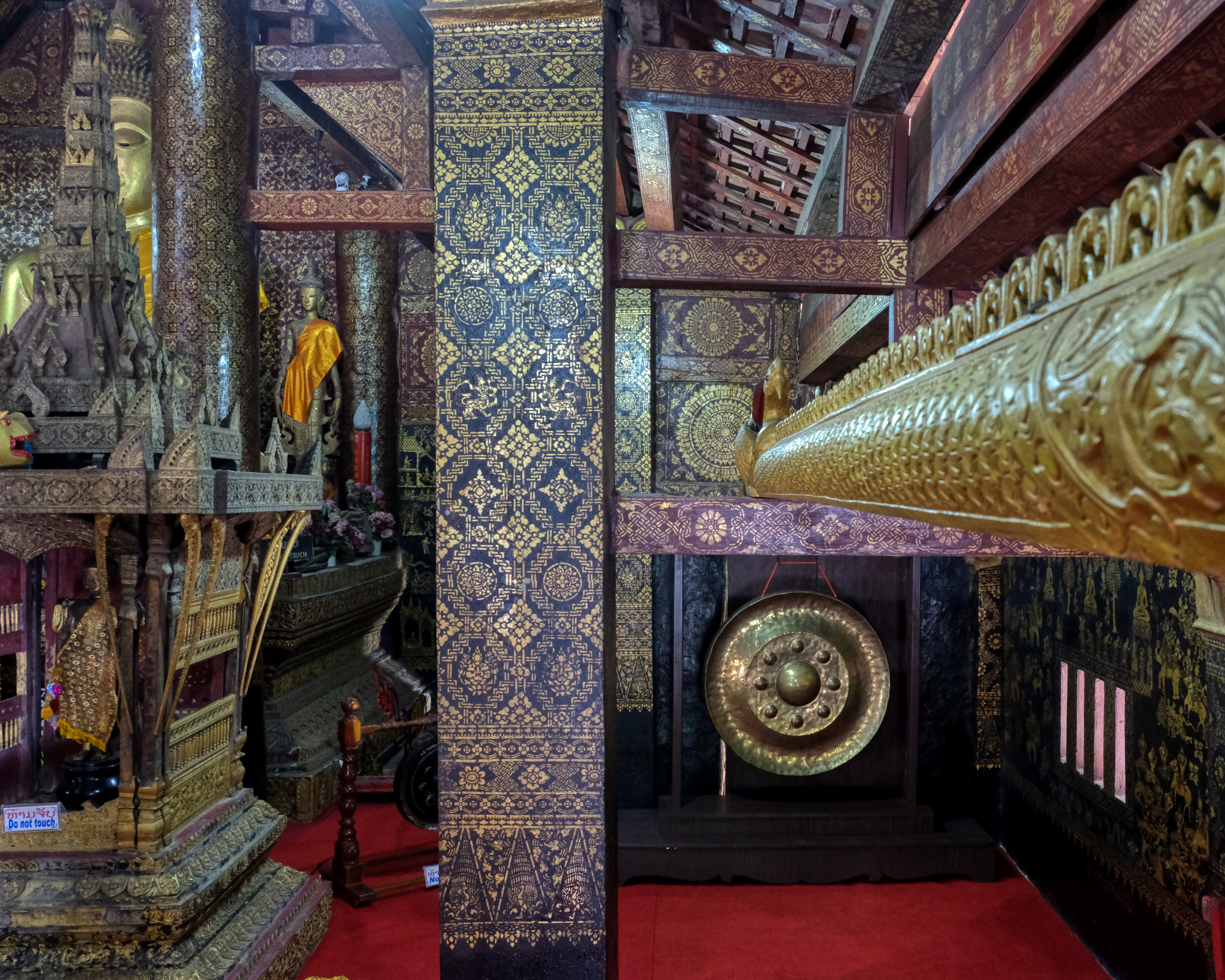 Rich detail in the main hall decoration.
Rich detail in the main hall decoration.
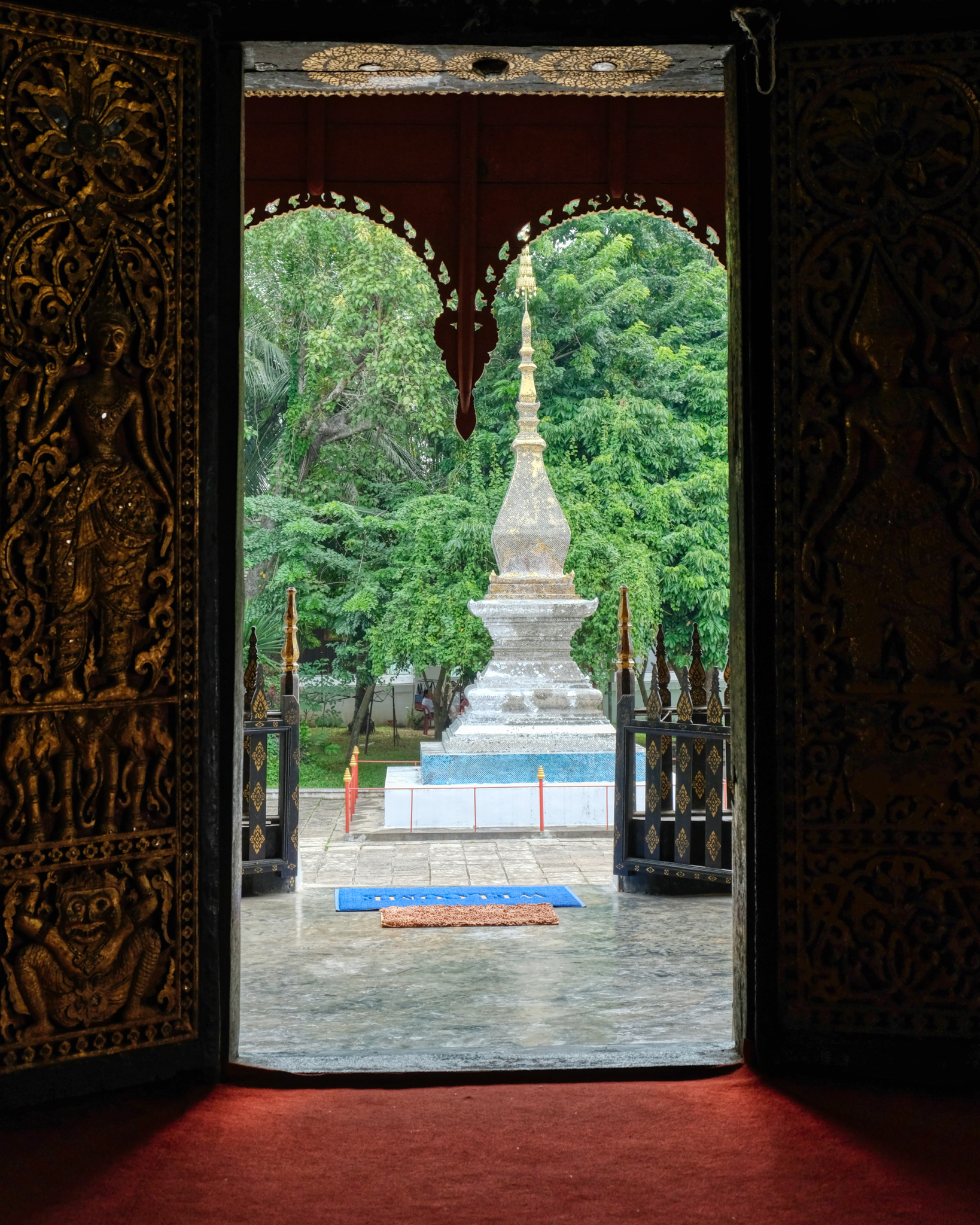 A view from inside the main hall to a glowing chedi on the temple grounds.
A view from inside the main hall to a glowing chedi on the temple grounds.
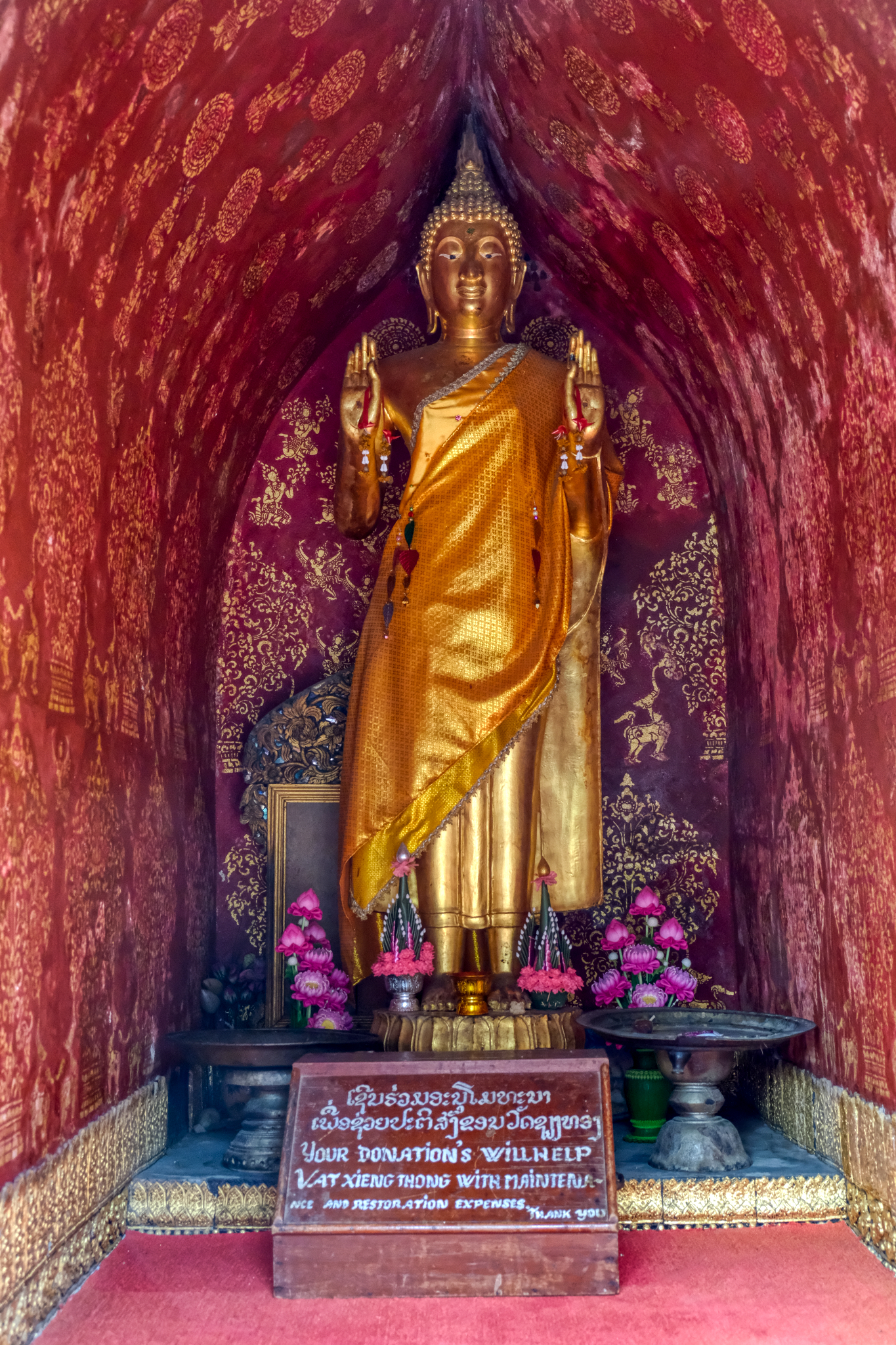 A lovely standing Buddha in a small grotto.
A lovely standing Buddha in a small grotto.
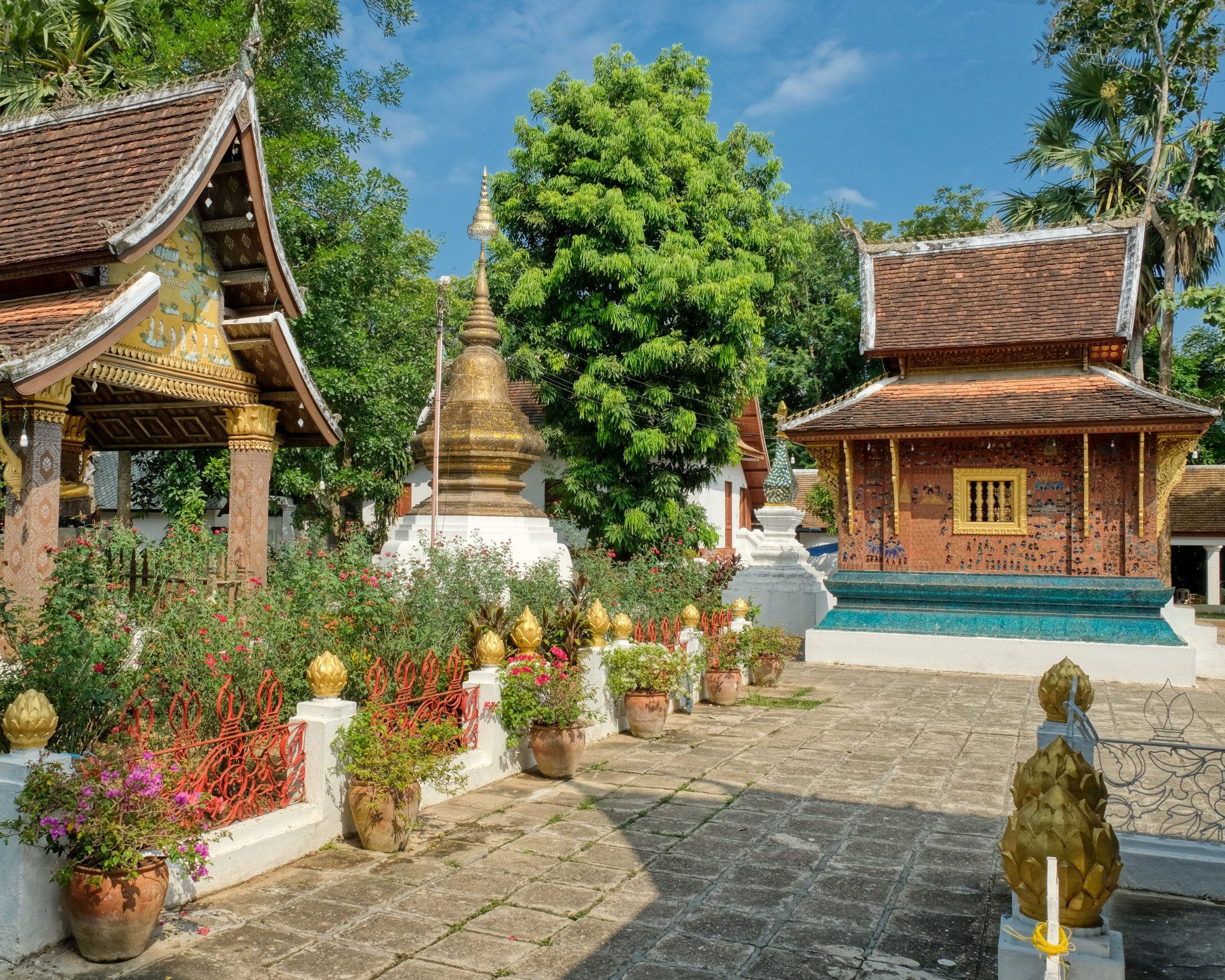 Such a pleasant and peaceful place.
Such a pleasant and peaceful place.
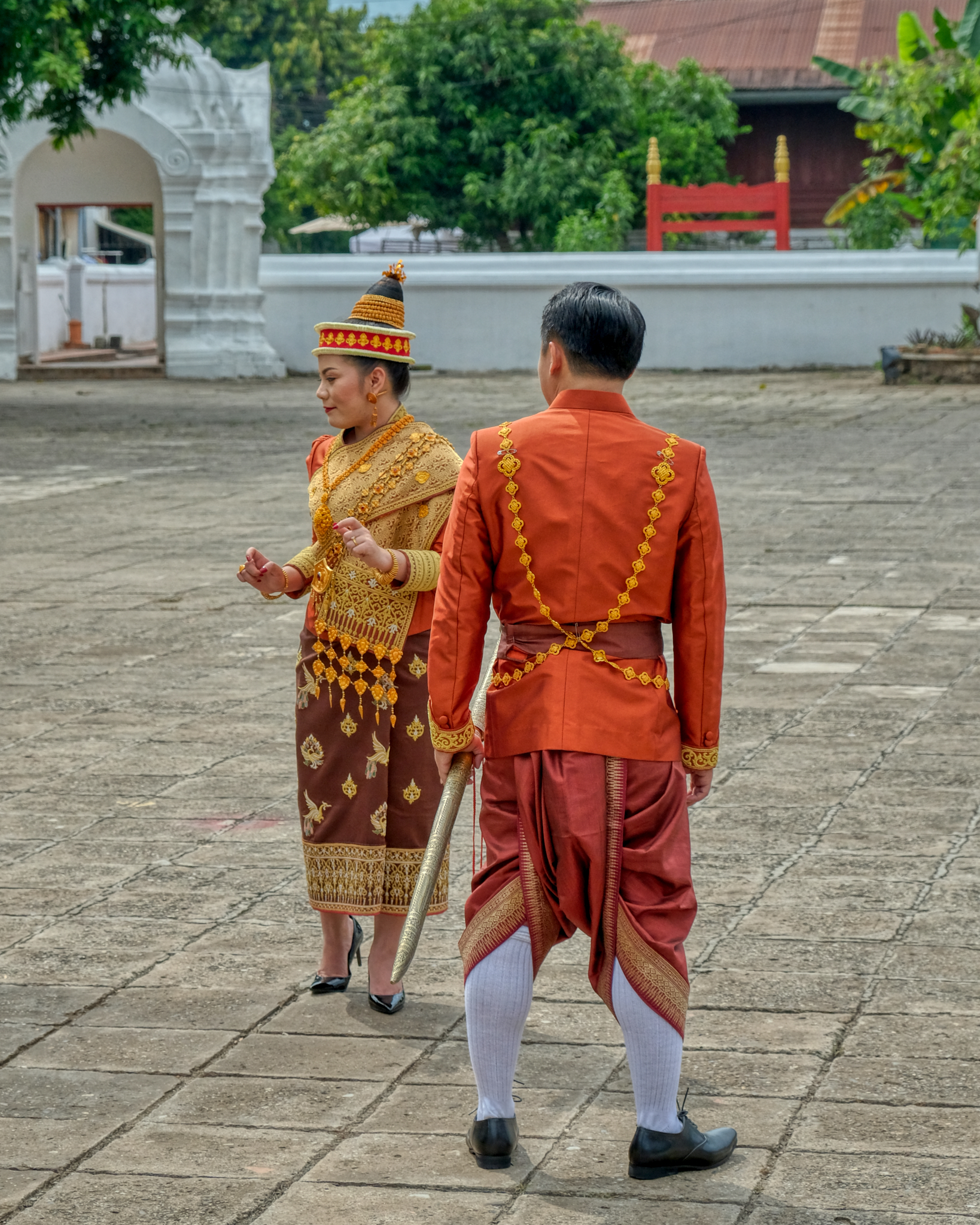 It was my good luck to be at the temple when a soon-to-be-married couple showed up for their bridal photo shoot in traditional Lao costume.
It was my good luck to be at the temple when a soon-to-be-married couple showed up for their bridal photo shoot in traditional Lao costume.
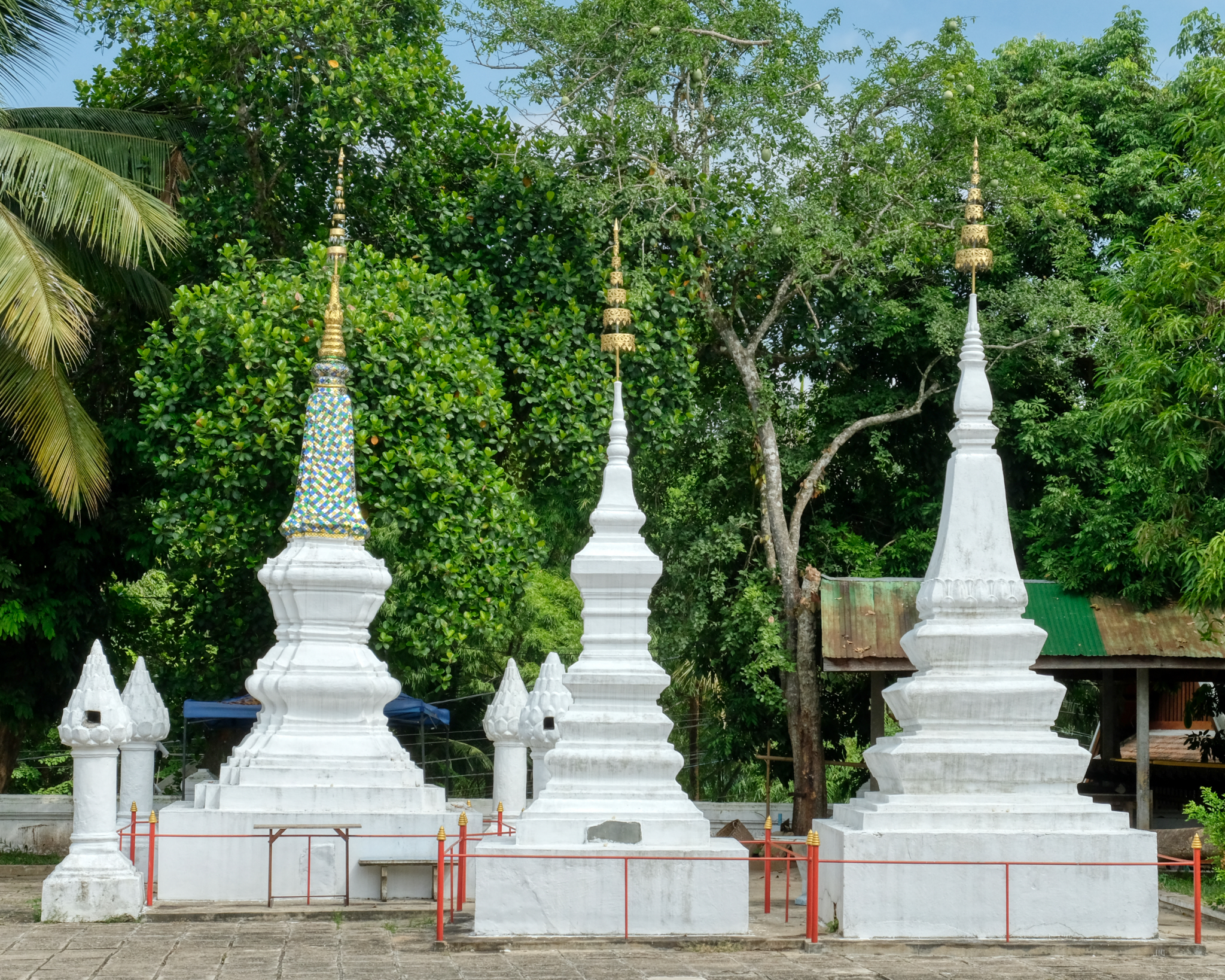 These chedis likely contain the remains of revered monks, abbots, and those who have made big donations to this wat.
These chedis likely contain the remains of revered monks, abbots, and those who have made big donations to this wat.
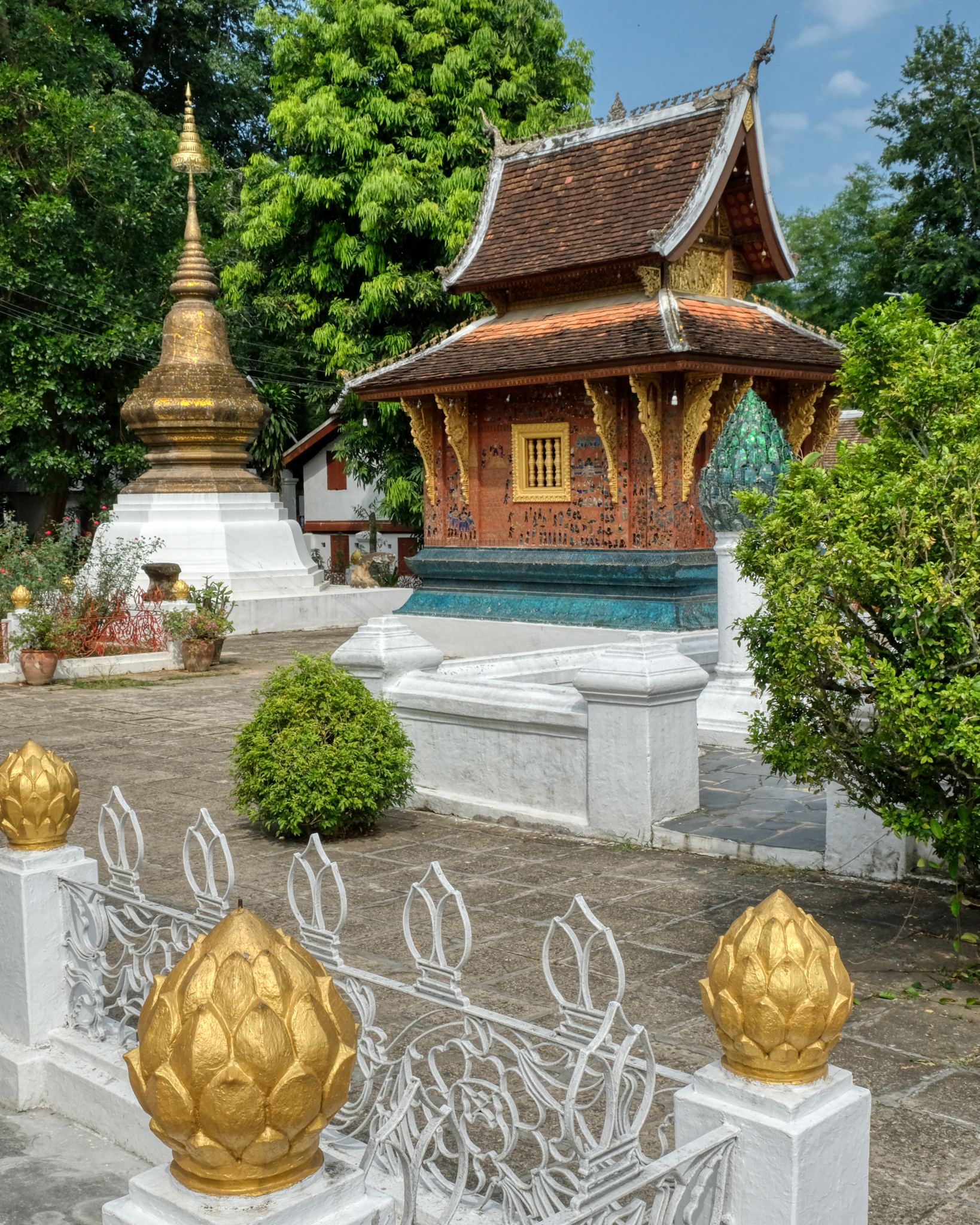 I have been to many, many Buddhist temples in many countries, but this one is one of the most beautiful.
I have been to many, many Buddhist temples in many countries, but this one is one of the most beautiful.
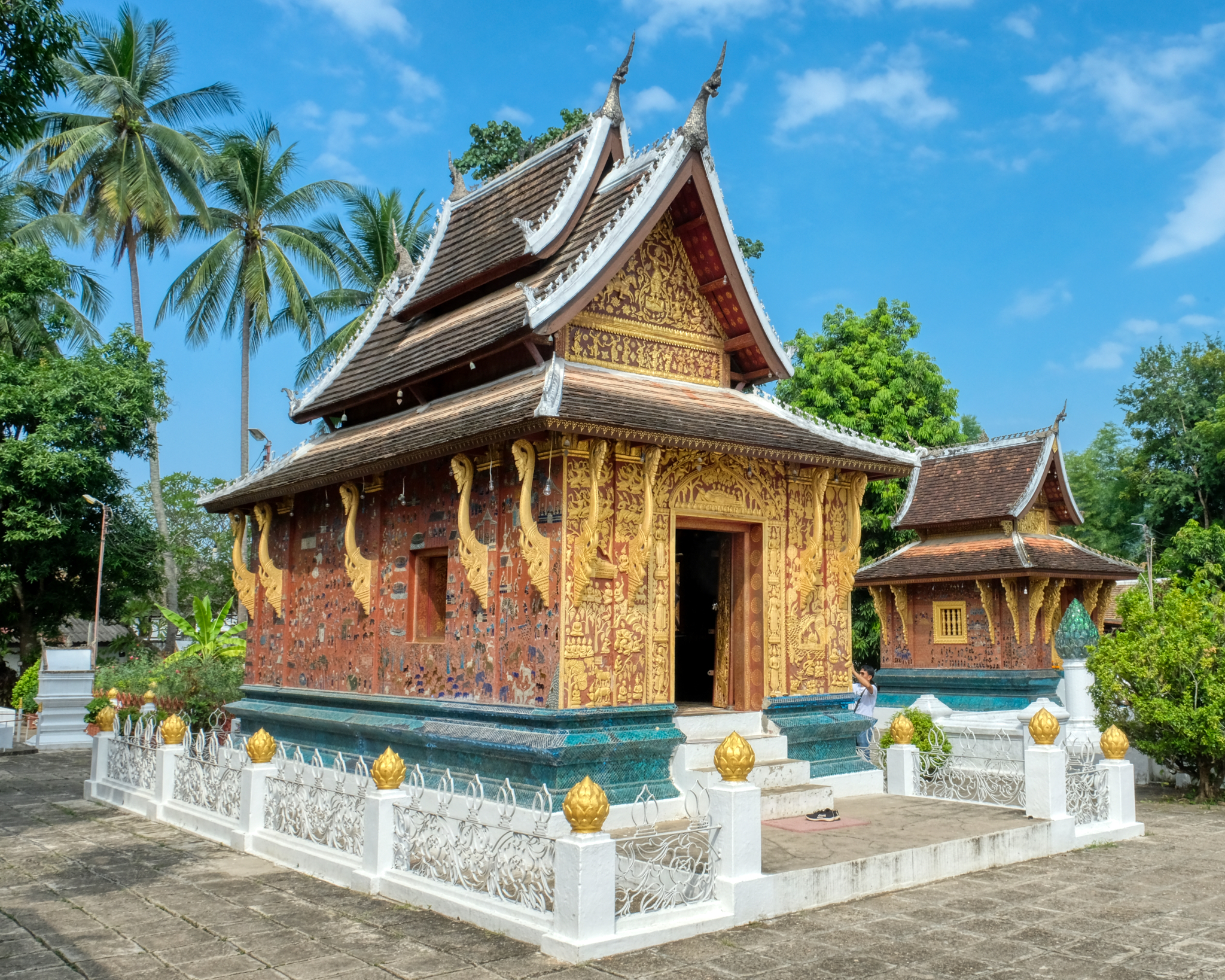 Many small structures for individual Buddha altars.
Many small structures for individual Buddha altars.
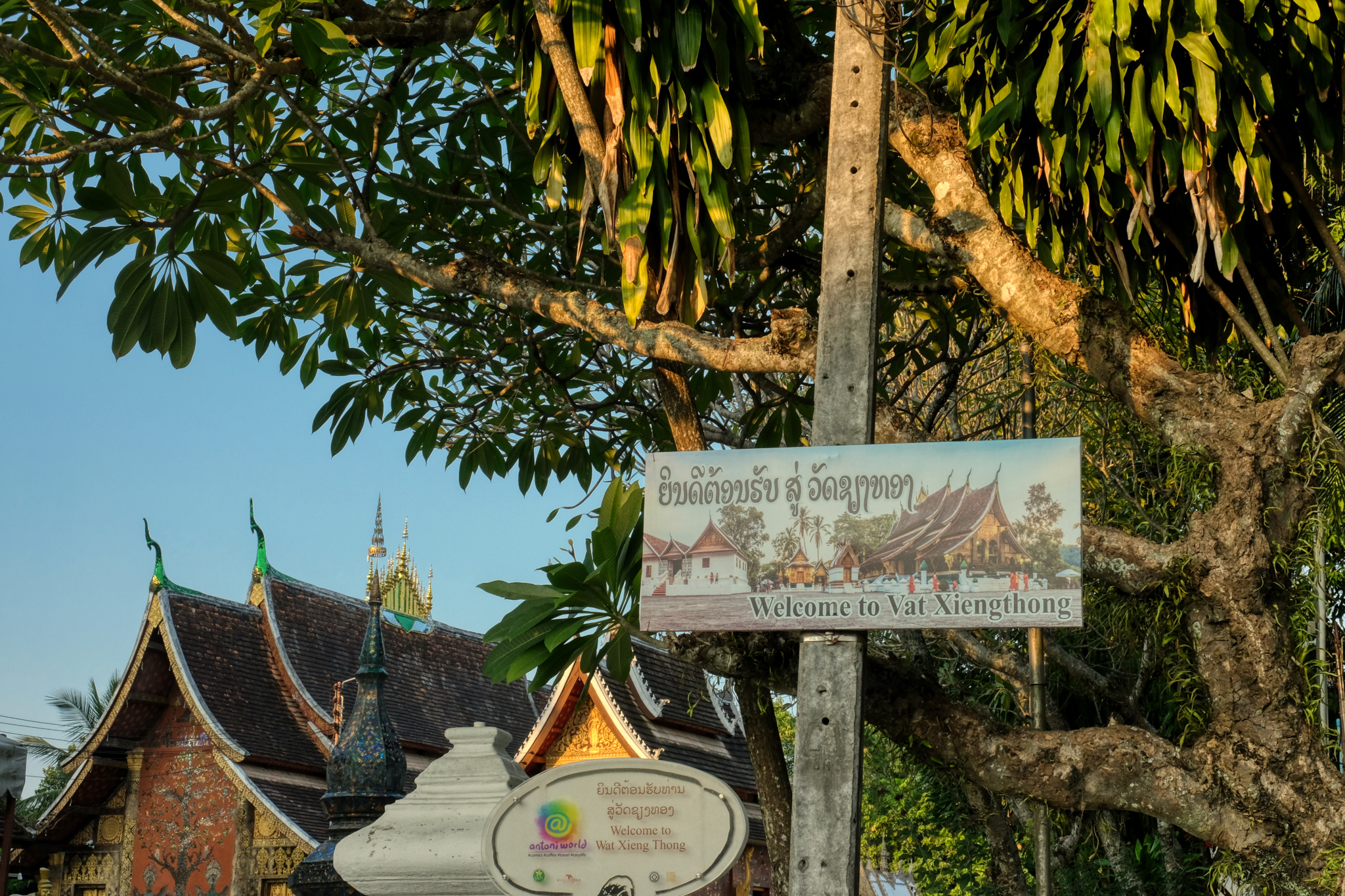 I came back one evening after dinner when the light was changing to a golden hue.
I came back one evening after dinner when the light was changing to a golden hue.
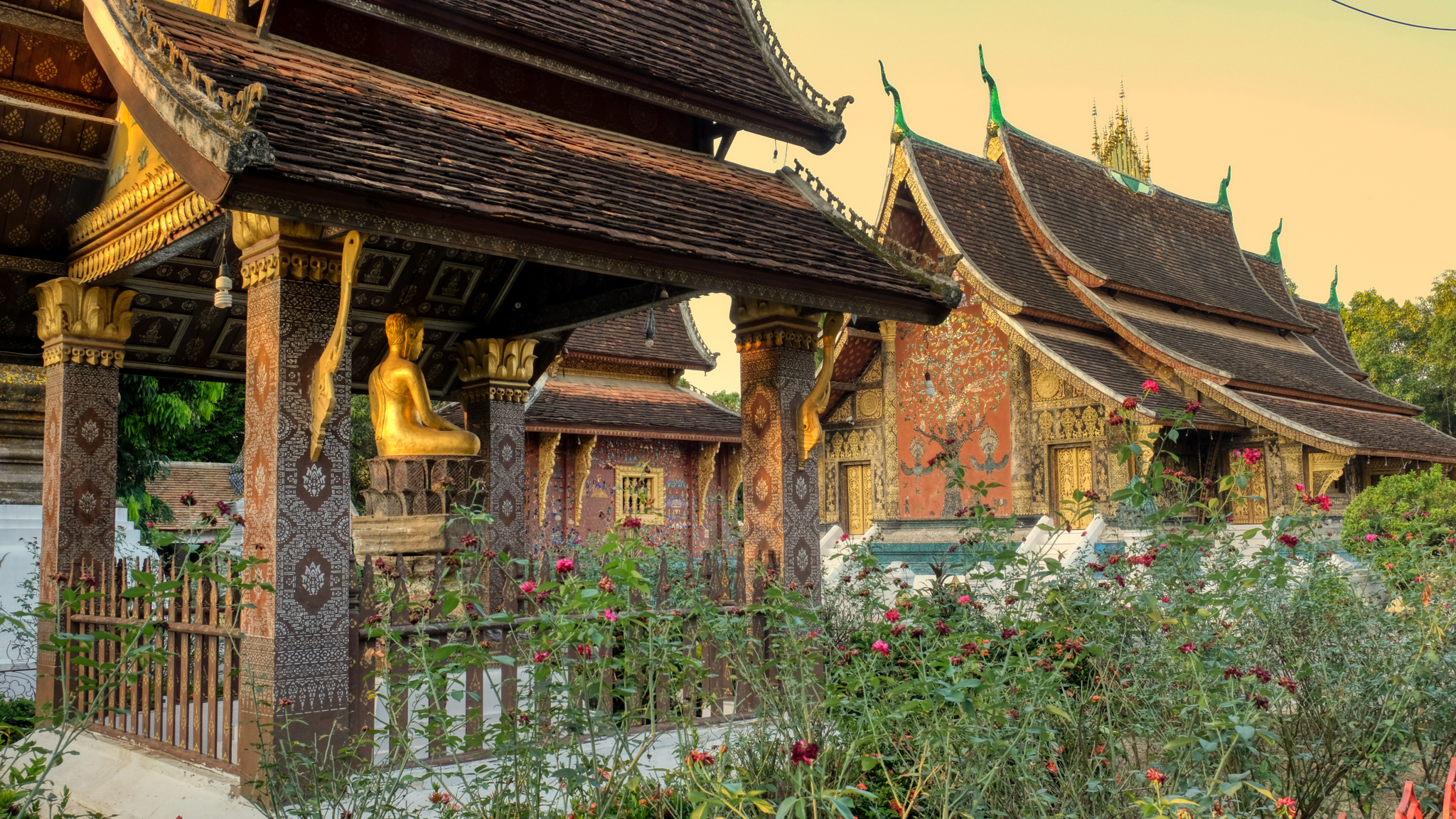 Magic light.
Magic light.
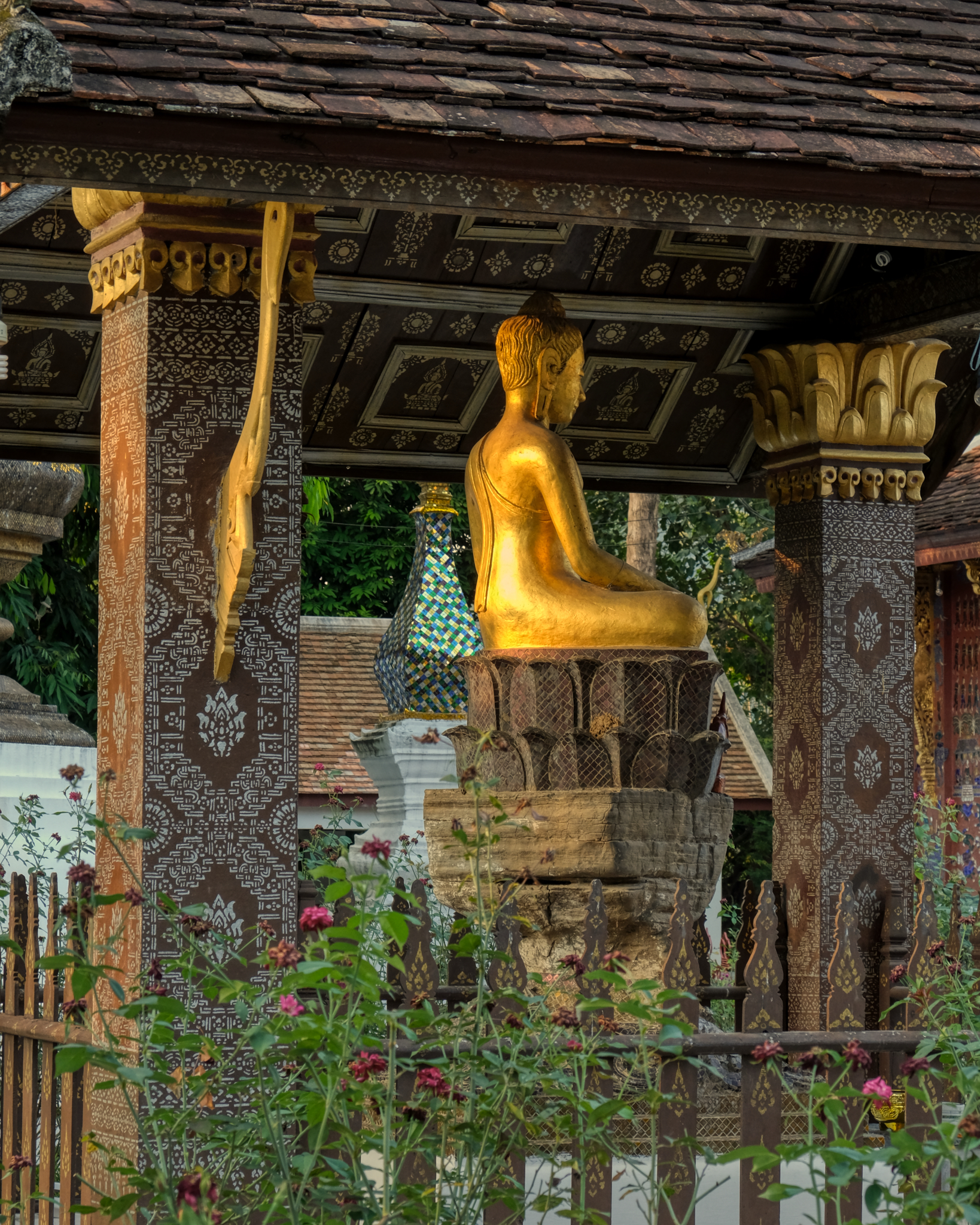 I will be back to Luang Prabang, and when I do, I will revisit Wat Xieng Thong.
I will be back to Luang Prabang, and when I do, I will revisit Wat Xieng Thong.
Road Trip USA: Leesville, Louisiana - A Childhood Home
 Saturday, April 27, 2019 at 6:10PM
Saturday, April 27, 2019 at 6:10PM 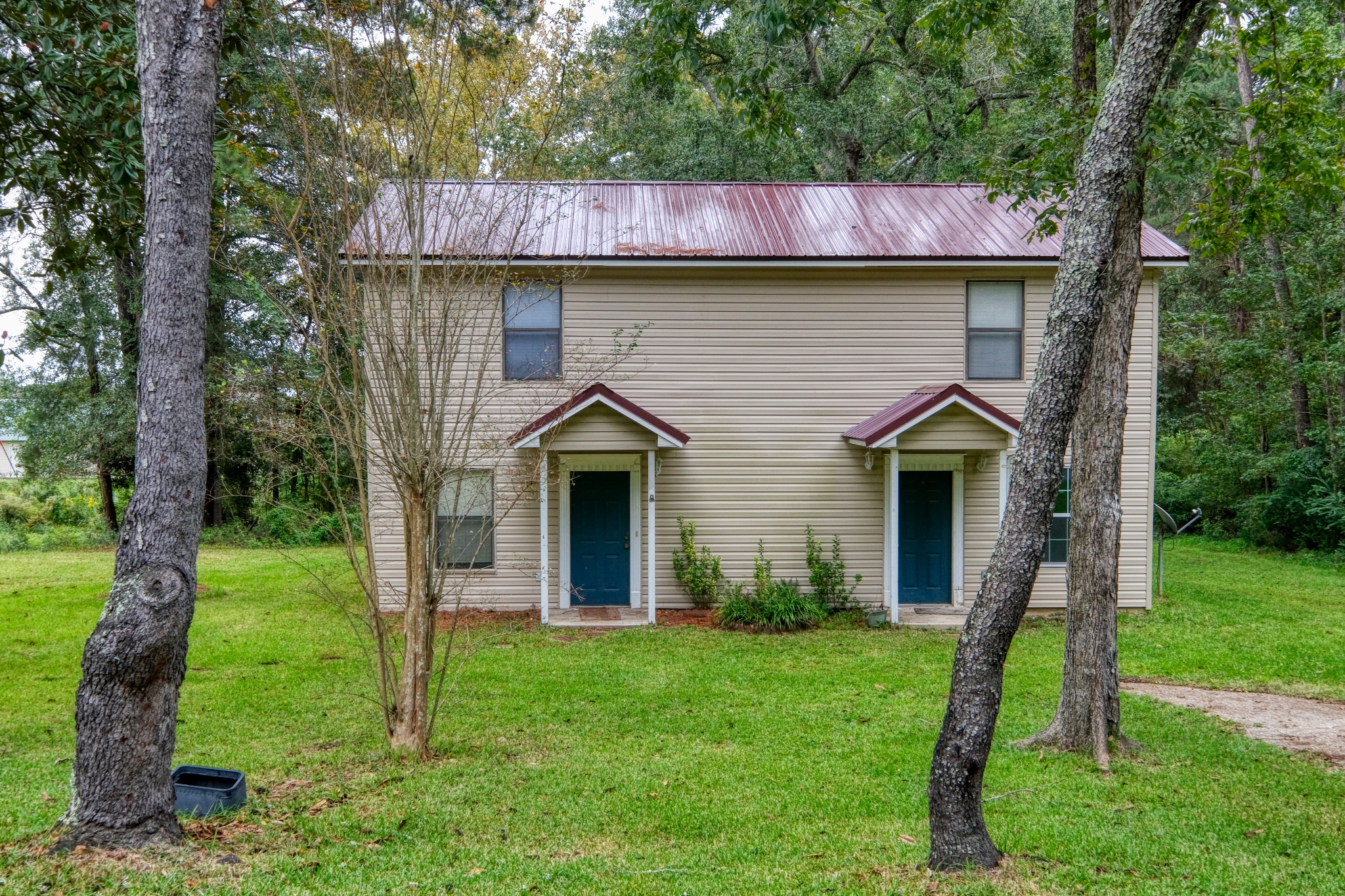
I lived in Leesville, Louisiana from 1958 to 1960, three years in all, from the age of 8, 9, and 10. The house I lived in is now gone, but I noticed this house and it fit my memory of the kind of house we live in . . . a two story wooden duplex.
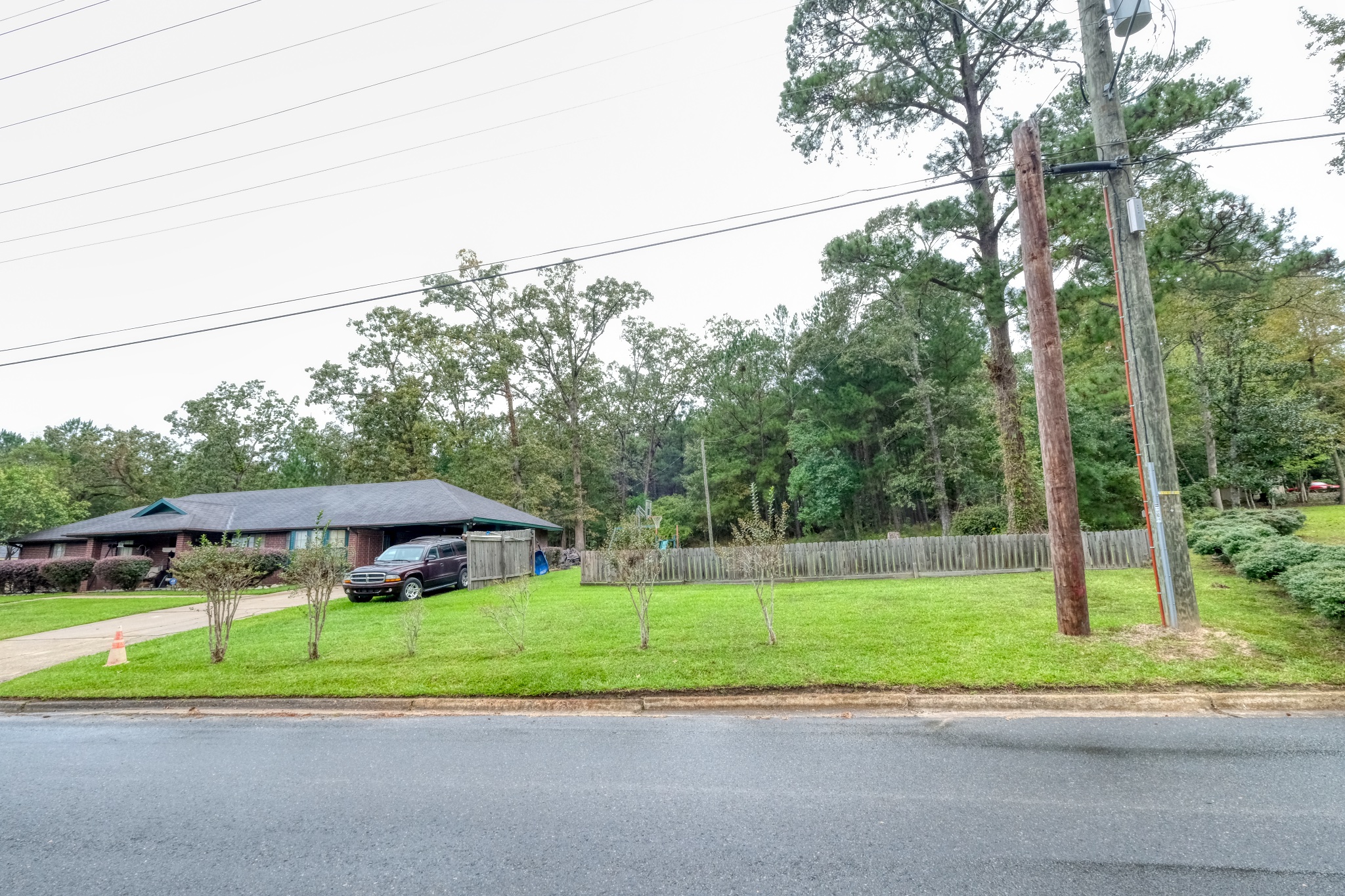 This house sits at the actual address of our old home - Vernon Terrace. It is now across the street from a modern hospital and medical offices. I played for hours and hours and had innumerable adventures in that forest behind this house. At that time the forest and wetlands within it went on for miles and miles and were teeming with snakes, wild boar, fish, salamanders, frogs, and bugs of all kinds. Yes, I was a little disappointed that our old house was not there any more. I was also disappointed that the area behind the houses were not accessible . . . I wanted to go back there and look around.
This house sits at the actual address of our old home - Vernon Terrace. It is now across the street from a modern hospital and medical offices. I played for hours and hours and had innumerable adventures in that forest behind this house. At that time the forest and wetlands within it went on for miles and miles and were teeming with snakes, wild boar, fish, salamanders, frogs, and bugs of all kinds. Yes, I was a little disappointed that our old house was not there any more. I was also disappointed that the area behind the houses were not accessible . . . I wanted to go back there and look around.
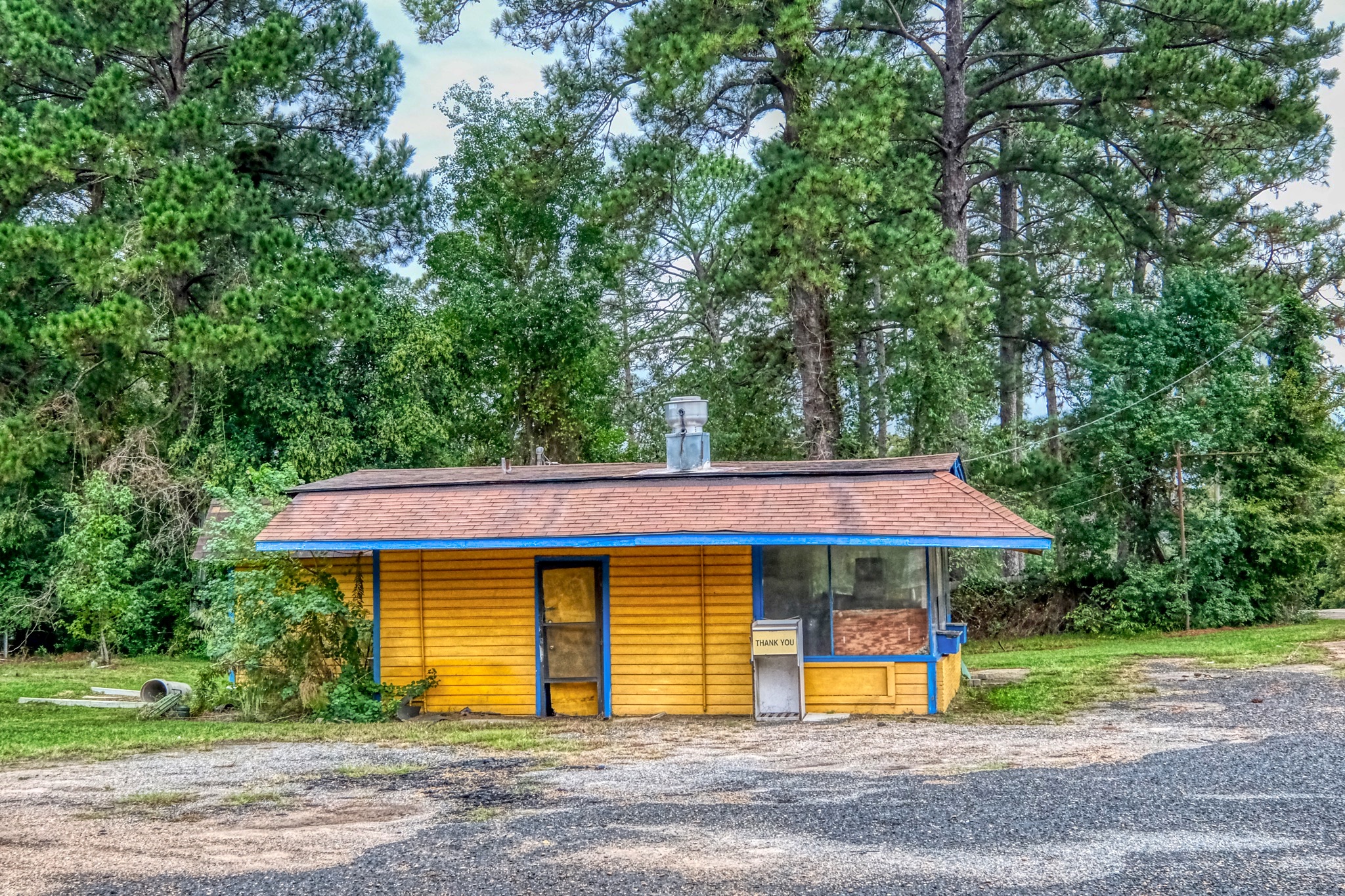 I had the family chore of riding my bicycle the 1/2 mile from our house to this very burger stand and fetch the family order . . . and ride like the wind to get the burgers and fries back home before they were cold. I remember these burgers as the best I have ever eaten. I am amazed it is still there . . . and that I remembered it.
I had the family chore of riding my bicycle the 1/2 mile from our house to this very burger stand and fetch the family order . . . and ride like the wind to get the burgers and fries back home before they were cold. I remember these burgers as the best I have ever eaten. I am amazed it is still there . . . and that I remembered it.
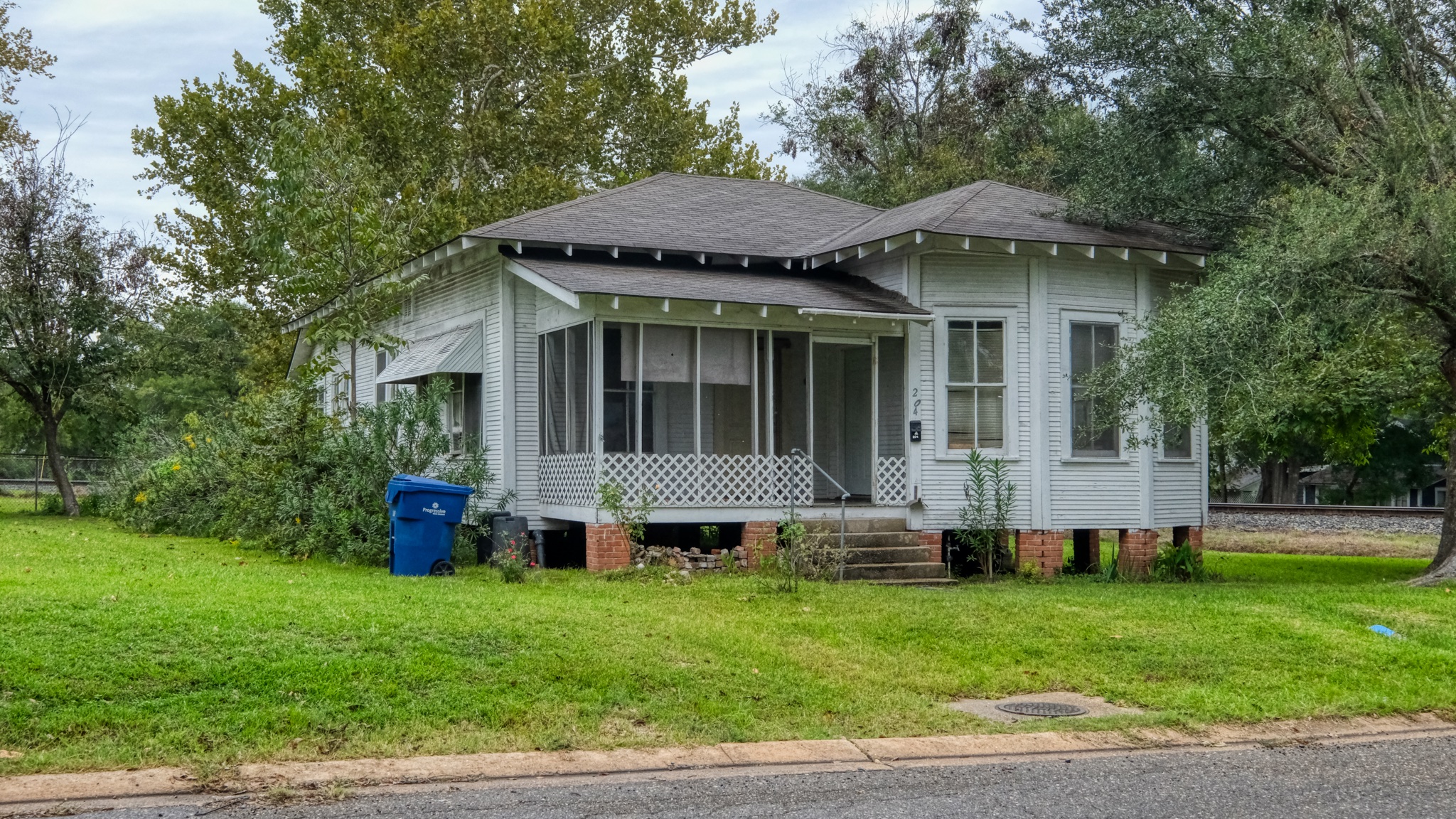 There are still houses around the old neighborhood that have survived from the older times.
There are still houses around the old neighborhood that have survived from the older times.
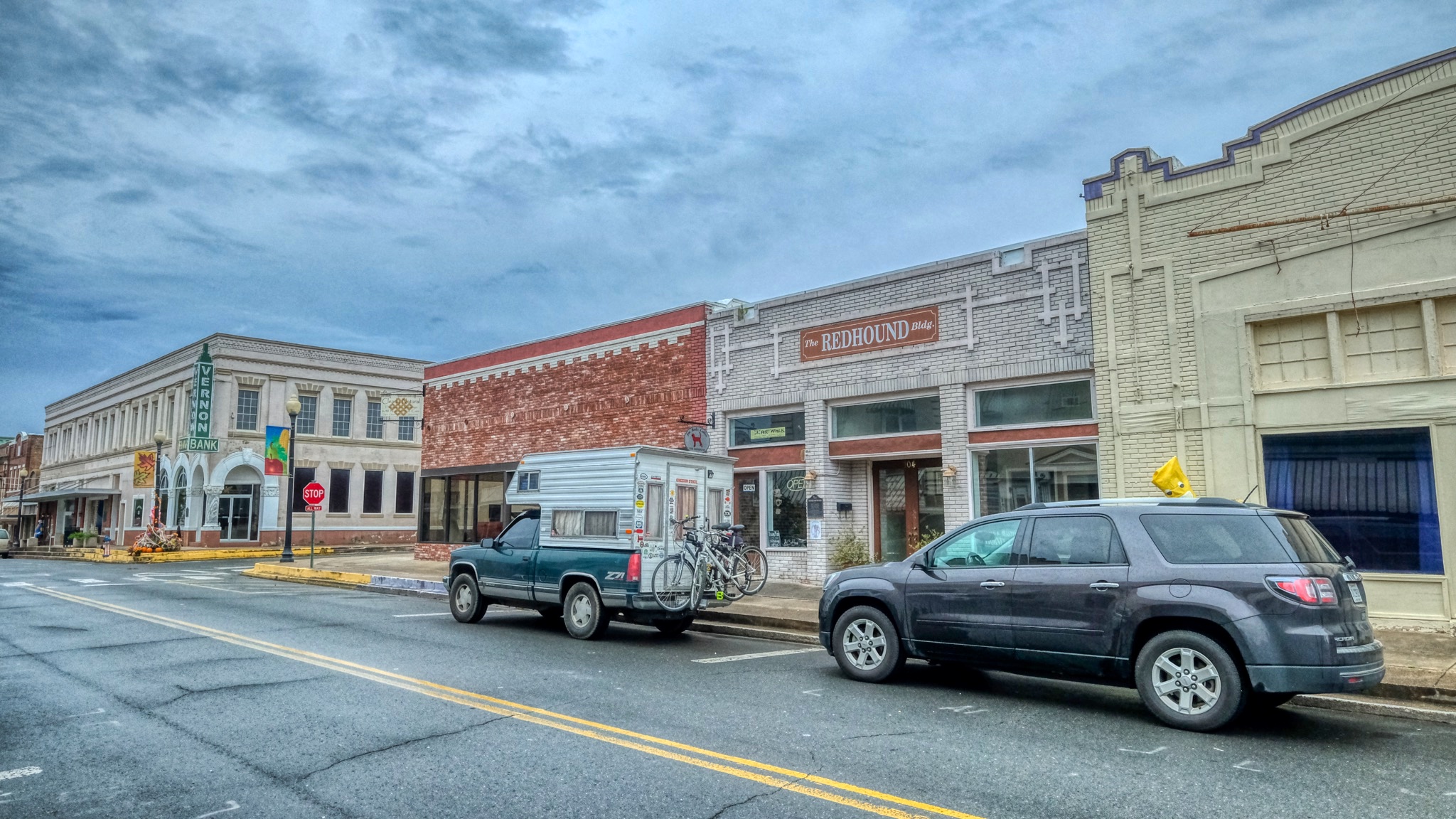 I was very curious about the downtown of my childhood memories. We used to ride our bicycles the 7-8 blocks to the movie house there for the double features. Downtown Leesville showed all the signs of the consequences of a Walmart somewhere on the road leading out of town. The businesses had mostly died a silent death, but it looked like the city fathers had, and might still be, fixing it us.
I was very curious about the downtown of my childhood memories. We used to ride our bicycles the 7-8 blocks to the movie house there for the double features. Downtown Leesville showed all the signs of the consequences of a Walmart somewhere on the road leading out of town. The businesses had mostly died a silent death, but it looked like the city fathers had, and might still be, fixing it us.
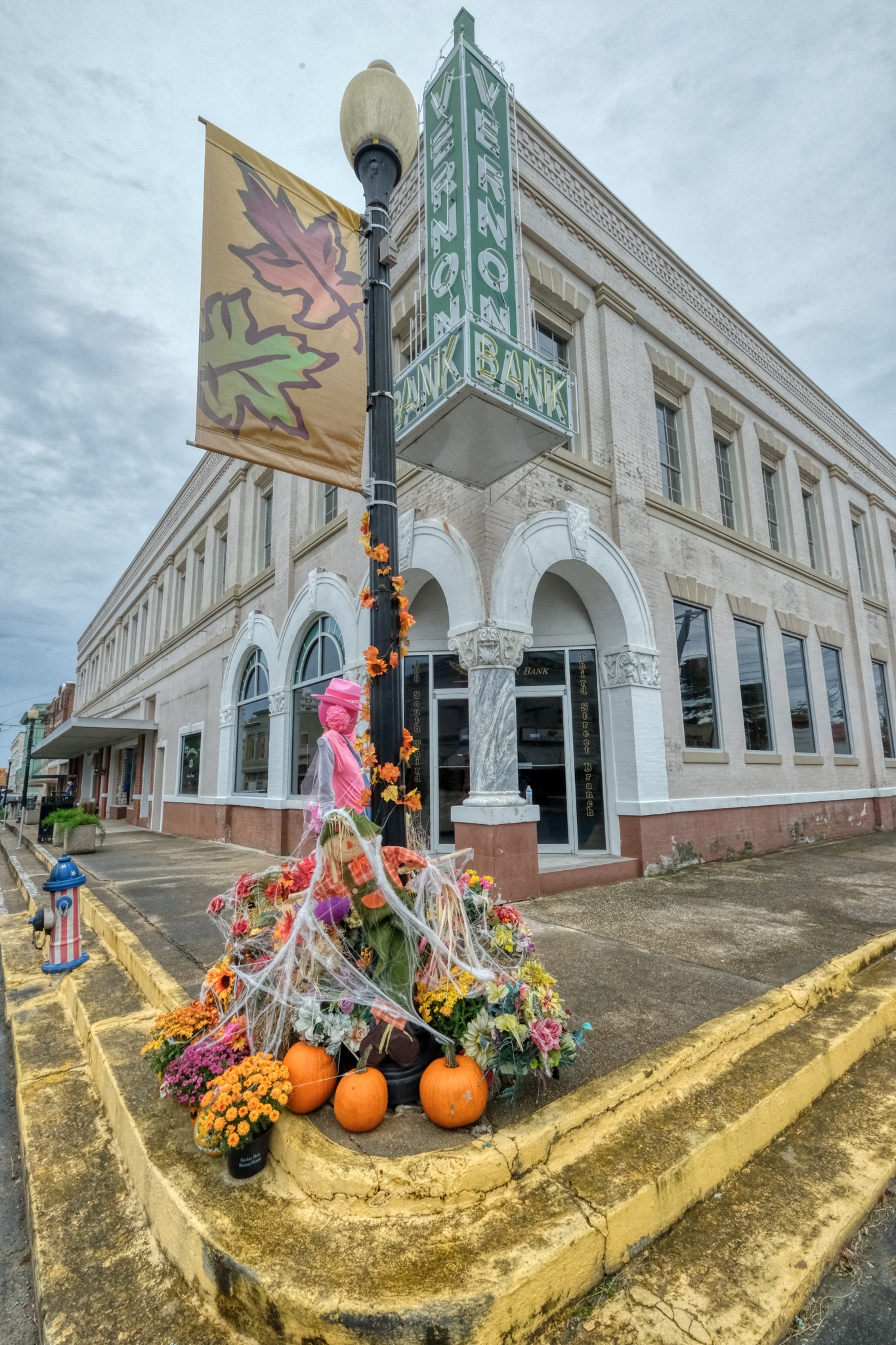 Halloween was only a week away . . . and I was racing to Delaware to trick-or-treat with my two grandchildren. These decorations reminded me of that. Everything here seems to be named 'Vernon', after the name of the Parish. All the fire hydrants in town are painted this red, white and blue.
Halloween was only a week away . . . and I was racing to Delaware to trick-or-treat with my two grandchildren. These decorations reminded me of that. Everything here seems to be named 'Vernon', after the name of the Parish. All the fire hydrants in town are painted this red, white and blue.
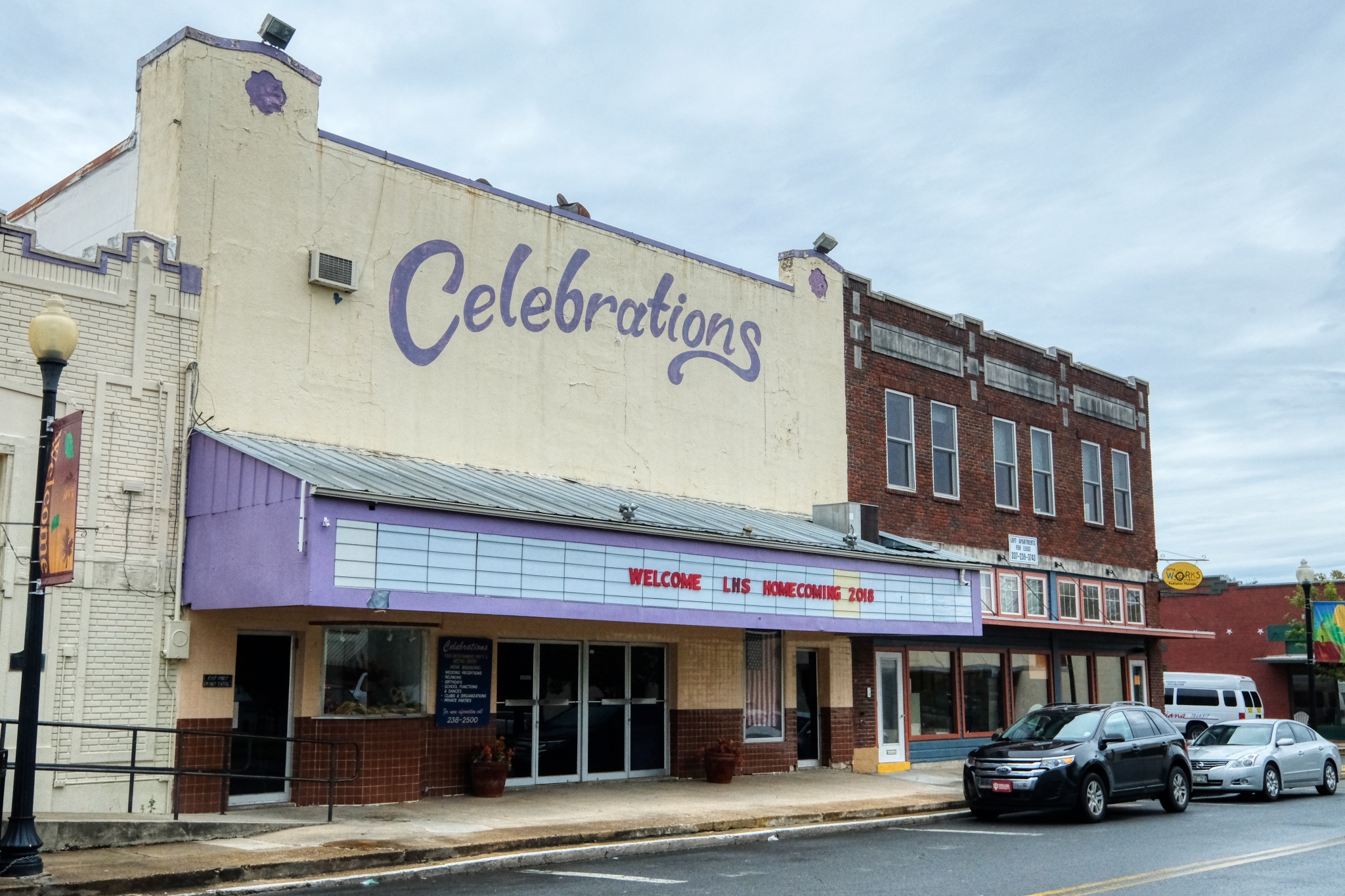 The old Dreamland Theatre is now an event venue. This is the movie house I remember so well as a child . . . watching cowboy movies, cartoons, and news reels. Also, I have a memory of the entire balcony collapsing during the middle of a movie . . . fortunately we were sitting up near the screen, and there weren't other people in the movie house at the time! Leesville High School had just held its Homecoming Dance there!
The old Dreamland Theatre is now an event venue. This is the movie house I remember so well as a child . . . watching cowboy movies, cartoons, and news reels. Also, I have a memory of the entire balcony collapsing during the middle of a movie . . . fortunately we were sitting up near the screen, and there weren't other people in the movie house at the time! Leesville High School had just held its Homecoming Dance there!
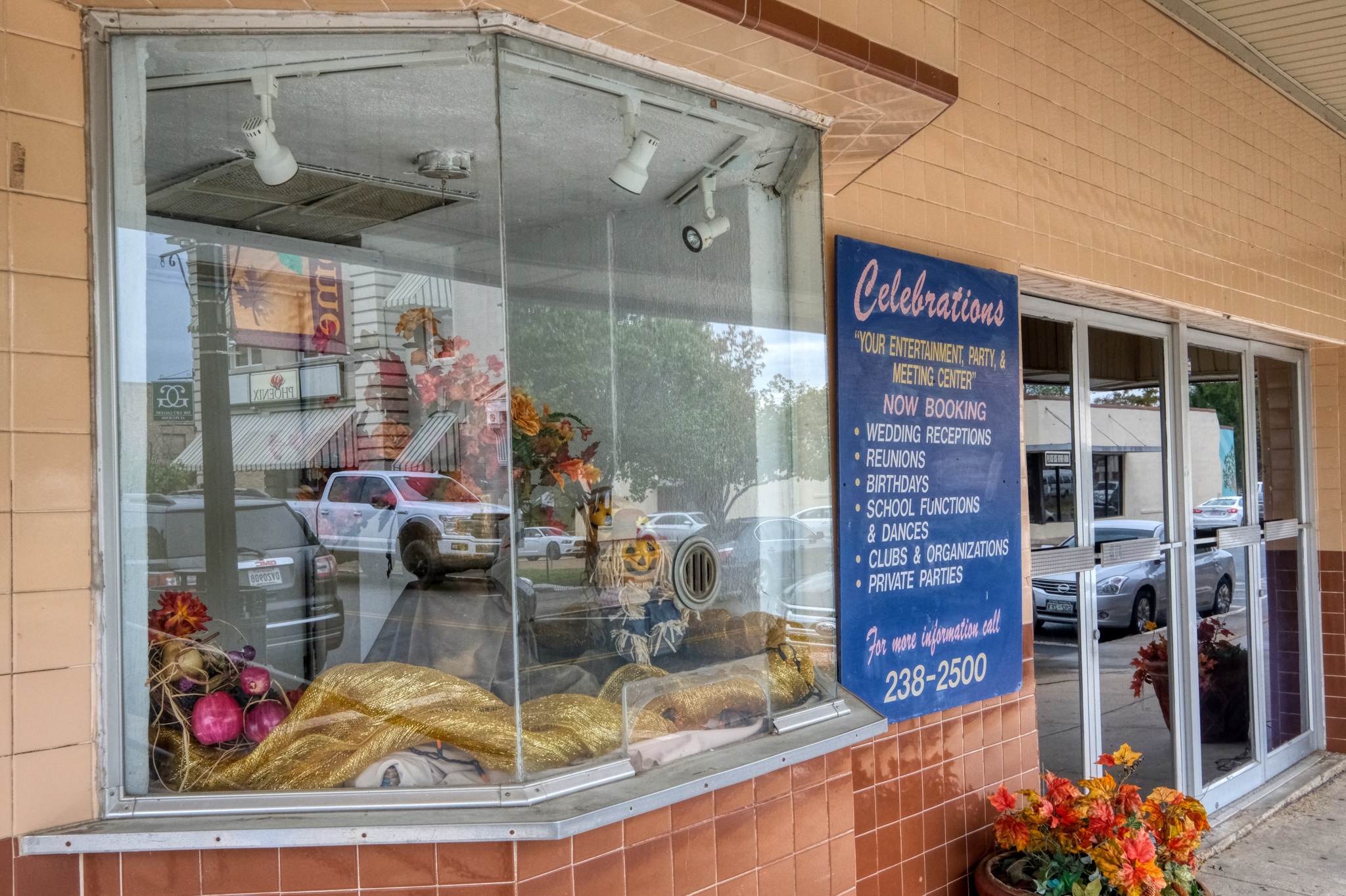 I distinctly remember this ticket booth . . . and buying my tickets with such eager anticipation. I also remember the Milk Duds and Necco Wafers I bought inside before the movies.
I distinctly remember this ticket booth . . . and buying my tickets with such eager anticipation. I also remember the Milk Duds and Necco Wafers I bought inside before the movies.
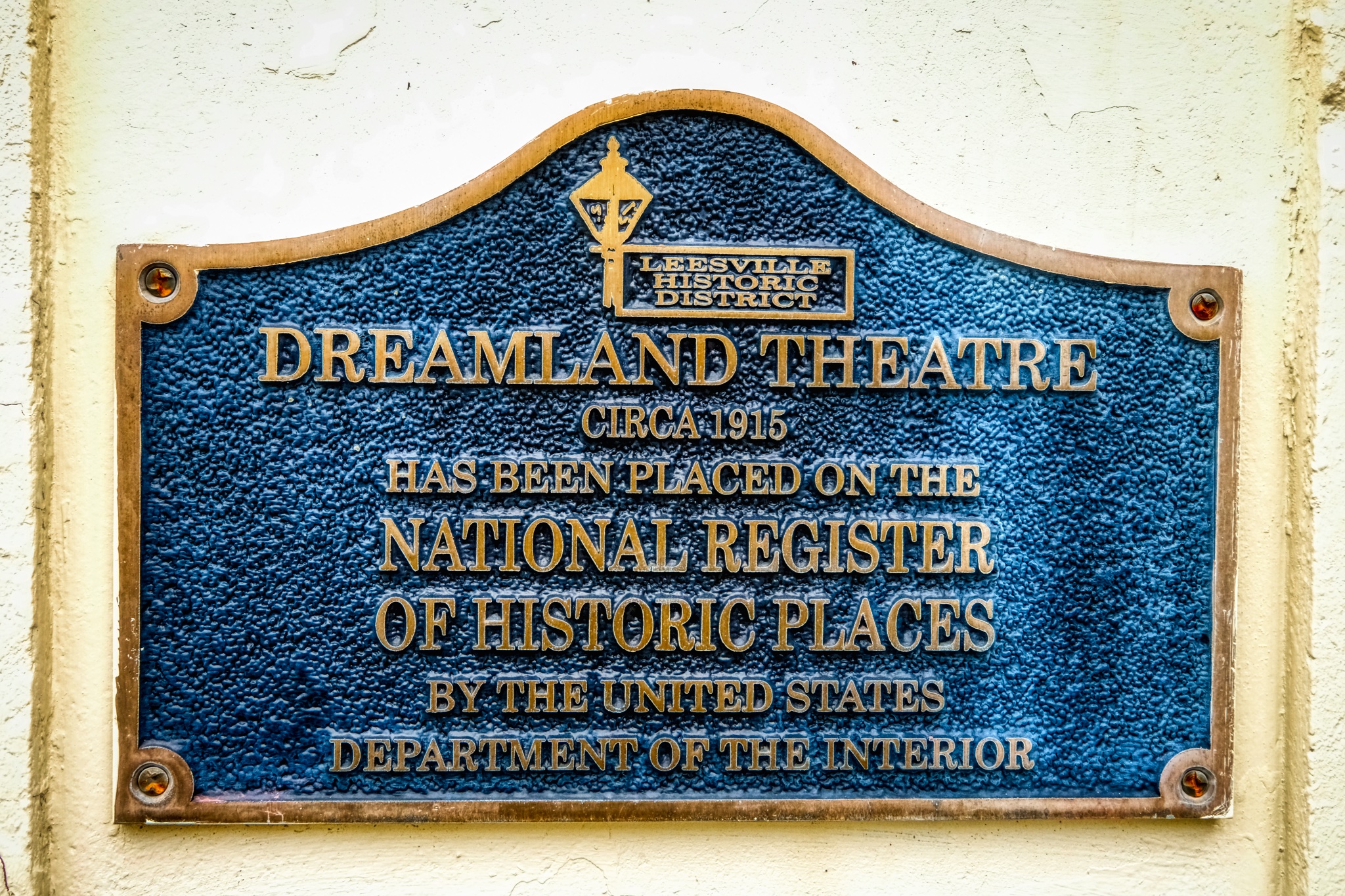 It's nice to see that someone other than me remembers this wonderful small town movie theatre. There is (was?) a large military base nearby, Fort Polk, where my father was stationed while we lived there. There were always a few soldiers sitting alone in the dark theatre, quietly sobbing. Homesick.
It's nice to see that someone other than me remembers this wonderful small town movie theatre. There is (was?) a large military base nearby, Fort Polk, where my father was stationed while we lived there. There were always a few soldiers sitting alone in the dark theatre, quietly sobbing. Homesick.
 There is a charm to these old 'dead' small town commercial districts that have been brought back to life.
There is a charm to these old 'dead' small town commercial districts that have been brought back to life.
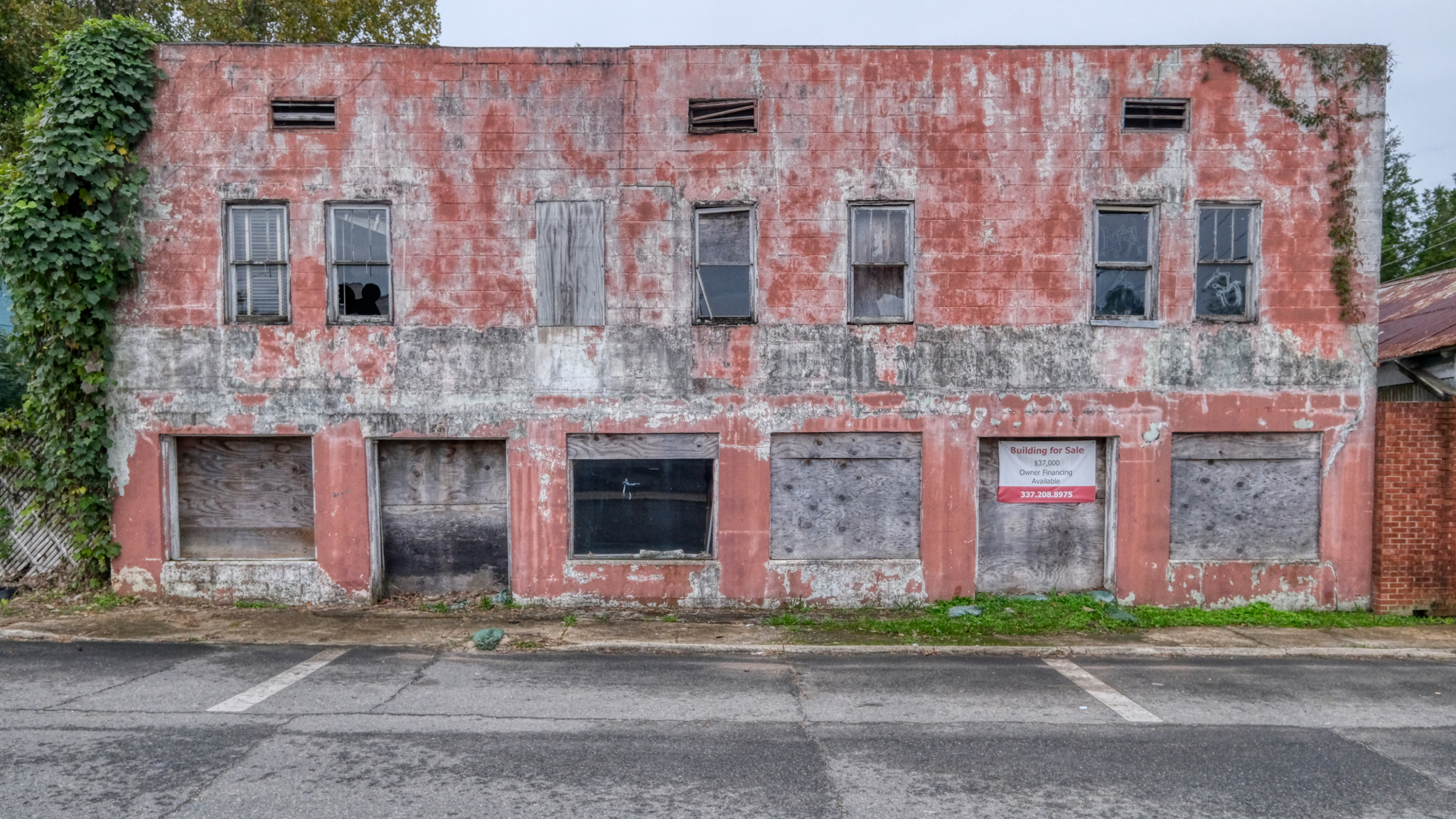 The task of bring the Leesville Historic District back to life is not complete. This building has an asking price of US$37,000.
The task of bring the Leesville Historic District back to life is not complete. This building has an asking price of US$37,000.
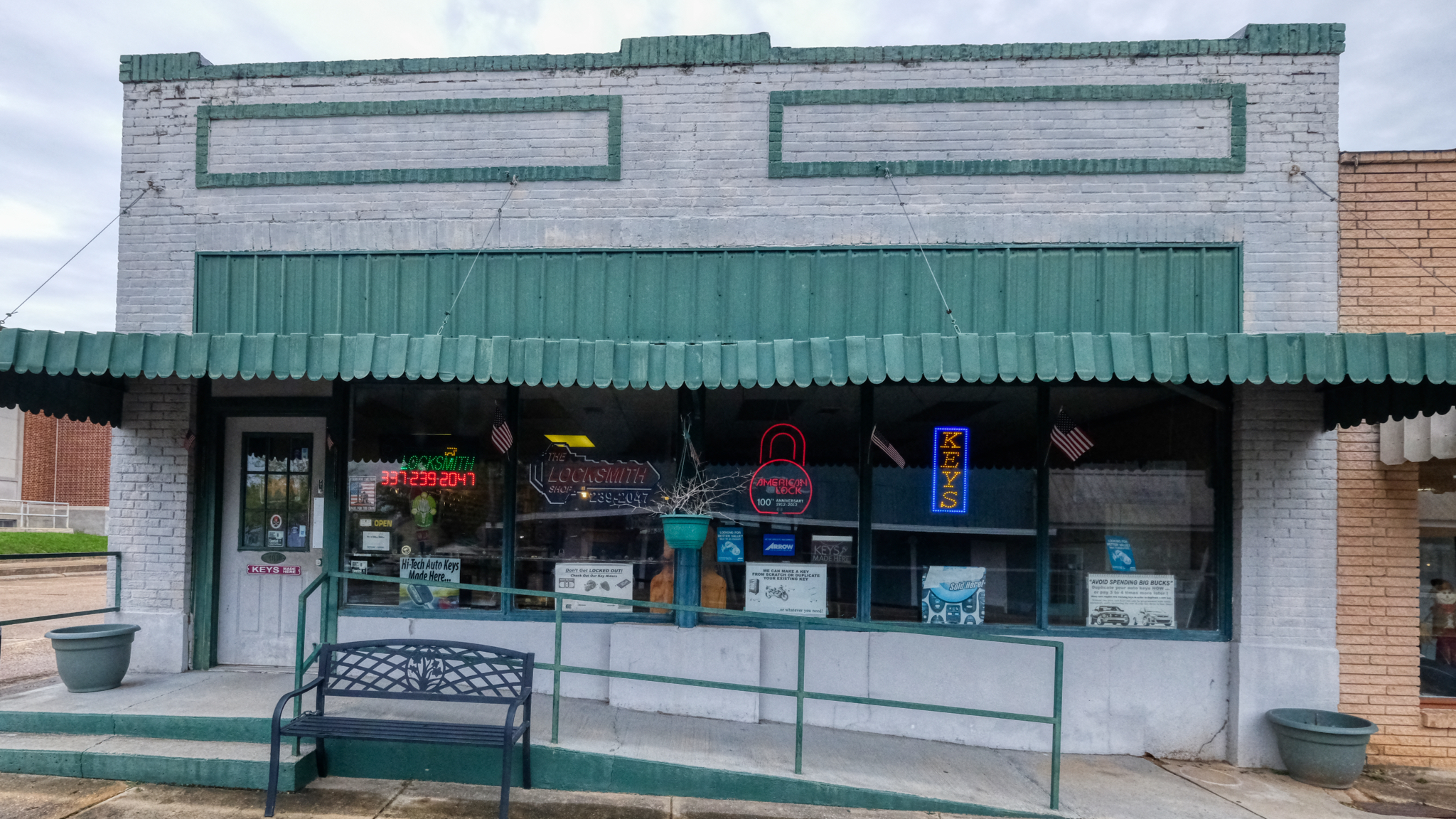 There is very little real business going on in downtown Leesville. Still, this key shop caught my eye. I went in.
There is very little real business going on in downtown Leesville. Still, this key shop caught my eye. I went in.
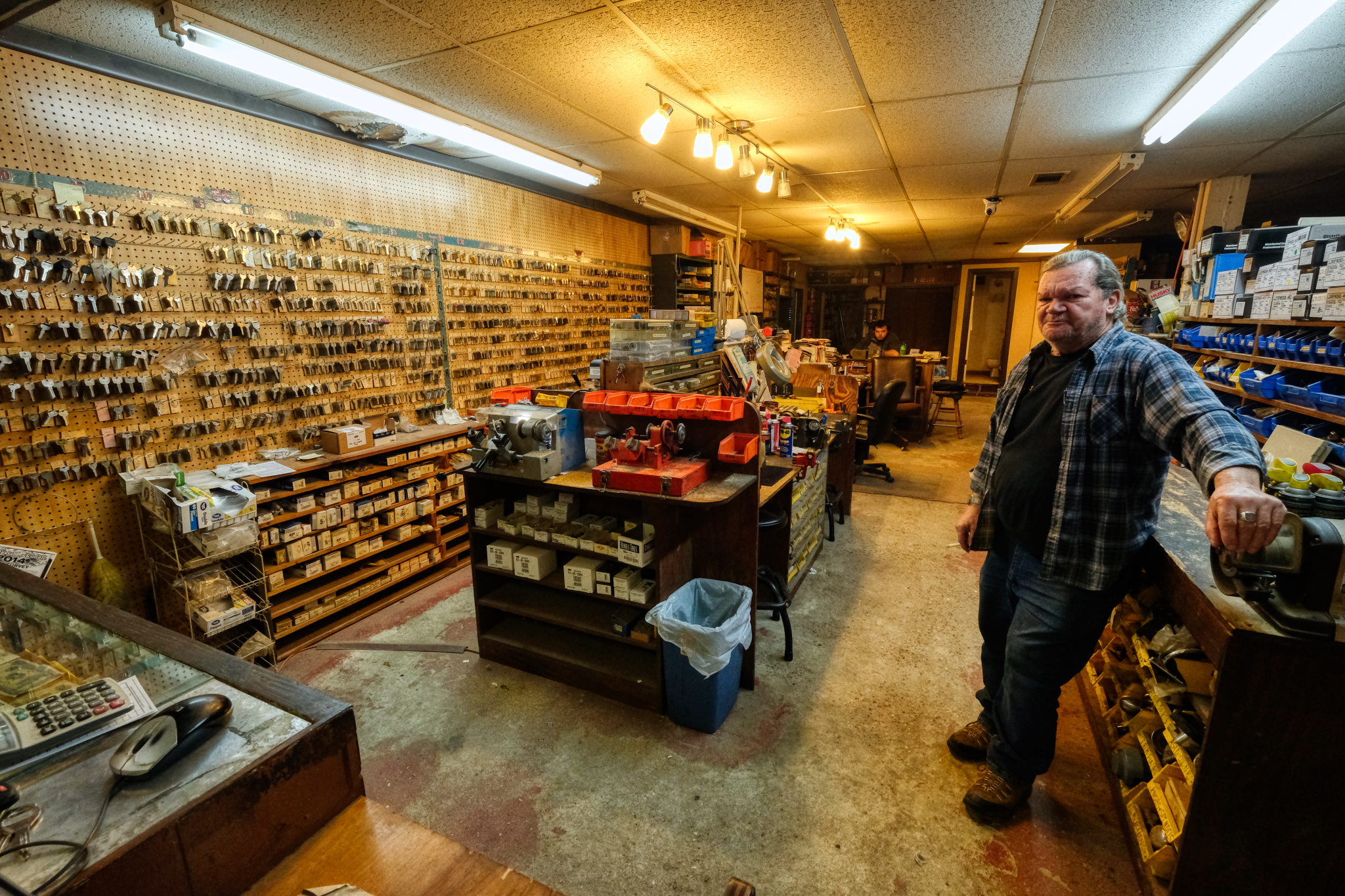 This man, and his son, have been running this key shop. for 36 years, since they bought it from the old man who had it for 55 years. Yes, this shop would have been here when I was 9 years old . . . more or less exactly as it looks now.
This man, and his son, have been running this key shop. for 36 years, since they bought it from the old man who had it for 55 years. Yes, this shop would have been here when I was 9 years old . . . more or less exactly as it looks now.
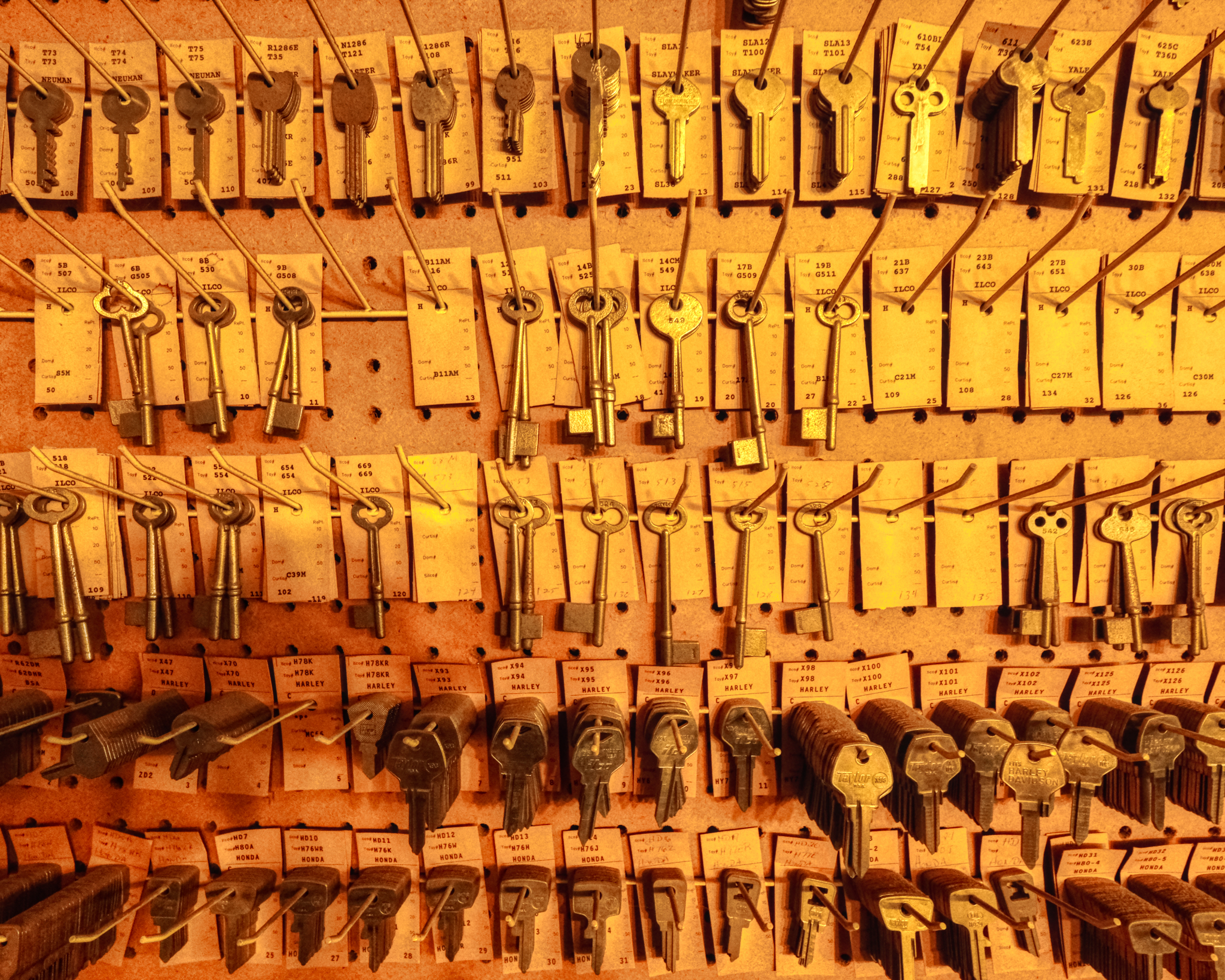 These keys gave me an idea of what kinds of doors are in the area . . . still some old skeleton key doors.
These keys gave me an idea of what kinds of doors are in the area . . . still some old skeleton key doors.
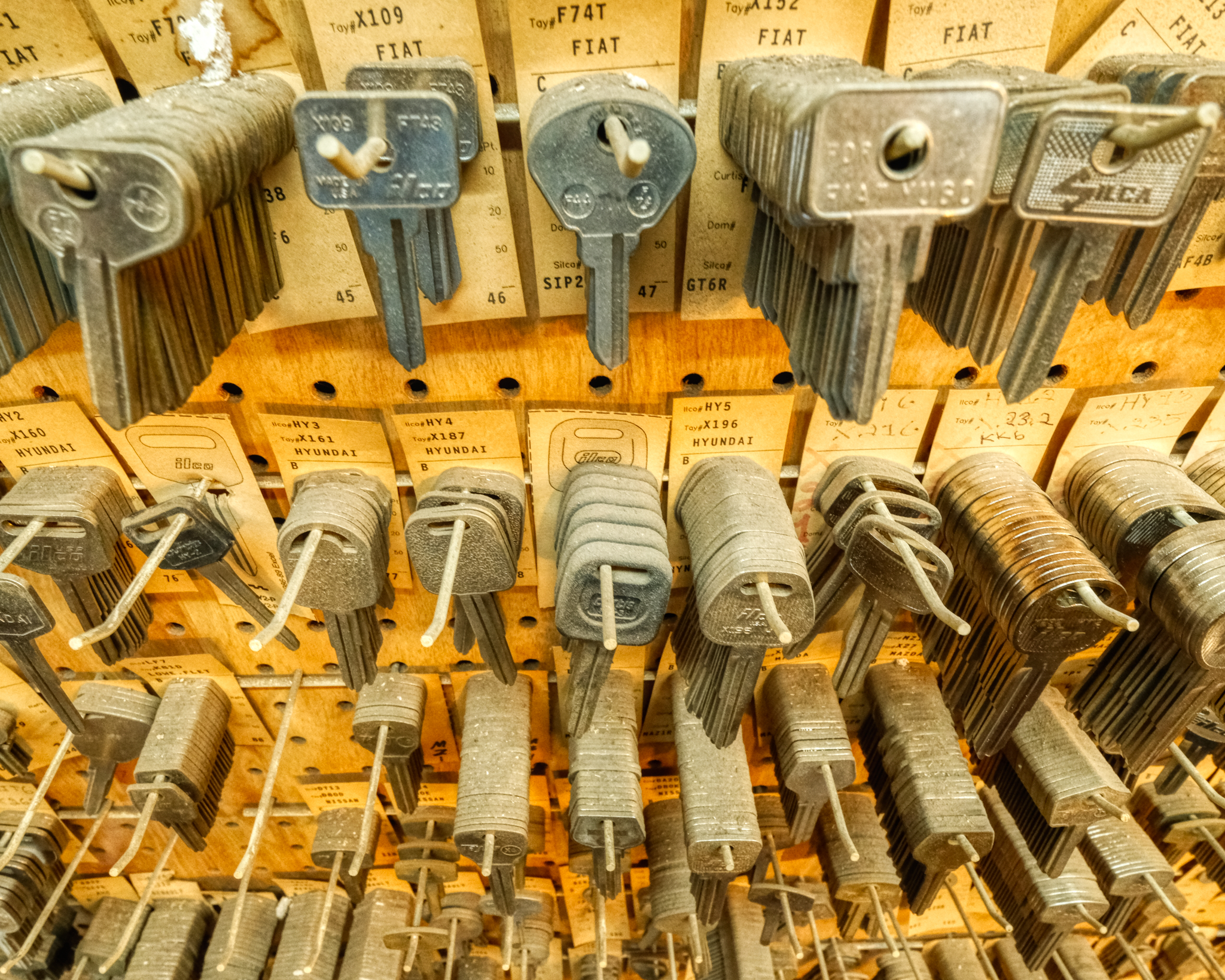 Assuming Hundai changes their car key masters every few years, there were either very few Hundai's sold in Leesville, or the local Hundai owners were very responsible. Dusty Keys . . . potential income locked up in blanks.
Assuming Hundai changes their car key masters every few years, there were either very few Hundai's sold in Leesville, or the local Hundai owners were very responsible. Dusty Keys . . . potential income locked up in blanks.
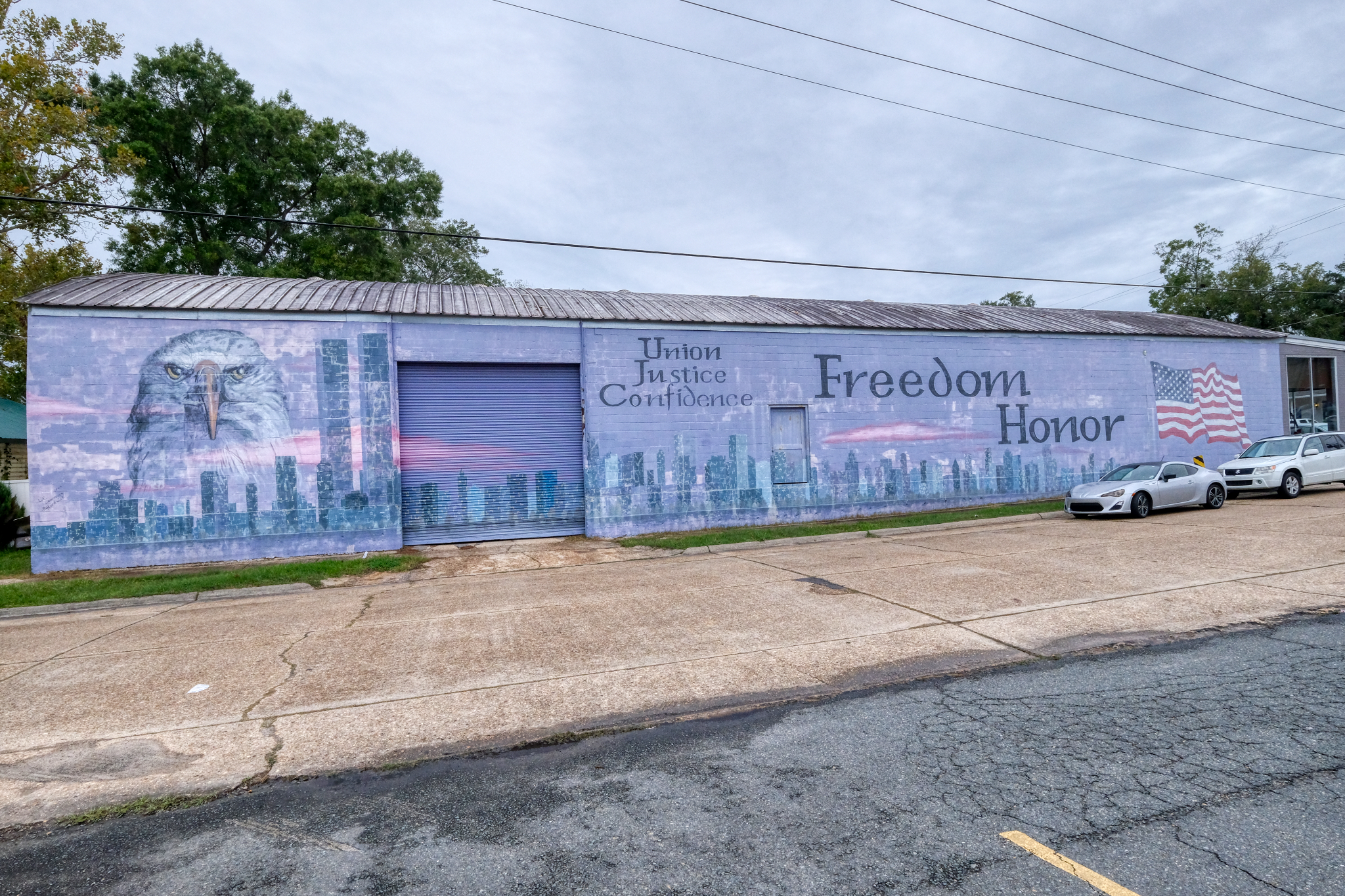 This mural of the New York City skyline with the World Trade Towers intact really caught my eye. Leesville is in the deepest of the Deep South, so one would not expect to find anything about New York City, but the impact of the 911 bombings had a profound effect on Americans everywhere. The sense of having our country 'invaded' meant something in small town Louisiana.
This mural of the New York City skyline with the World Trade Towers intact really caught my eye. Leesville is in the deepest of the Deep South, so one would not expect to find anything about New York City, but the impact of the 911 bombings had a profound effect on Americans everywhere. The sense of having our country 'invaded' meant something in small town Louisiana.
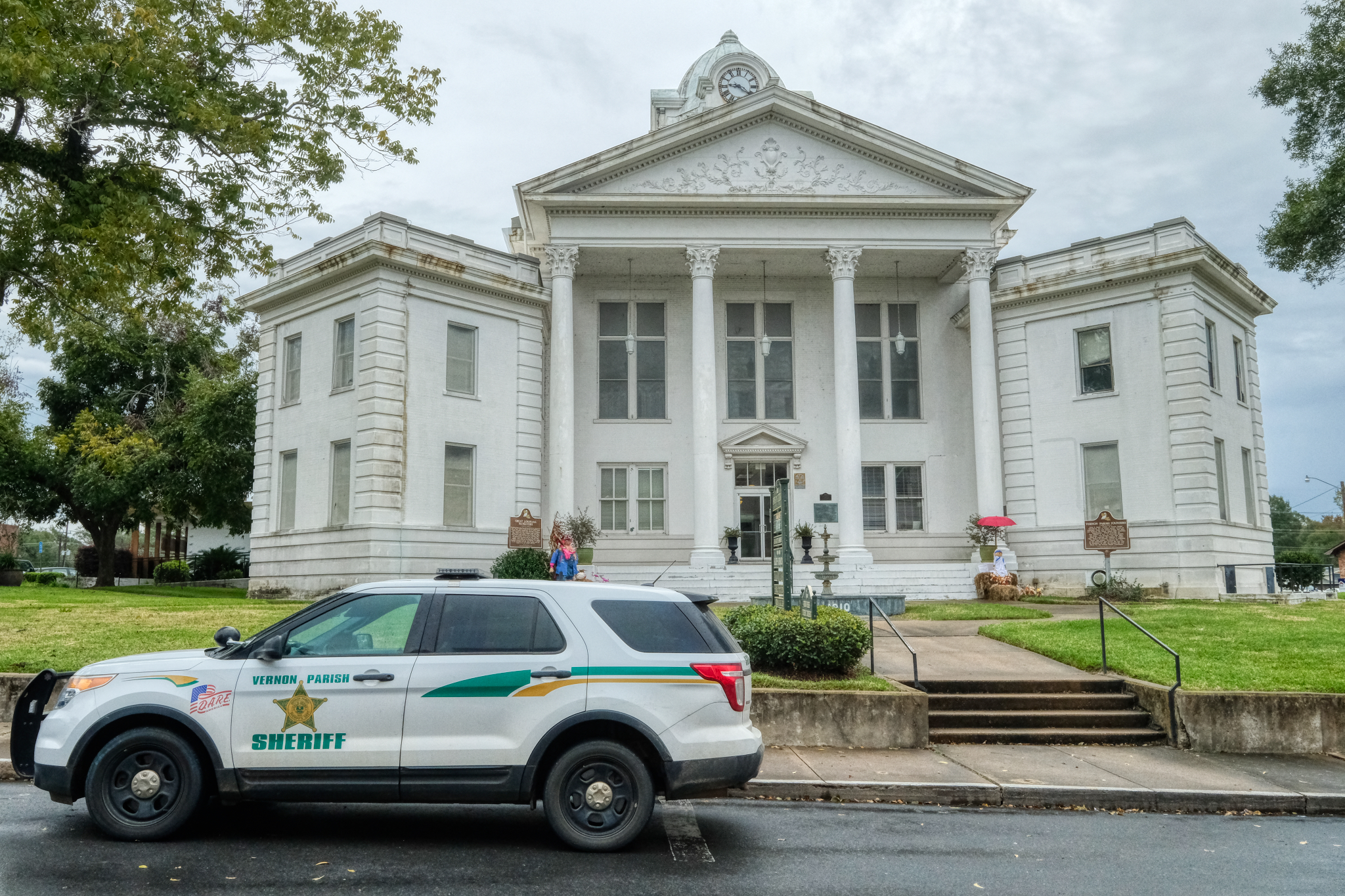 The old Vernon Parish Courthouse . . . decorated for Halloween.
The old Vernon Parish Courthouse . . . decorated for Halloween.
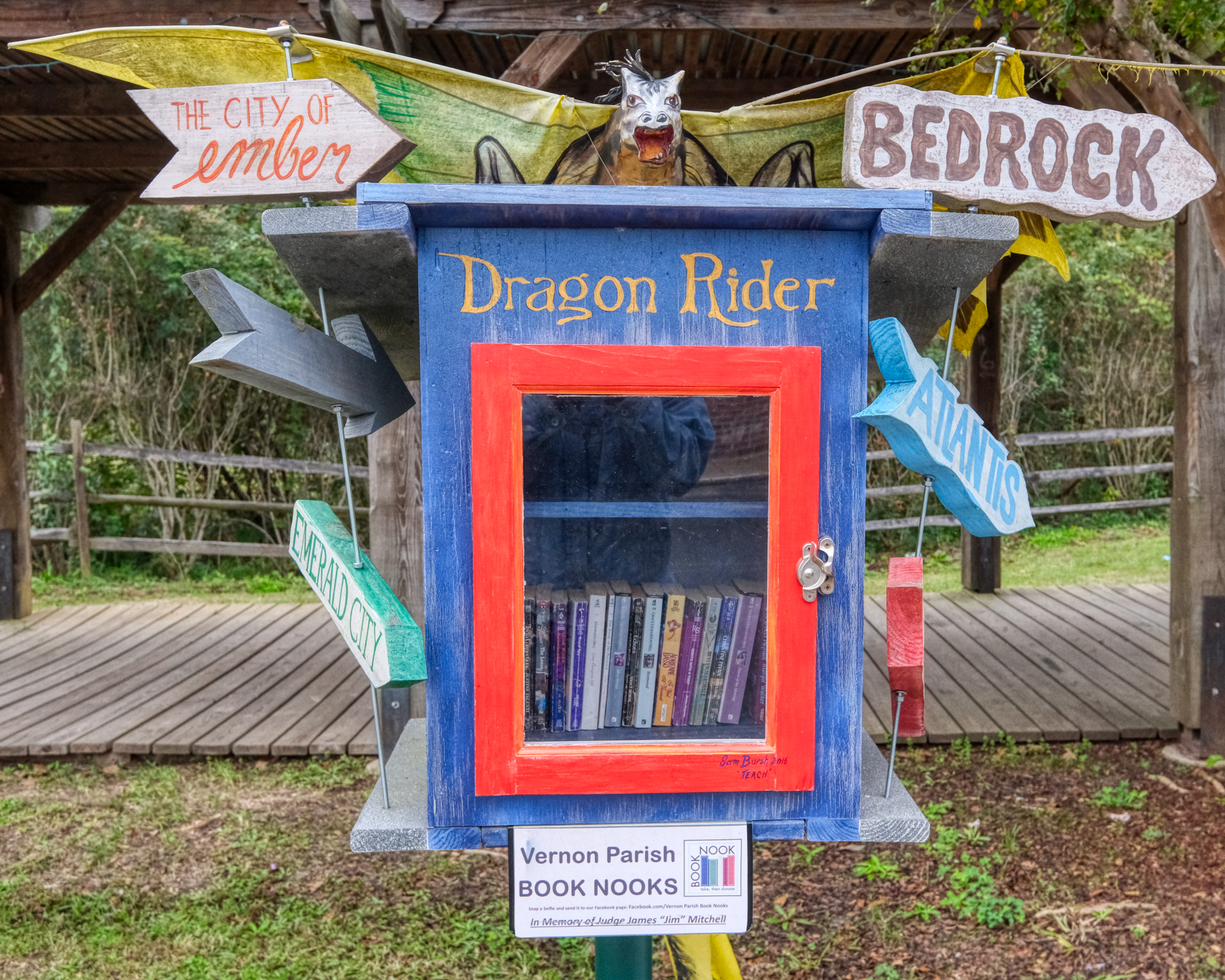 A public 'book nook' in old Leesville.
A public 'book nook' in old Leesville.
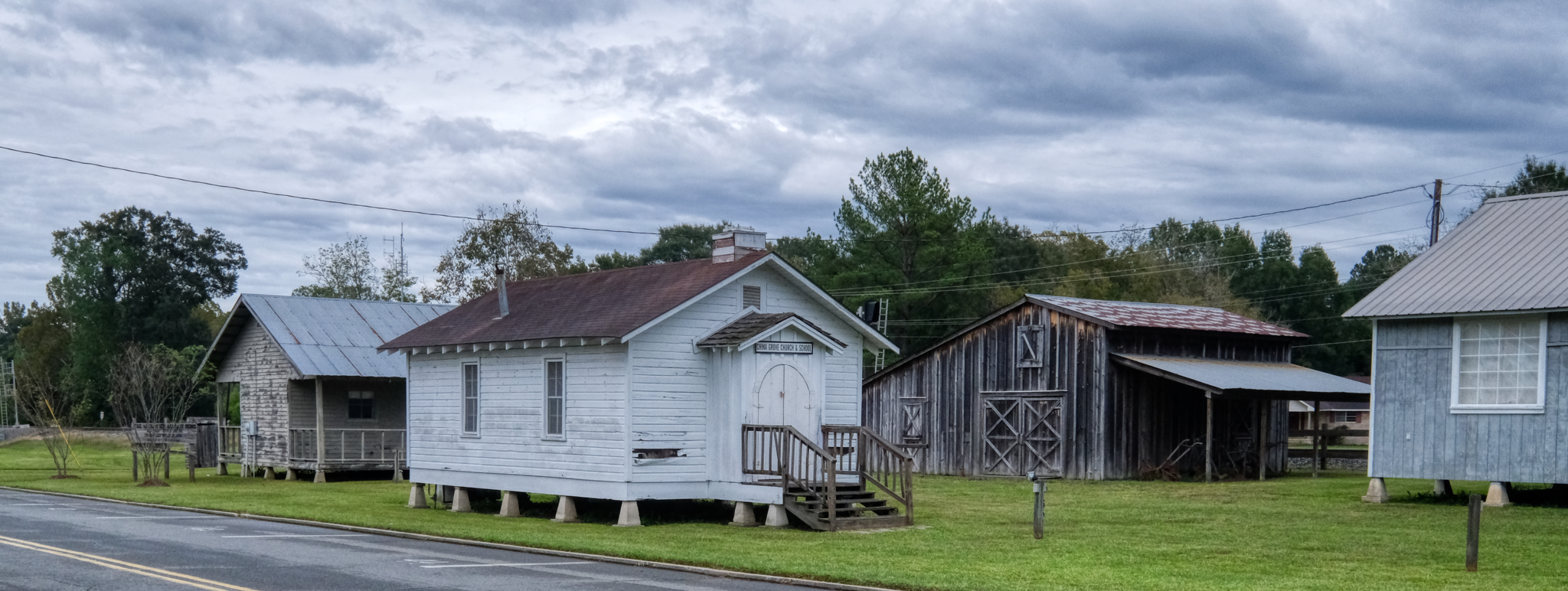 A walk up 3rd Street, the old 'main drag', brought us to the Museum of West Louisiana. In addition to these old historical buildings that had been reassembled on their grounds, there was also a restored historic train station.
A walk up 3rd Street, the old 'main drag', brought us to the Museum of West Louisiana. In addition to these old historical buildings that had been reassembled on their grounds, there was also a restored historic train station.
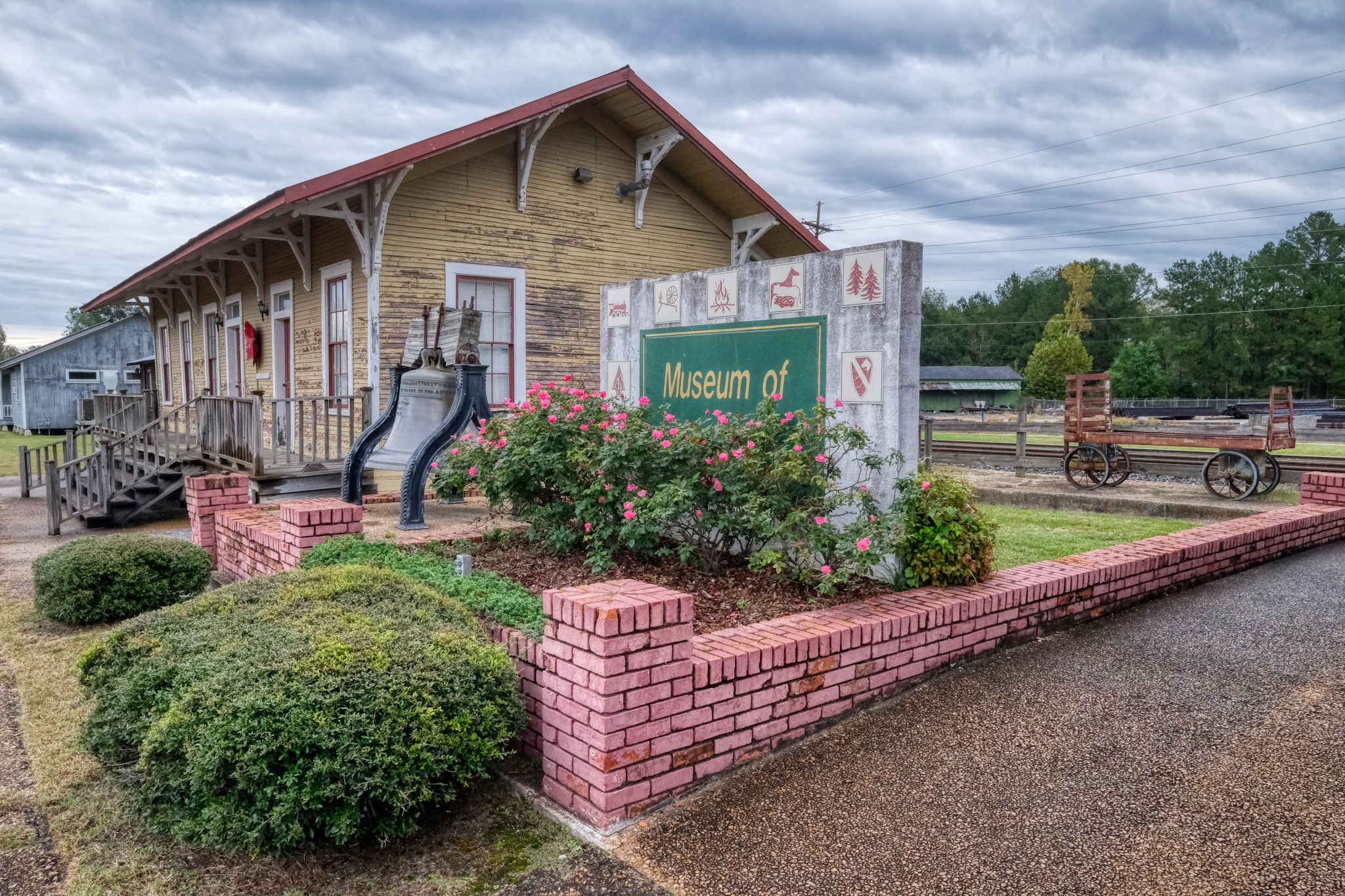 The old rail station, now the Museum of West Louisiana. A lot of young soldiers passed through here on their way to and from Fort Polk . . . especially during the Vietnam War era. "In 1962, Fort Polk began converting to an advanced infantry training (AIT) center. A small portion of Fort Polk is filled with dense, jungle-like vegetation, so this, along with Louisiana's heat, humidity and precipitation (similar to Southeast Asia) helped commanders acclimatize new infantry soldiers in preparation for combat in Vietnam. This training area became known as Tigerland. For the next 12 years, more soldiers were shipped to Vietnam from Fort Polk than from any other American training base. For many, Fort Polk was the only stateside Army post they saw before assignment overseas." (Wikipedia, Fort Polk). And a lot of those young soldiers never came back from Vietnam . . . the rail station is full of their ghosts.
The old rail station, now the Museum of West Louisiana. A lot of young soldiers passed through here on their way to and from Fort Polk . . . especially during the Vietnam War era. "In 1962, Fort Polk began converting to an advanced infantry training (AIT) center. A small portion of Fort Polk is filled with dense, jungle-like vegetation, so this, along with Louisiana's heat, humidity and precipitation (similar to Southeast Asia) helped commanders acclimatize new infantry soldiers in preparation for combat in Vietnam. This training area became known as Tigerland. For the next 12 years, more soldiers were shipped to Vietnam from Fort Polk than from any other American training base. For many, Fort Polk was the only stateside Army post they saw before assignment overseas." (Wikipedia, Fort Polk). And a lot of those young soldiers never came back from Vietnam . . . the rail station is full of their ghosts.
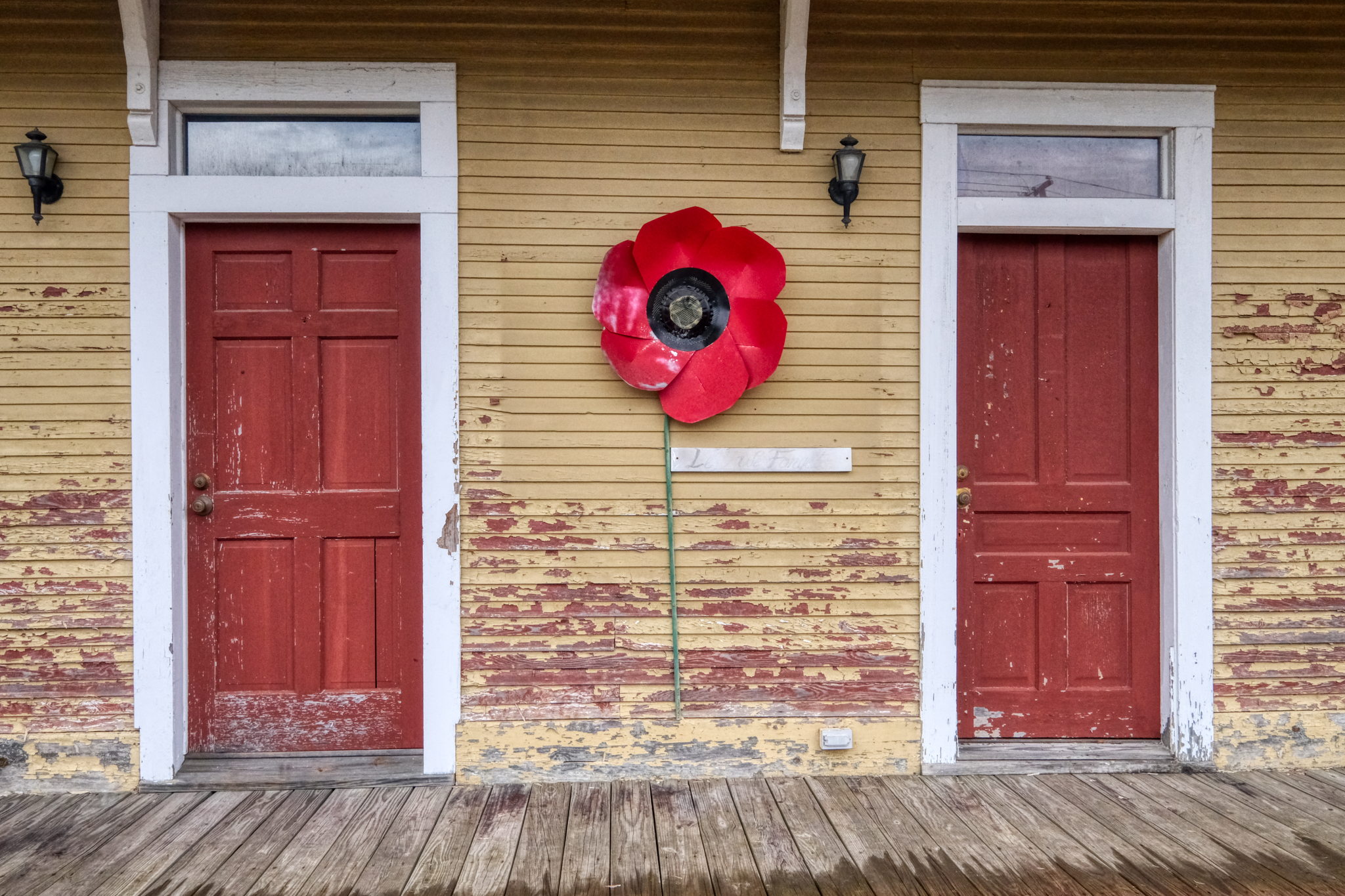
The rail station doors. Imagine the emotional send-offs from this platform. The station was closed in 1968 when regular passenger service ended.
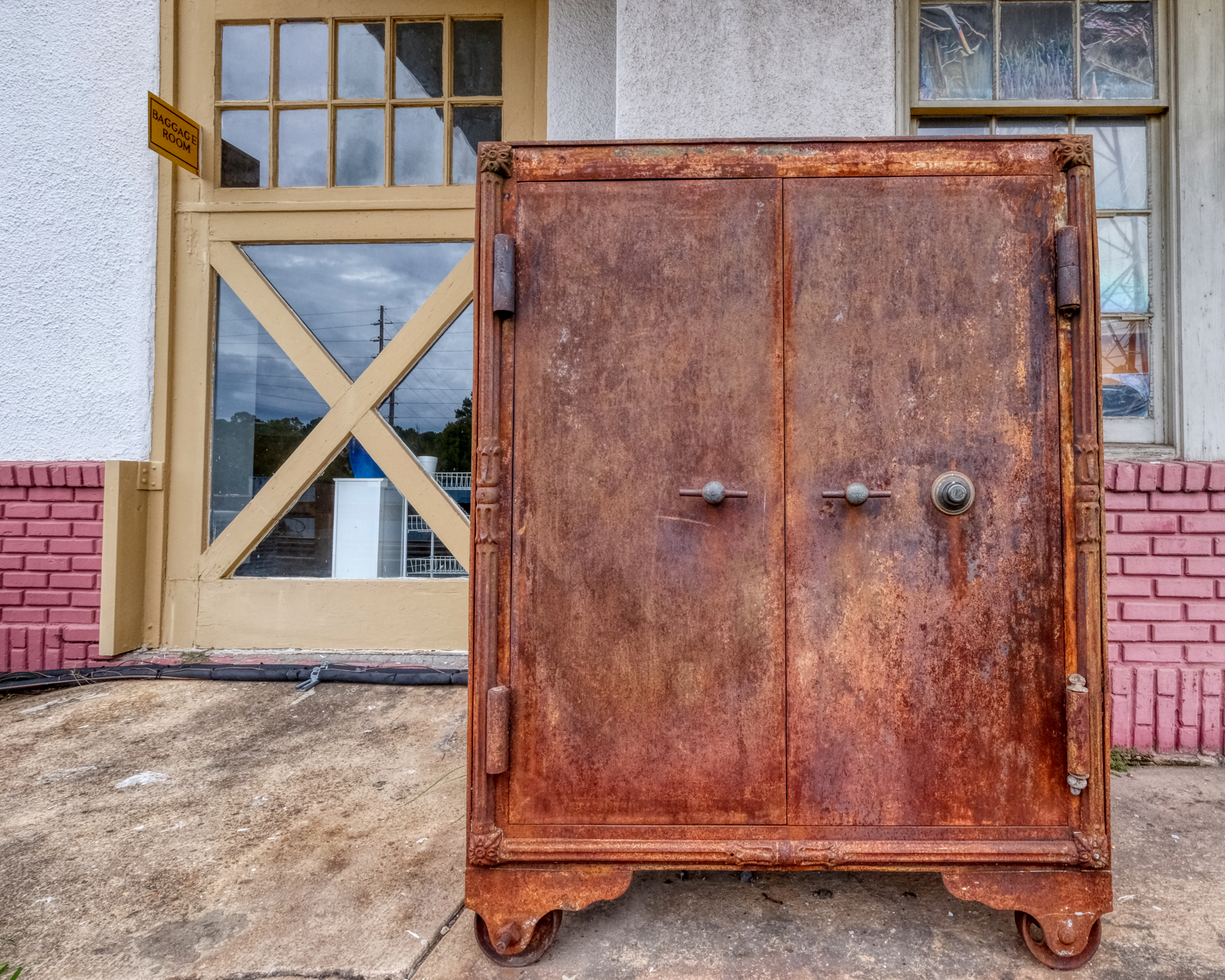 I assumed this to be the old station safe sitting outside rusting away.
I assumed this to be the old station safe sitting outside rusting away.
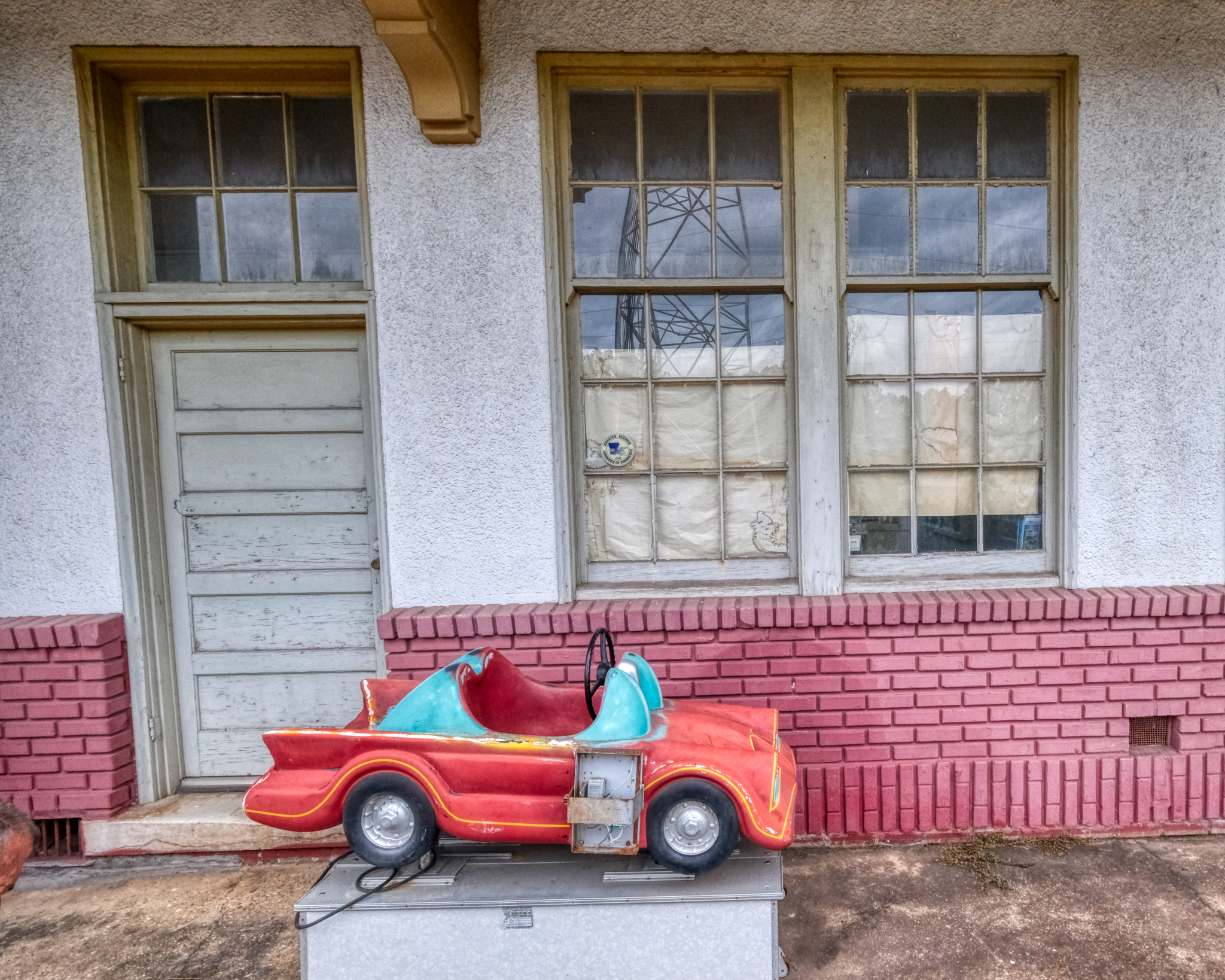 This coin operated kiddie car still sits outside the rail station waiting room. This relic is actually too new to have been there when I was a kid in Vernon Parish.
This coin operated kiddie car still sits outside the rail station waiting room. This relic is actually too new to have been there when I was a kid in Vernon Parish.
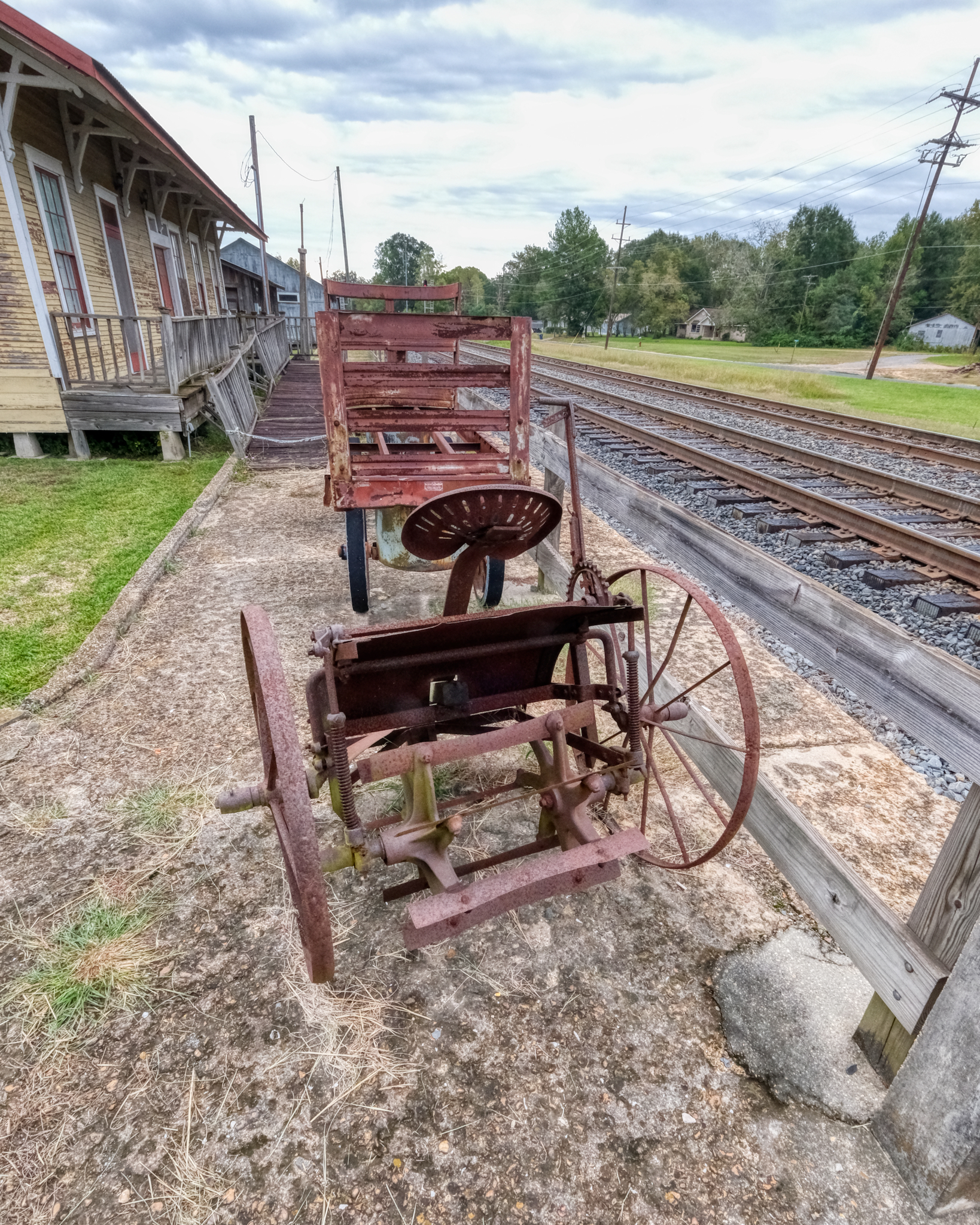 The Museum of West Louisiana placed a few old farm implements around the rail station. This old horse drawn tiller was fascinating.
The Museum of West Louisiana placed a few old farm implements around the rail station. This old horse drawn tiller was fascinating.
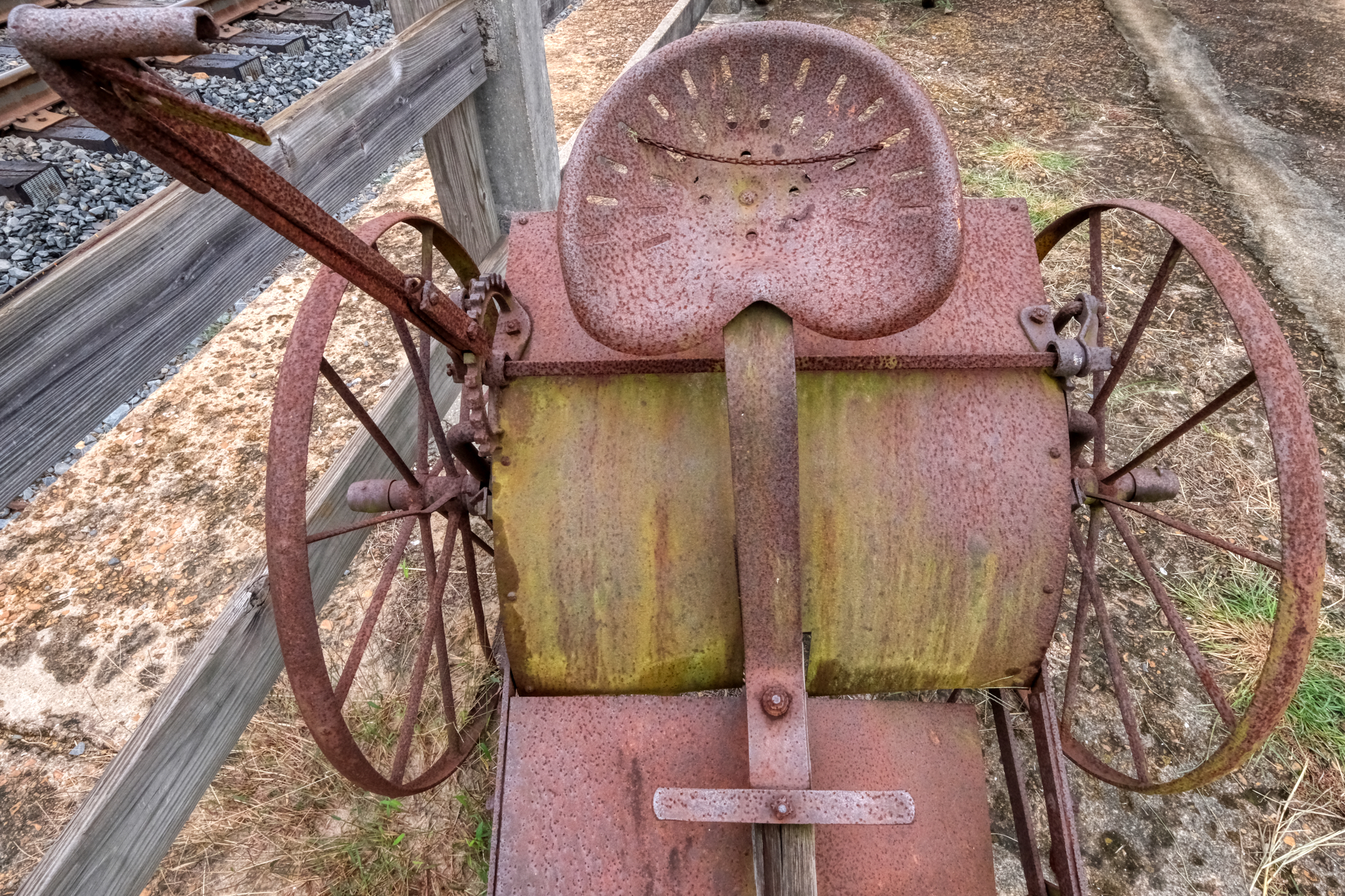 Old tiller seat.
Old tiller seat.
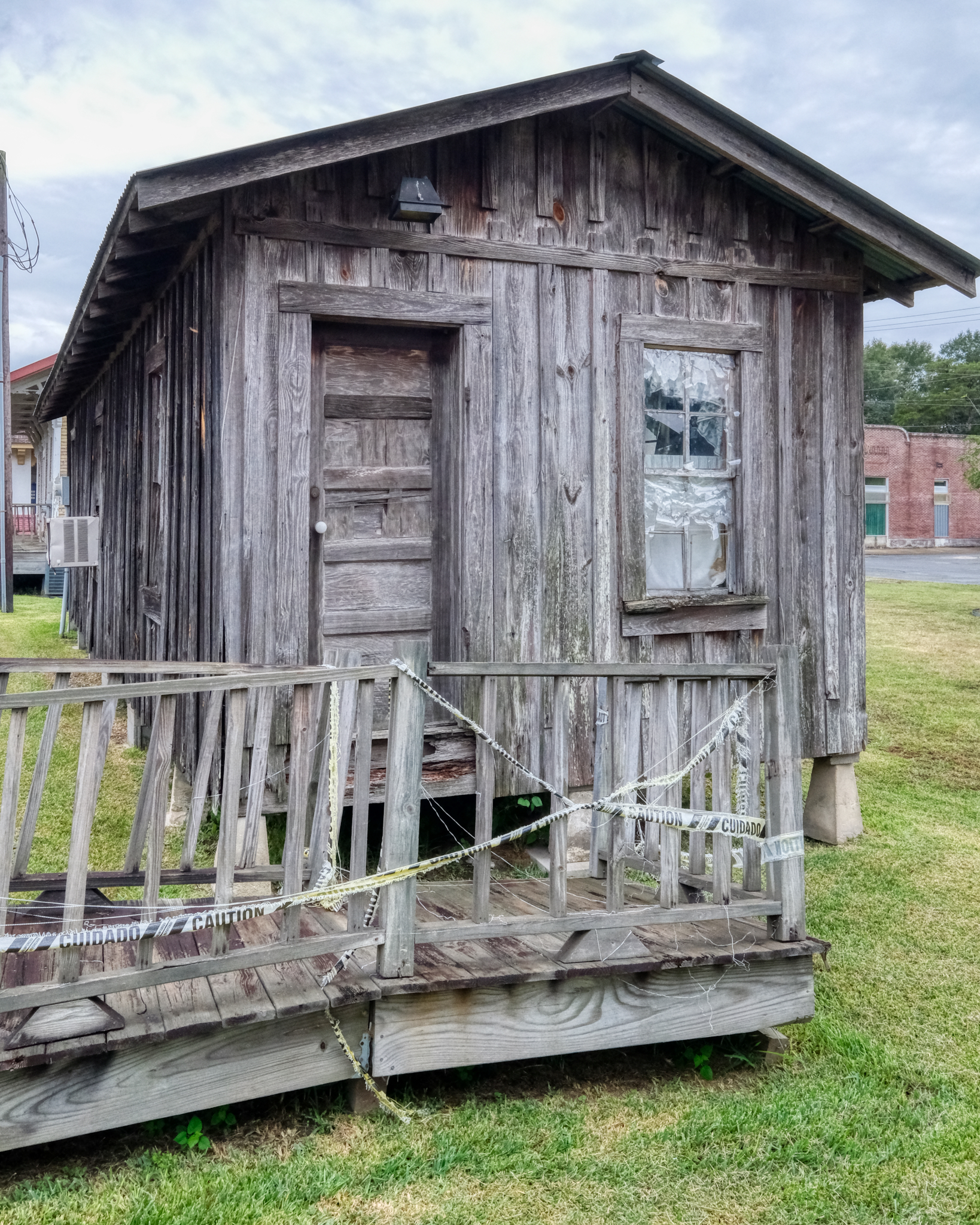 The old rail workers' bunkhouse had fabulous color and texture.
The old rail workers' bunkhouse had fabulous color and texture.
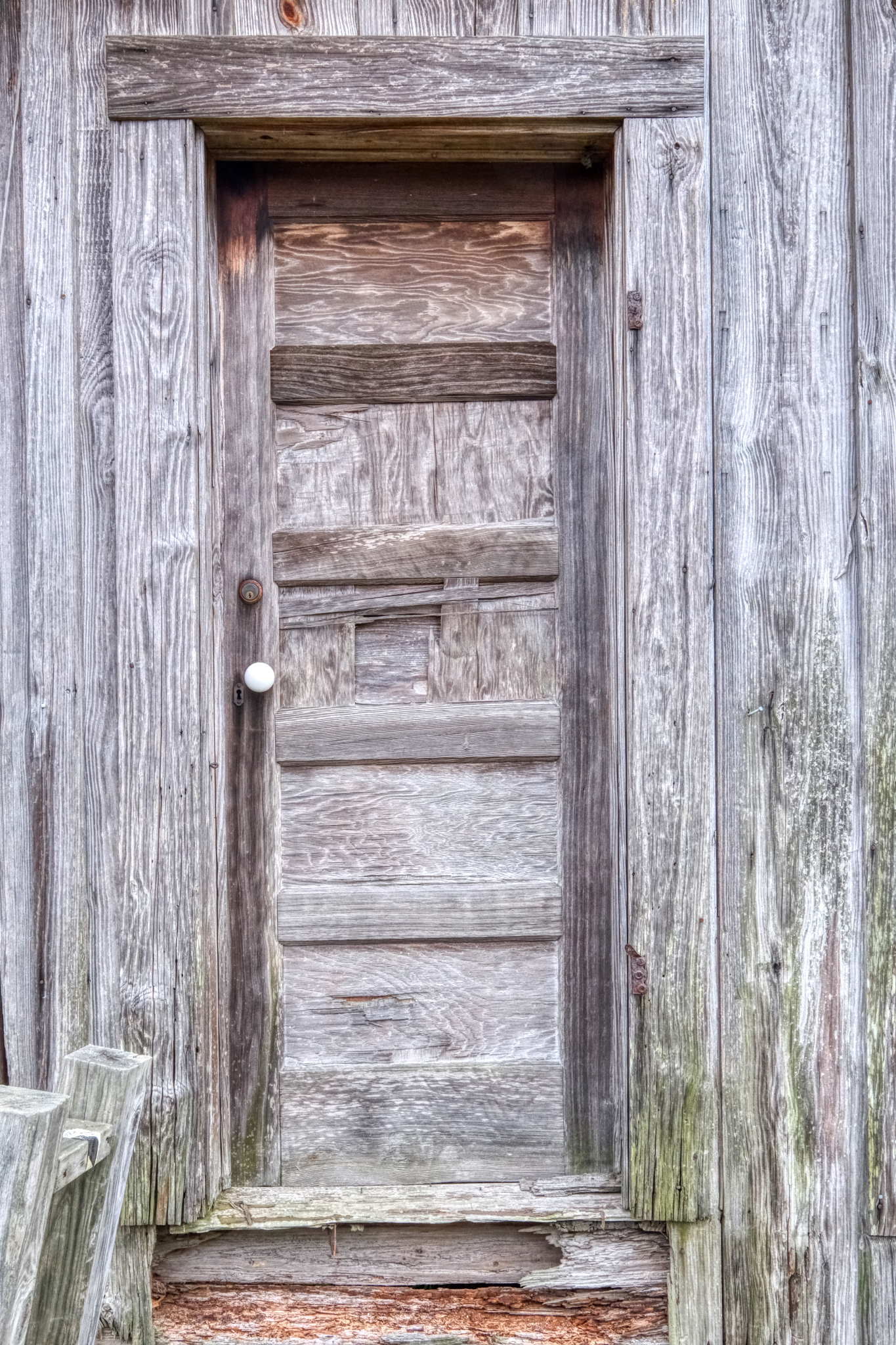 The weathered old bunkhouse door.
The weathered old bunkhouse door.
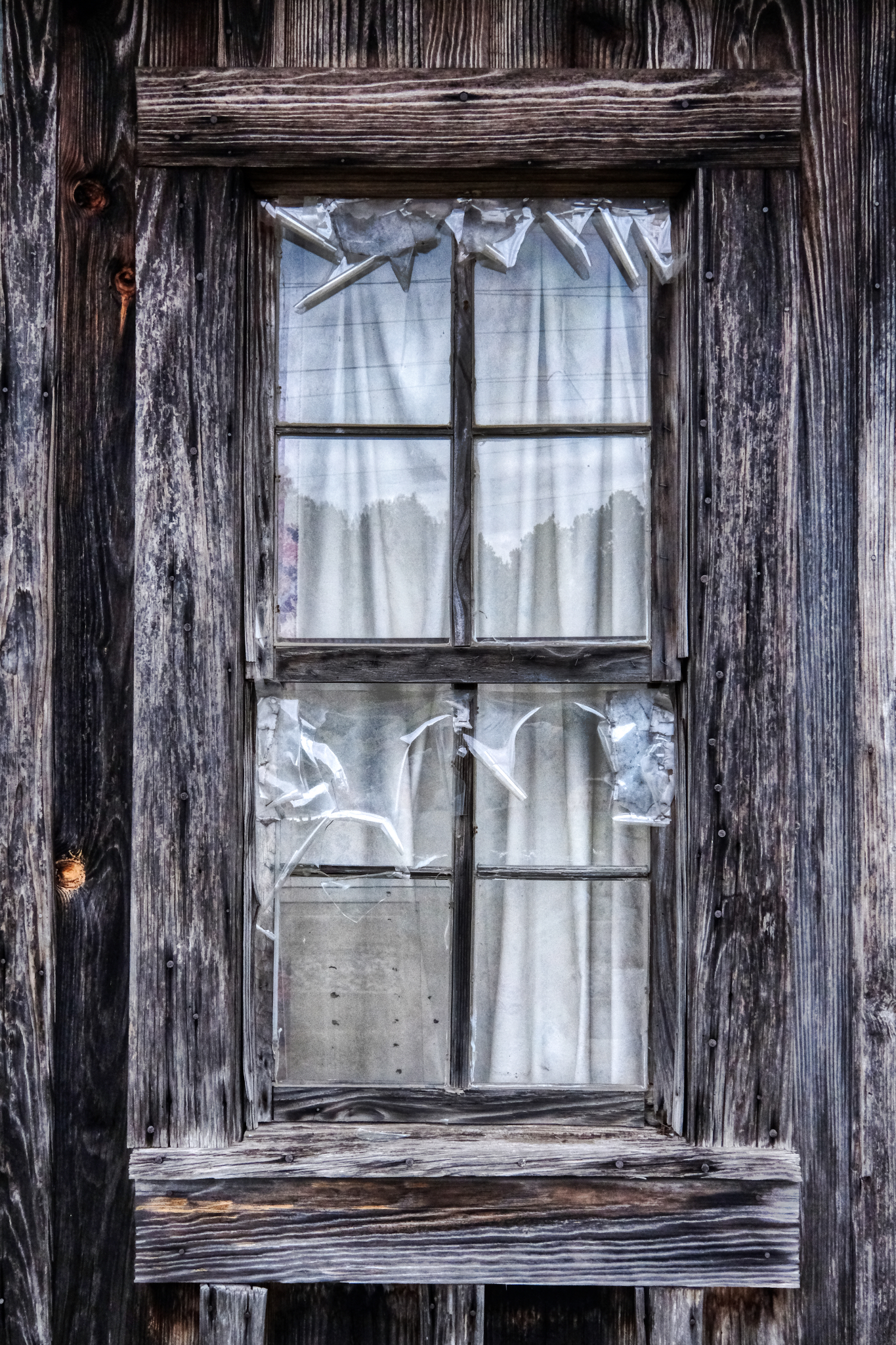 An old bunkhouse window, darkened from the light rain that was falling.
An old bunkhouse window, darkened from the light rain that was falling.
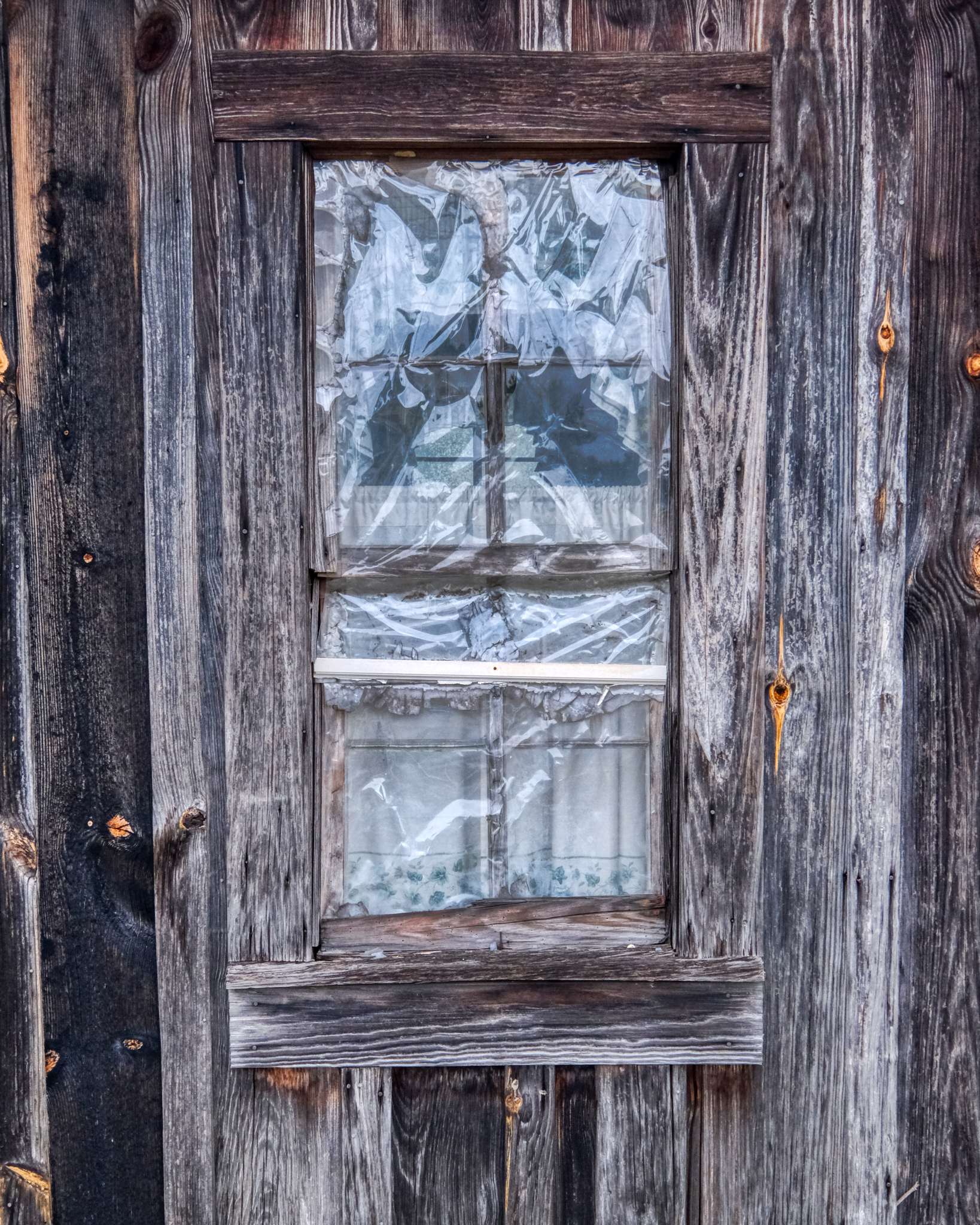 Whenever I see these old, weathered windows and doors I am made aware of the man or woman who made and installed it. What kind of day was it? What did they have for lunch?
Whenever I see these old, weathered windows and doors I am made aware of the man or woman who made and installed it. What kind of day was it? What did they have for lunch?
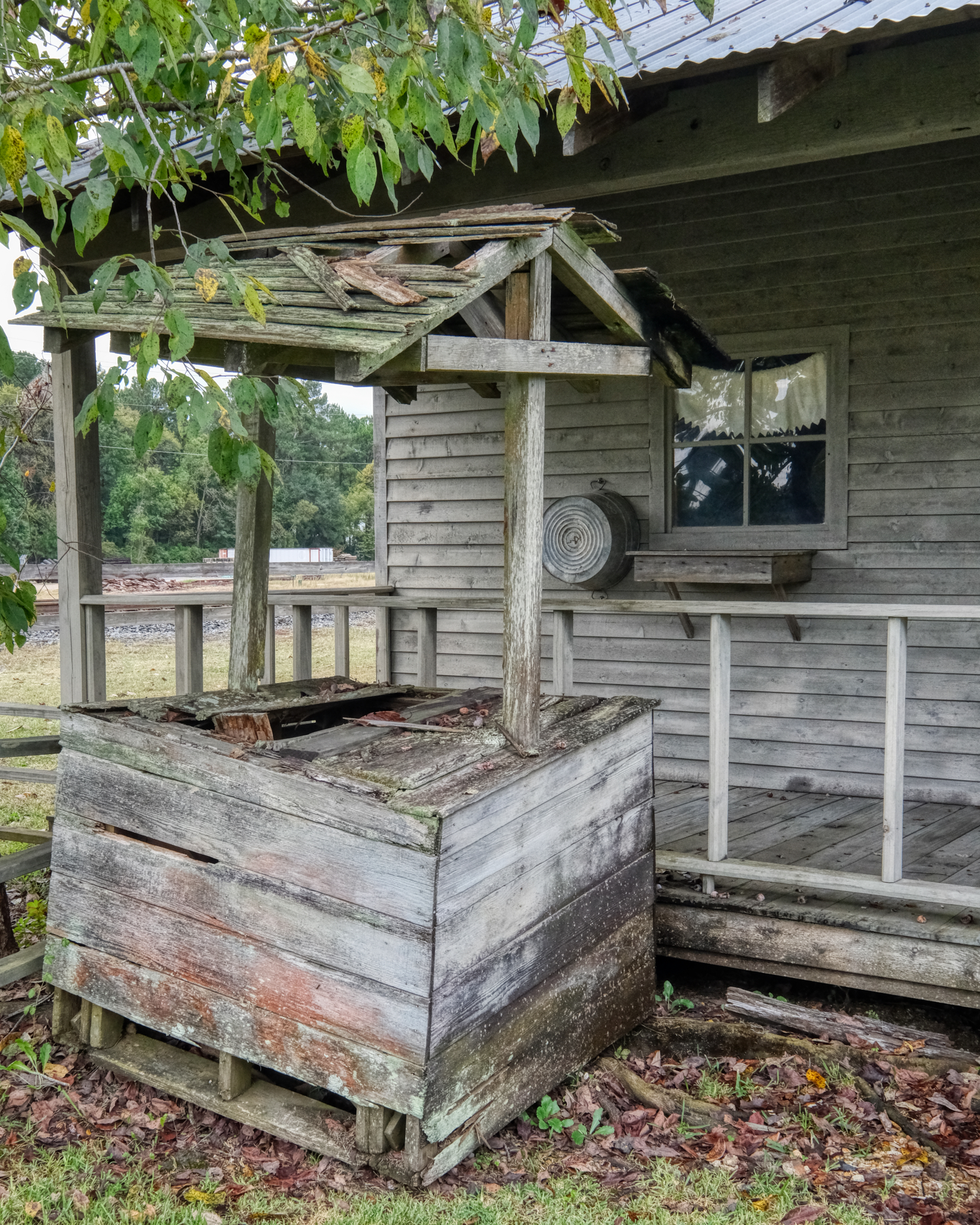 Among the old buildings the museum transported to Leesville was this broken well.
Among the old buildings the museum transported to Leesville was this broken well.
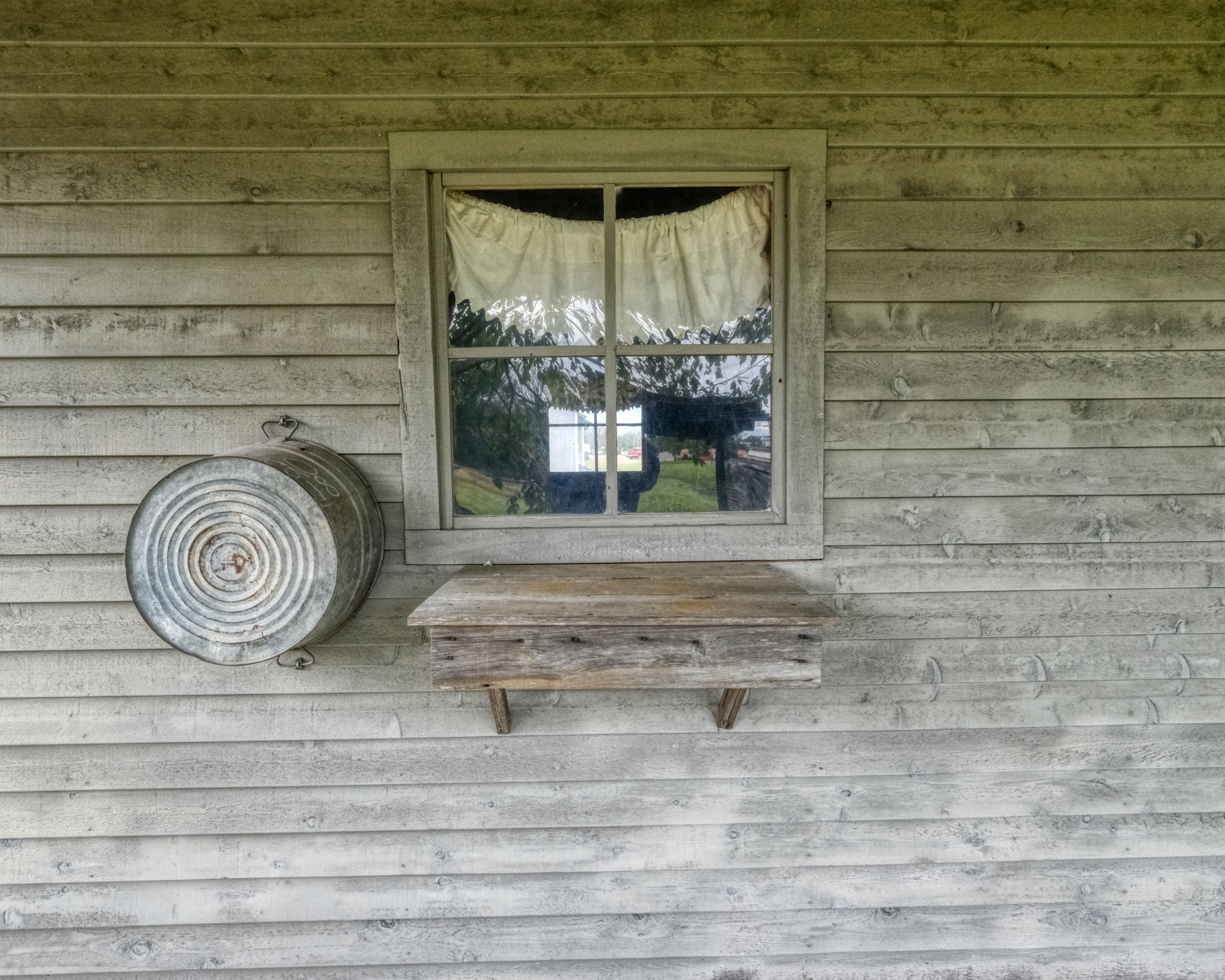 There was no shortage of artistic still life arrangements around Leesville.
There was no shortage of artistic still life arrangements around Leesville.
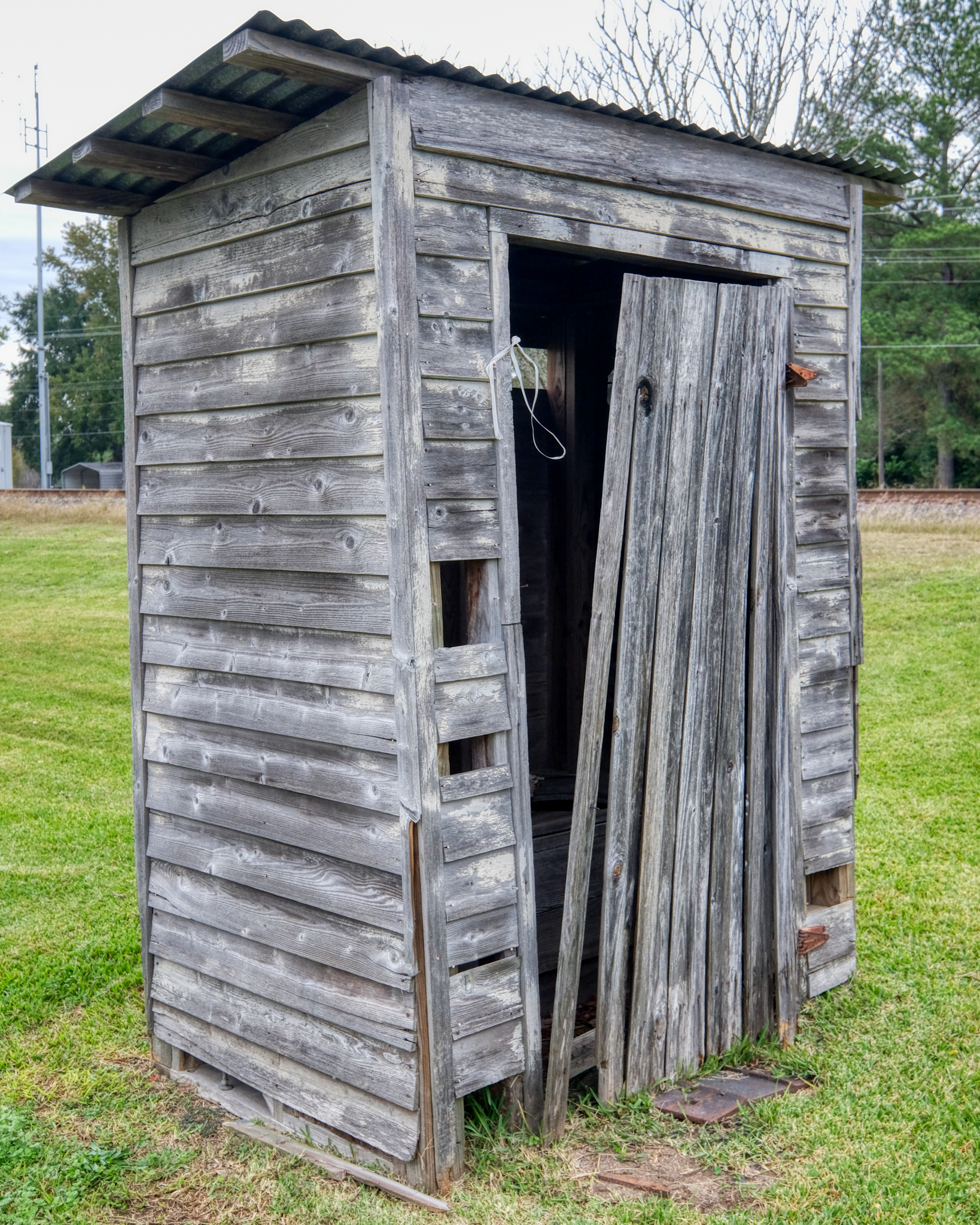 The Museum of West Louisiana spared no effort in obtaining authenticity!
The Museum of West Louisiana spared no effort in obtaining authenticity!
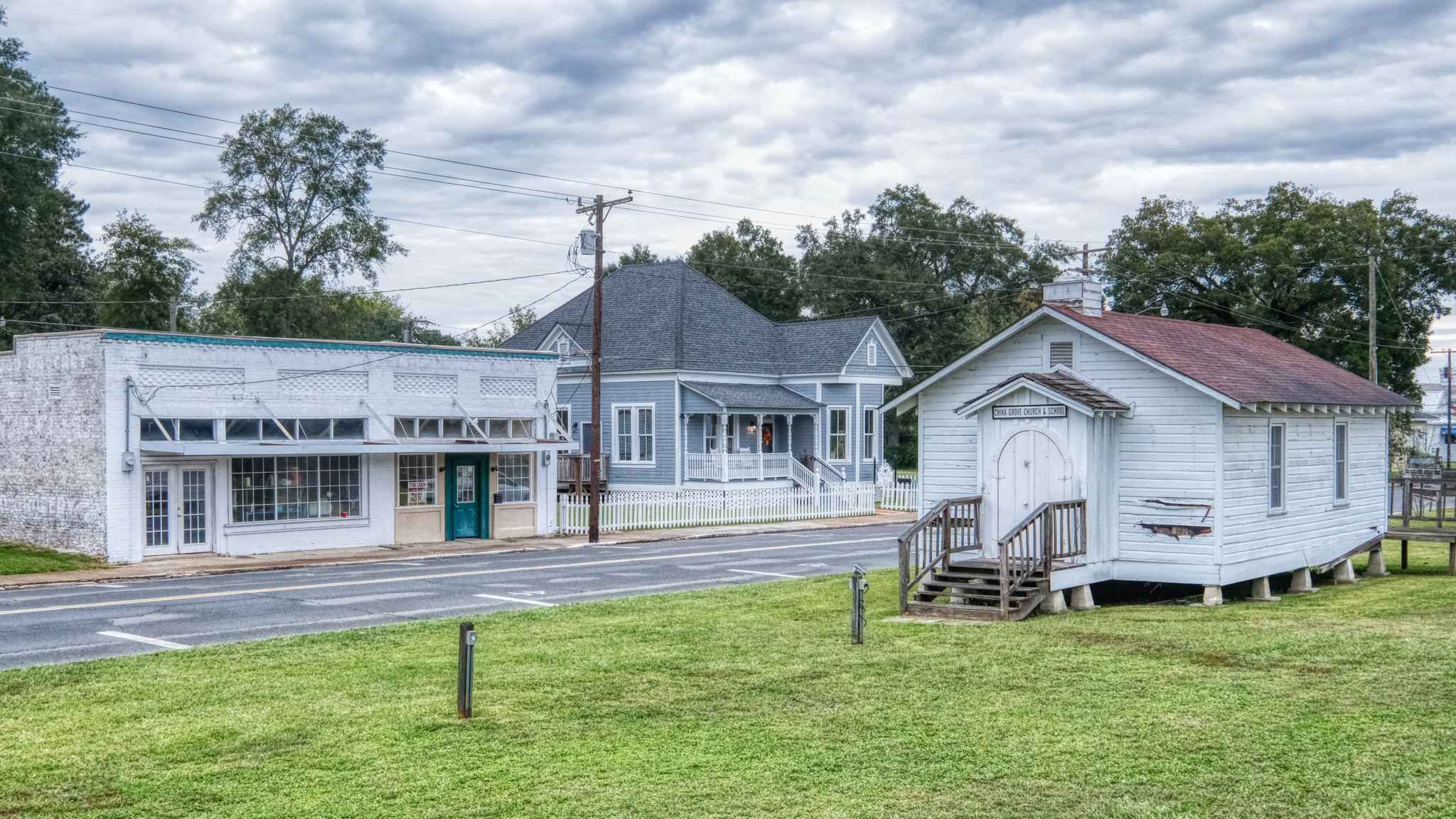 The view back up 3rd Street. That tea house looks promising.
The view back up 3rd Street. That tea house looks promising.
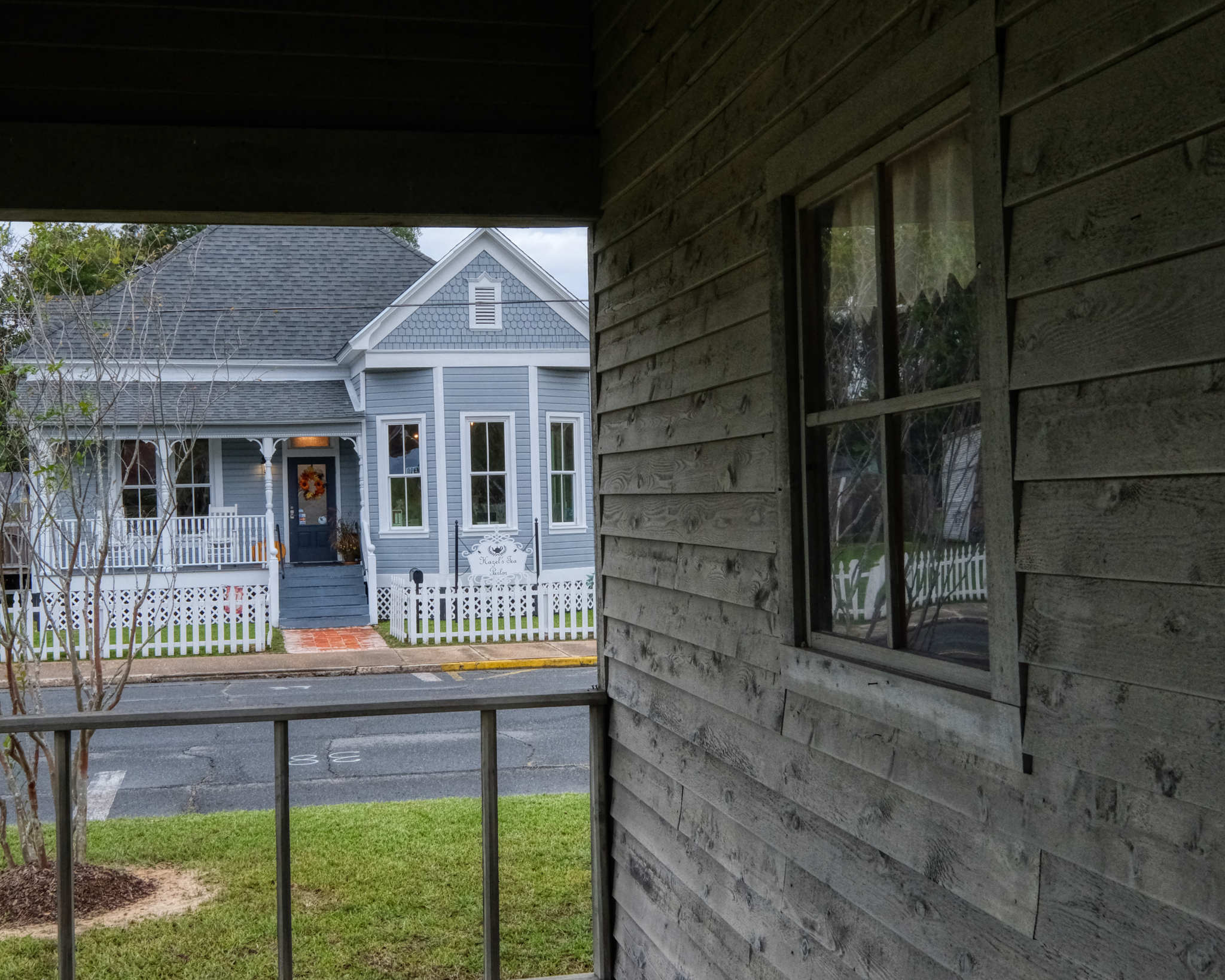 Hazel's Tea Parlor . . . and its open!
Hazel's Tea Parlor . . . and its open!
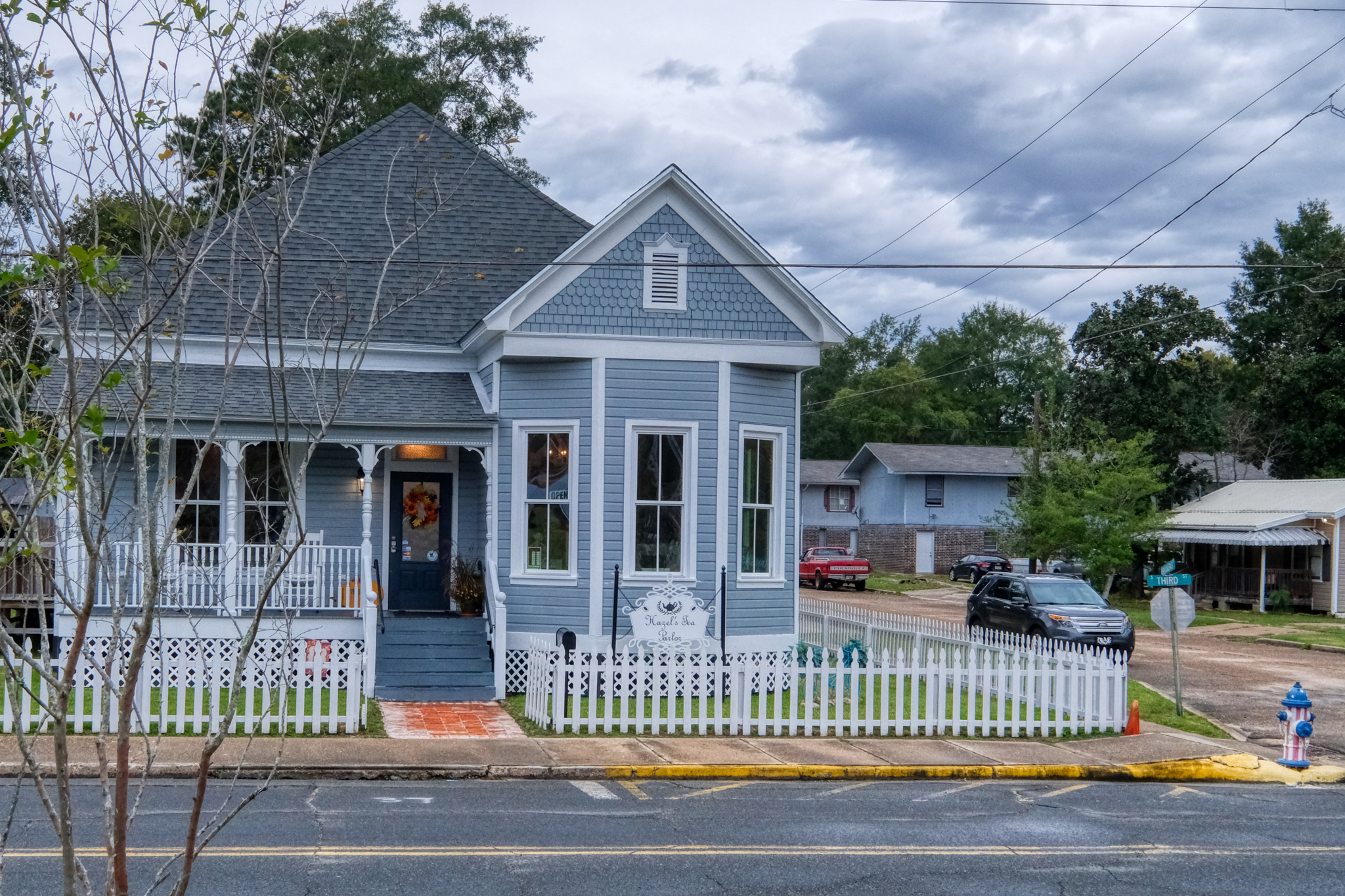 Hazel's Tea Parlor is somewhat new to Leesville. A retired military man and his wife, originally from Philadelphia, came back to Leesville after being posted to Fort Polk many years ago. It was their lifelong dream to open a tea house.
Hazel's Tea Parlor is somewhat new to Leesville. A retired military man and his wife, originally from Philadelphia, came back to Leesville after being posted to Fort Polk many years ago. It was their lifelong dream to open a tea house.
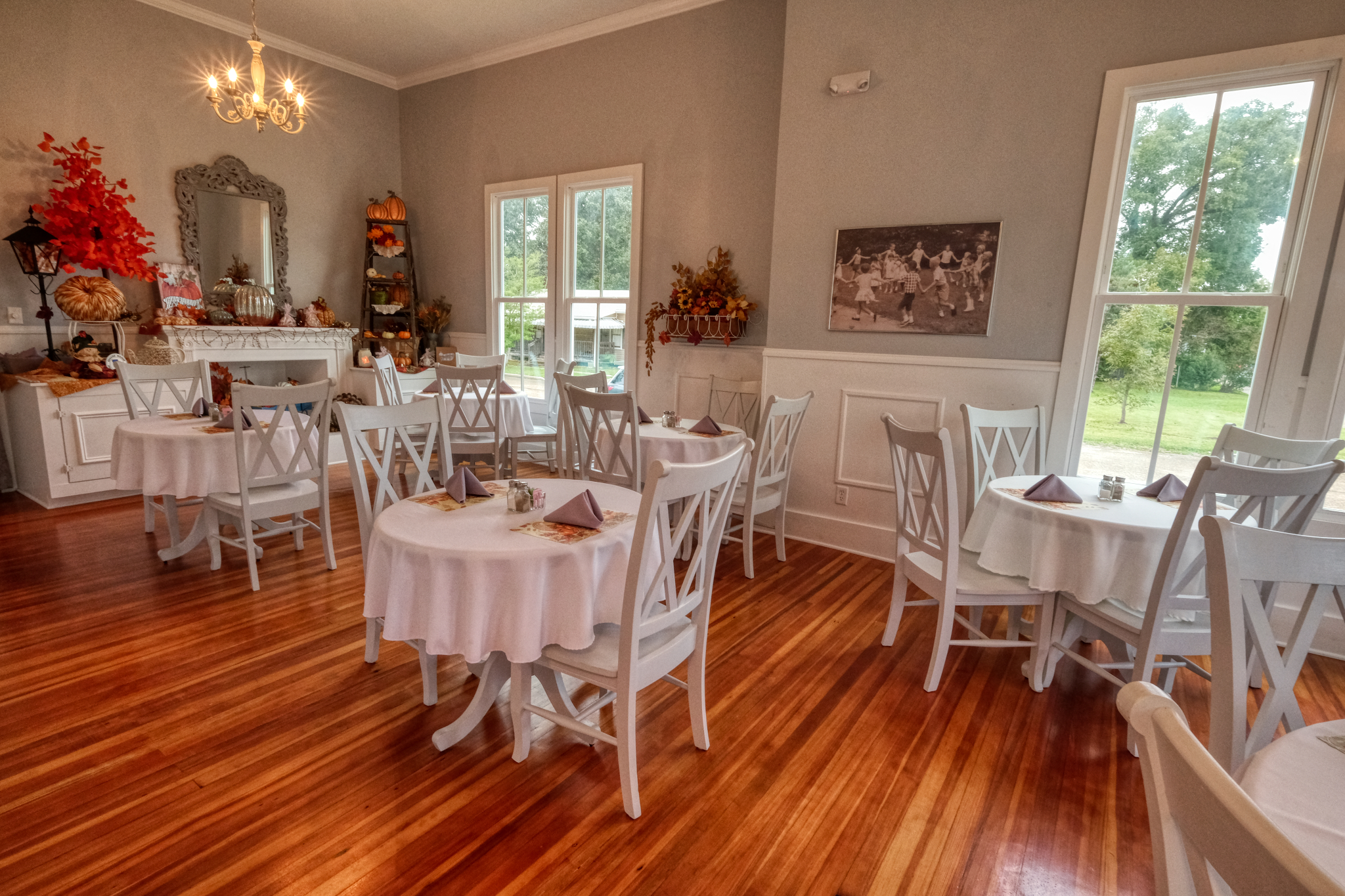 A very cozy place . . . and the scones and tea were excellent.
A very cozy place . . . and the scones and tea were excellent.
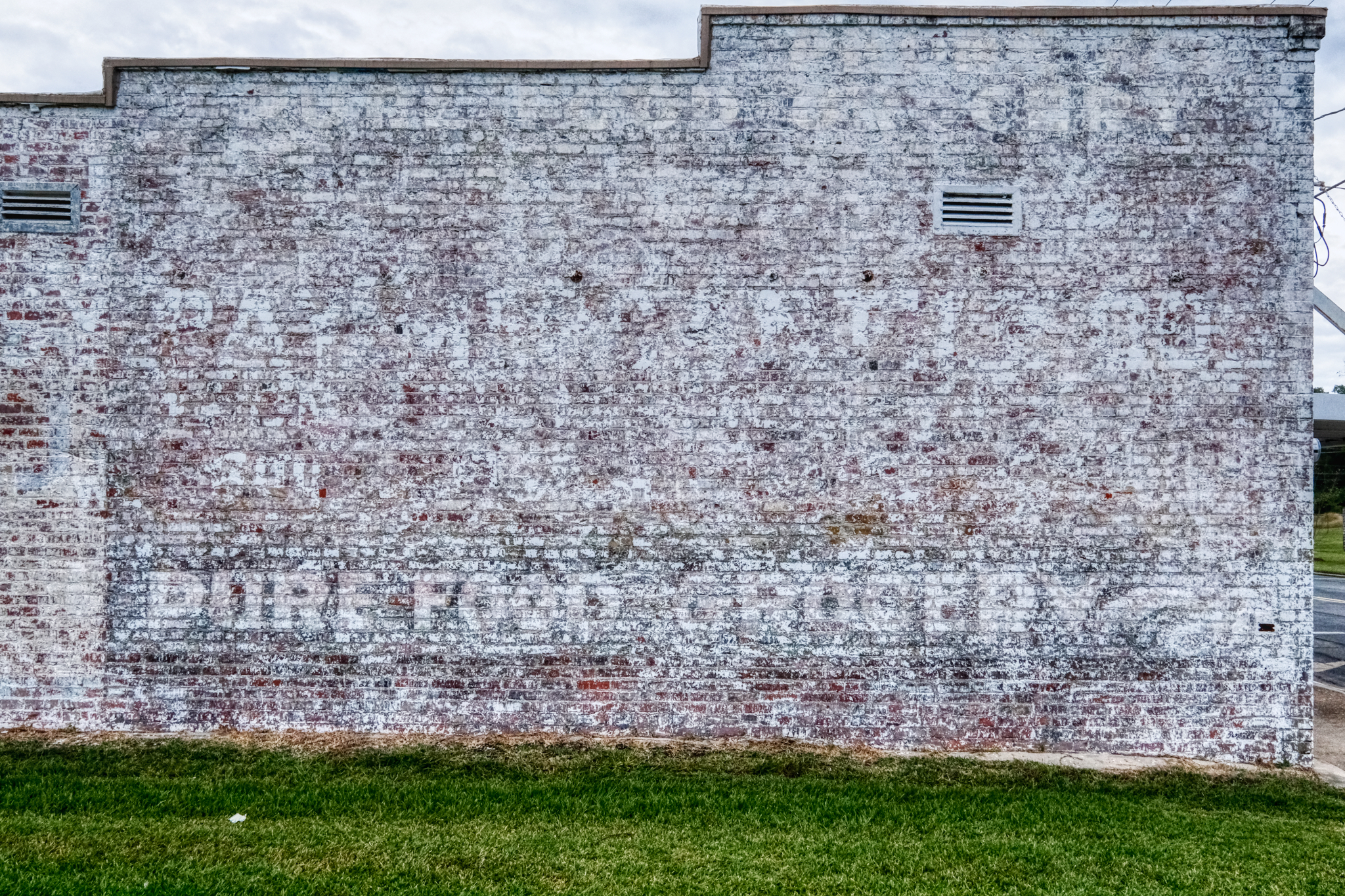 This is what I expected to find of my childhood memories of Leesville. An old wall with the grocery store sign fading . . . and it was actually there!
This is what I expected to find of my childhood memories of Leesville. An old wall with the grocery store sign fading . . . and it was actually there!
Road Trip USA: Bodie Ghost Town, California
 Tuesday, January 8, 2019 at 4:23AM
Tuesday, January 8, 2019 at 4:23AM
In June of 2018, as a part of my bigger year-long road trip, my wife and I took a trip from Oregon to the Grand Canyon. Along the way we stopped at whatever seemed interesting along the way.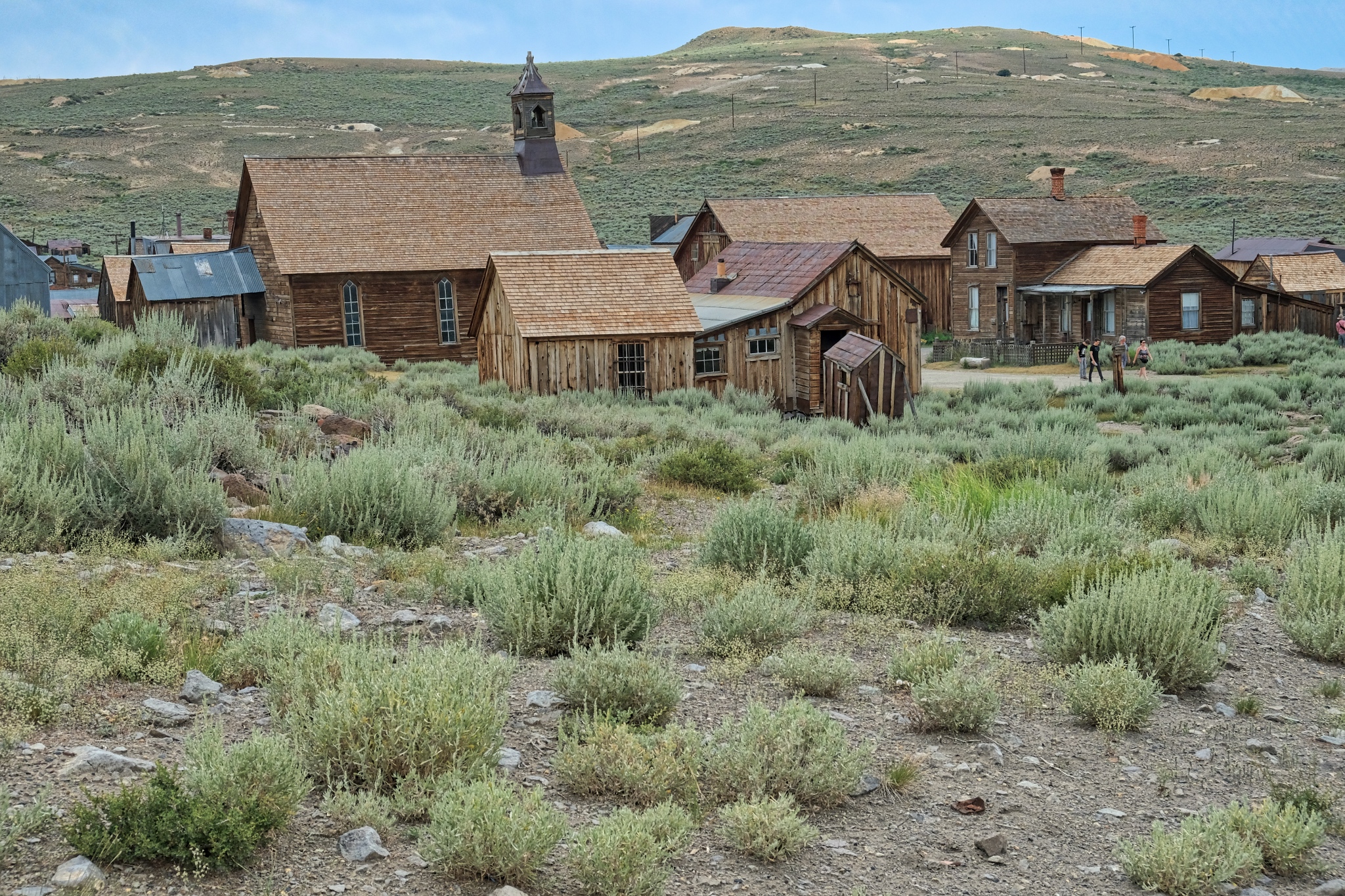 In east-central California, off of US Highway 395, is the old ghost town of Bodie, now a popular and much visited National Monument. It is one of the largest and most complete ghost towns in the USA (Jerome, Arizona is another).
In east-central California, off of US Highway 395, is the old ghost town of Bodie, now a popular and much visited National Monument. It is one of the largest and most complete ghost towns in the USA (Jerome, Arizona is another).
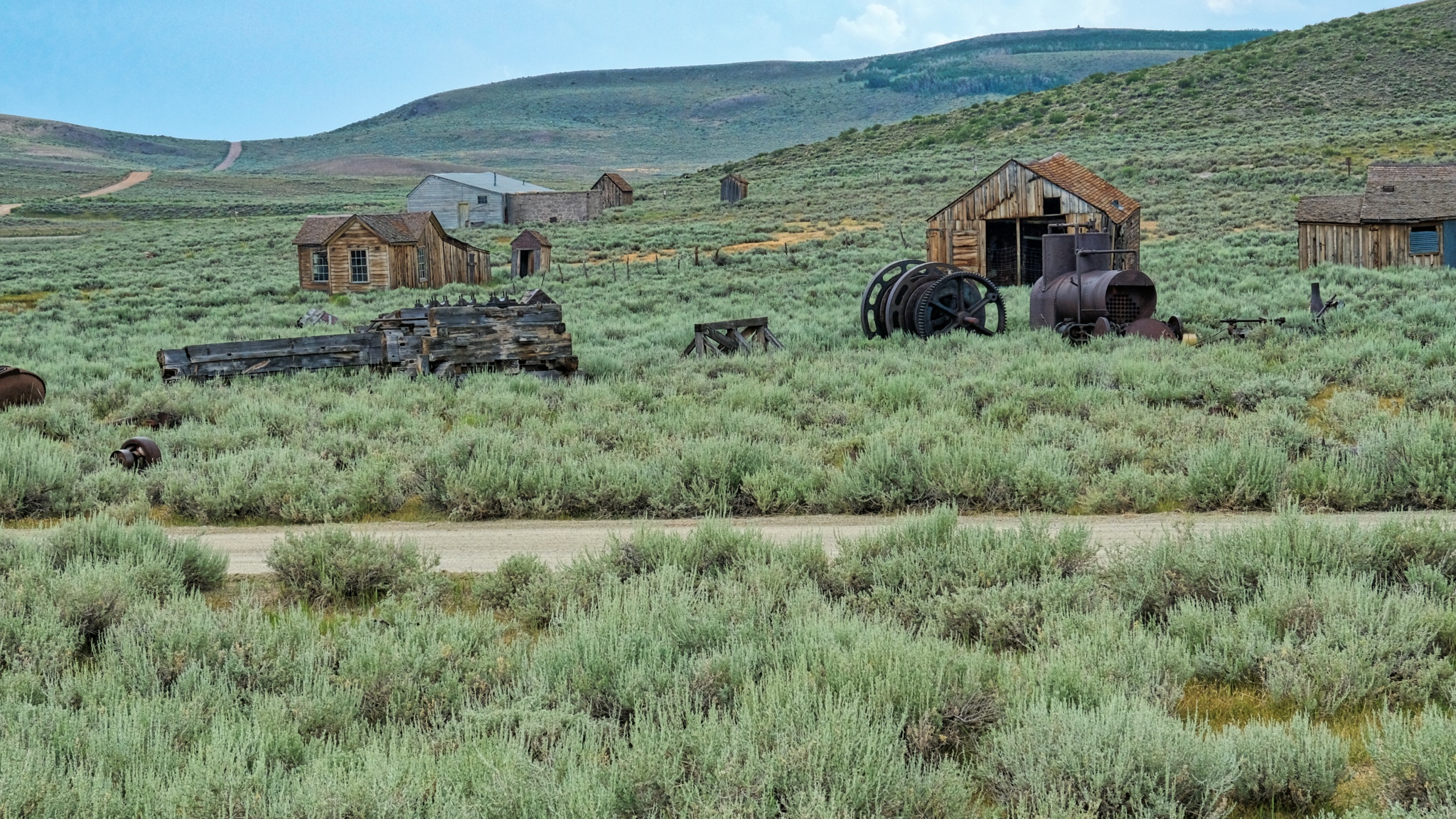 We arrived a the broad site of Bodie in a light drizzle under threatening skies.
We arrived a the broad site of Bodie in a light drizzle under threatening skies.
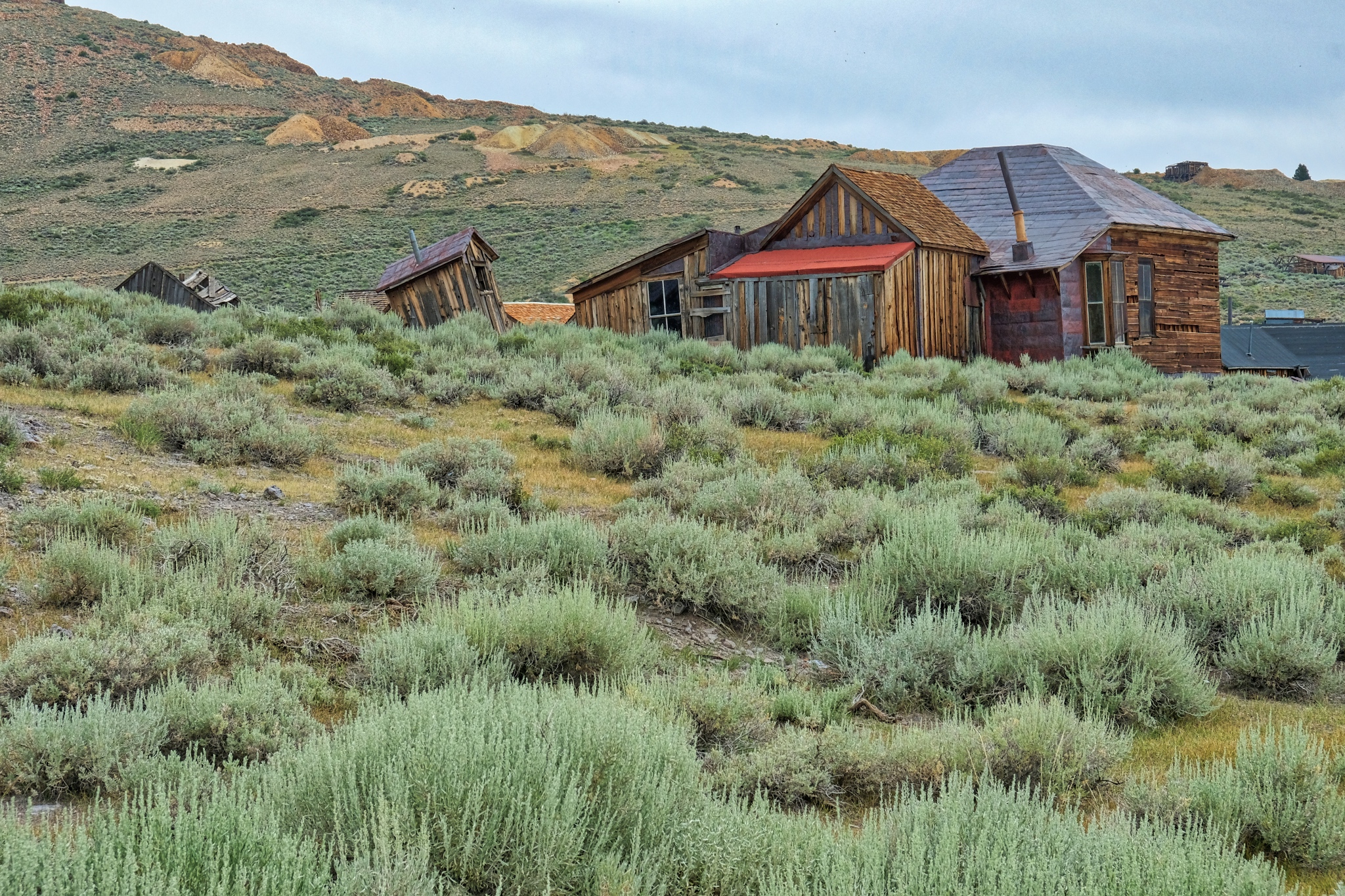 Our first view of Bodie was of scattered shacks and abandoned mine tailings.
Our first view of Bodie was of scattered shacks and abandoned mine tailings.
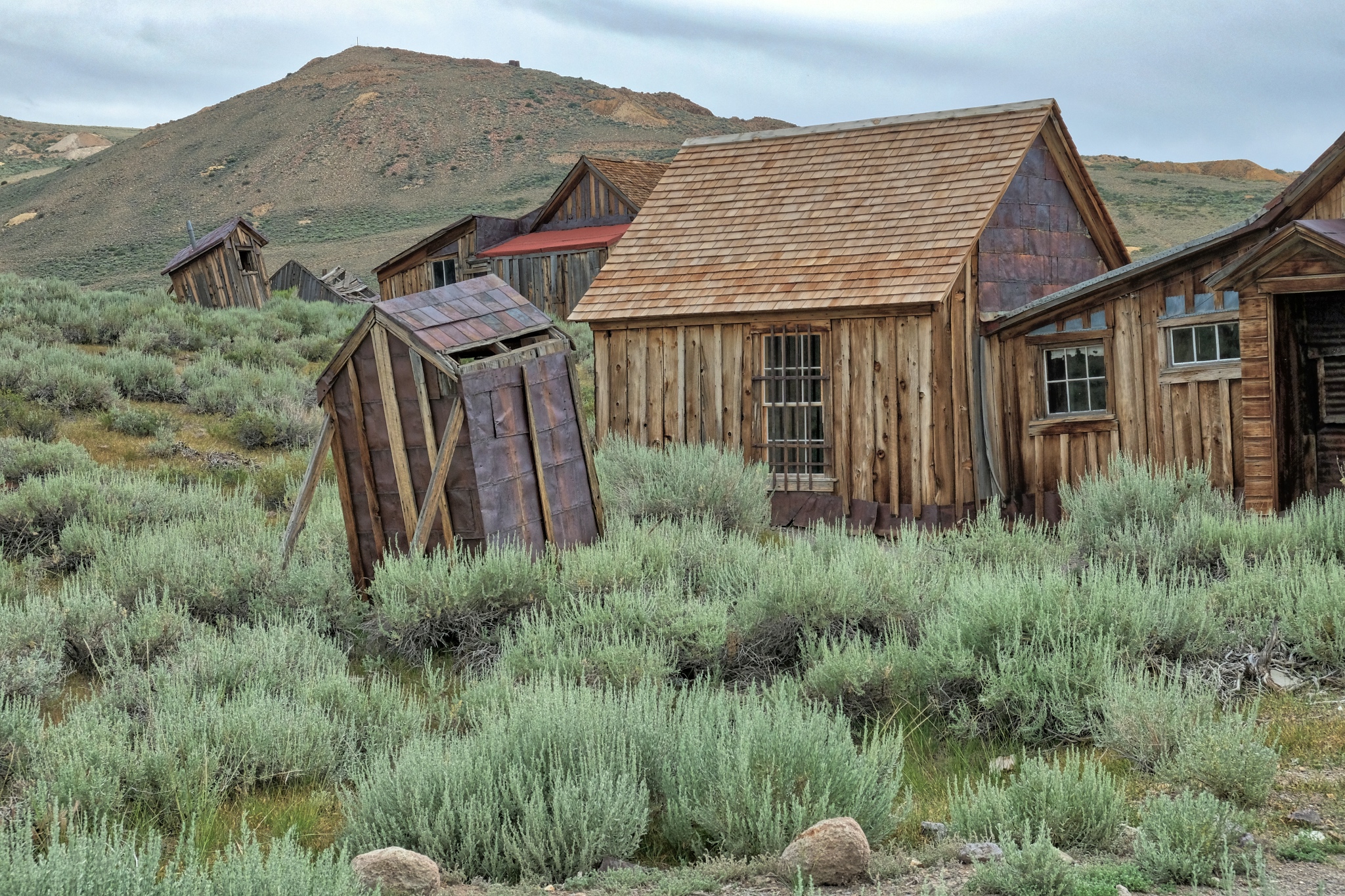 And after parking and walking into the cluster of old weathered buildings, the layout of a town started to appear.
And after parking and walking into the cluster of old weathered buildings, the layout of a town started to appear.
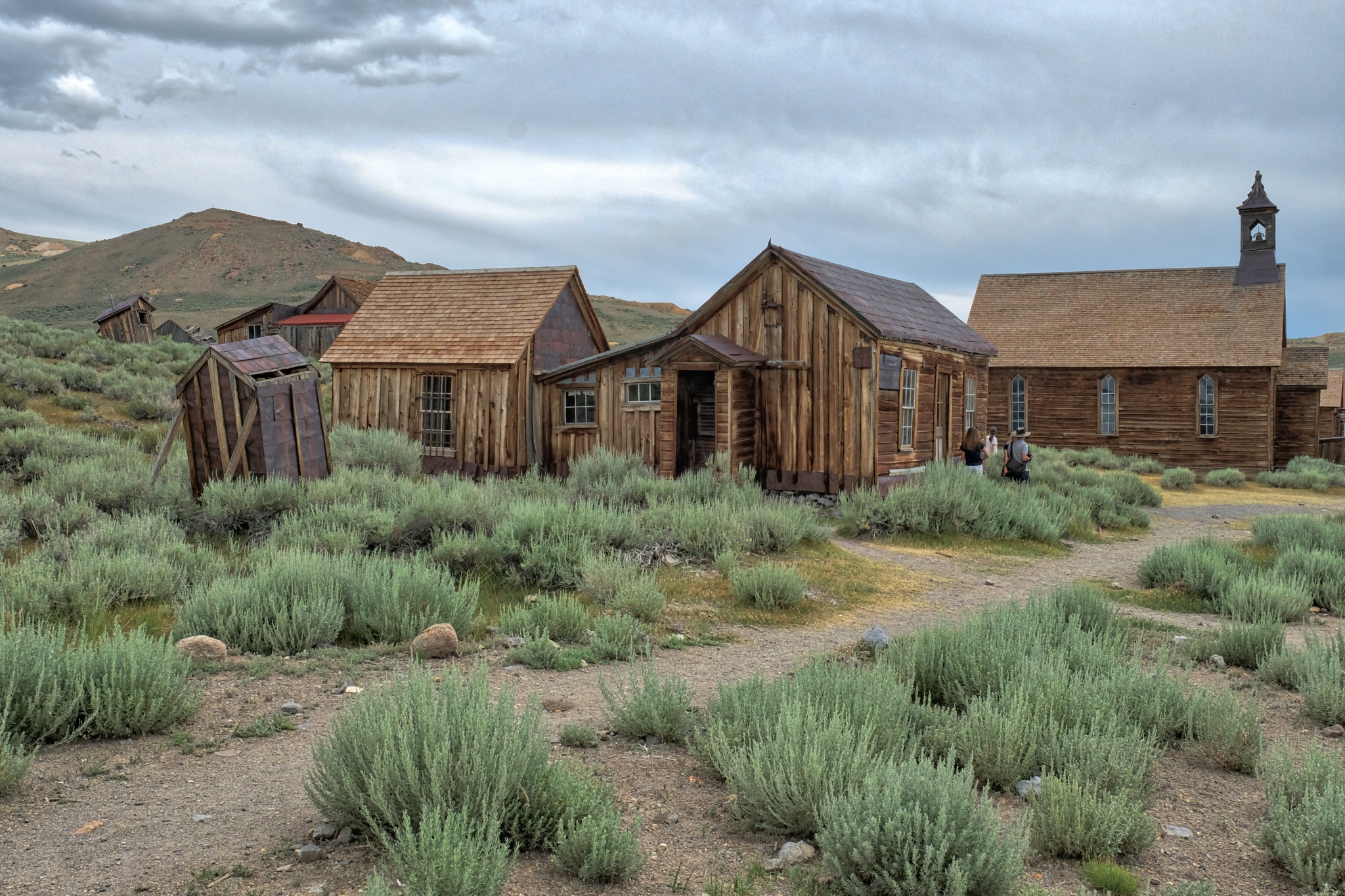 Bodie became a town in 1876 when a productive vein of gold was discovered there.
Bodie became a town in 1876 when a productive vein of gold was discovered there.
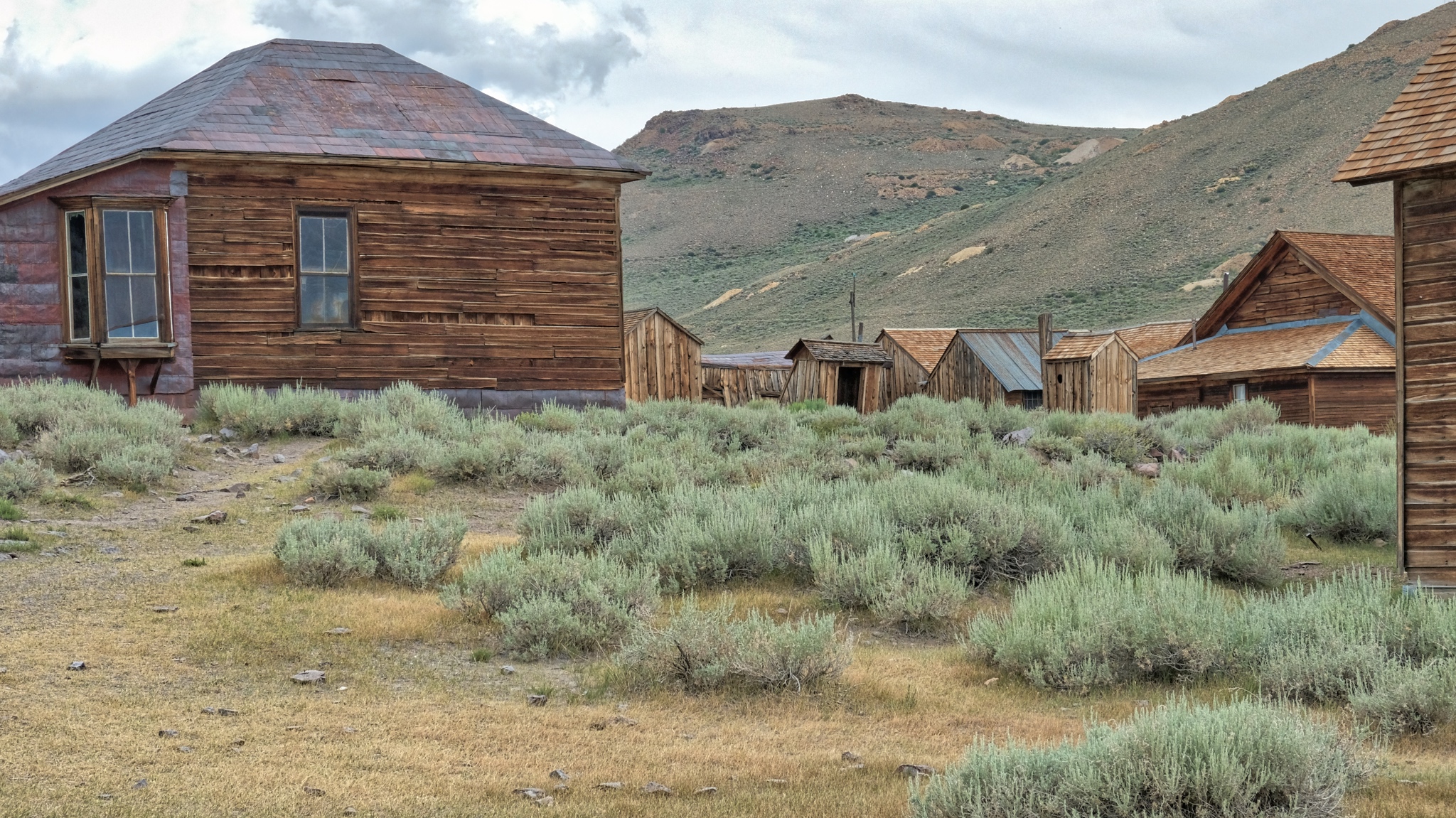 Even though it was mid June, the elevation of 8379 feet (2554 m) combined with the wind and mist, made the surfaces wet, revealing the colors and textures perfectly.
Even though it was mid June, the elevation of 8379 feet (2554 m) combined with the wind and mist, made the surfaces wet, revealing the colors and textures perfectly.
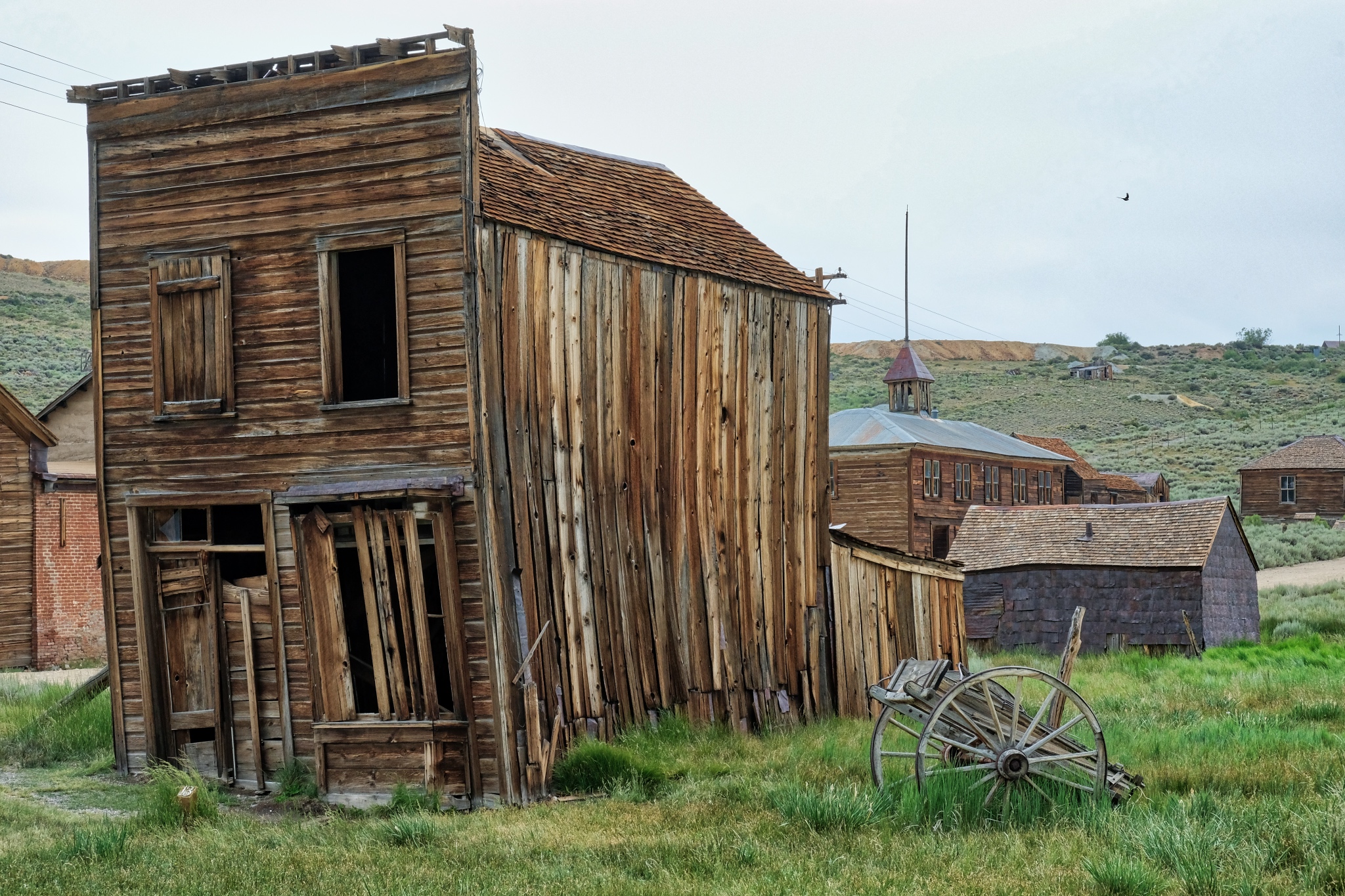
Bodie had a population of 7000 before the gold was all mined . . . and was connected to the world by a small gauge rail line.
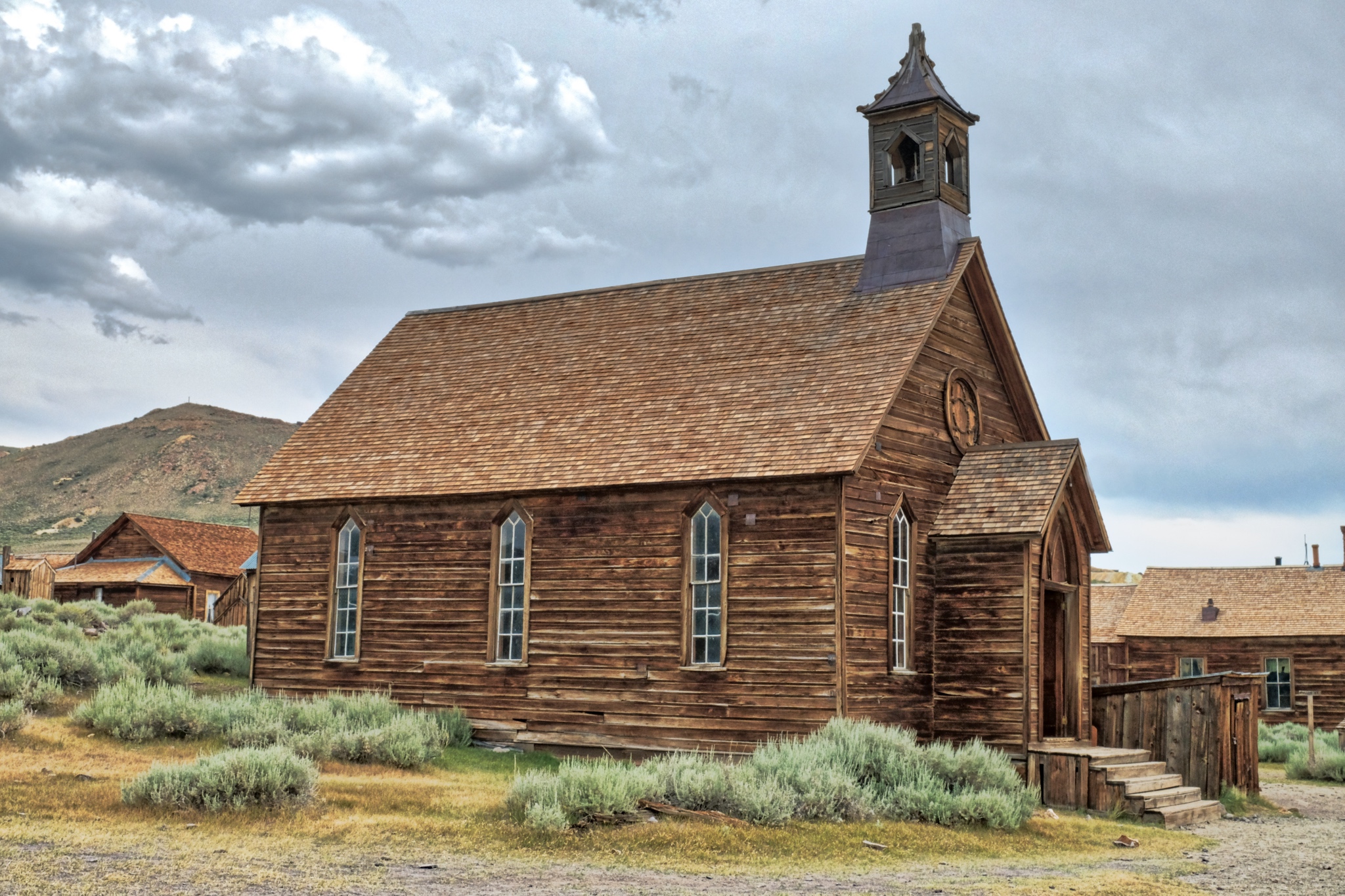 At it's height, Bodie had two churches, a Wells Fargo Bank, a myriad of shops and services, as well as its own hydroelectric generating station 13 miles away.
At it's height, Bodie had two churches, a Wells Fargo Bank, a myriad of shops and services, as well as its own hydroelectric generating station 13 miles away.
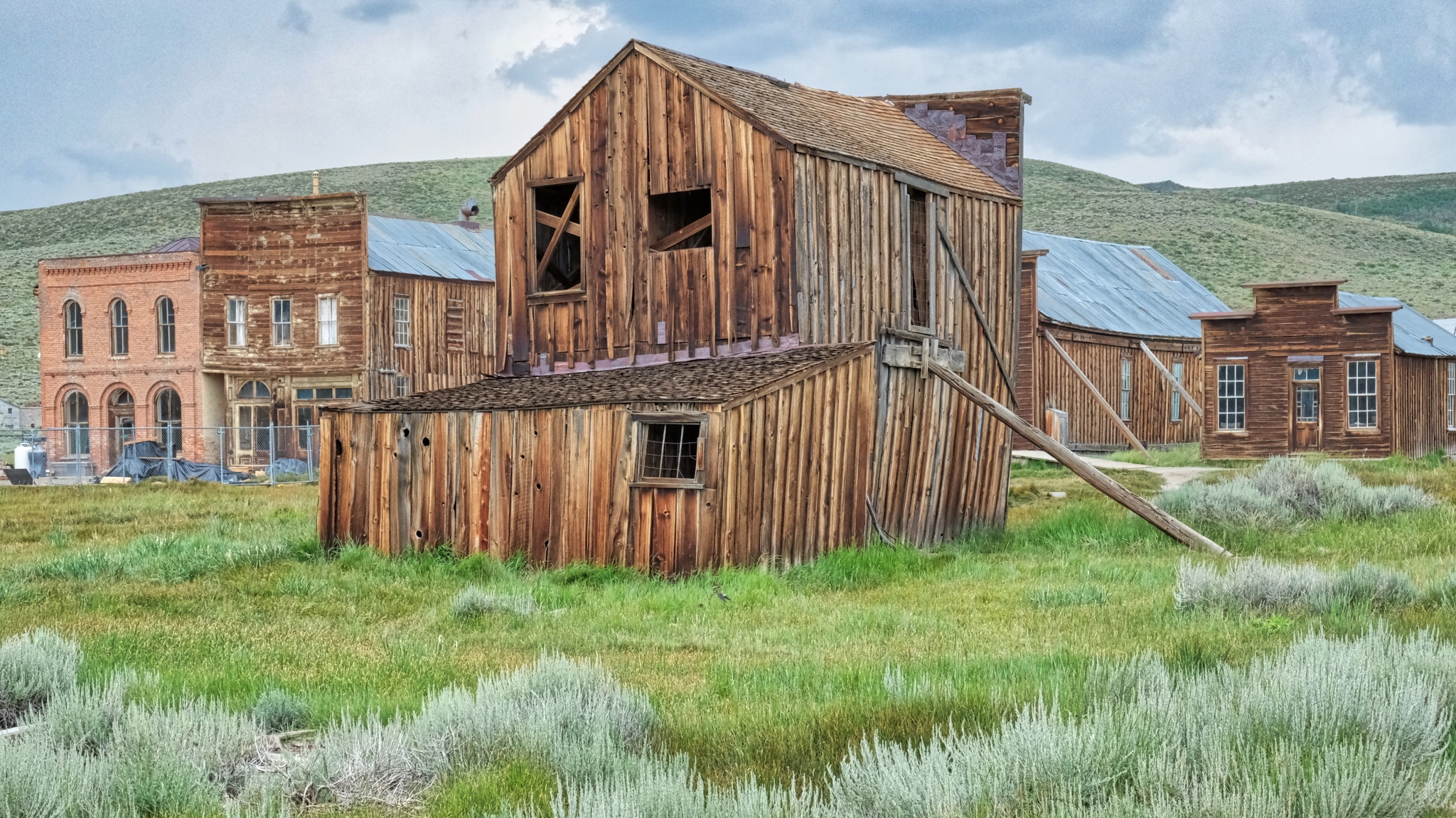 There were 2000 buildings in Bodie at one time. There are nowhere near that many left today . . . but it is still an impressive sight to see.
There were 2000 buildings in Bodie at one time. There are nowhere near that many left today . . . but it is still an impressive sight to see.
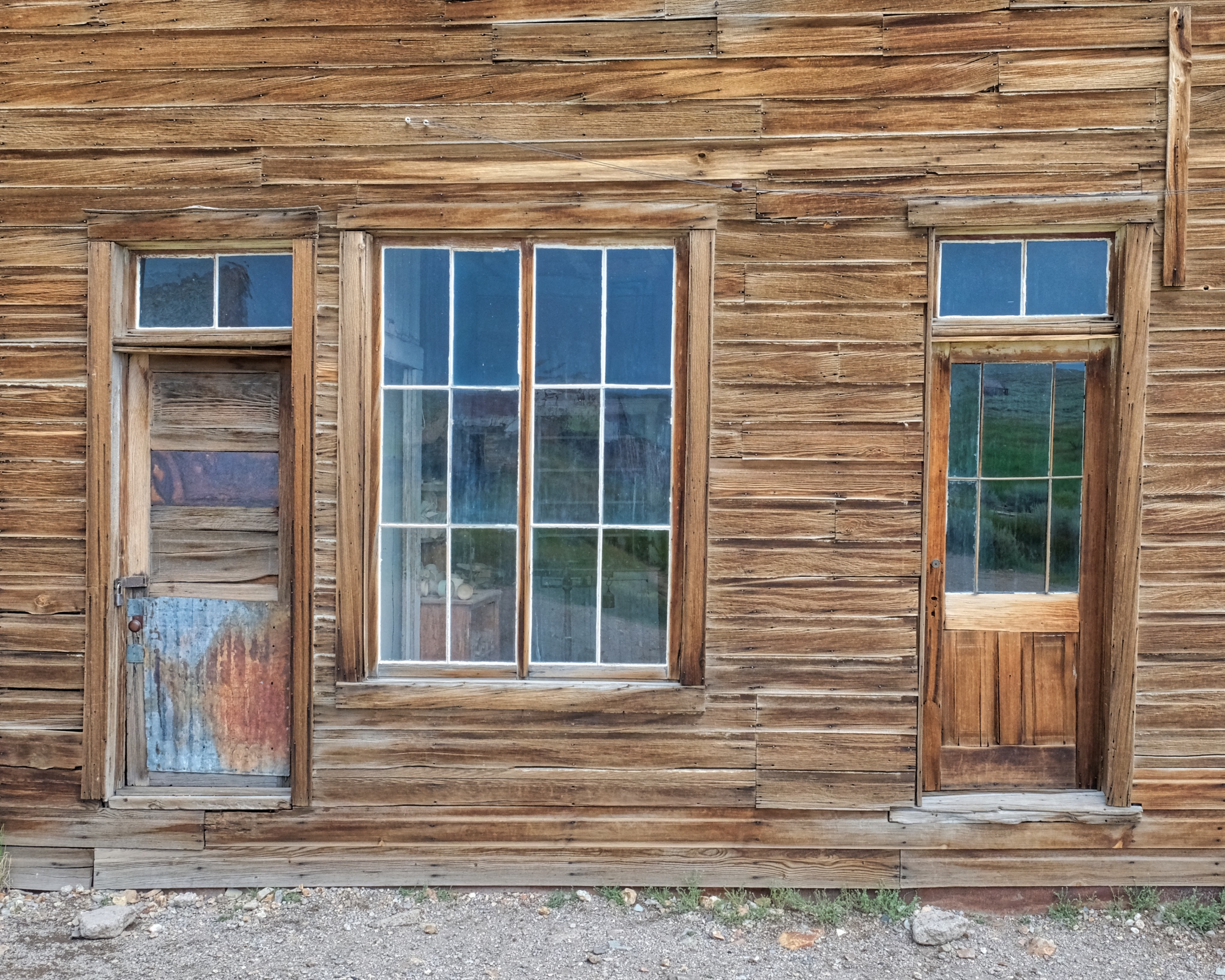 I am a fan of old doors and windows . . . especially weathered old doors and windows. I was in photographers' heaven in Bodie.
I am a fan of old doors and windows . . . especially weathered old doors and windows. I was in photographers' heaven in Bodie.
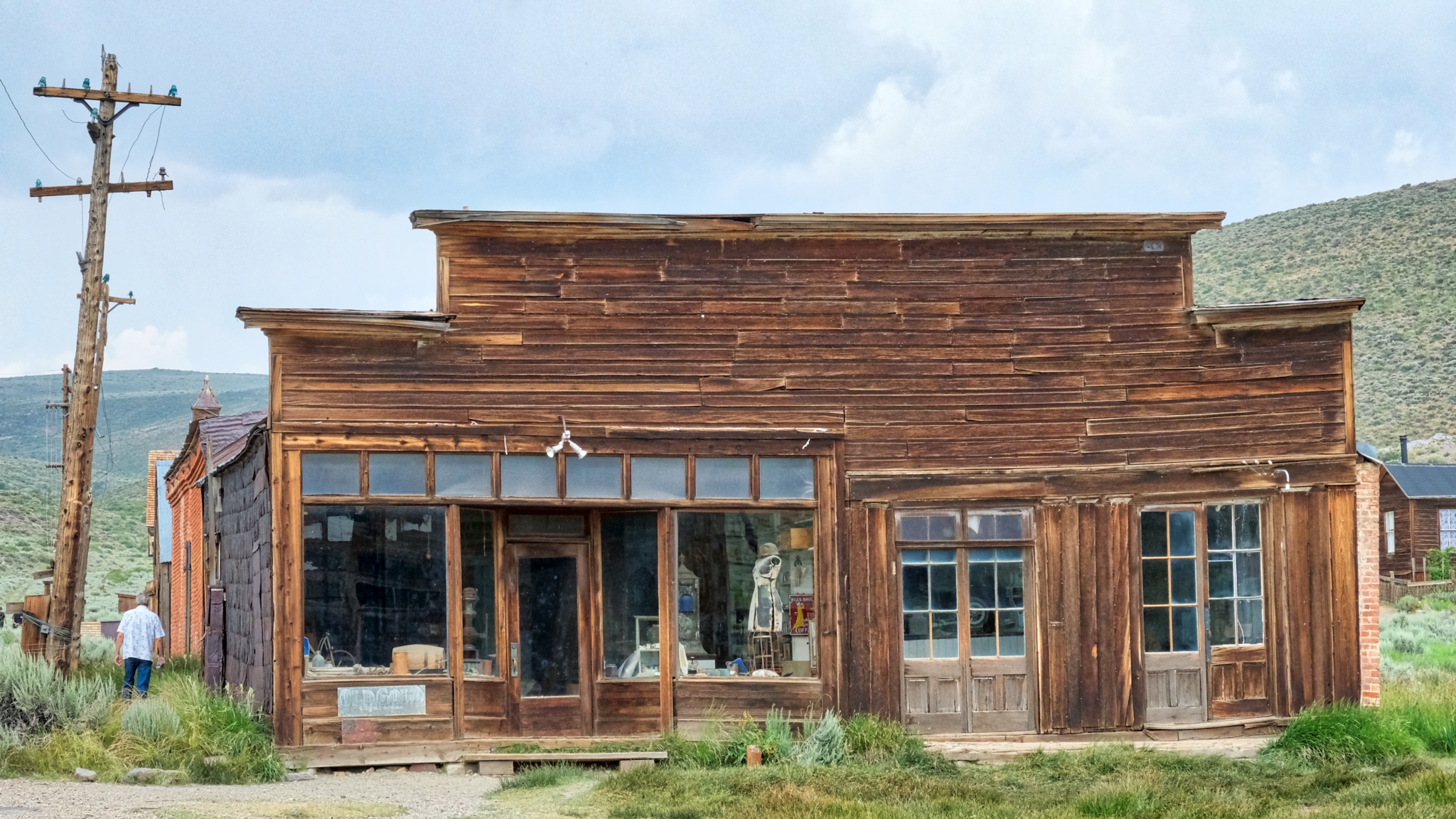 Several of the old general stores still had period merchandise in them. I am not sure if the items inside were left behind or carefully placed there years ago by over-eager National Parks staff, but the interiors are a marvel.
Several of the old general stores still had period merchandise in them. I am not sure if the items inside were left behind or carefully placed there years ago by over-eager National Parks staff, but the interiors are a marvel.
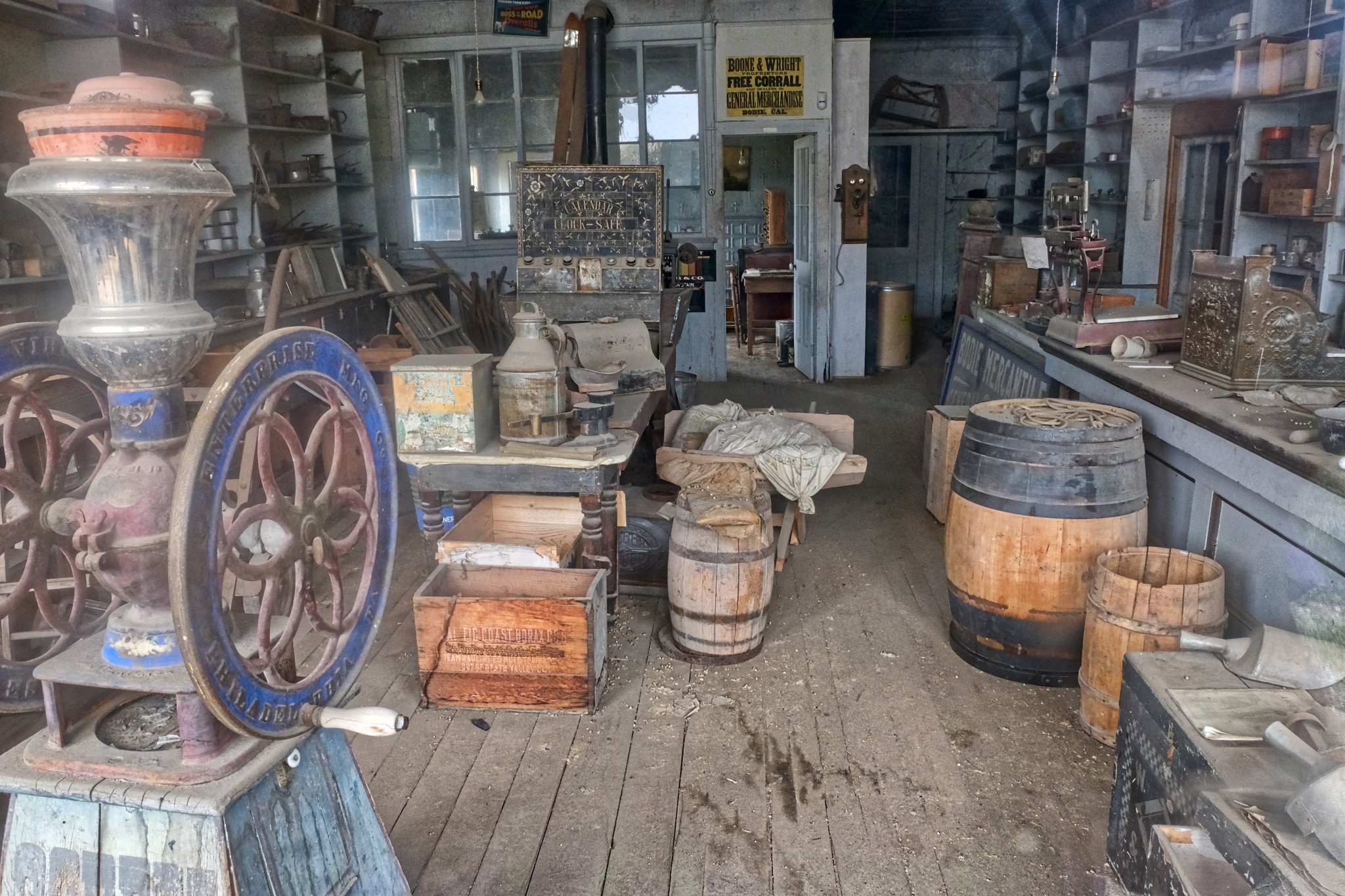 A photo of a general store interior, taken through the window since visitors could not go in. Fascinating.
A photo of a general store interior, taken through the window since visitors could not go in. Fascinating.
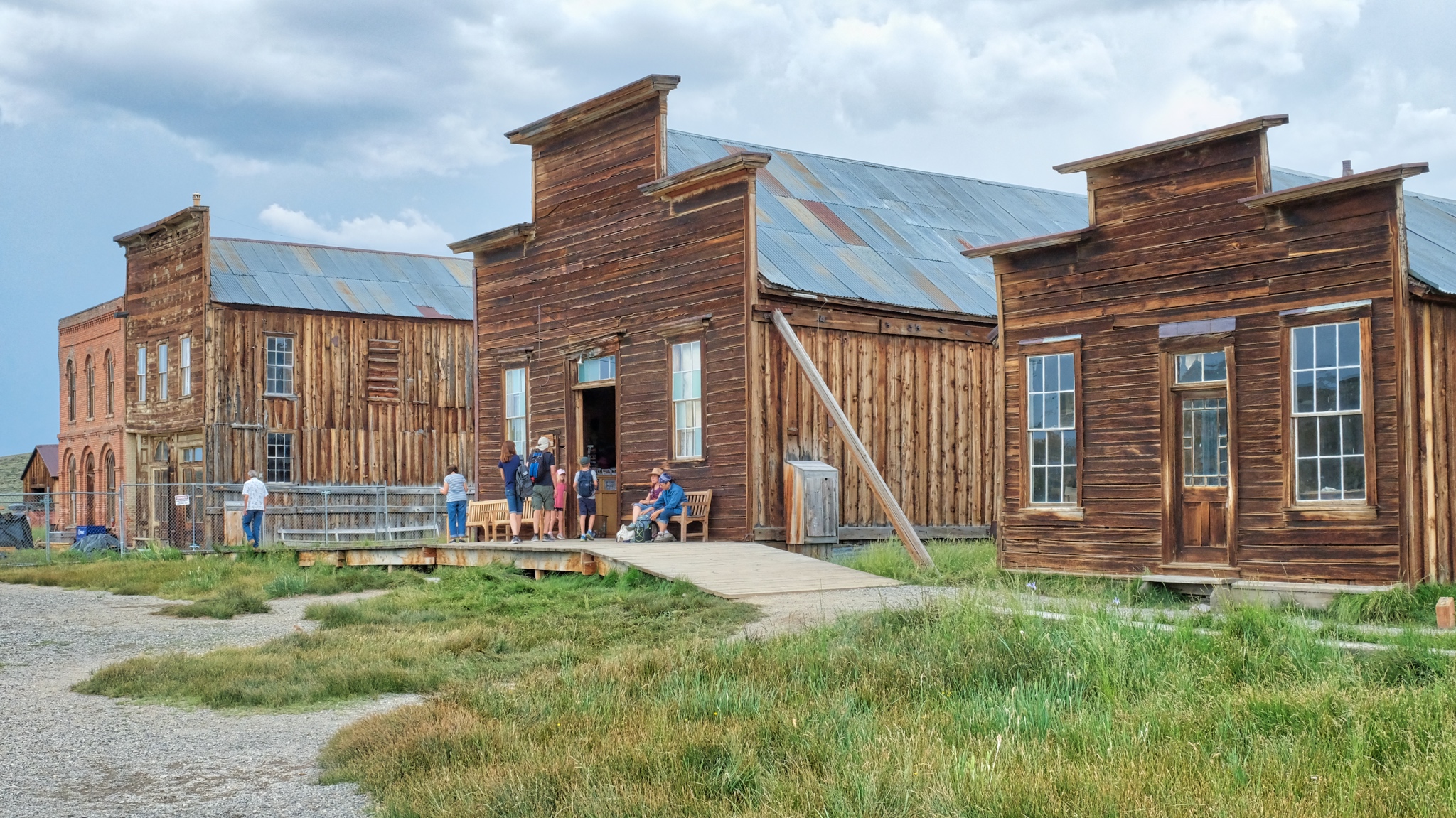 Bodie sees nearly 200,000 tourists yearly. The day we were there, we saw two large tour busses and four smaller vans full of tourists from France. They loved the place too. The building with the open door is the tourist information center, gift shop, and historical display.
Bodie sees nearly 200,000 tourists yearly. The day we were there, we saw two large tour busses and four smaller vans full of tourists from France. They loved the place too. The building with the open door is the tourist information center, gift shop, and historical display.
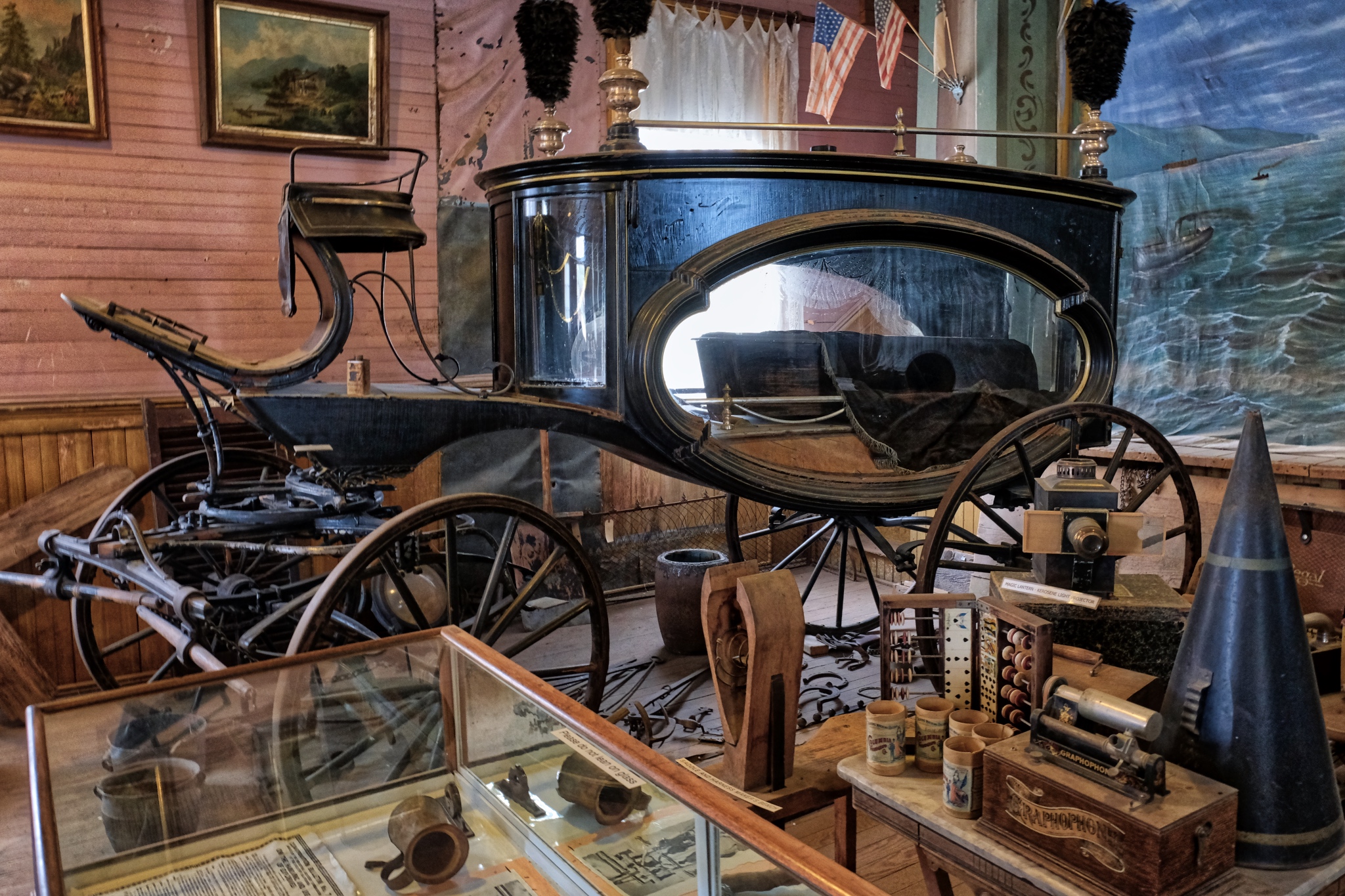 The museum had this wonderful horse drawn hearse, as well as many other finds from the site.
The museum had this wonderful horse drawn hearse, as well as many other finds from the site.
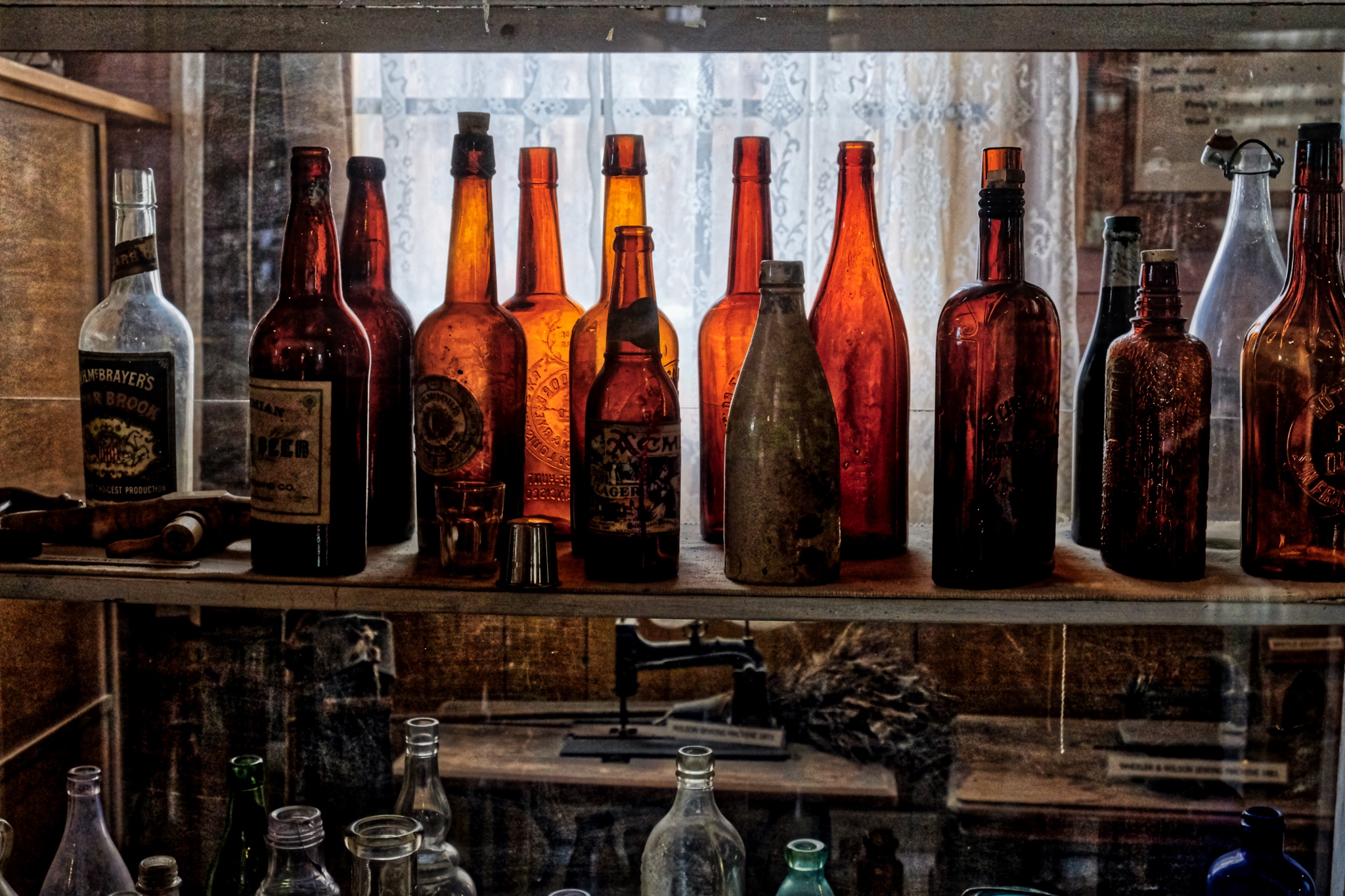 A lovely collection of amber bottles in the museum.
A lovely collection of amber bottles in the museum.
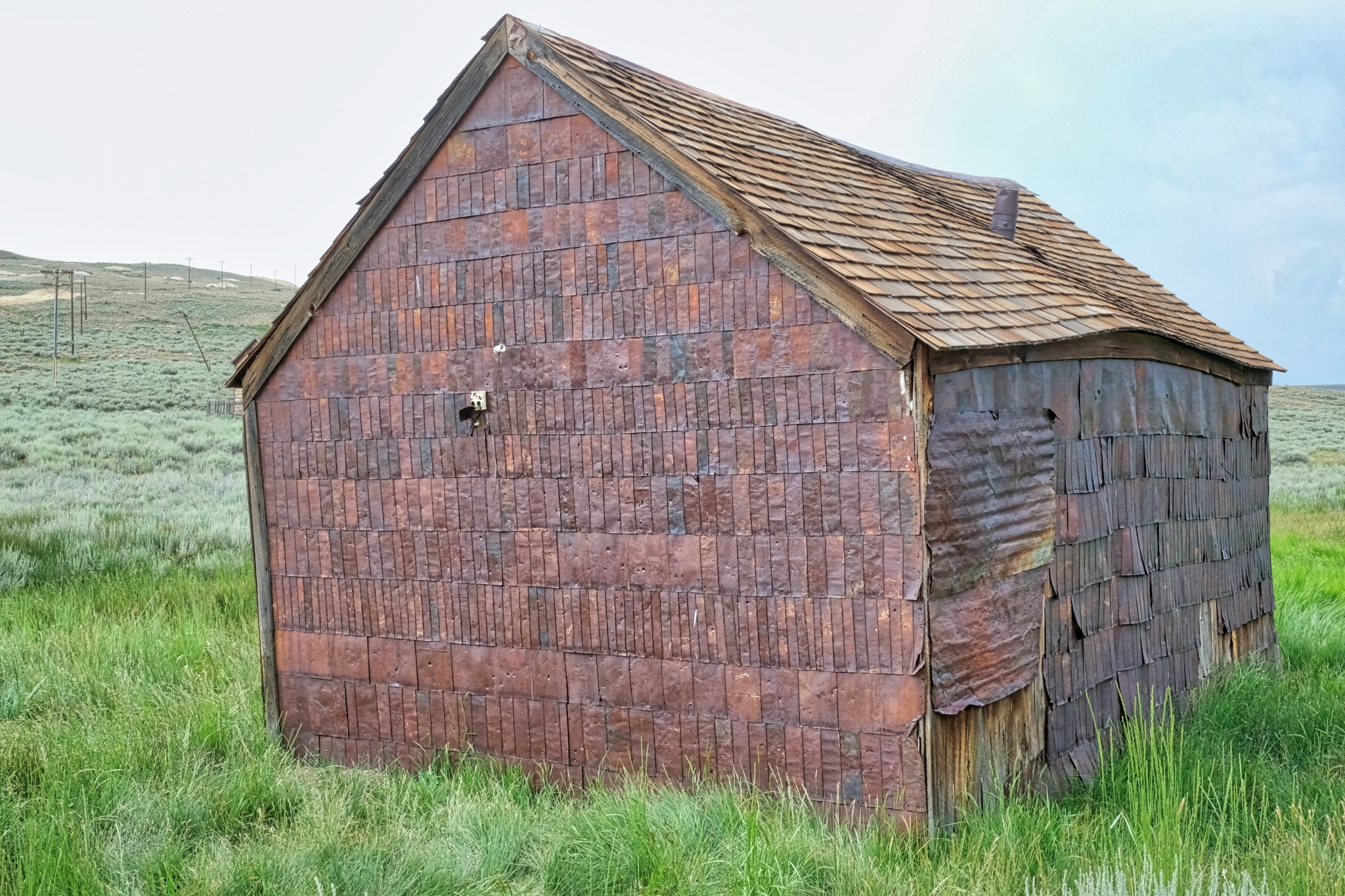 A number of the buildings used some kind of metal siding . . . as well as metal shingles on the roofs.
A number of the buildings used some kind of metal siding . . . as well as metal shingles on the roofs.
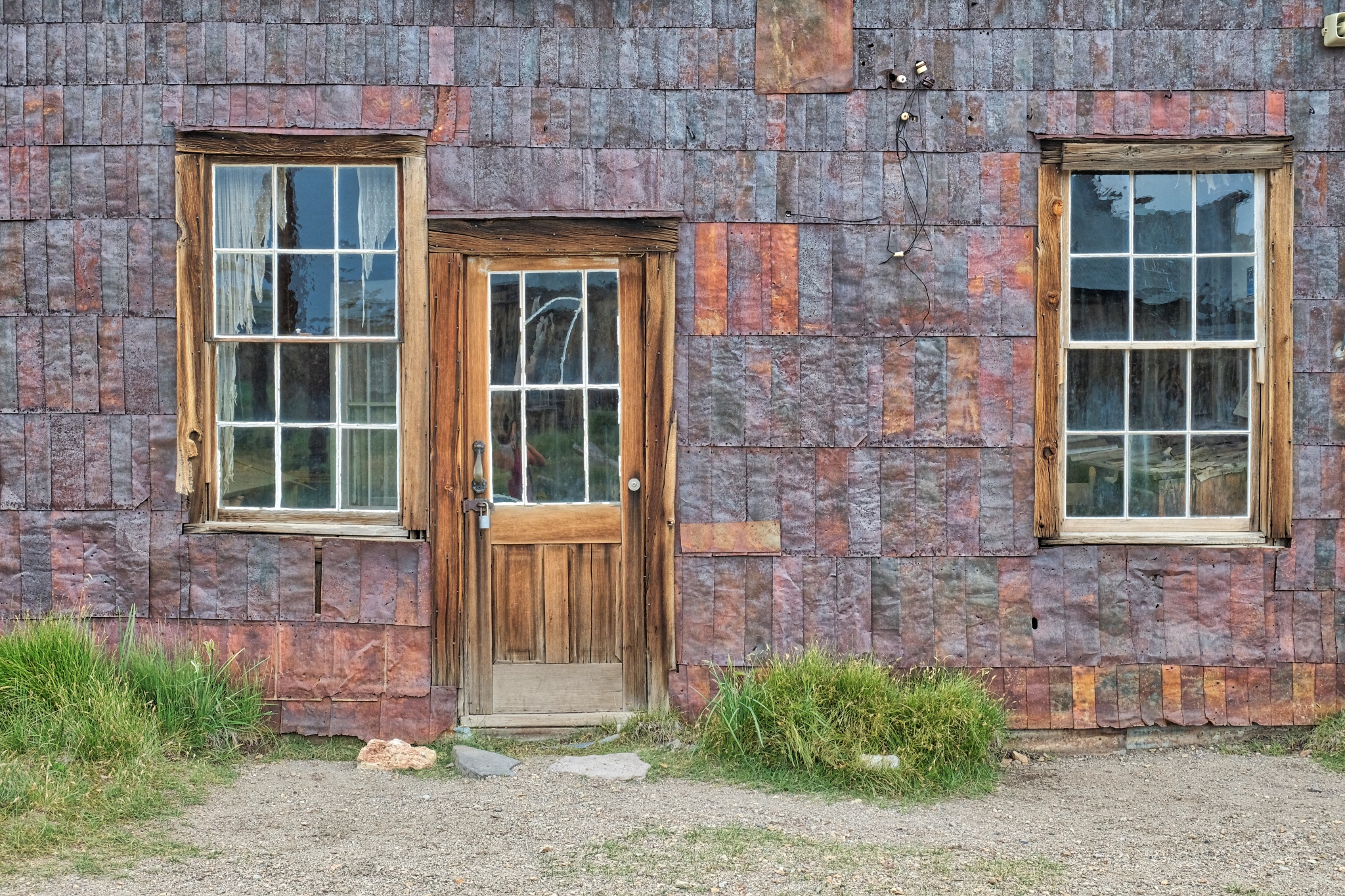 I was fascinated by this metal siding.
I was fascinated by this metal siding.
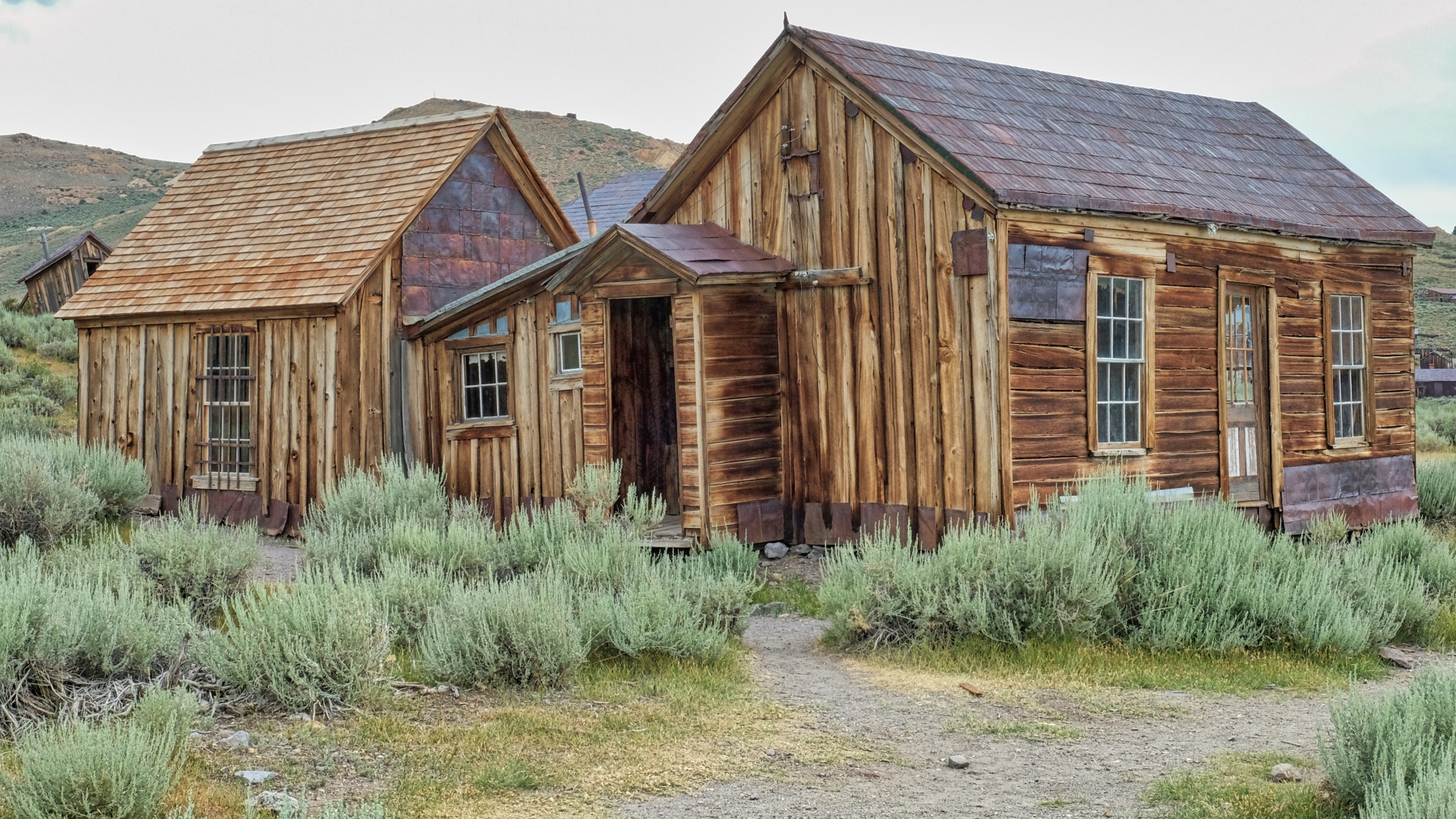 The small metal sheets were used all around Bodie. This house used metal for the roof, as a siding, and for various patching.
The small metal sheets were used all around Bodie. This house used metal for the roof, as a siding, and for various patching.
 Upon closer inspection, I came to the conclusion that the metal strips were, in fact, opened up 'tin cans' . . . which were made from iron and steel in those days. Because of the altitude and cold weather (303 nights a year with below freezing temperature), and deep snow (average 10 feet or more of snow per year) in the winter meant they must have had to import a lot of food . . . which at that time was packed into cans. You can see the can ridges on some of the large metal strips.
Upon closer inspection, I came to the conclusion that the metal strips were, in fact, opened up 'tin cans' . . . which were made from iron and steel in those days. Because of the altitude and cold weather (303 nights a year with below freezing temperature), and deep snow (average 10 feet or more of snow per year) in the winter meant they must have had to import a lot of food . . . which at that time was packed into cans. You can see the can ridges on some of the large metal strips.
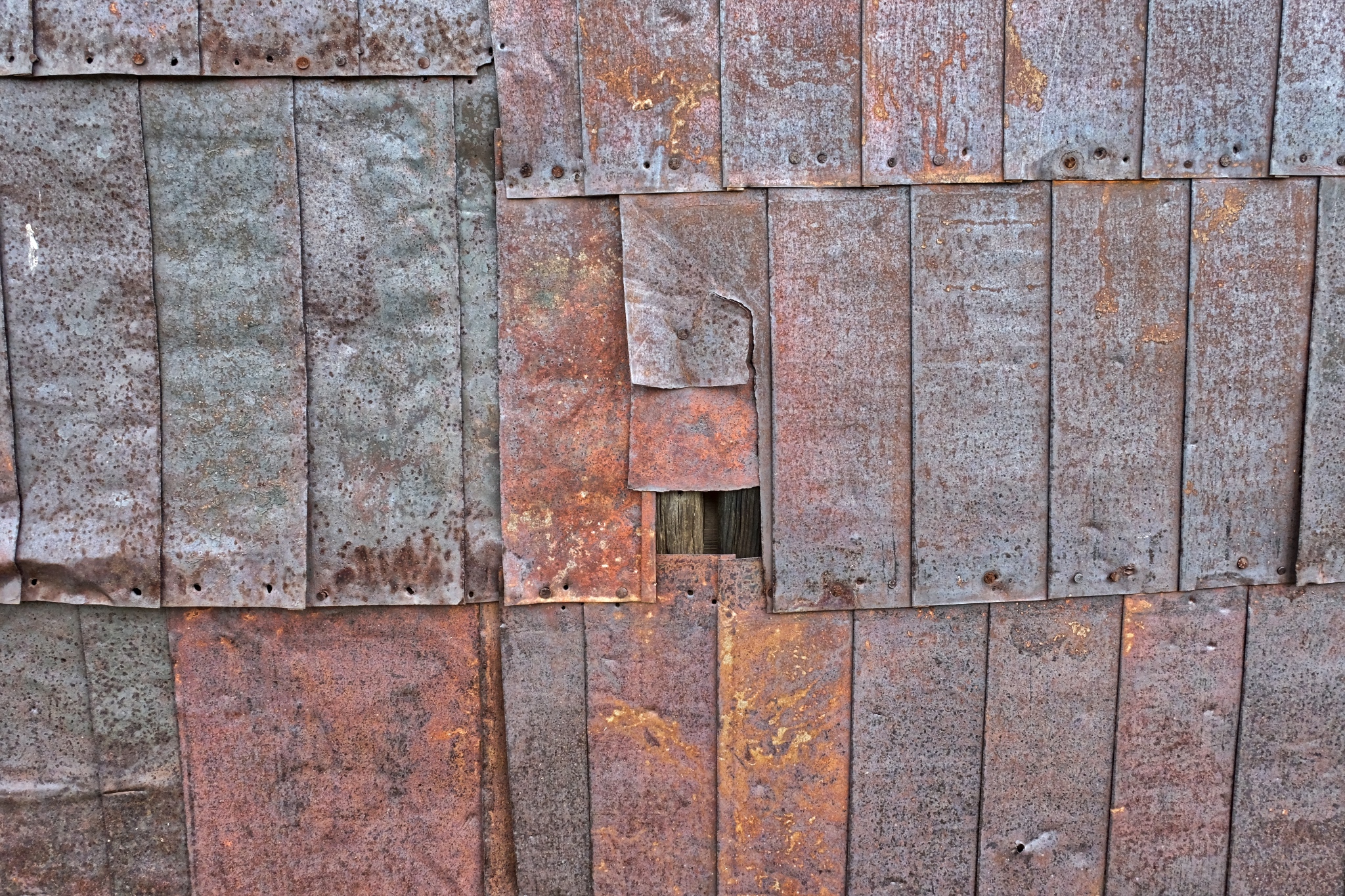 A kind of early recycling. In addition, these walls are visually very interesting in their own right.
A kind of early recycling. In addition, these walls are visually very interesting in their own right.
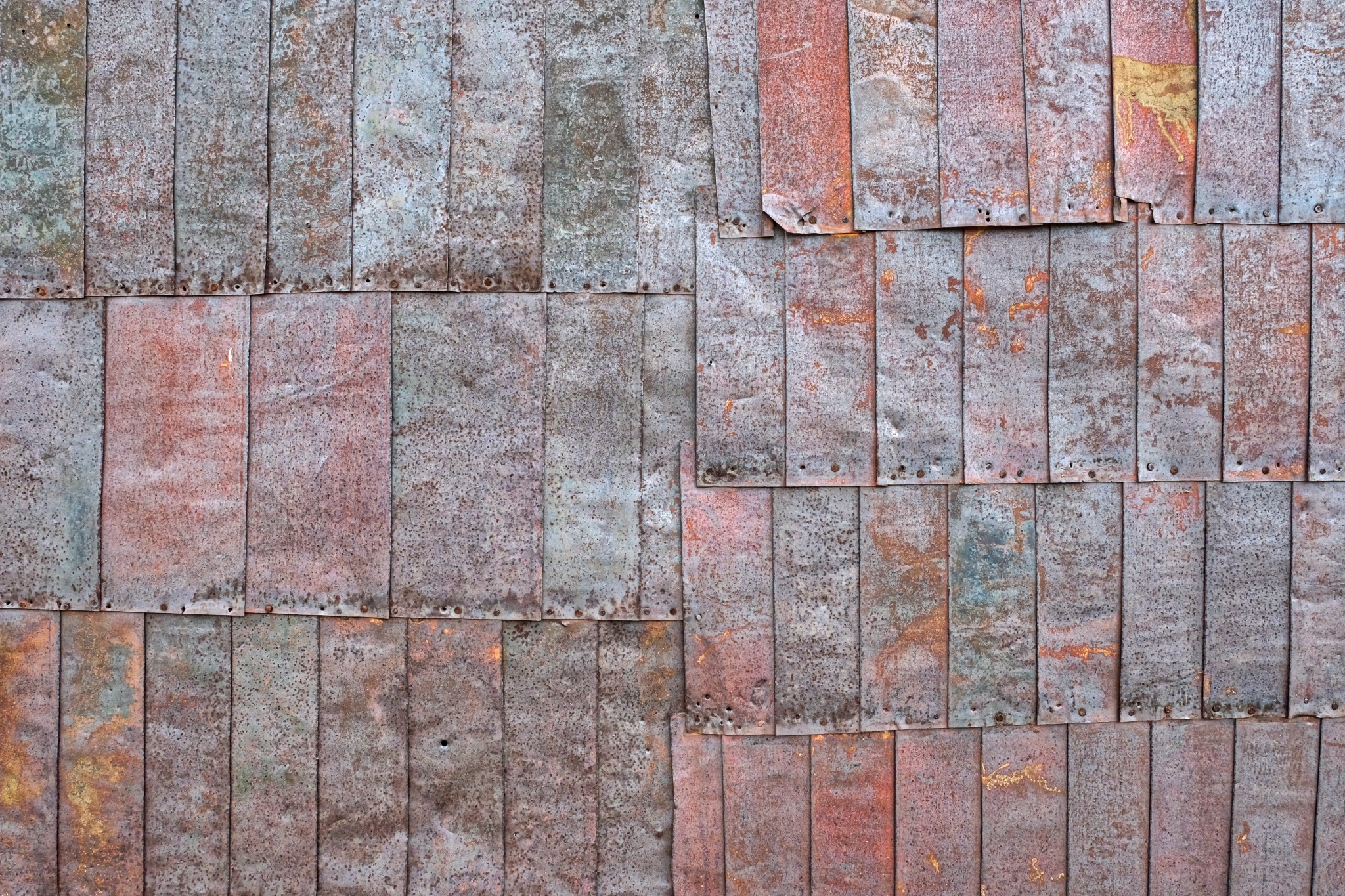 One more . . . just for the artistic effect.
One more . . . just for the artistic effect.
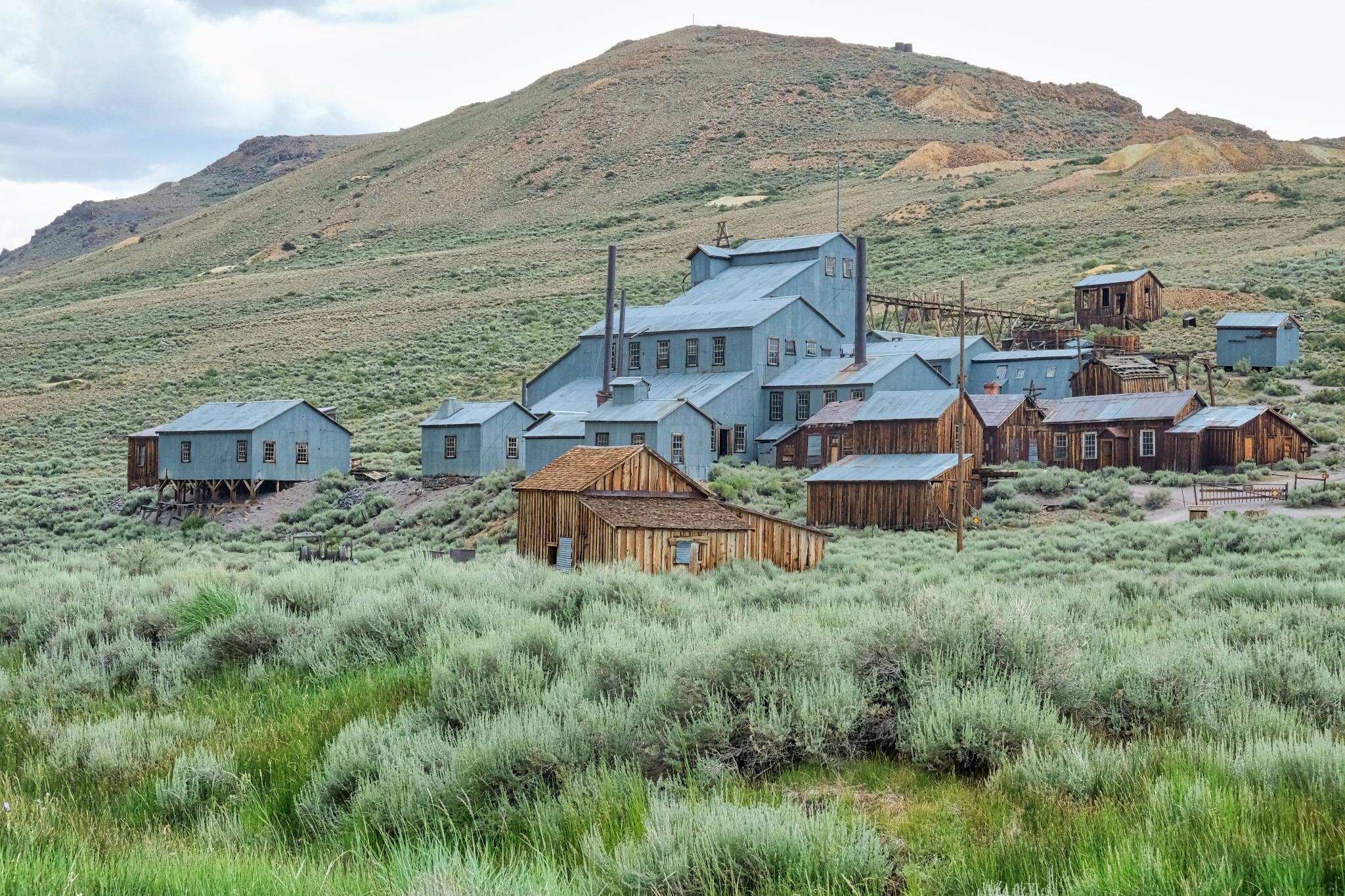 1881 was the highest production from the Bodie mines: $3.1 million US dollars. The total value of all the gold pulled from the ground here was $34 million US dollars . . . a lot of money at that time!
1881 was the highest production from the Bodie mines: $3.1 million US dollars. The total value of all the gold pulled from the ground here was $34 million US dollars . . . a lot of money at that time!
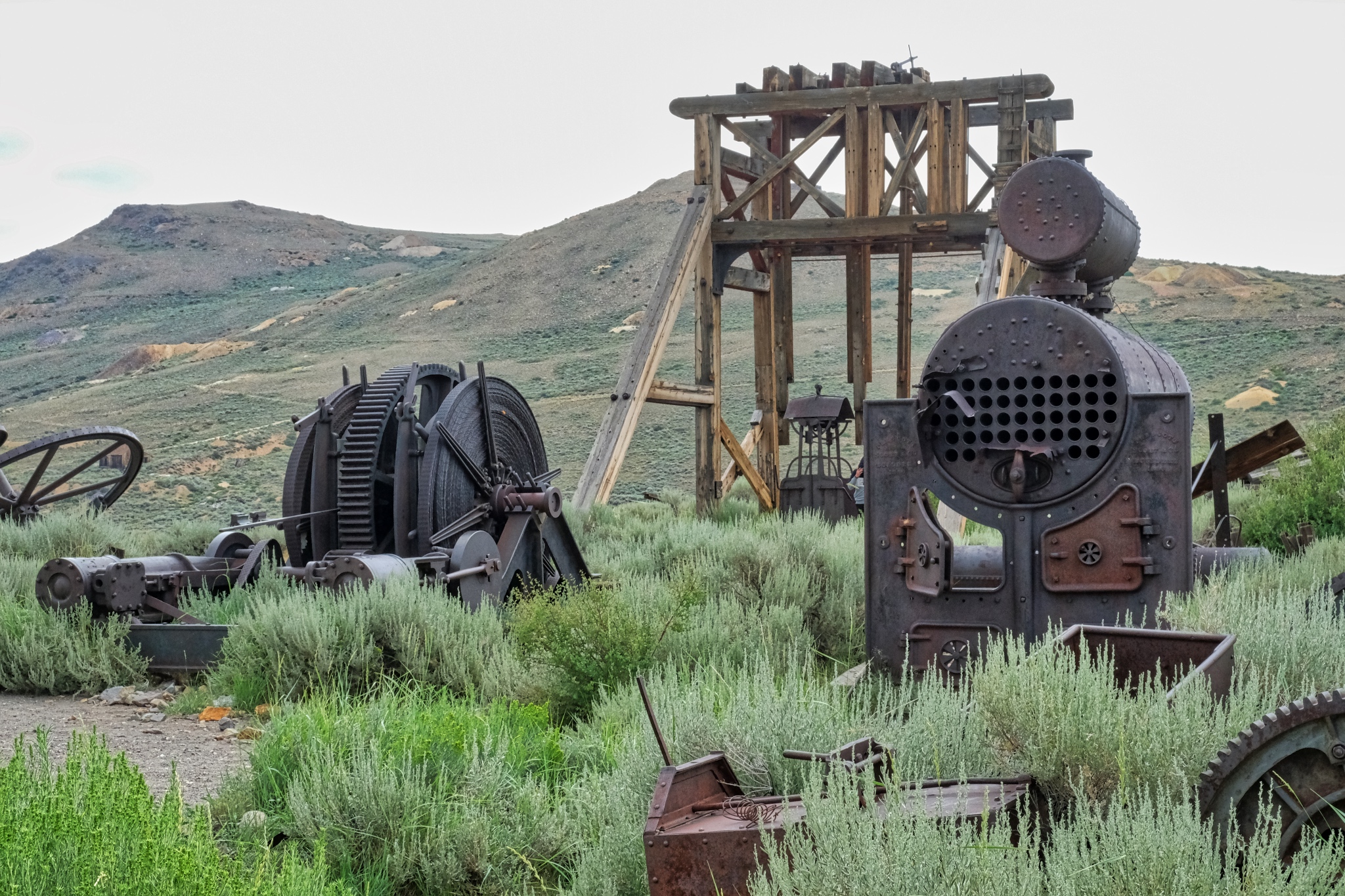 There is still a lot of mechanical debris left over from the age of industrial mining.
There is still a lot of mechanical debris left over from the age of industrial mining.
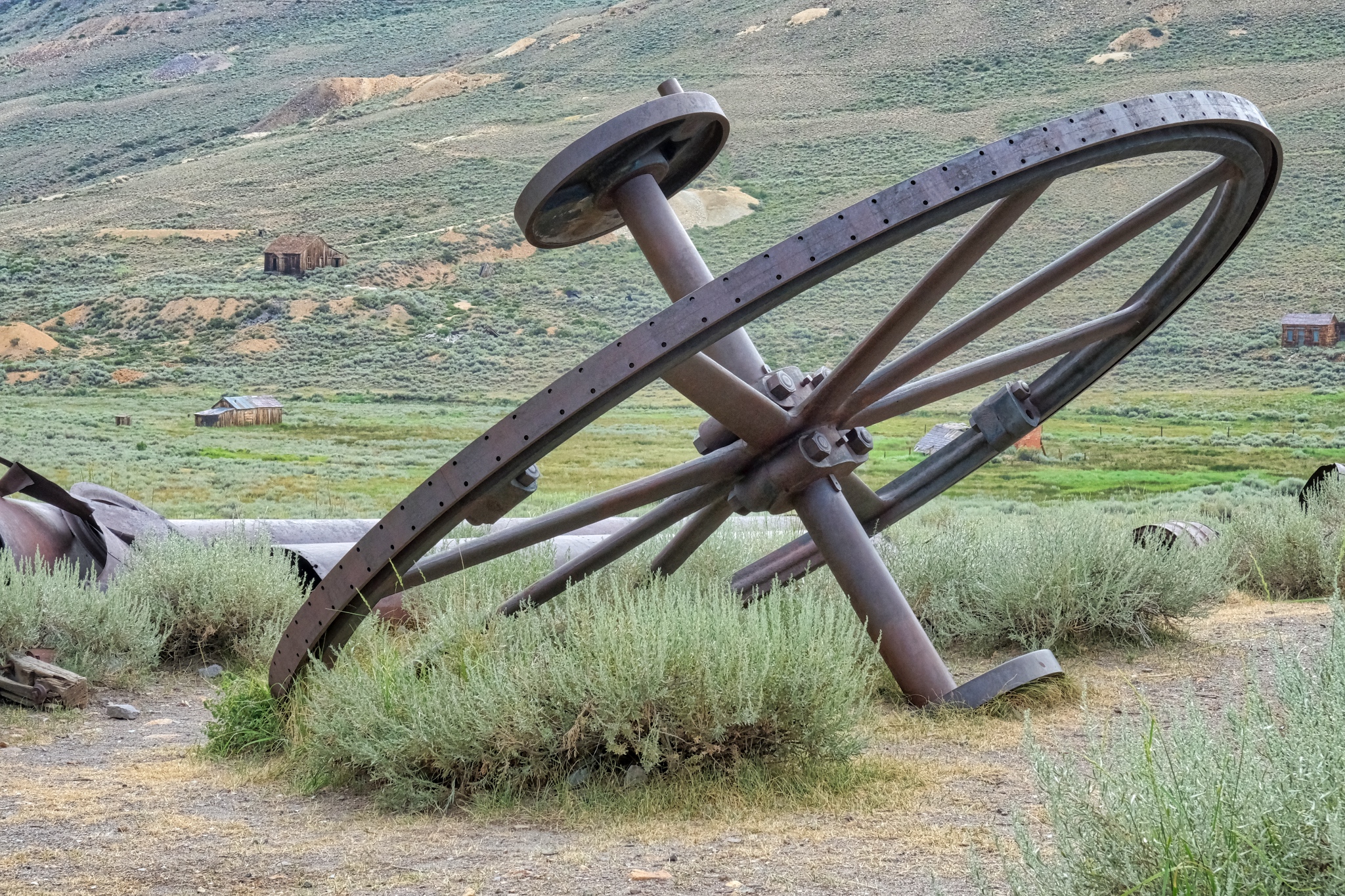 It is interesting to try and imagine where these parts went and what their purposes might have been.
It is interesting to try and imagine where these parts went and what their purposes might have been.
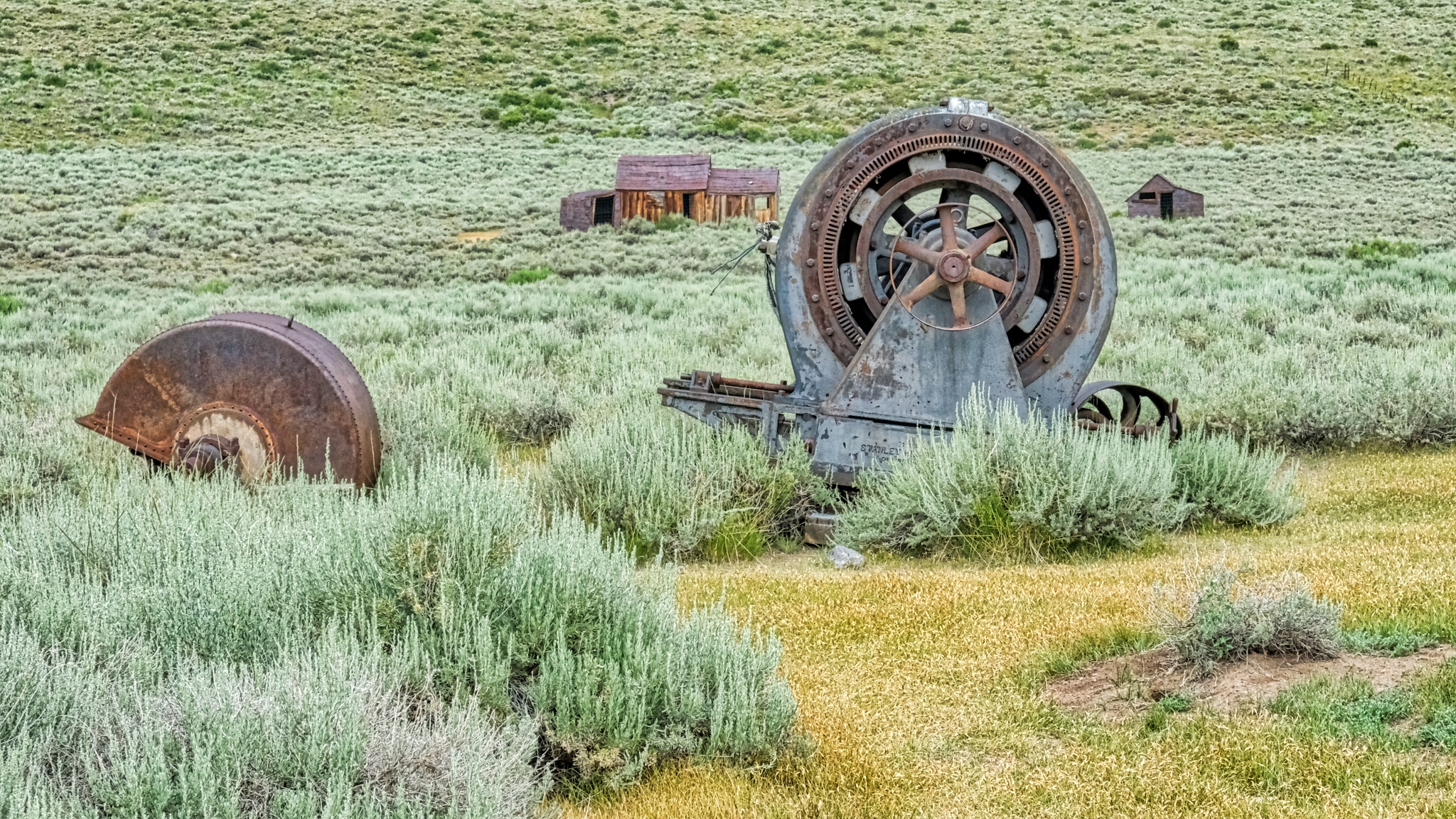 Your guess is as good as mine . . . .
Your guess is as good as mine . . . .
 There were many mine head rigs and tanks across the area.
There were many mine head rigs and tanks across the area.
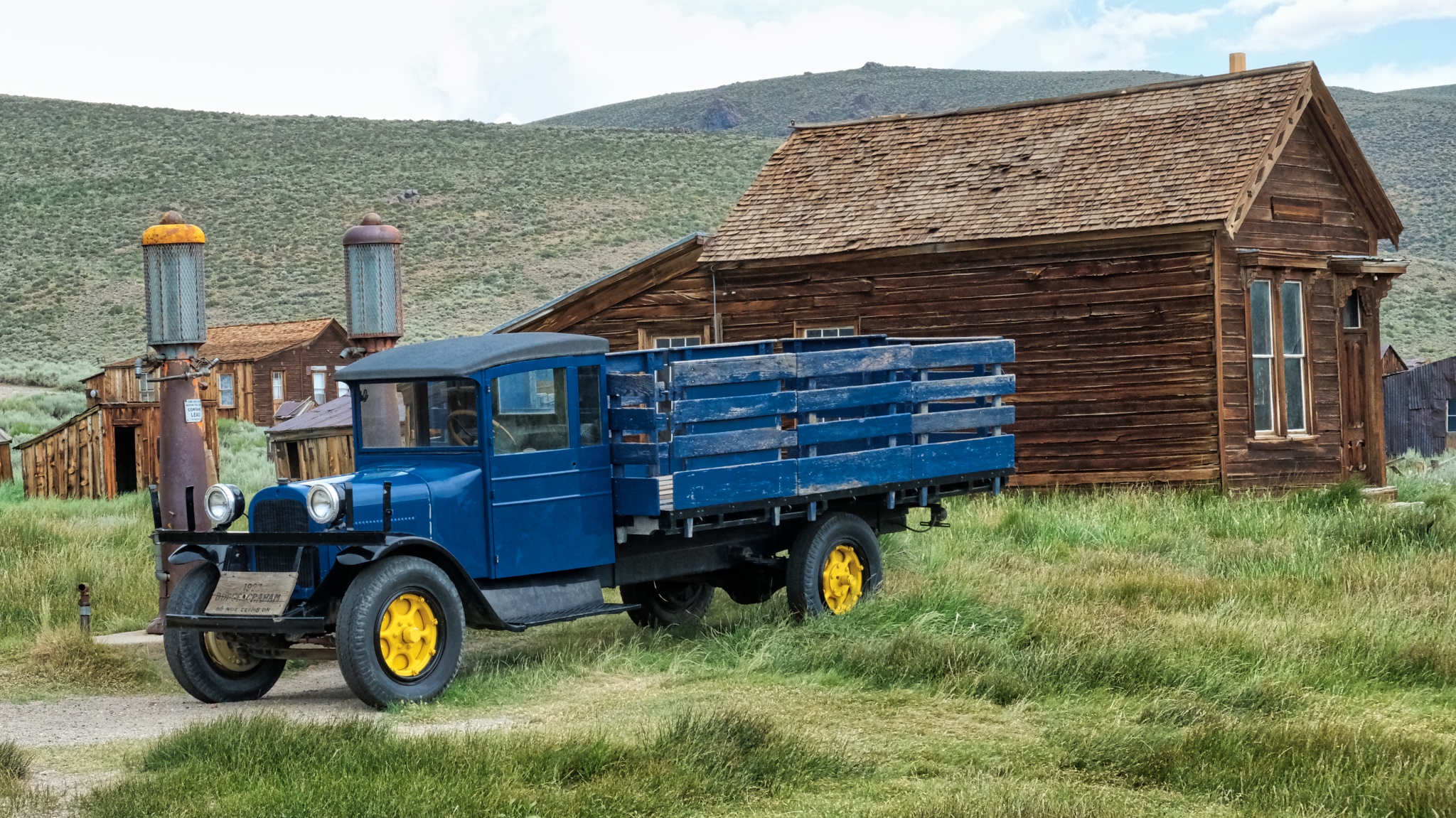 Although the rail line was torn up, trucks continued to supply the town with food, supplies, and machinery.
Although the rail line was torn up, trucks continued to supply the town with food, supplies, and machinery.
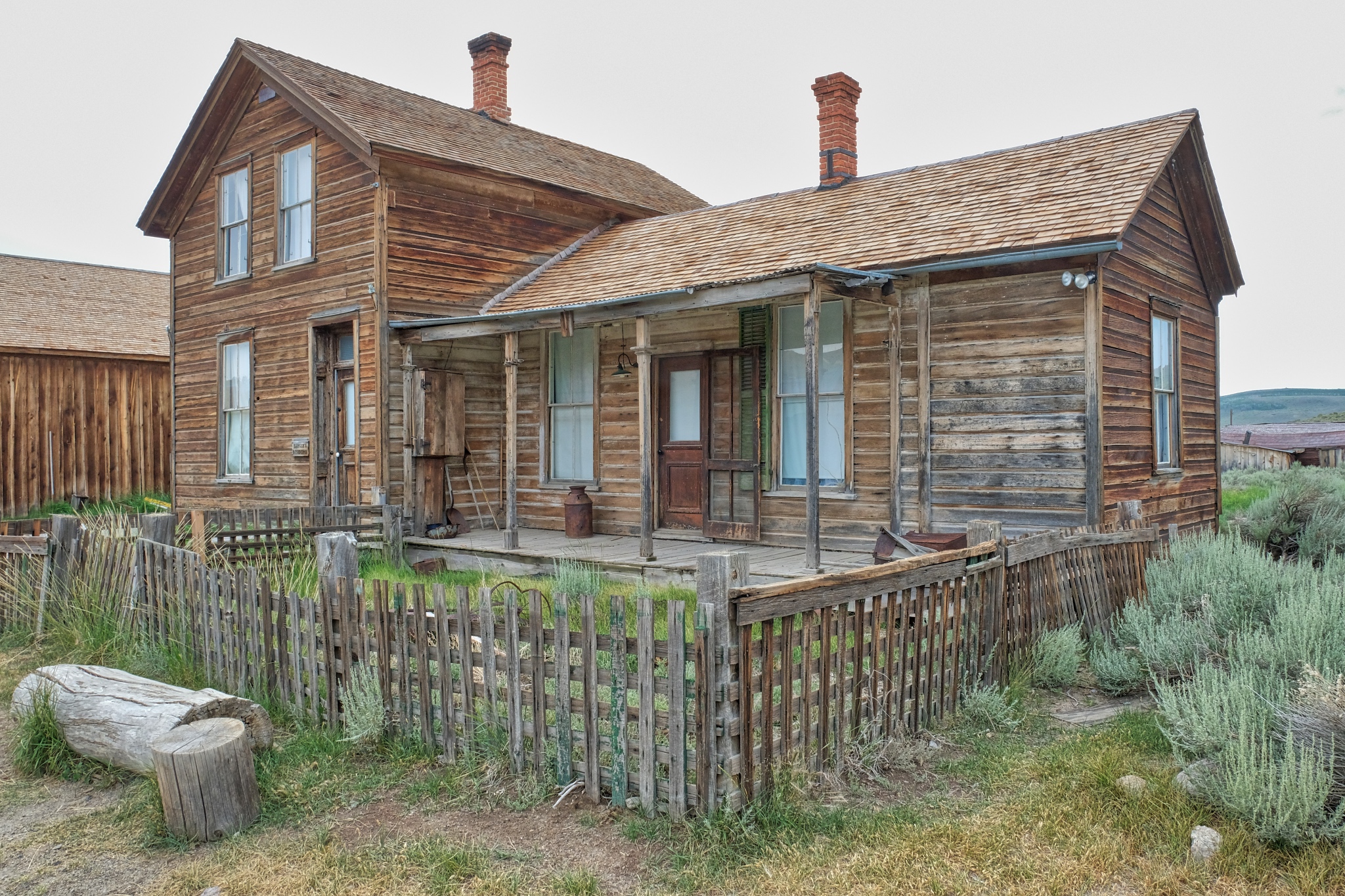 There were some very nice old homes here. Although it was designated a ghost town as early as 1915, there were still a few hardy souls who lived in Bodie up into the 1950s.
There were some very nice old homes here. Although it was designated a ghost town as early as 1915, there were still a few hardy souls who lived in Bodie up into the 1950s.
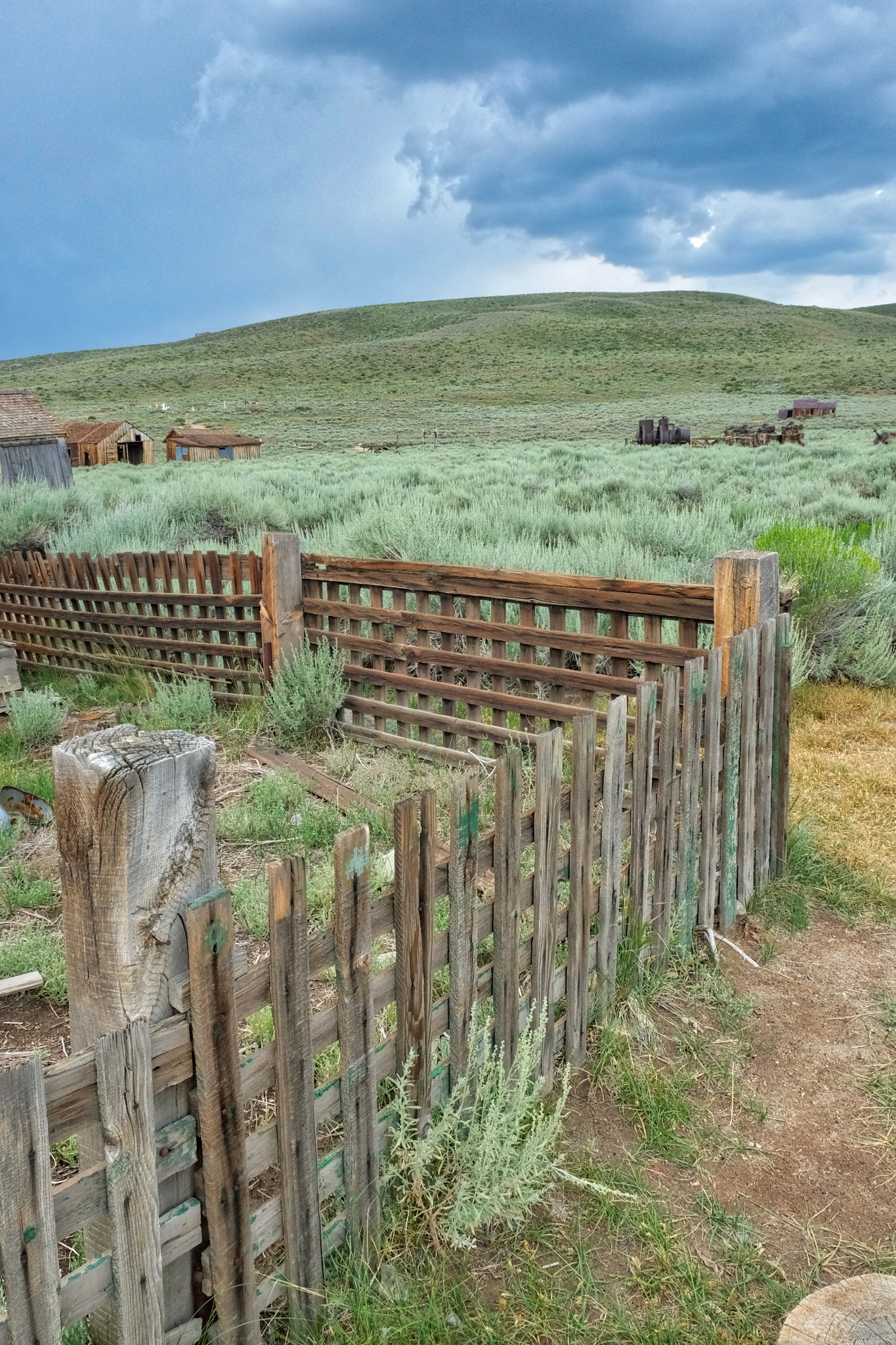 This view back in the day would have had many more houses in it.
This view back in the day would have had many more houses in it.
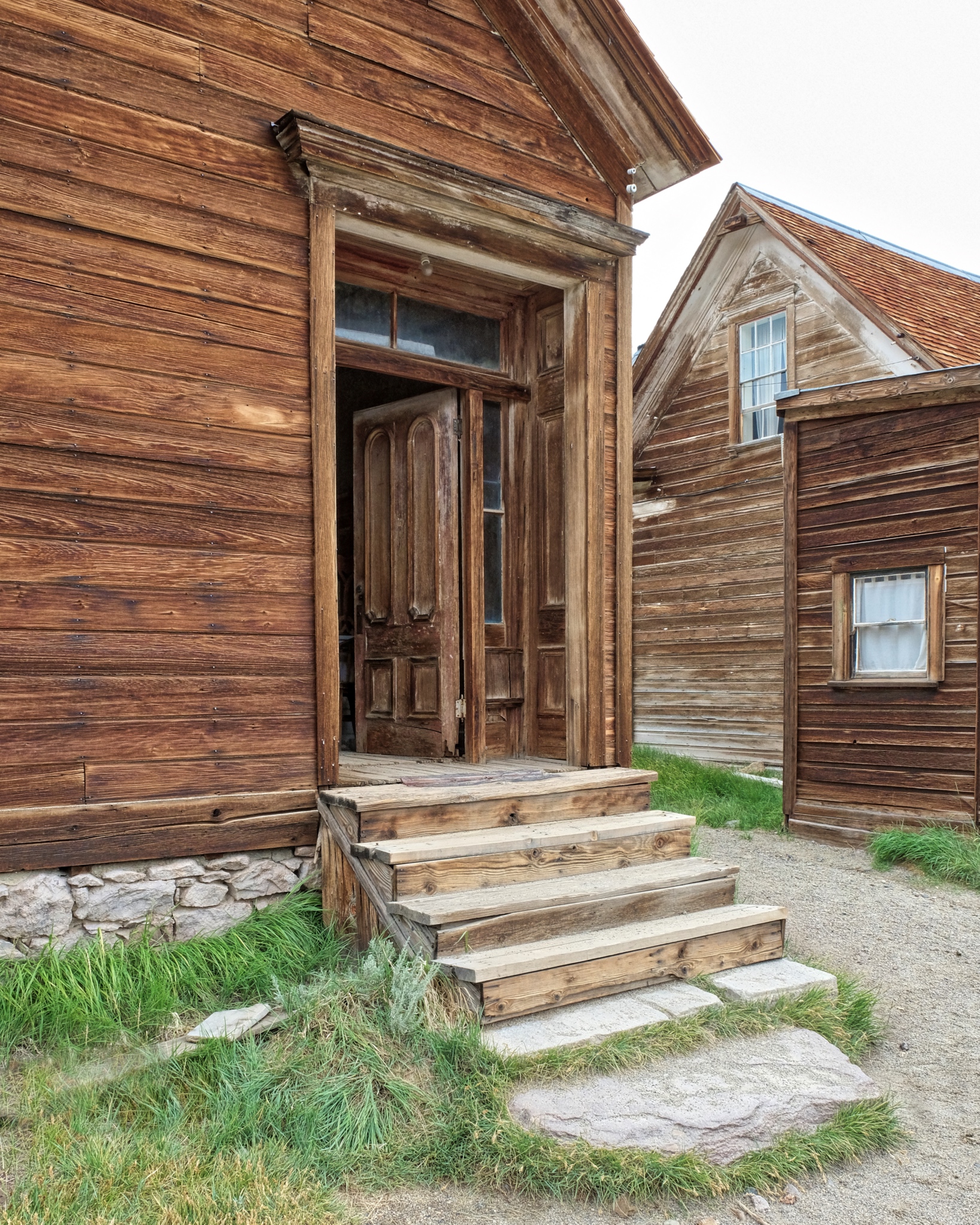 One house had an open door . . . so I went in for a look.
One house had an open door . . . so I went in for a look.
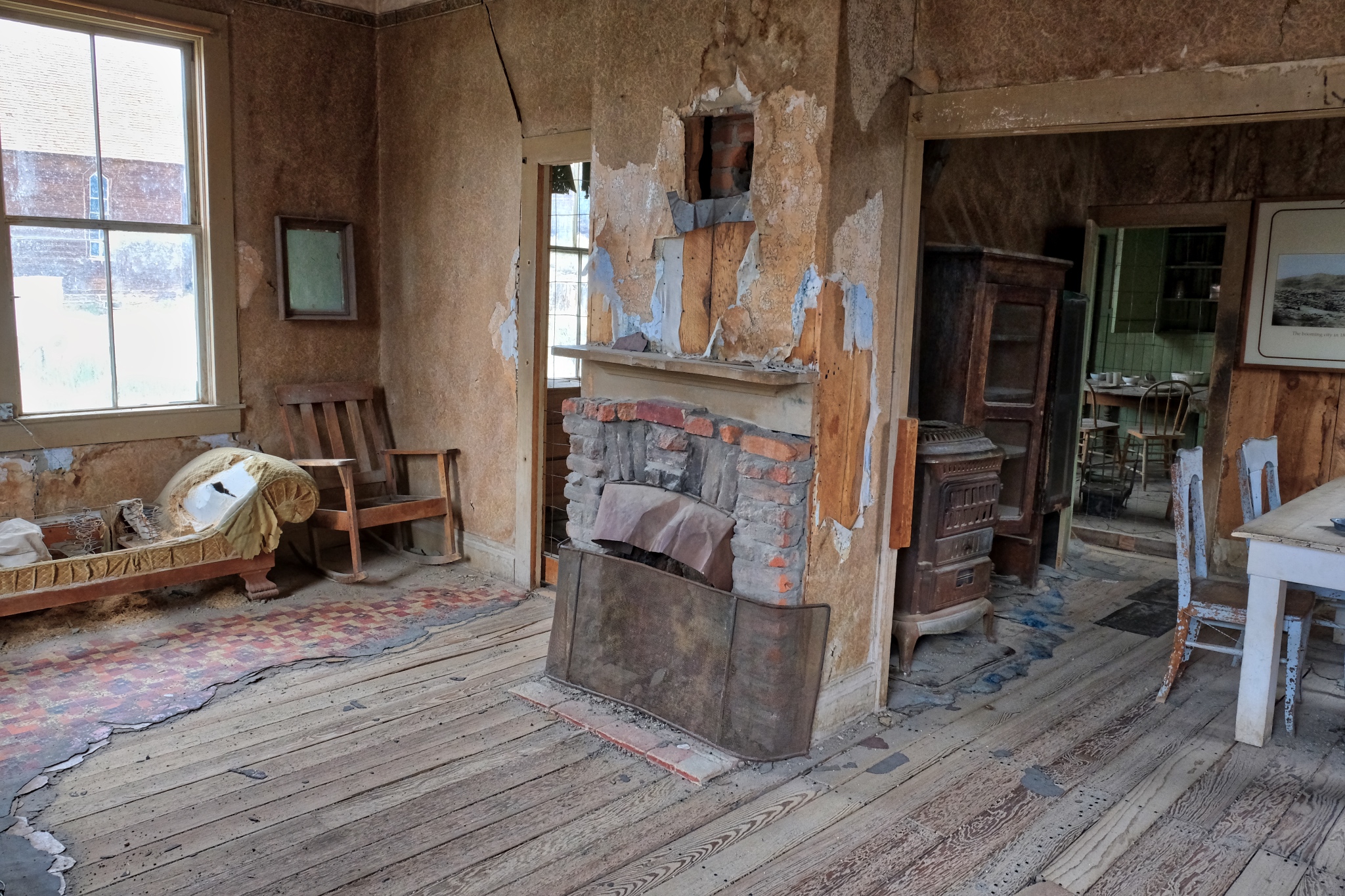 Fantastic!
Fantastic!
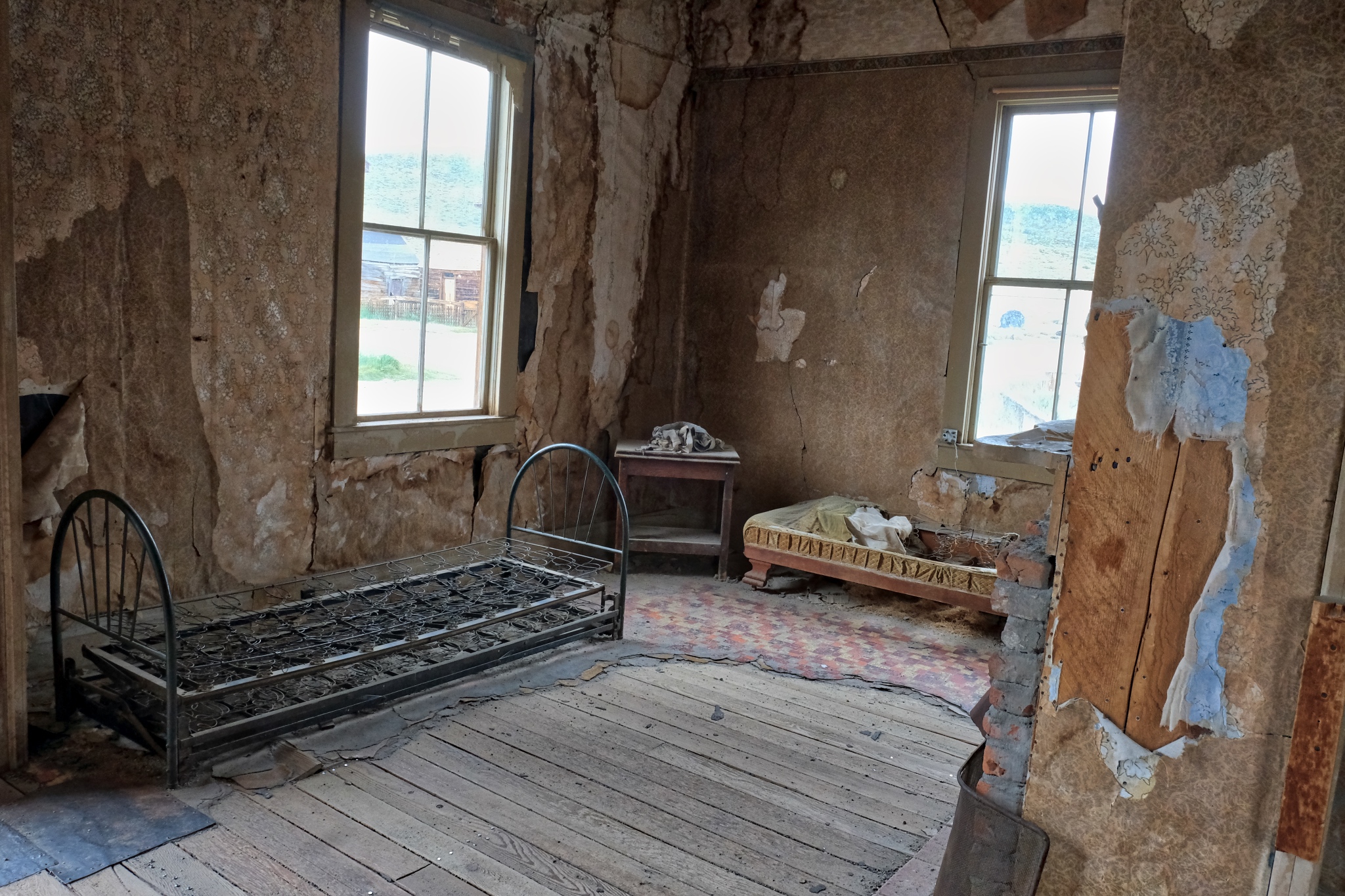 Although tens of thousands of visitors come to Bodie every year, it still feels like a discovery to find these old abandoned rooms.
Although tens of thousands of visitors come to Bodie every year, it still feels like a discovery to find these old abandoned rooms.
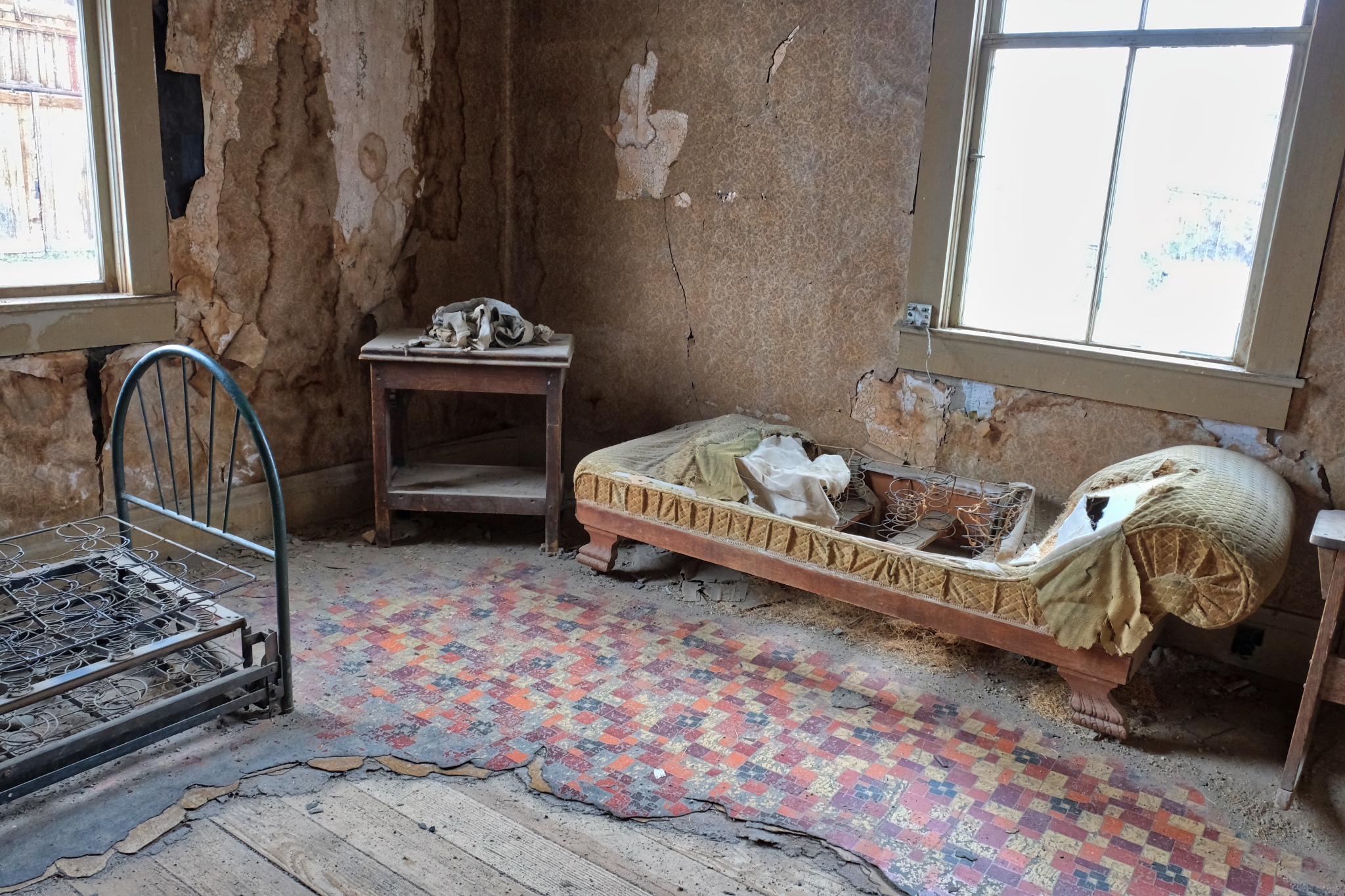 I cannot tell if the furniture is original, but those layers of linoleum sure are!
I cannot tell if the furniture is original, but those layers of linoleum sure are!
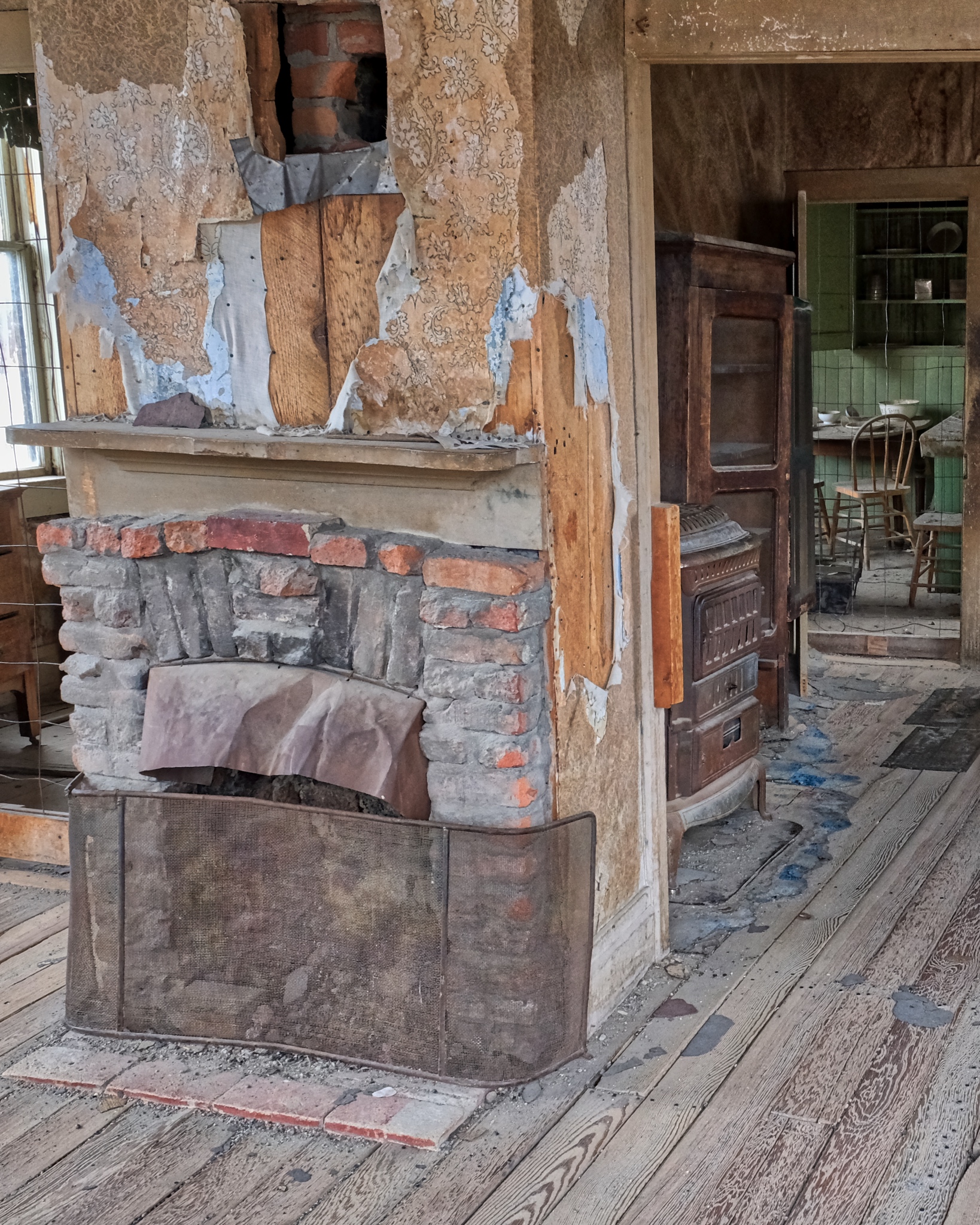 Again, some of these old homes were lived in up to the 1950s, so I am not sure if this is one of those houses or it it dates to the end of mining around 1916.
Again, some of these old homes were lived in up to the 1950s, so I am not sure if this is one of those houses or it it dates to the end of mining around 1916.
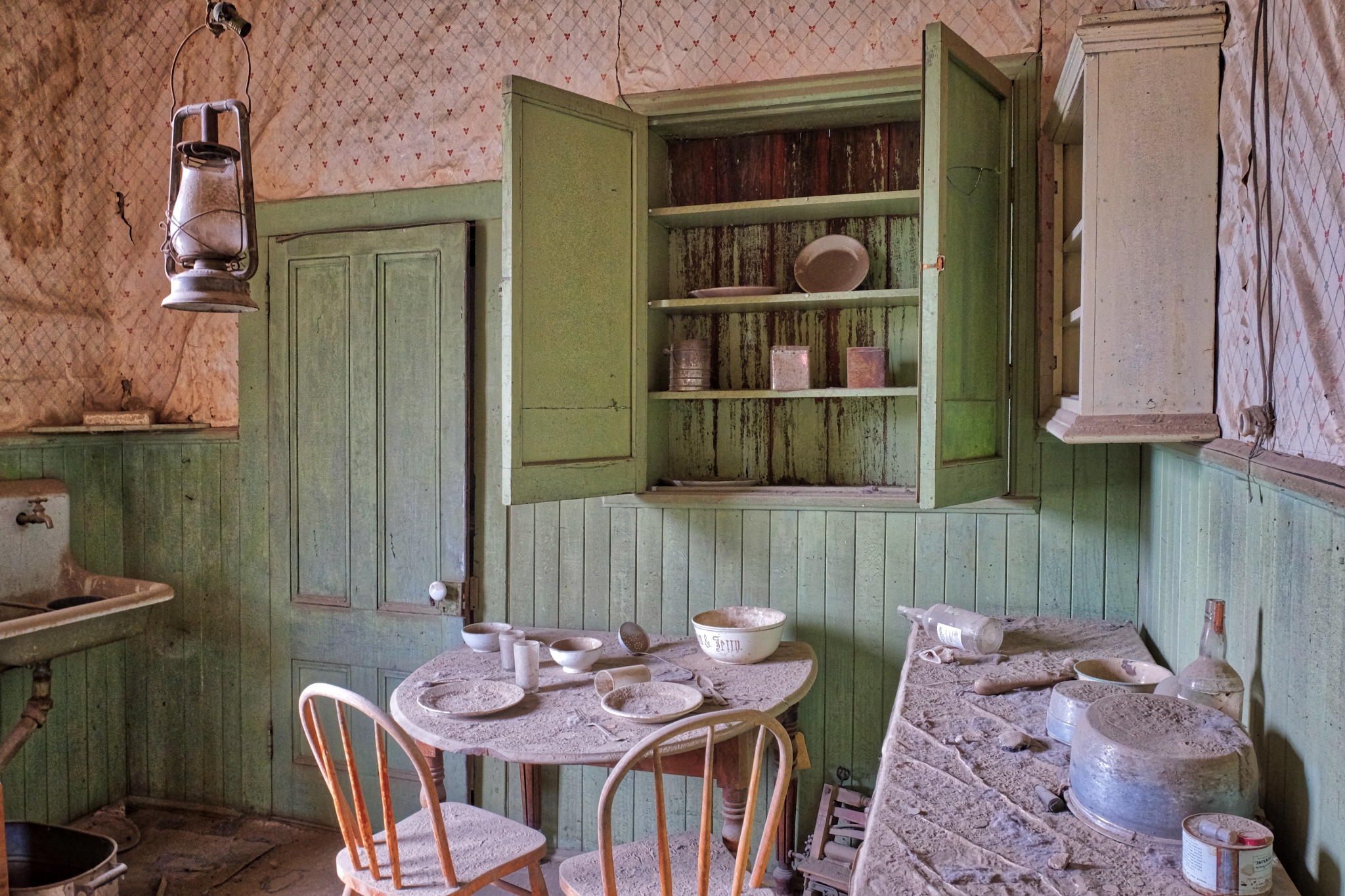 "The last breakfast" table still set. At least they didn't have to do the dishes on that last day . . .
"The last breakfast" table still set. At least they didn't have to do the dishes on that last day . . .
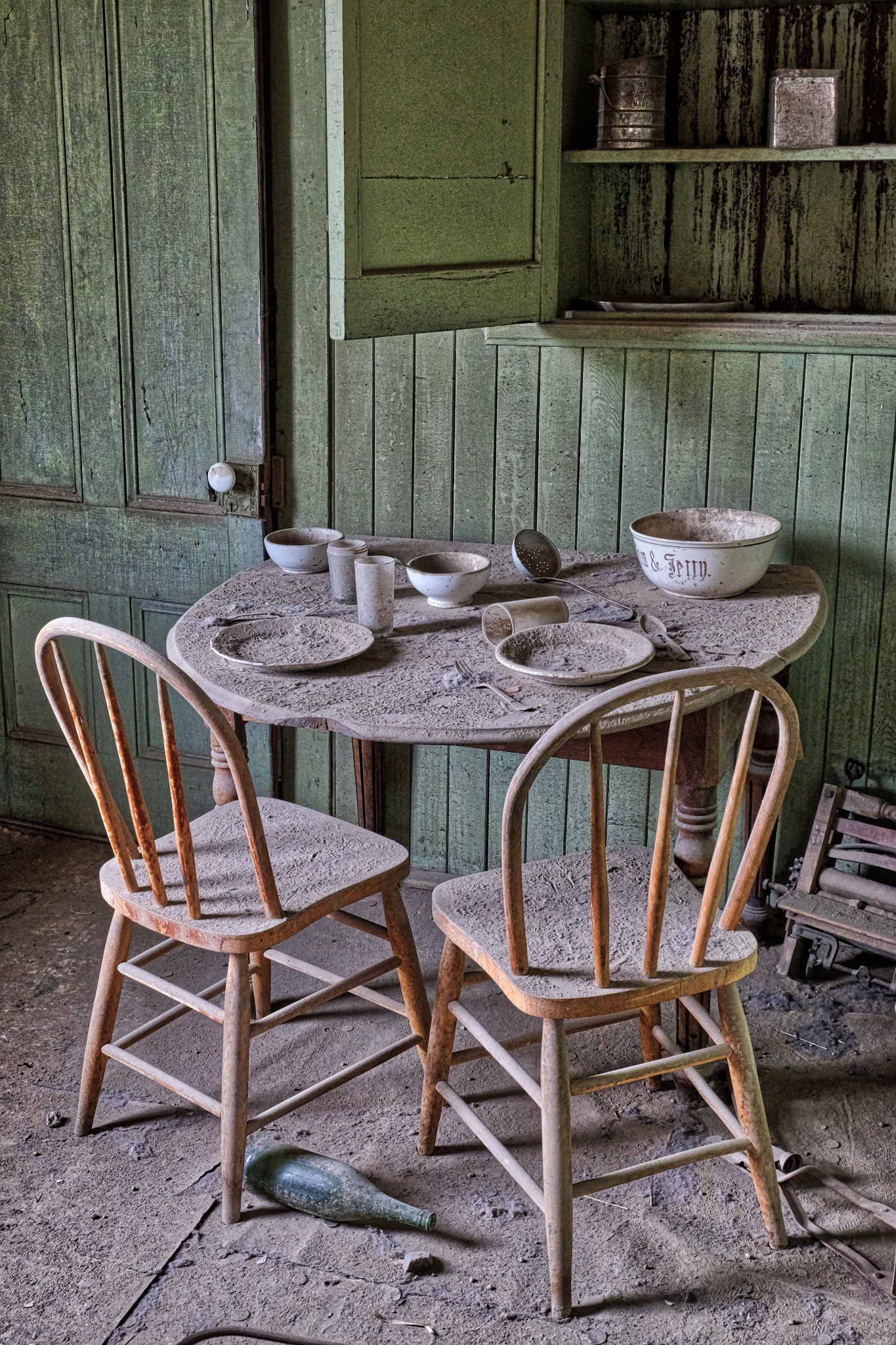 Wonderful patina of age.
Wonderful patina of age.
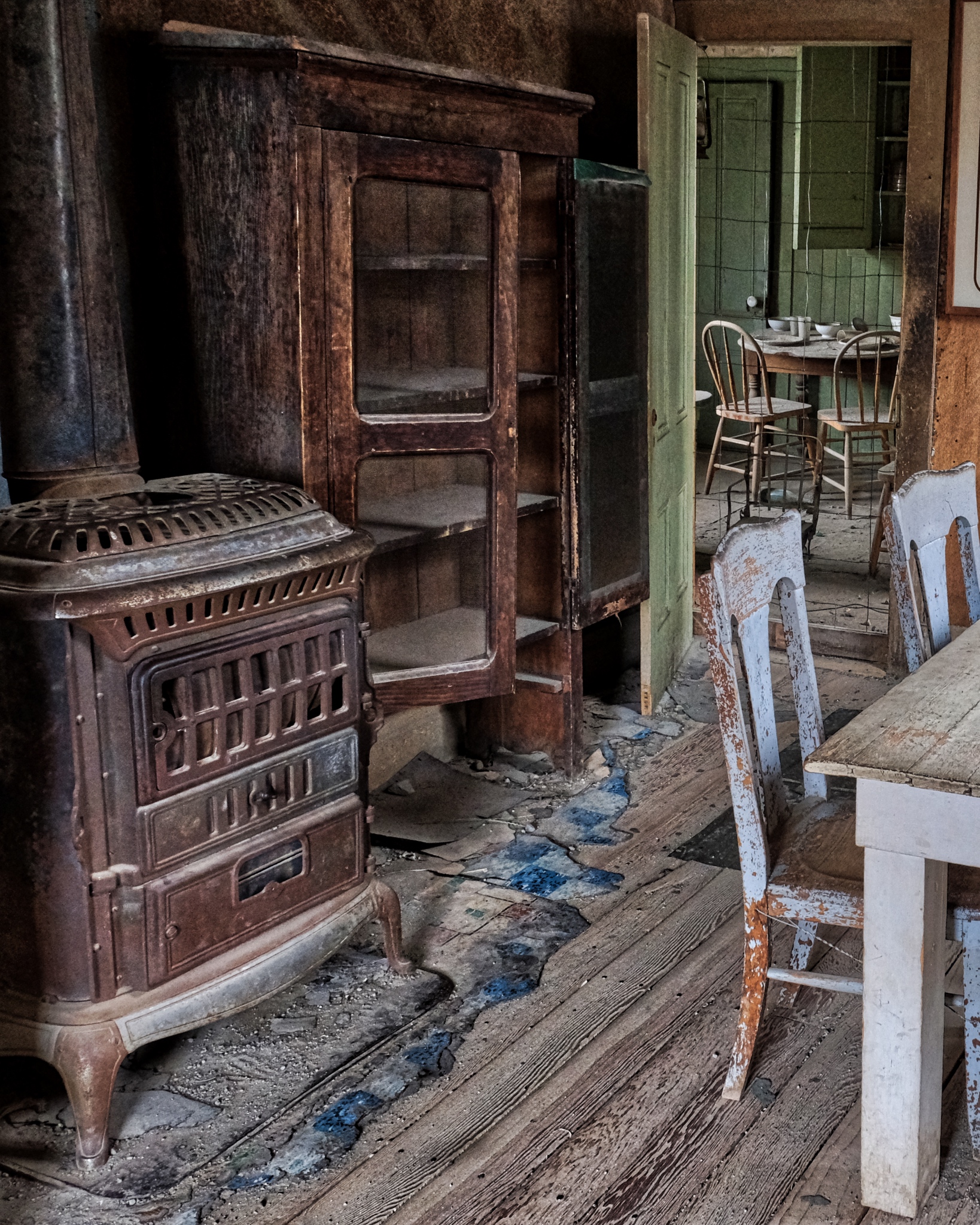 The old wood stove would have been the center of life in this very cold place.
The old wood stove would have been the center of life in this very cold place.
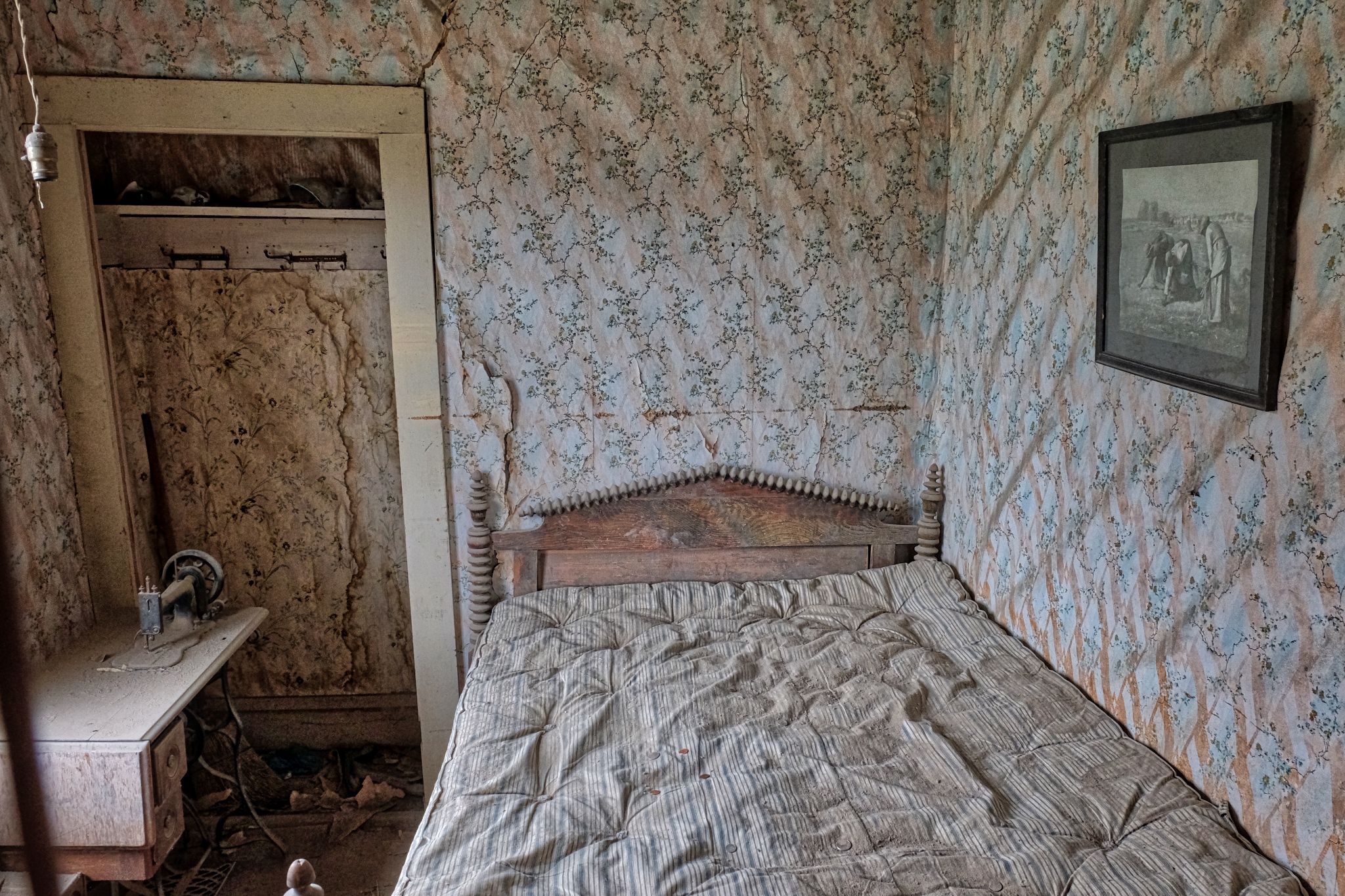 Looks like a cozy room . . . at one time.
Looks like a cozy room . . . at one time.
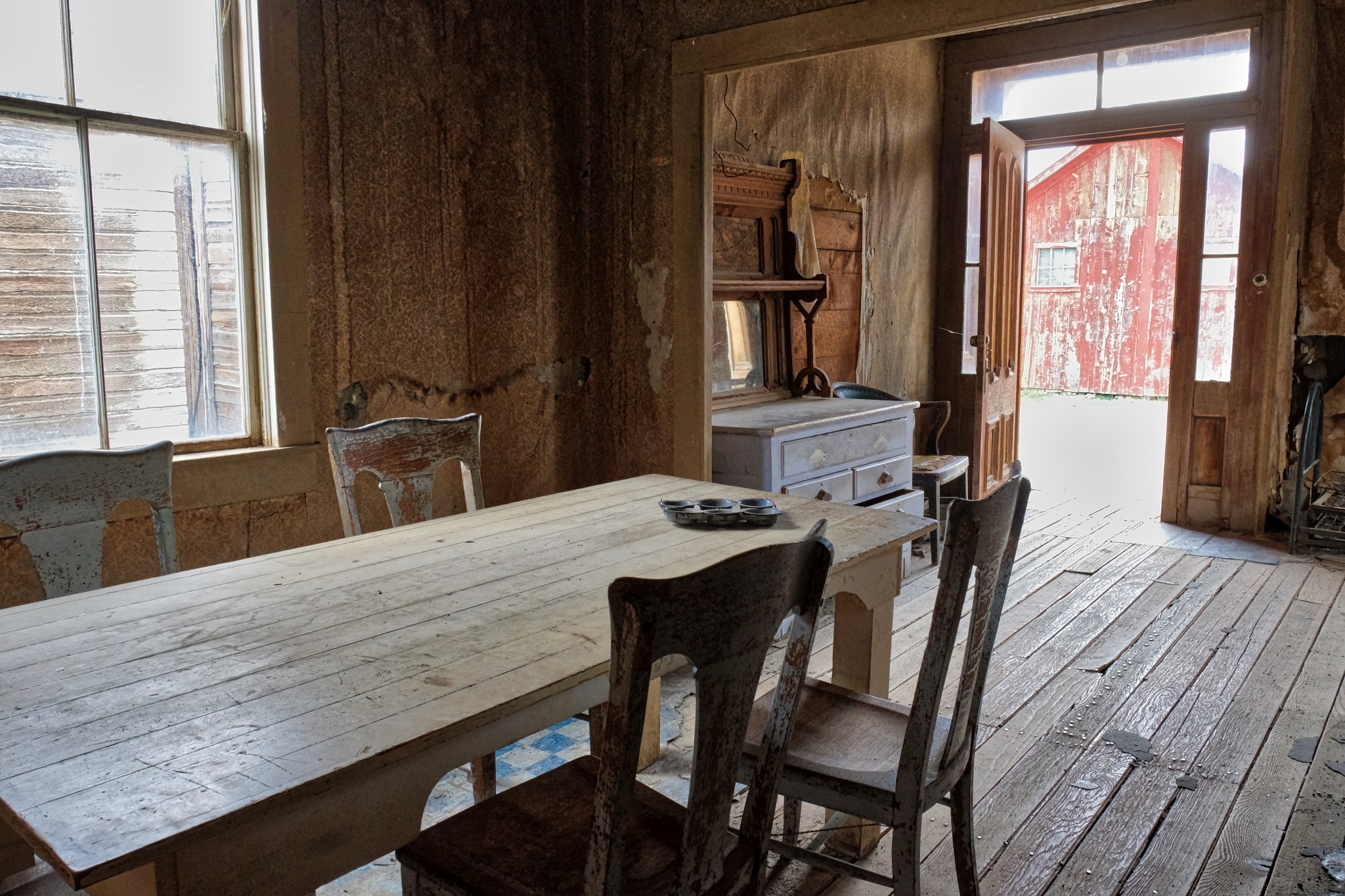 I spent a long time in this old house . . . soaking up the silent beauty . . . and reflecting on the human lives that were lived out here . . . and my own life.
I spent a long time in this old house . . . soaking up the silent beauty . . . and reflecting on the human lives that were lived out here . . . and my own life.
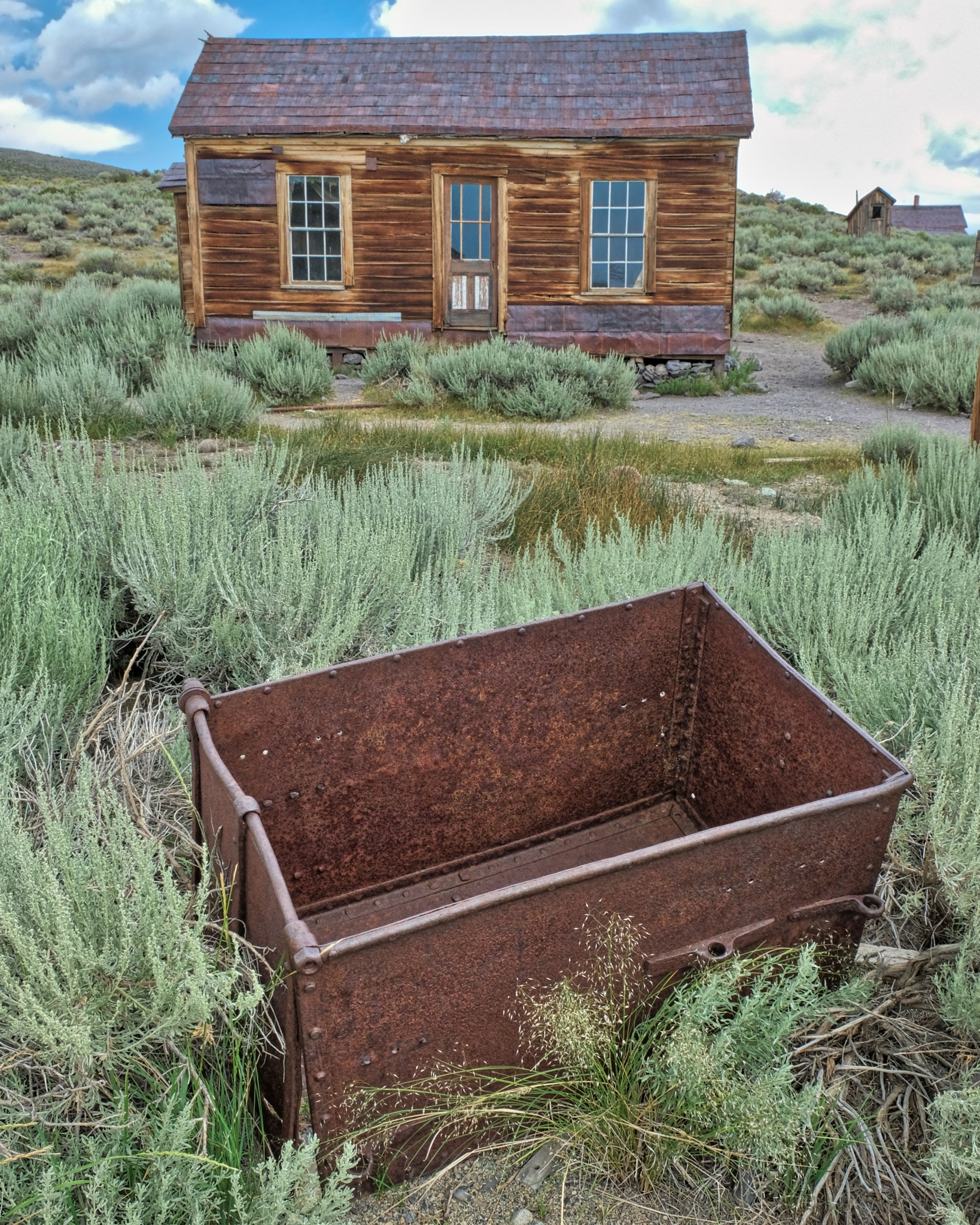 Such beautiful visual compositions laying around everywhere. Another photographers' paradise!
Such beautiful visual compositions laying around everywhere. Another photographers' paradise!
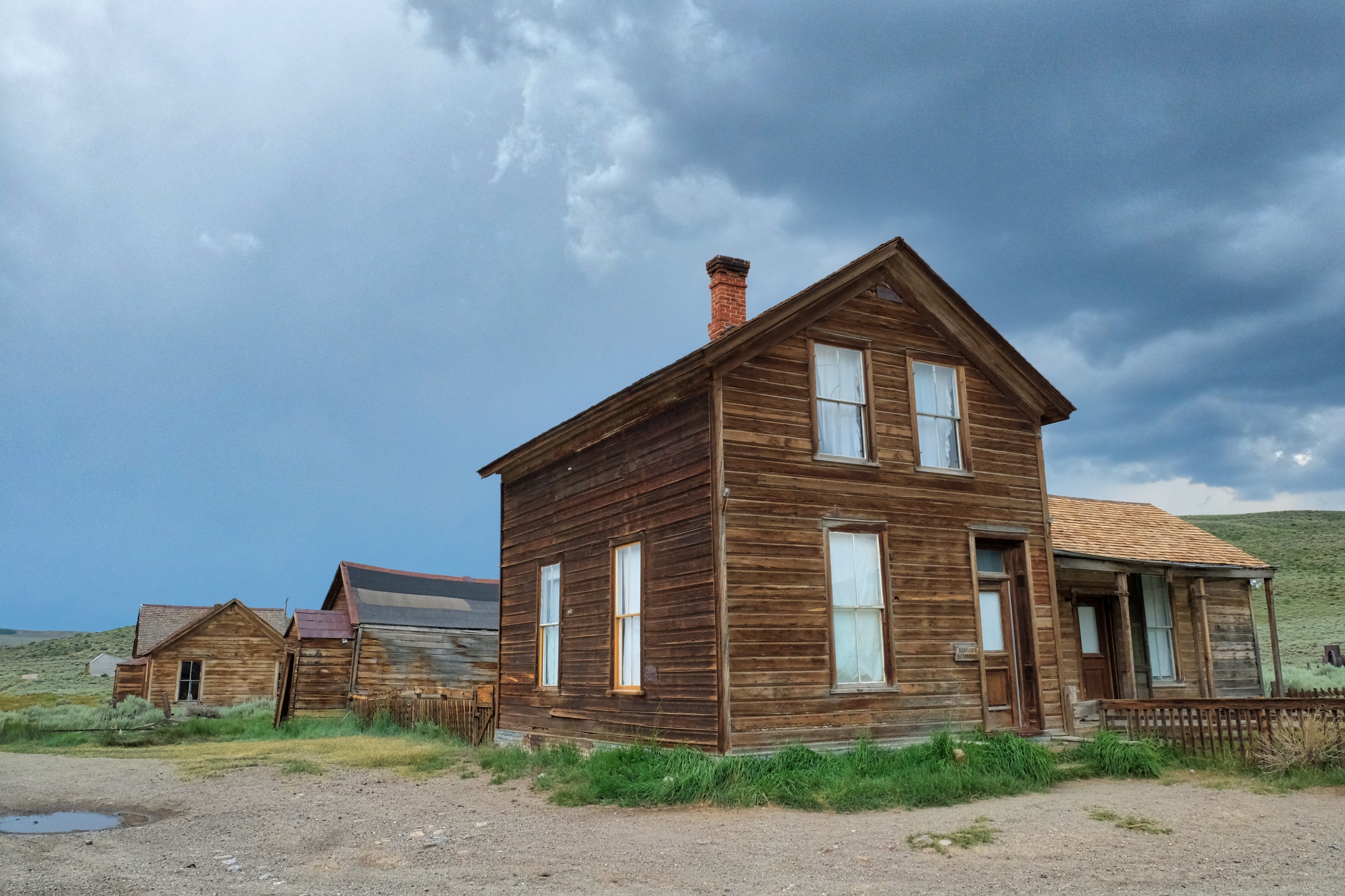 The longer we stayed, the darker the sky became . . . we started to move back to the camper at about this point. There was much more to see in Bodie, but the rain would drive us out.
The longer we stayed, the darker the sky became . . . we started to move back to the camper at about this point. There was much more to see in Bodie, but the rain would drive us out.
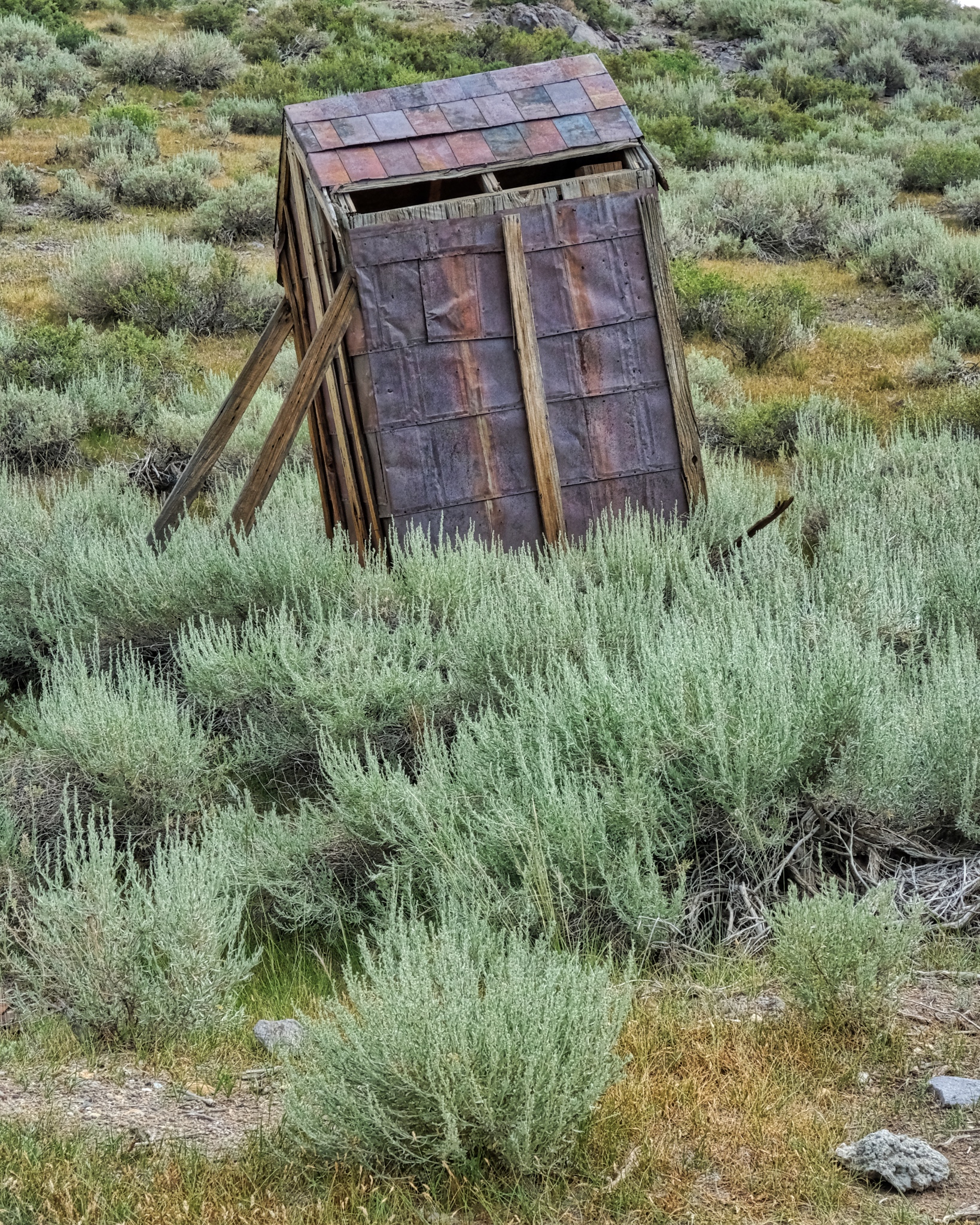 This steel out-house looks like it has tipped over in the past . . . I wonder how this happened?
This steel out-house looks like it has tipped over in the past . . . I wonder how this happened?
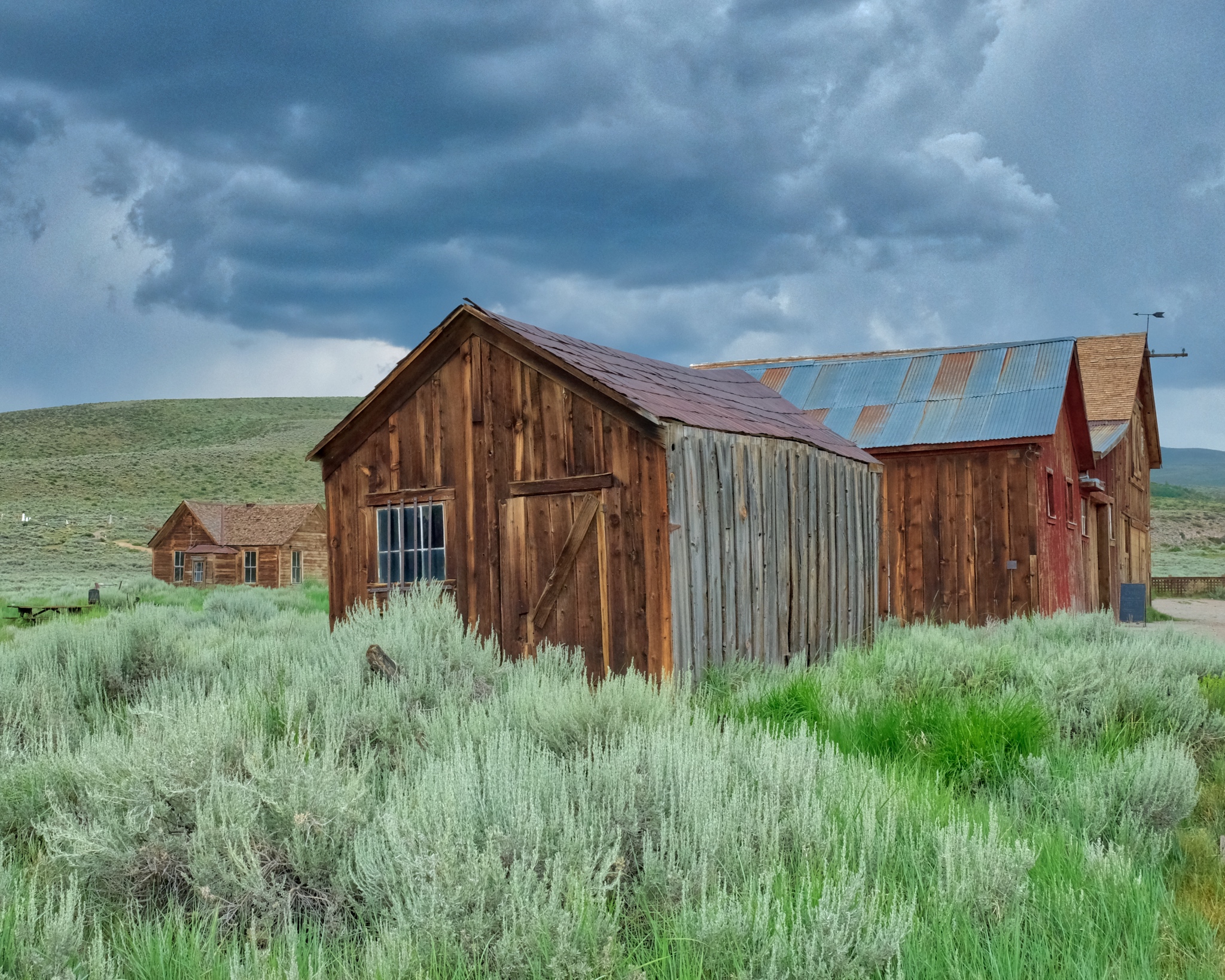 Darker and darker . . .
Darker and darker . . .
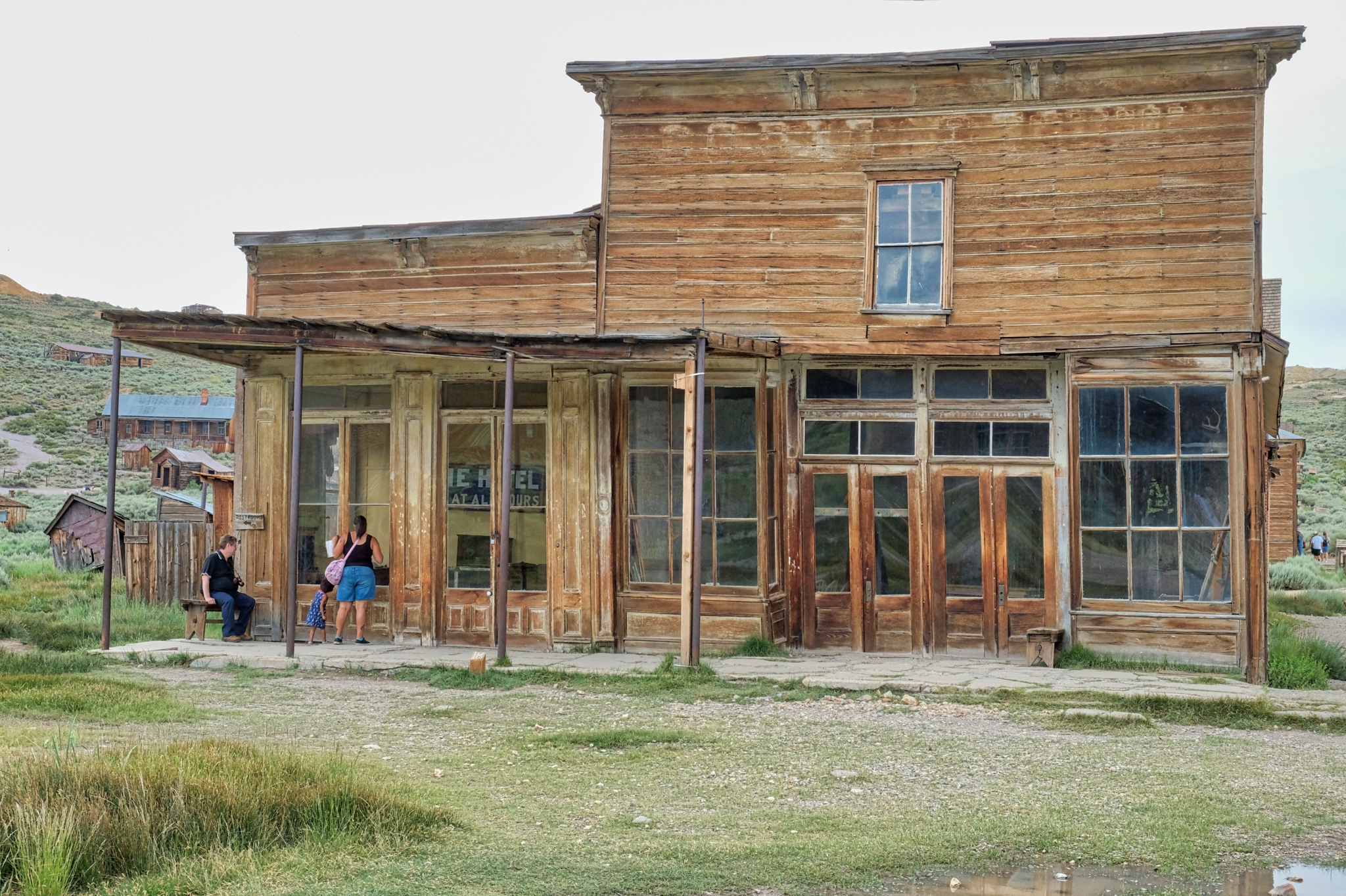 My fellow tourists were heading to cover from the approaching rain.
My fellow tourists were heading to cover from the approaching rain.
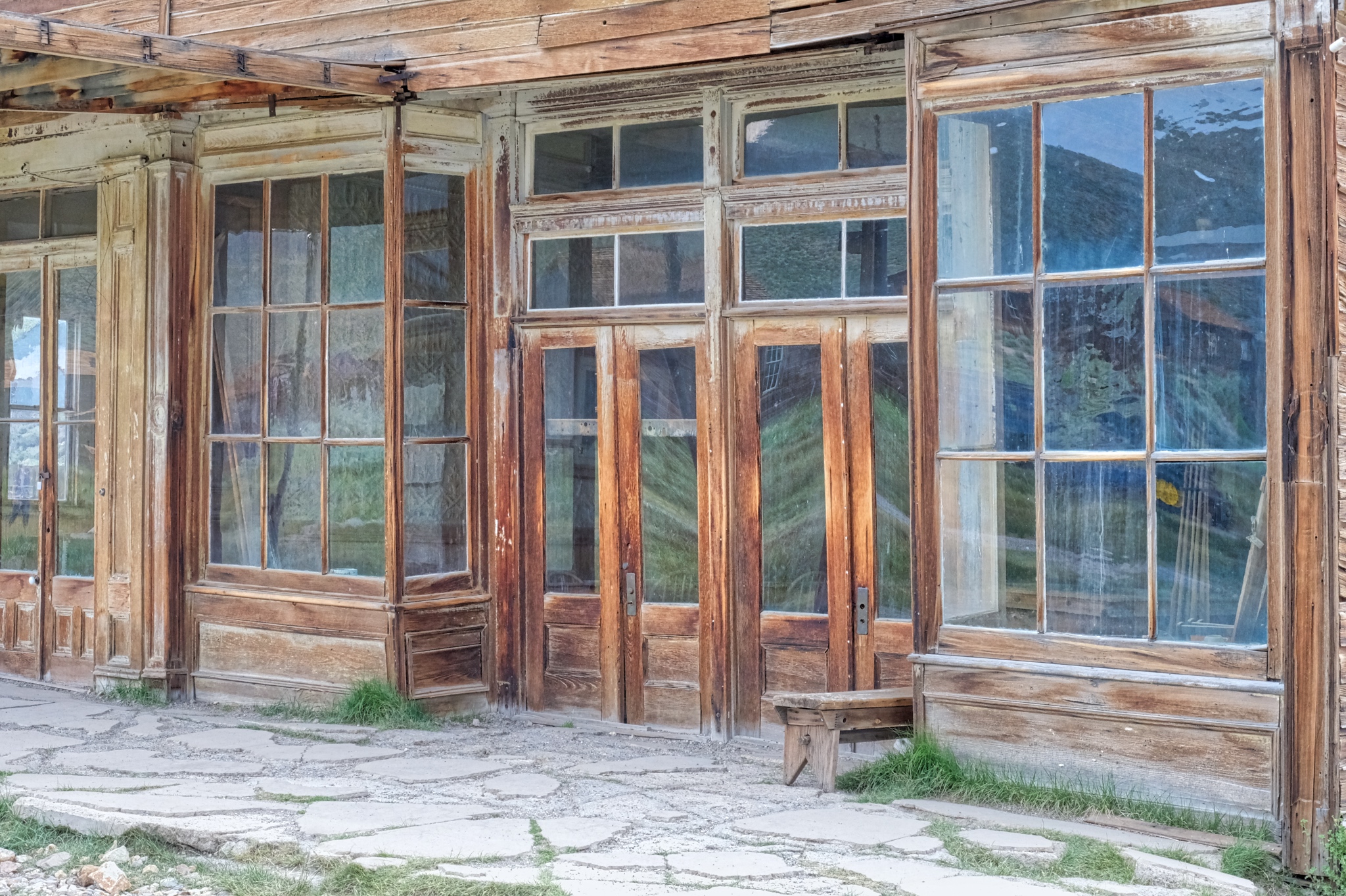 This shop-front must have been beautiful back in the day.
This shop-front must have been beautiful back in the day.
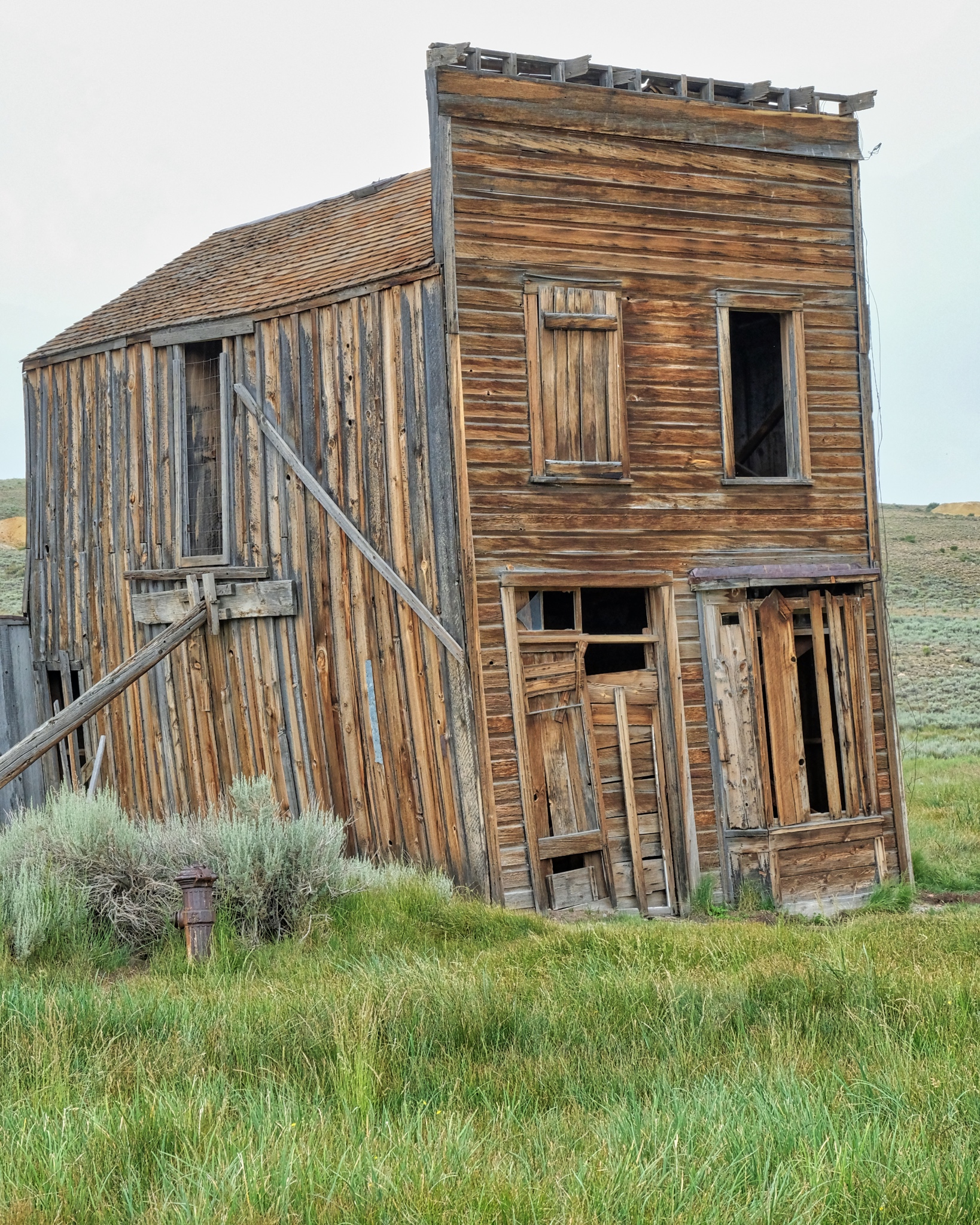 This intreguing and tilting little building was beautiful from the front and side (next photo).
This intreguing and tilting little building was beautiful from the front and side (next photo).
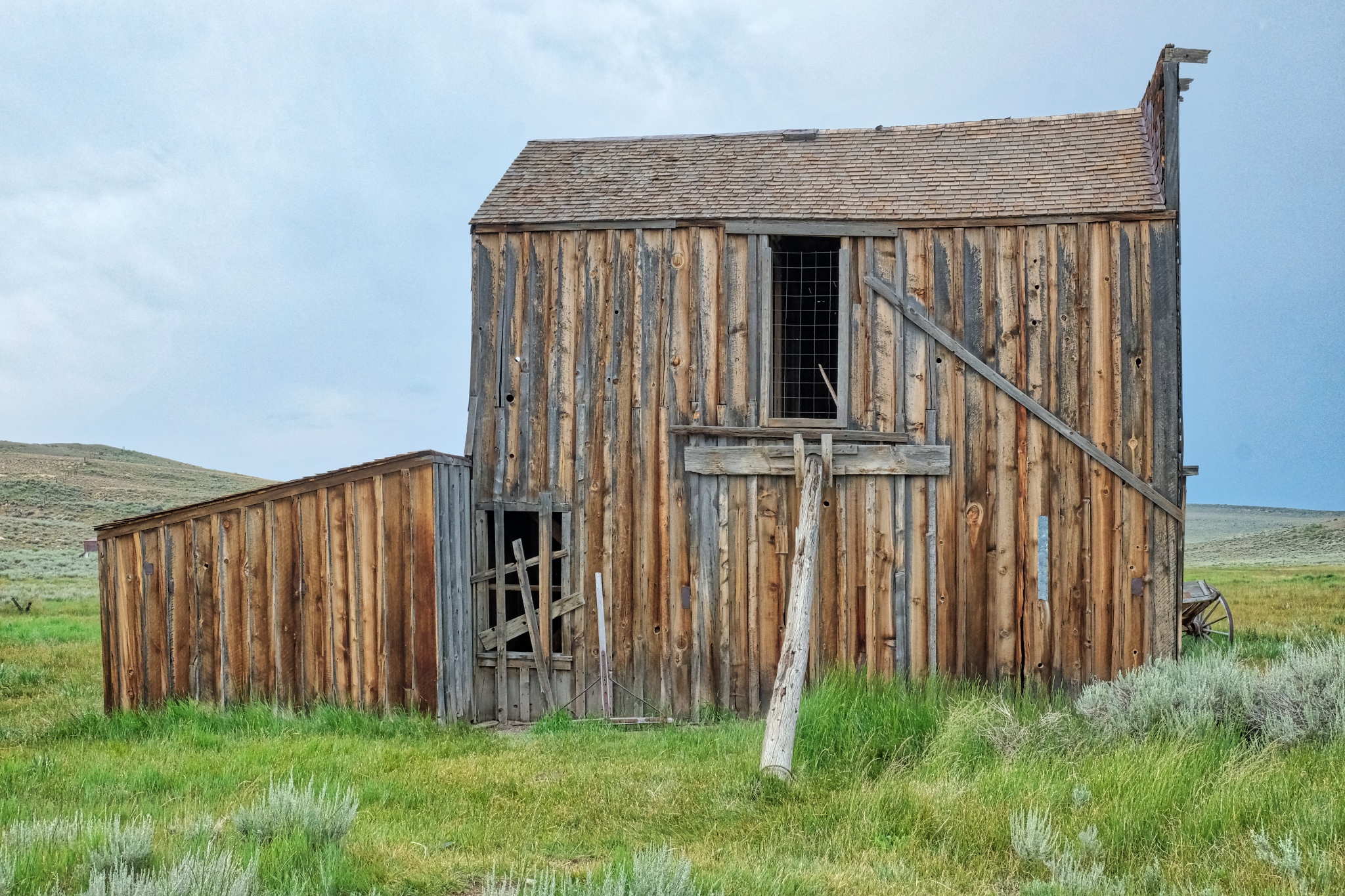 Such wonderfully defined textures and colors . . . highlighted by the fine mist that has settled on them.
Such wonderfully defined textures and colors . . . highlighted by the fine mist that has settled on them.
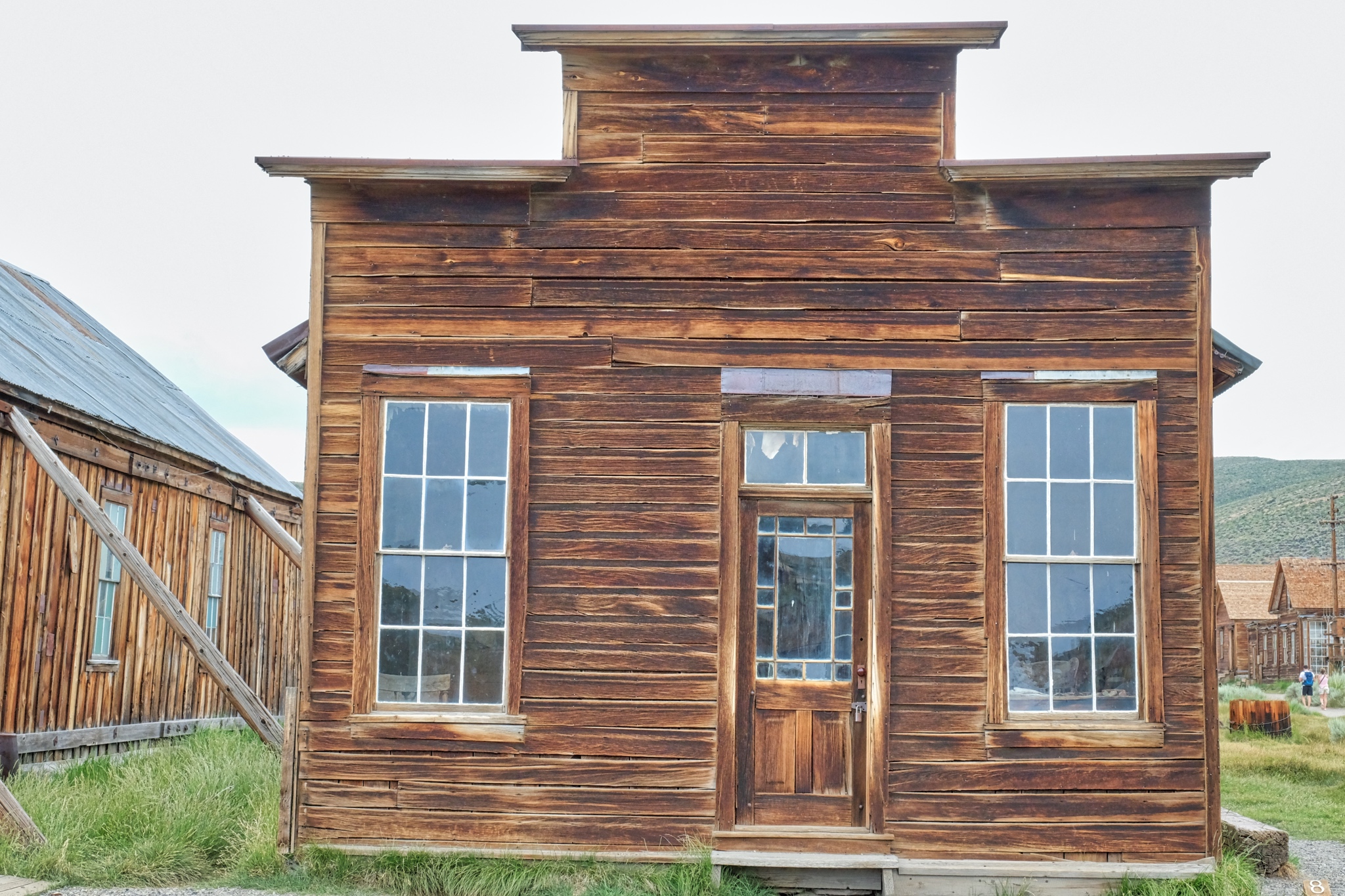 Sweet little place . . .
Sweet little place . . .
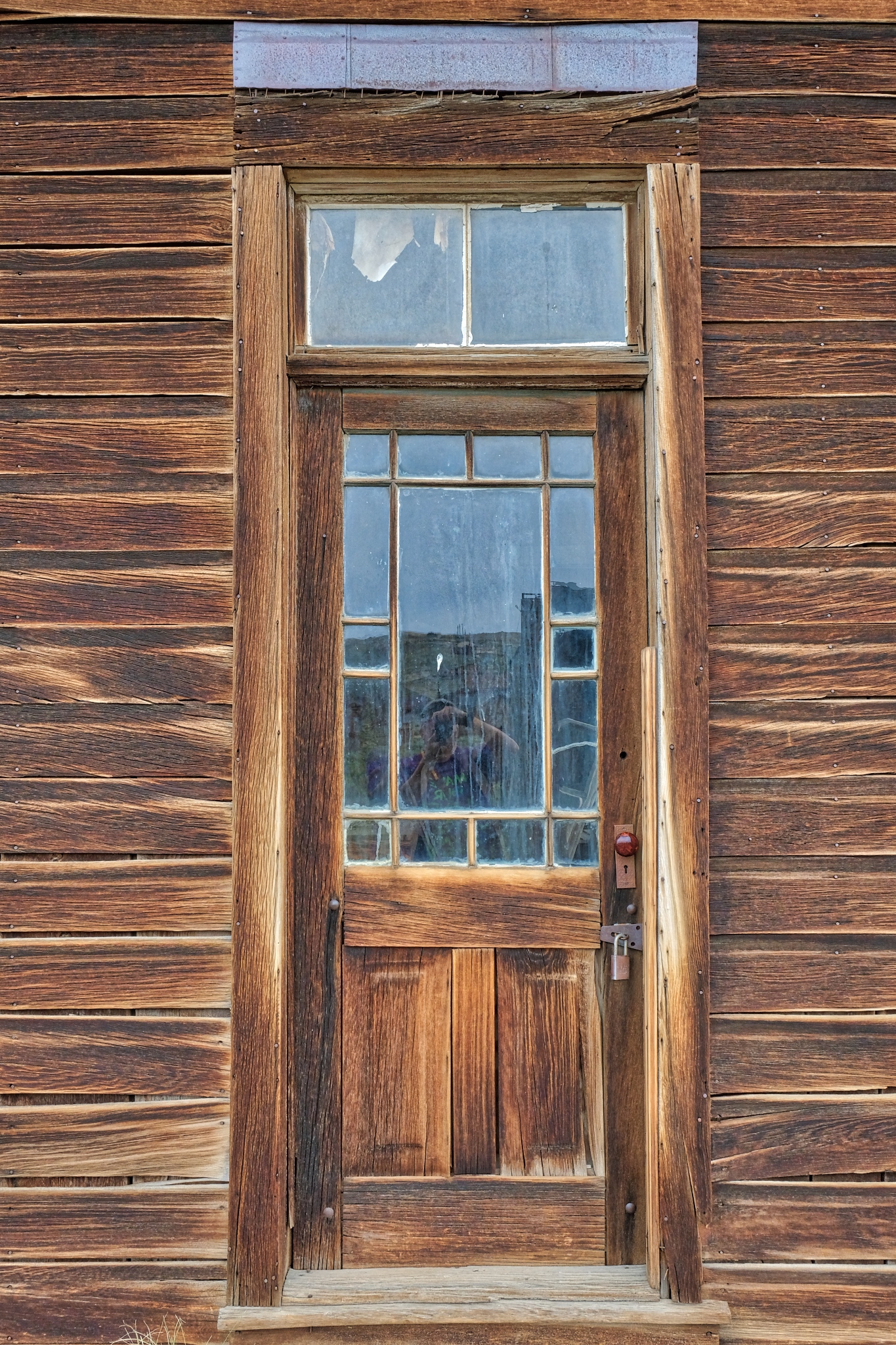 Fine, honest door (and self-portrait!).
Fine, honest door (and self-portrait!).
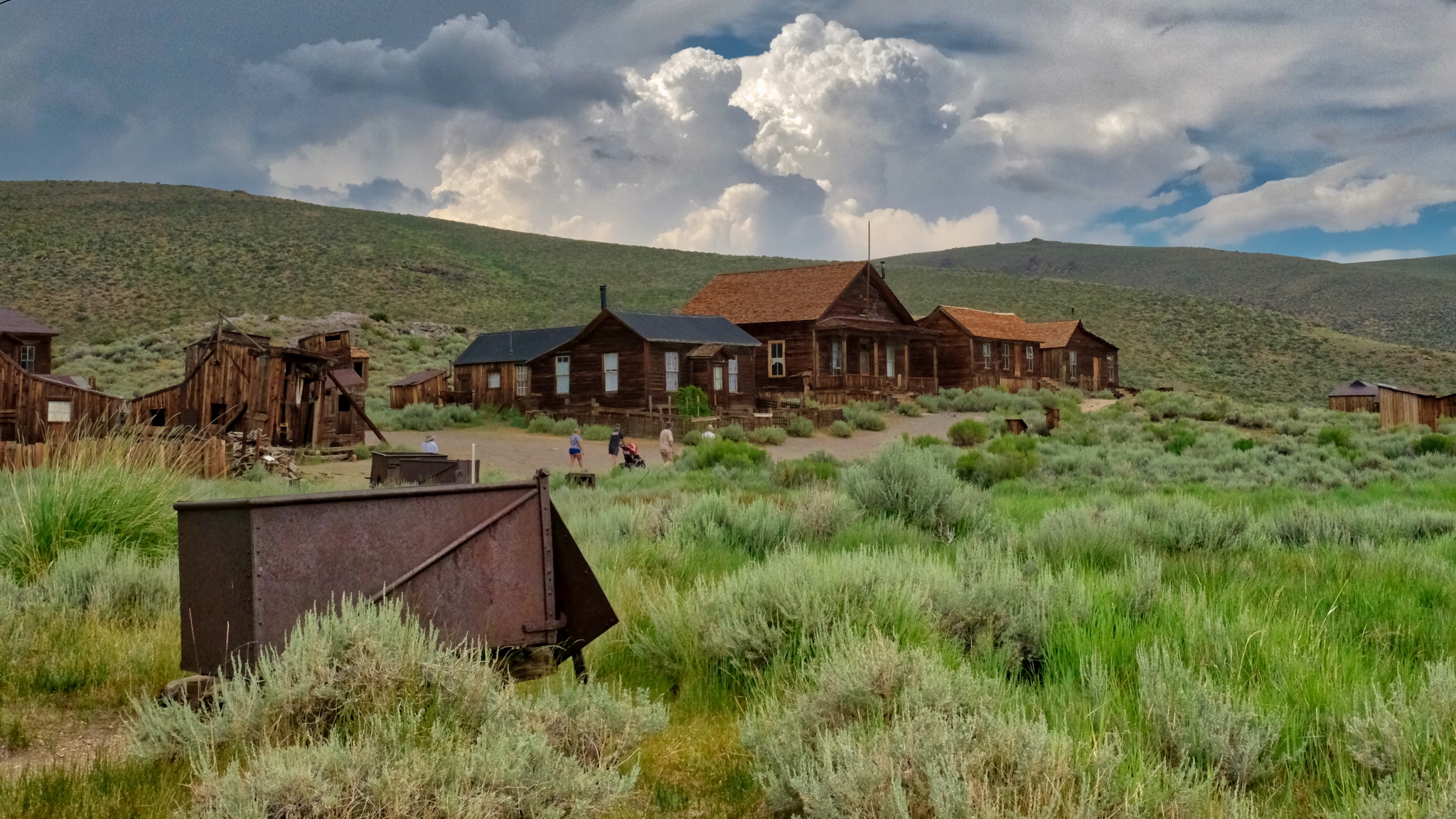 Time to go.
Time to go.
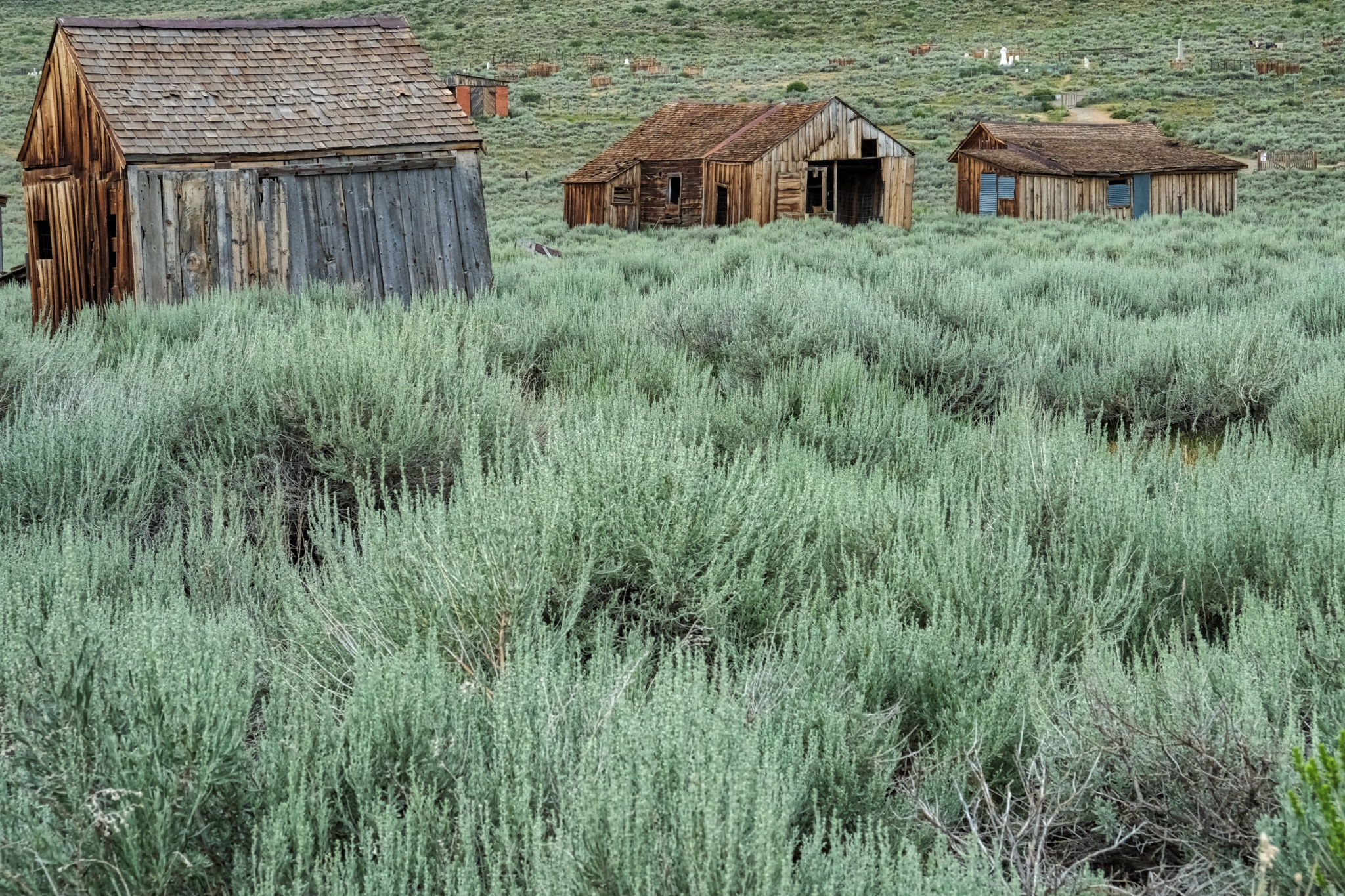 The sage brush has reclaimed most of the streets and paths.
The sage brush has reclaimed most of the streets and paths.
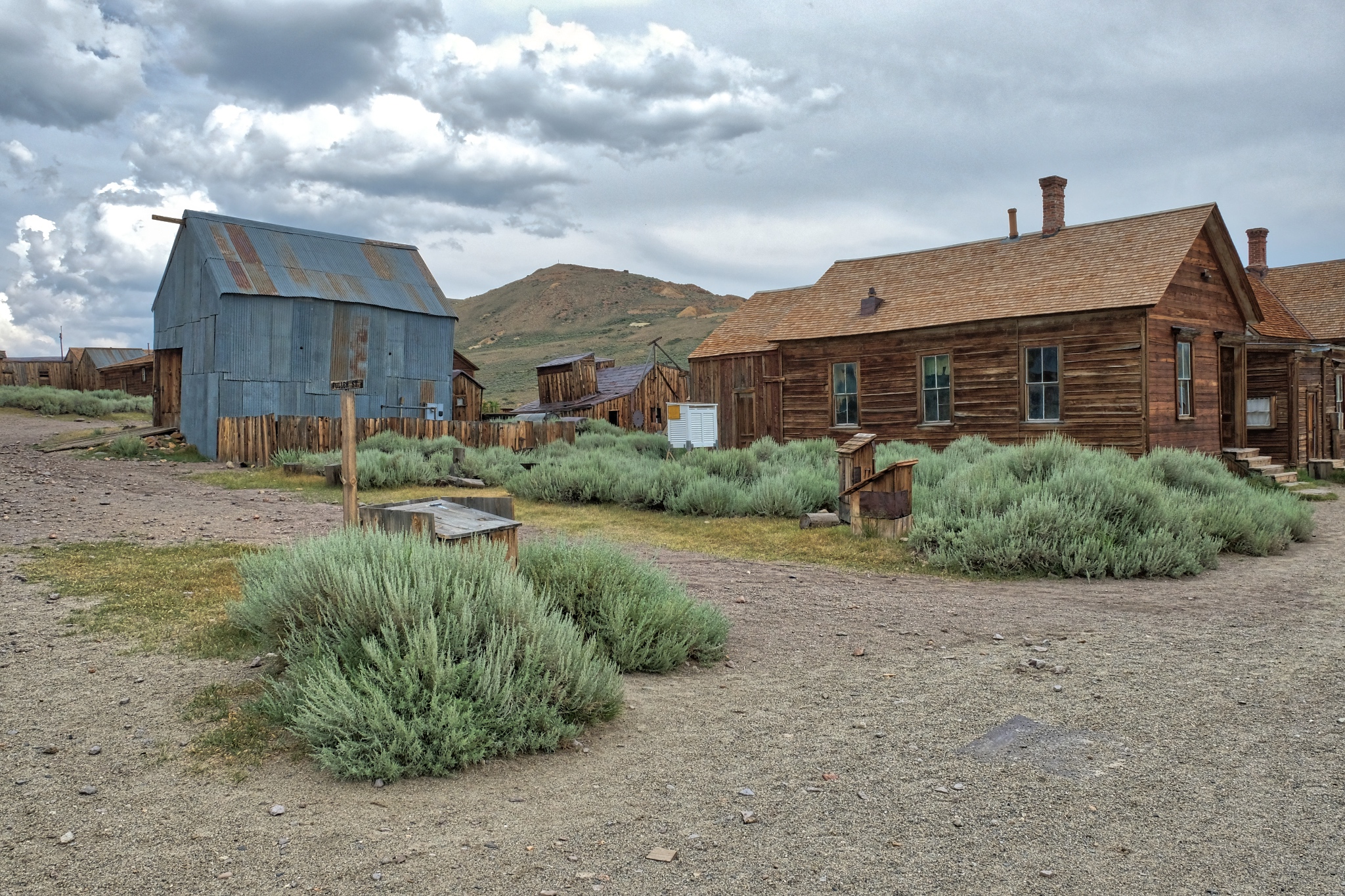 I would like to come back here . . . perhaps when there is some snow on the ground . . . and better light.
I would like to come back here . . . perhaps when there is some snow on the ground . . . and better light.
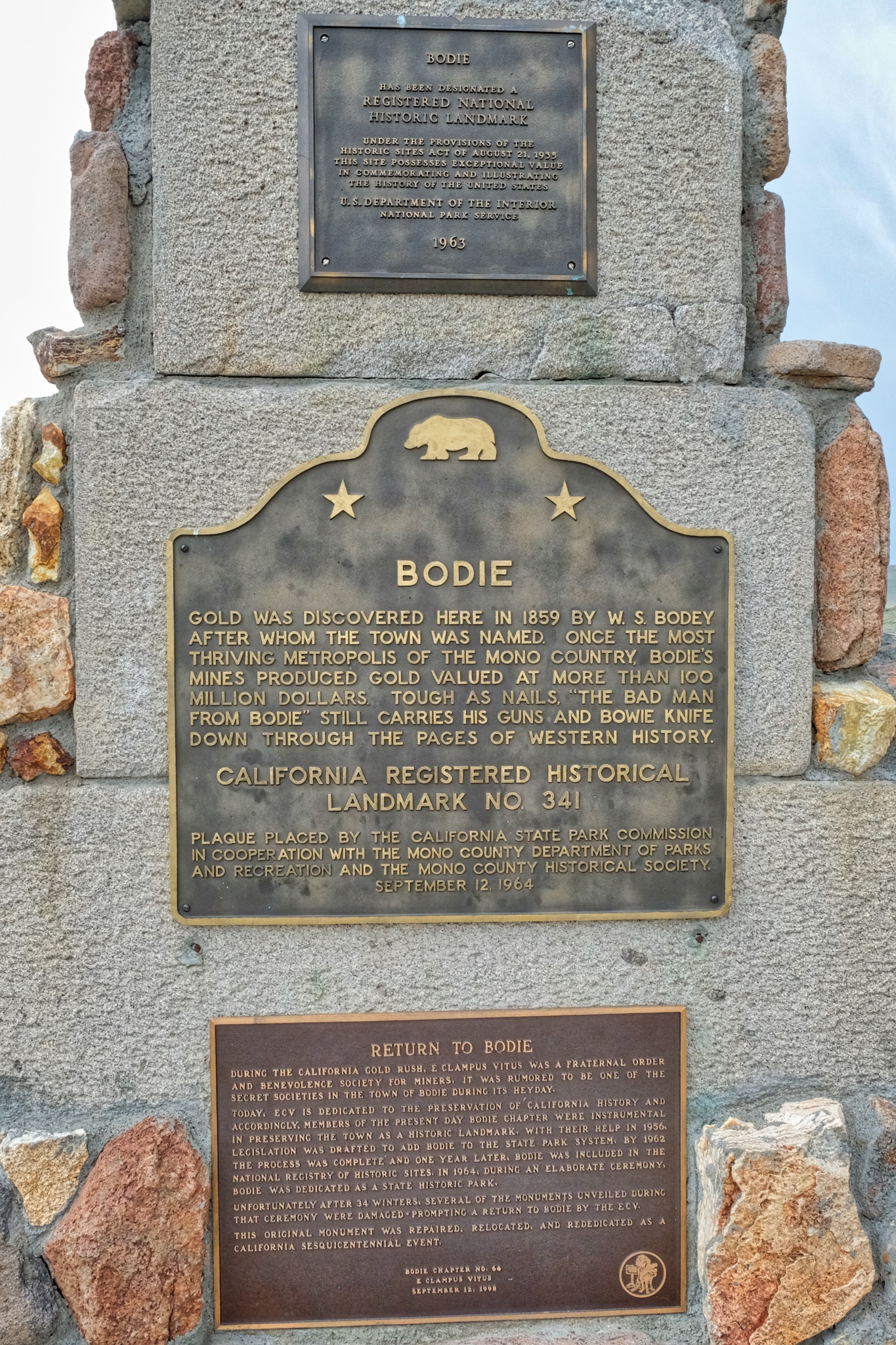 Commemorative plaques.
Commemorative plaques.
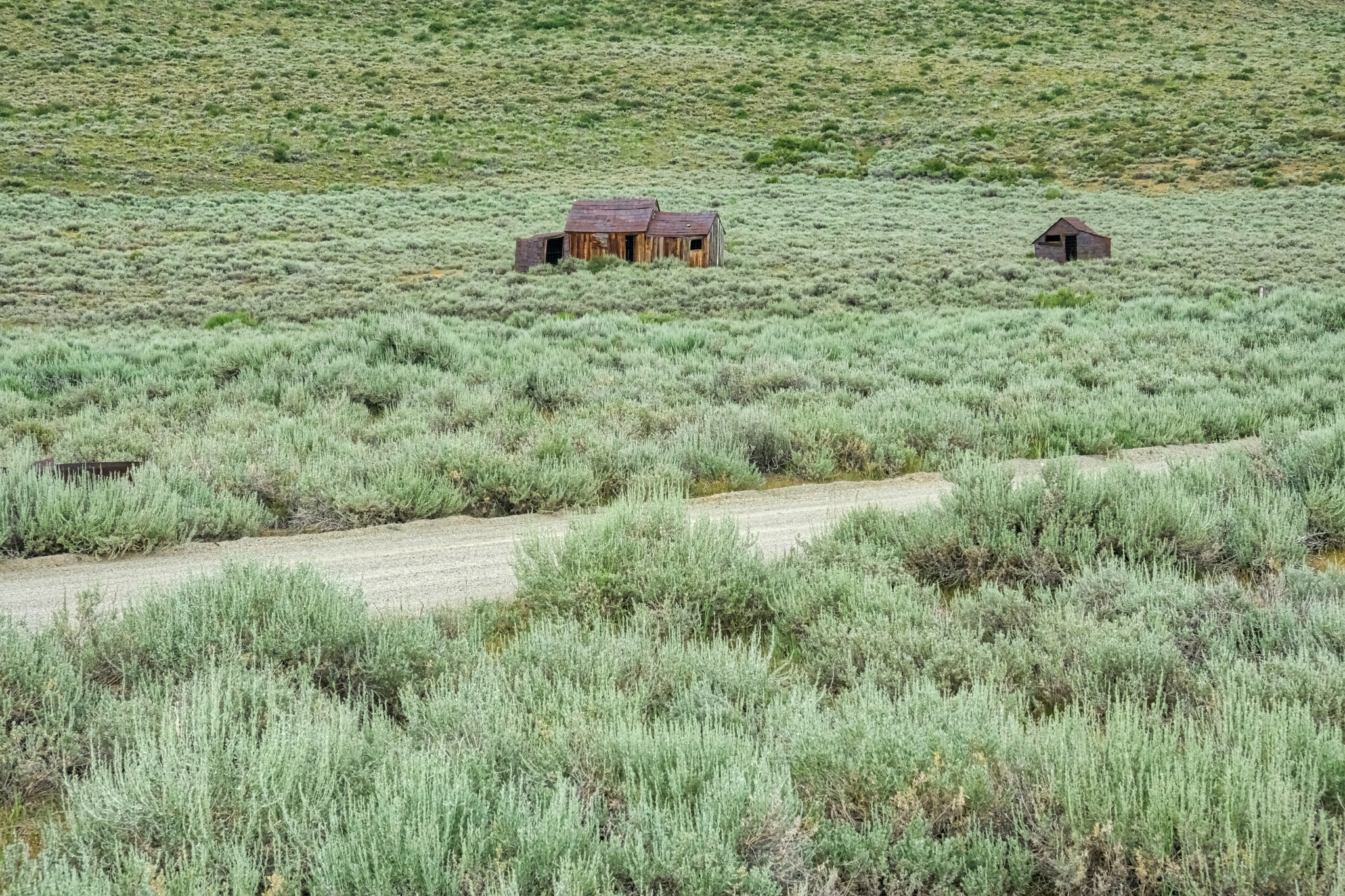 And so, we drove off from Bodie.
And so, we drove off from Bodie.
 One last look at the scattered shacks and sheds among the sage.
One last look at the scattered shacks and sheds among the sage.
 We drove back out the 20 miles to US Highway 395 and headed south toward Mono Lake.
We drove back out the 20 miles to US Highway 395 and headed south toward Mono Lake.
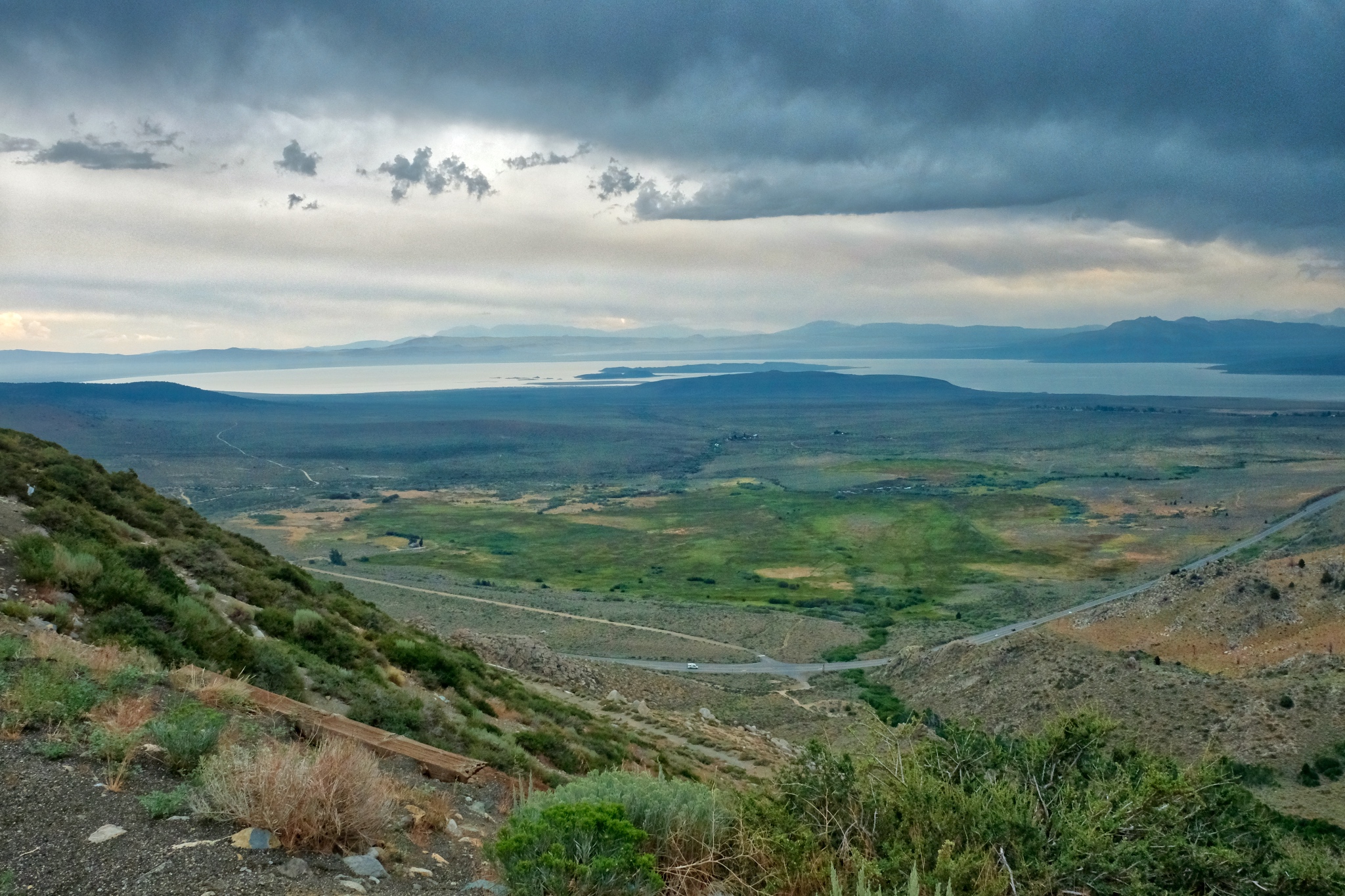 We pulled over on US 395 at this amazing viewpoint high above Mono Lake.
We pulled over on US 395 at this amazing viewpoint high above Mono Lake.
Road Trip USA: The New Jersey Shore
 Saturday, December 22, 2018 at 11:59AM
Saturday, December 22, 2018 at 11:59AM 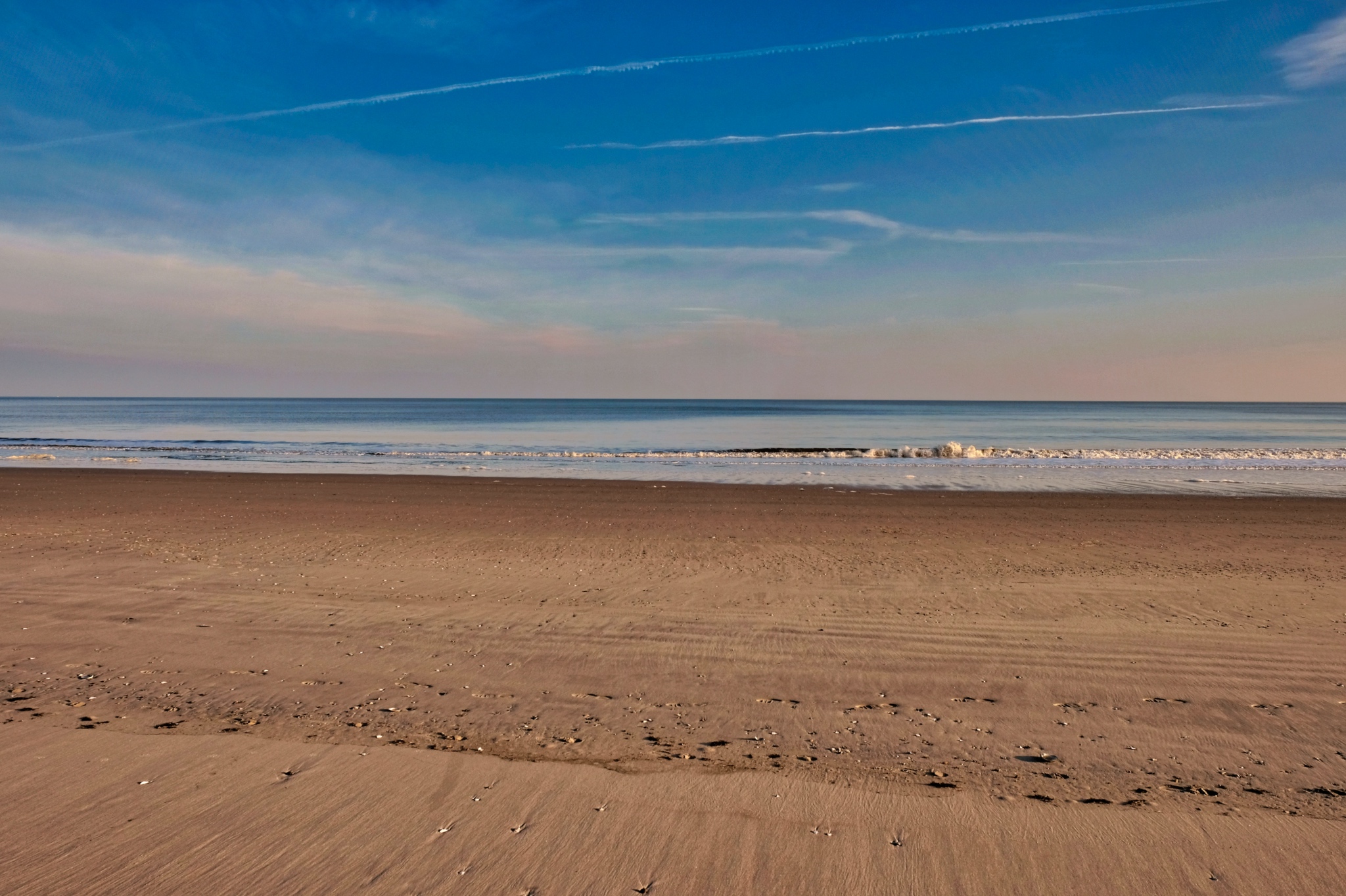 I have good friends who are semi-retired and live year round in Ocean City, New Jersey. I spent a wonderful five days visiting them.
I have good friends who are semi-retired and live year round in Ocean City, New Jersey. I spent a wonderful five days visiting them.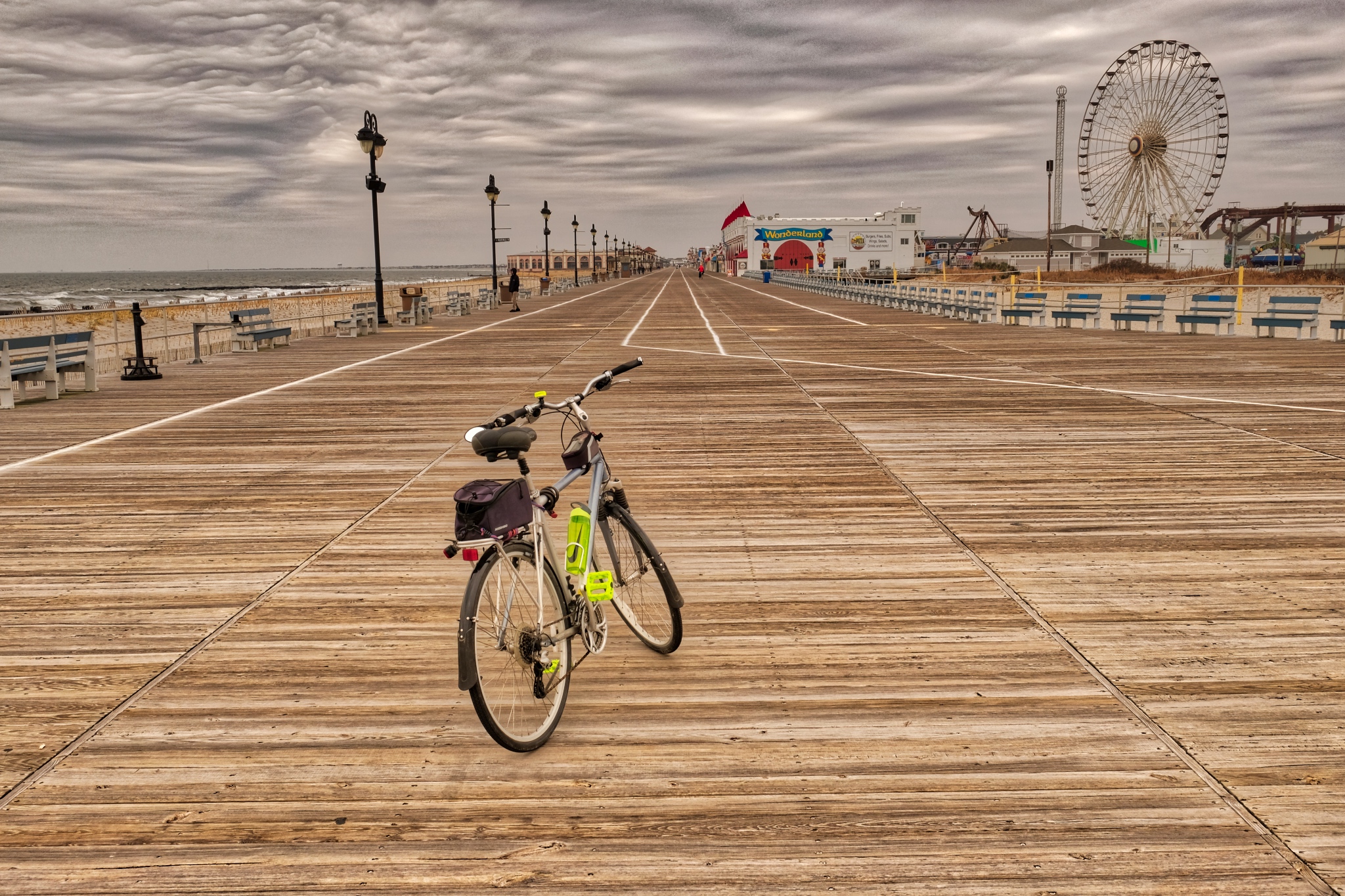 I brought my bicycle with me so that I could ride the many miles of Ocean City boardwalk.
I brought my bicycle with me so that I could ride the many miles of Ocean City boardwalk.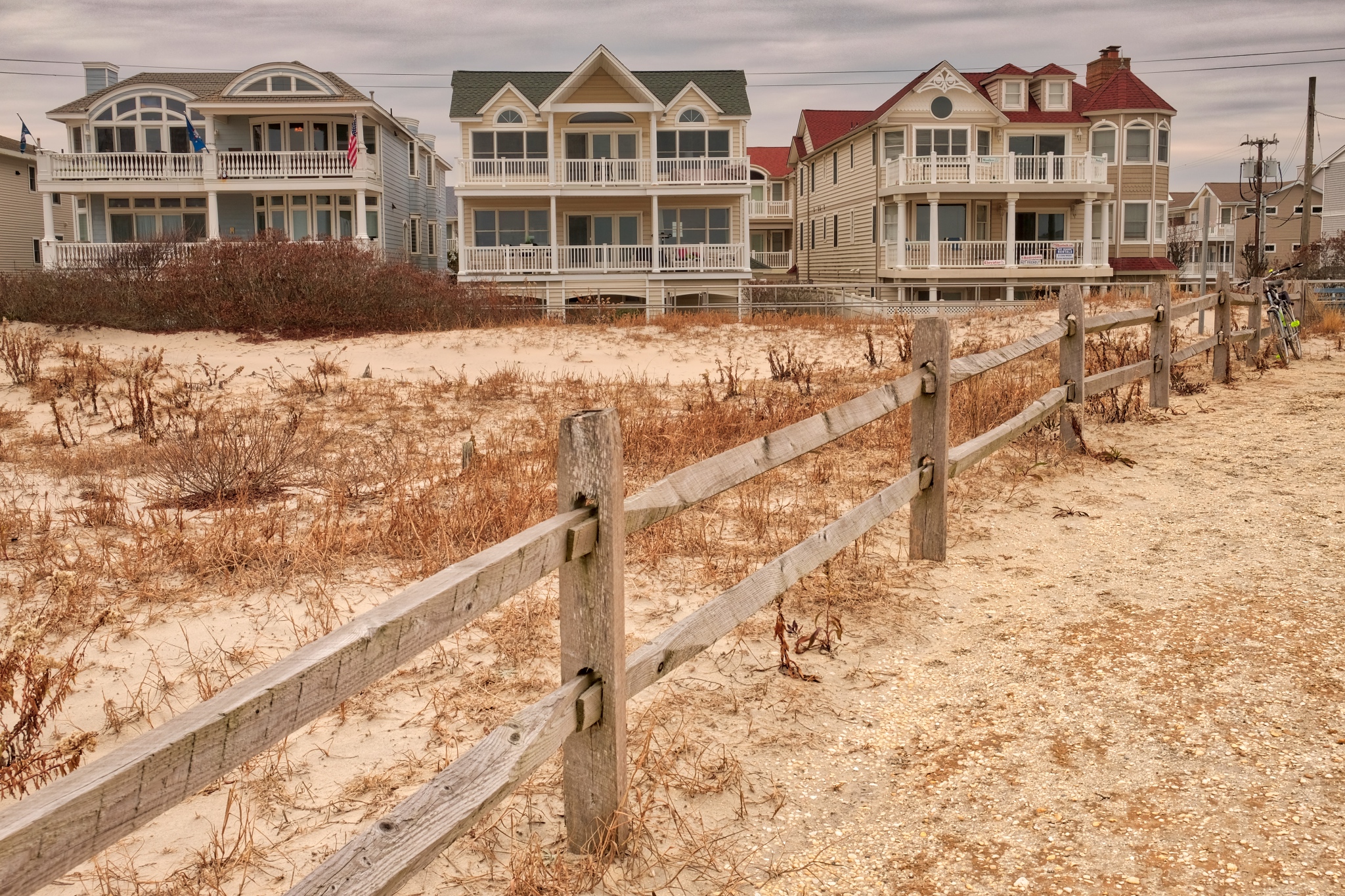 Although Ocean City is a very old beach resort (for mostly rich folks from Philadelphia), many of the old beach houses were torn down and replaced with these fanciful 'kit' beach houses. About 80% of these are vacant during the off-season.
Although Ocean City is a very old beach resort (for mostly rich folks from Philadelphia), many of the old beach houses were torn down and replaced with these fanciful 'kit' beach houses. About 80% of these are vacant during the off-season.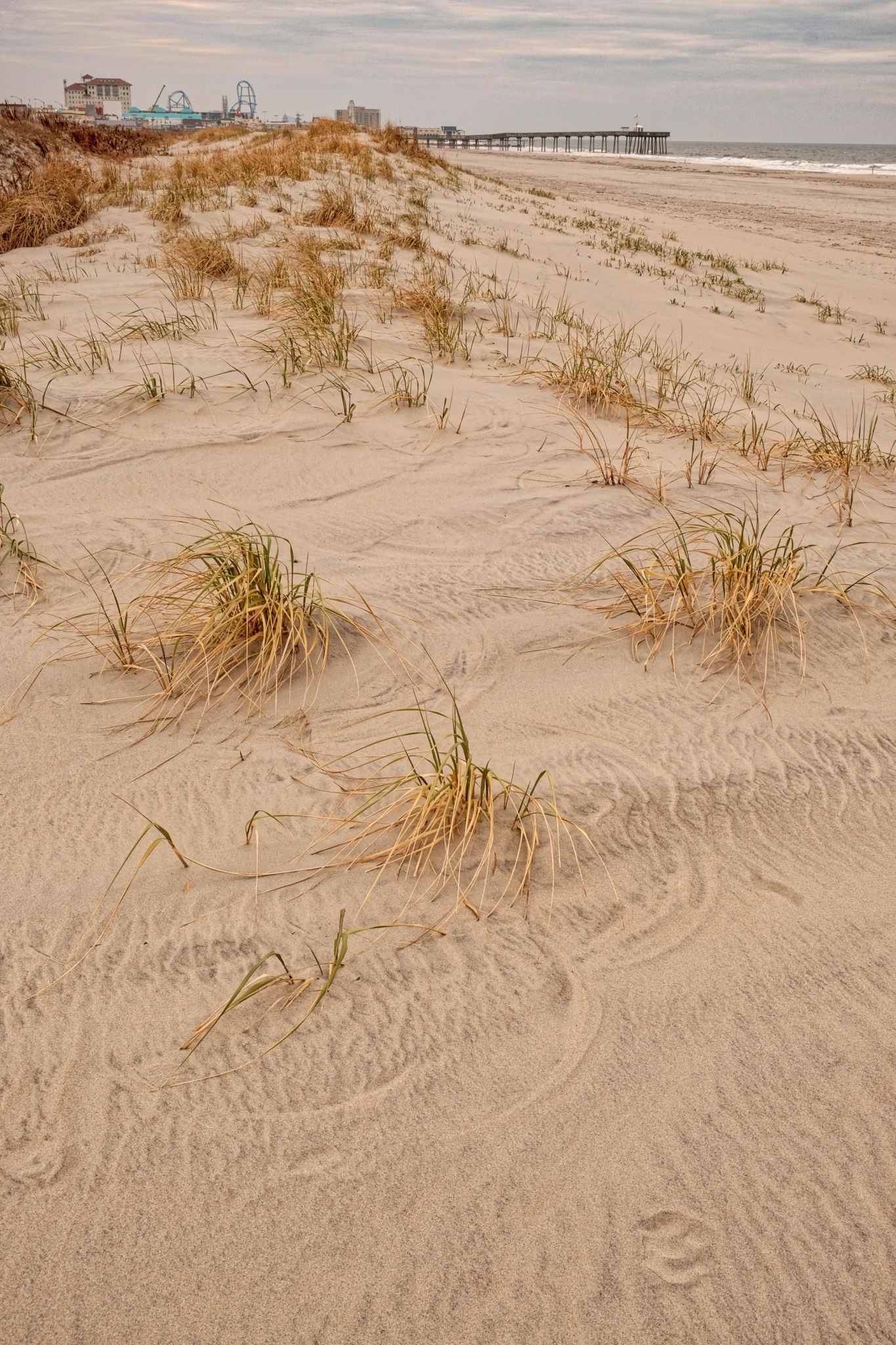 Ocean City has a nice beach. There used to be a major pier, but it was washed away during Hurricane Sandy . . . which also inundated Ocean City streets. The pier in the background is the private pier of the Ocean City Fishing Club.
Ocean City has a nice beach. There used to be a major pier, but it was washed away during Hurricane Sandy . . . which also inundated Ocean City streets. The pier in the background is the private pier of the Ocean City Fishing Club.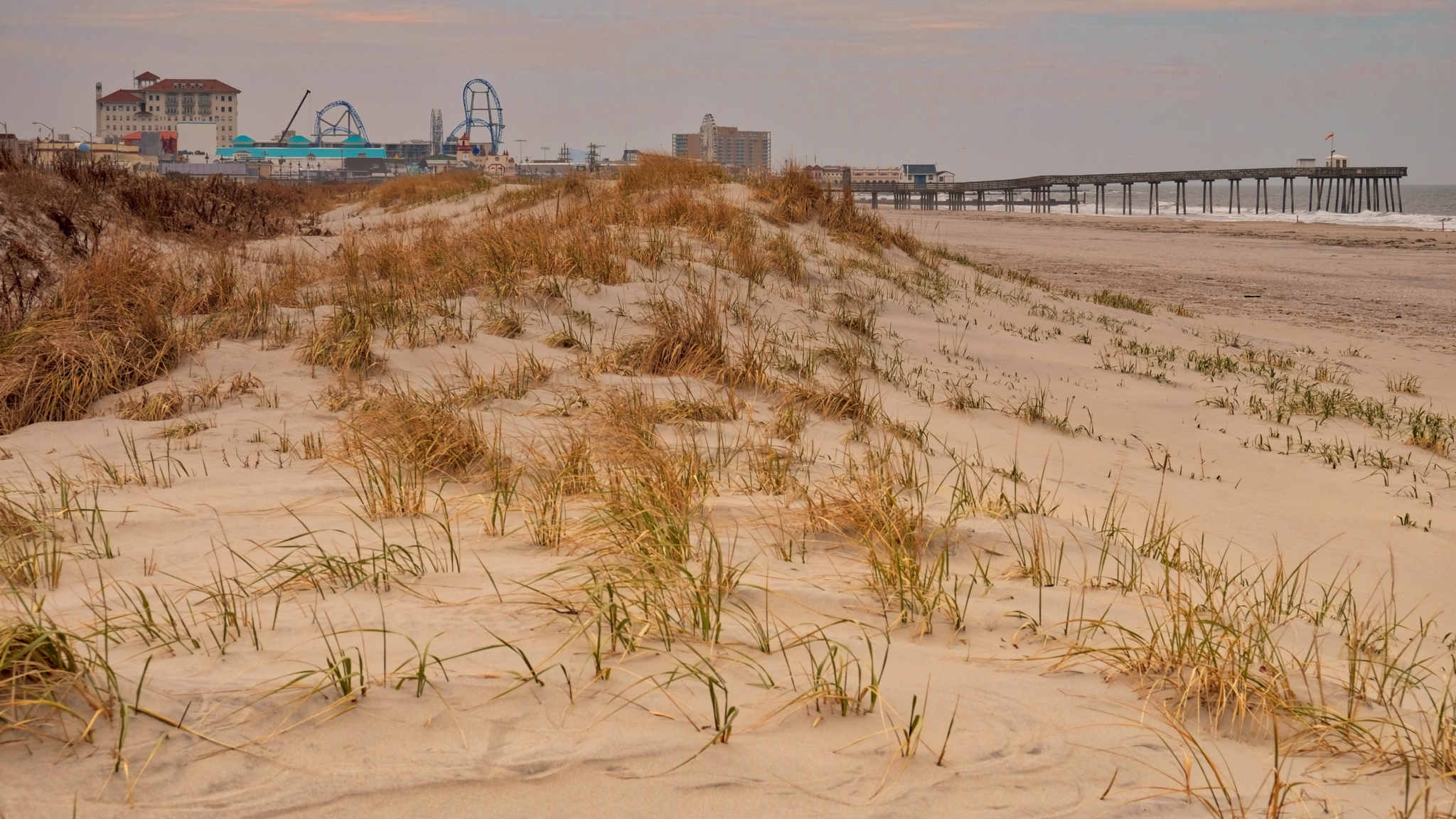 Ocean City has a few attractions, including a very fine boardwalk. The town is 'dry' - alcohol is not sold in stores, so it has gained a reputation as a family beach.
Ocean City has a few attractions, including a very fine boardwalk. The town is 'dry' - alcohol is not sold in stores, so it has gained a reputation as a family beach.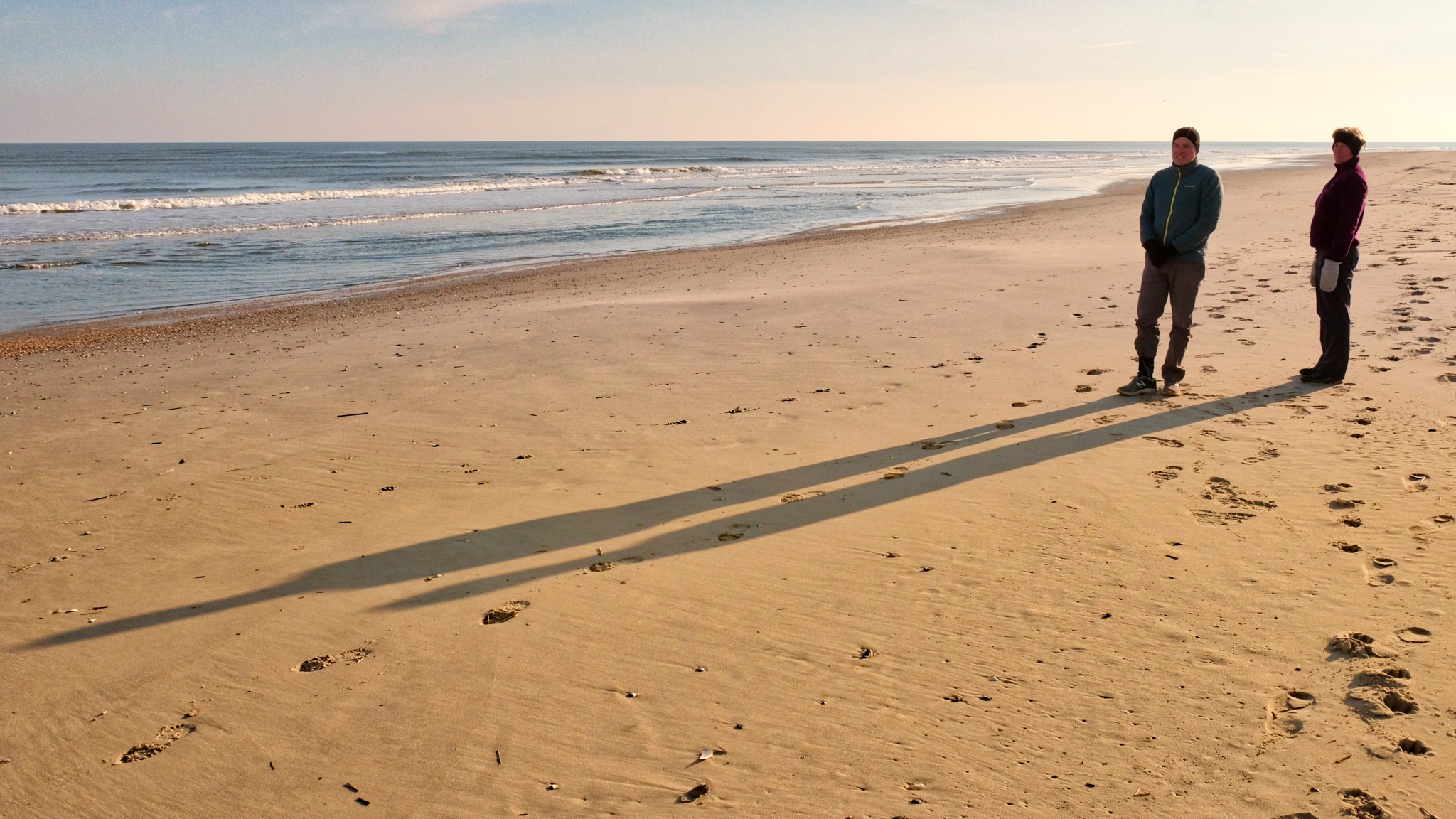 We had the beach to ourselves every day.
We had the beach to ourselves every day. I had the good luck to be here between storms . . . and wind. Quite mild and calm days for December. We took a nice bike ride to a nearby island and saw this inlet along the way.
I had the good luck to be here between storms . . . and wind. Quite mild and calm days for December. We took a nice bike ride to a nearby island and saw this inlet along the way.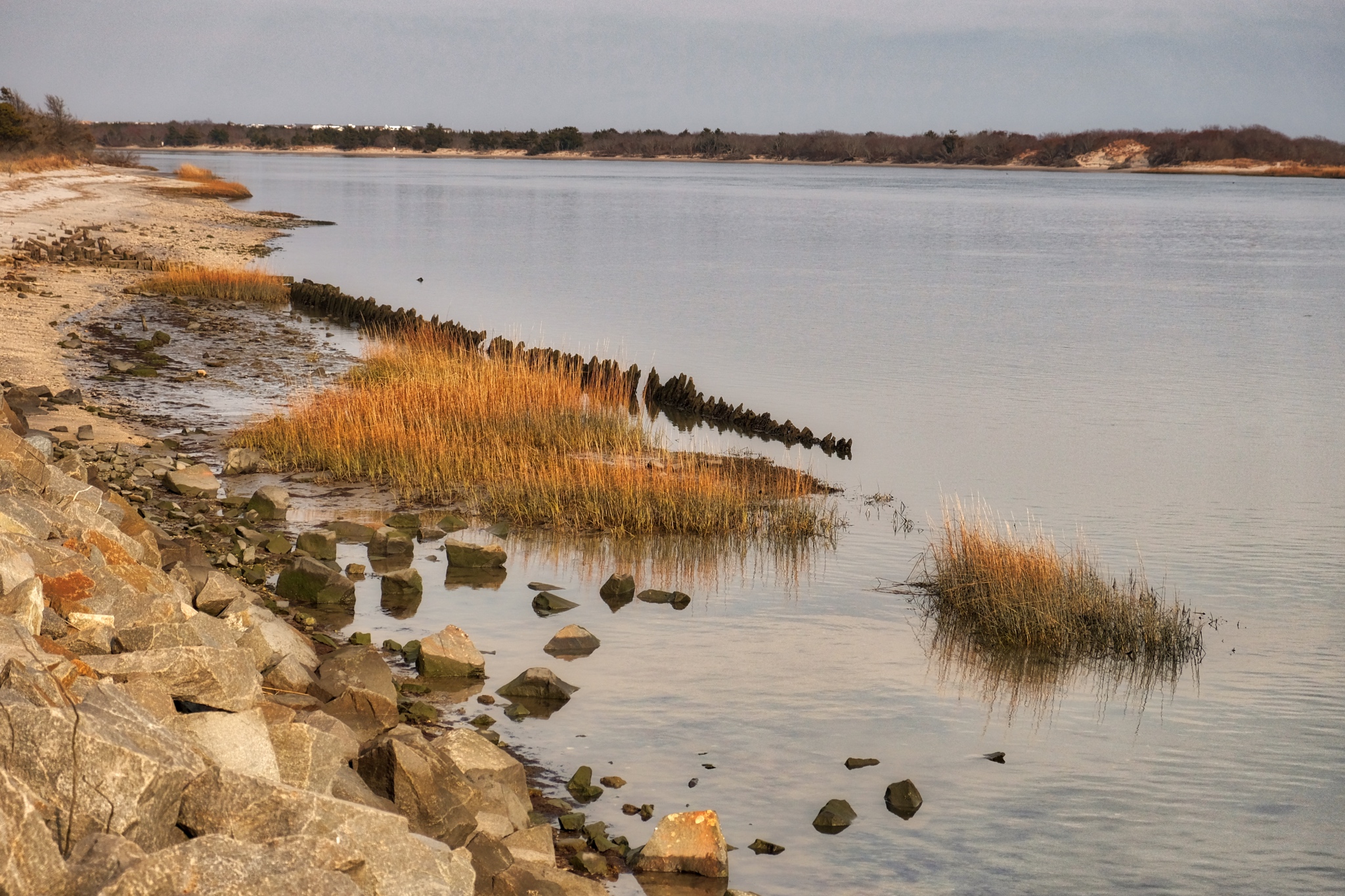 Much of the area to the west of Ocean City is designated as a wildlife reserve.
Much of the area to the west of Ocean City is designated as a wildlife reserve.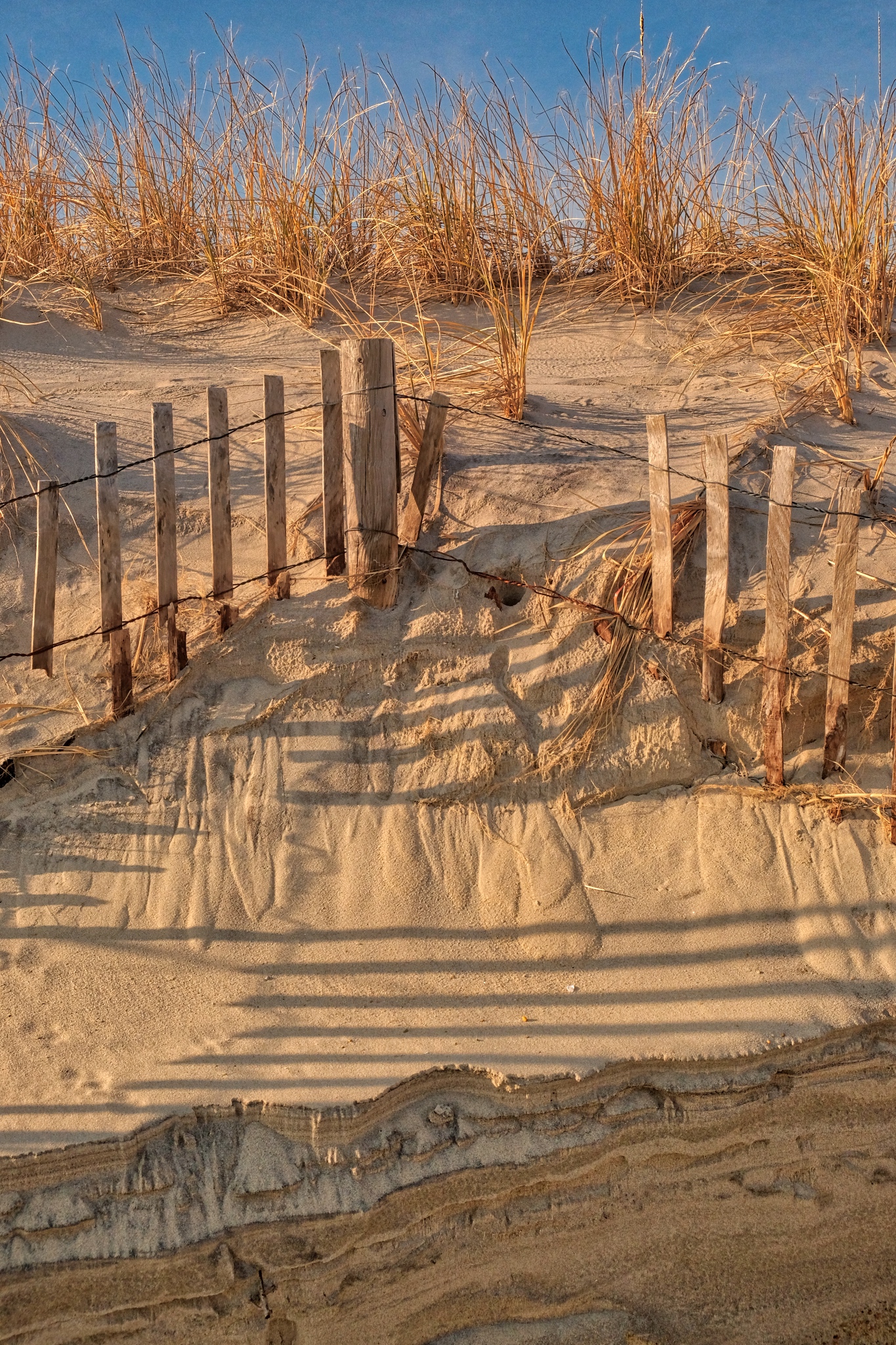 Beach erosion is still an issue. Successive hurricanes and 'noreasters' severely depleted the sands. The local government dredged the seabed and sprayed sand back to make a new beach. It will have to find it's new 'natural' levels.
Beach erosion is still an issue. Successive hurricanes and 'noreasters' severely depleted the sands. The local government dredged the seabed and sprayed sand back to make a new beach. It will have to find it's new 'natural' levels.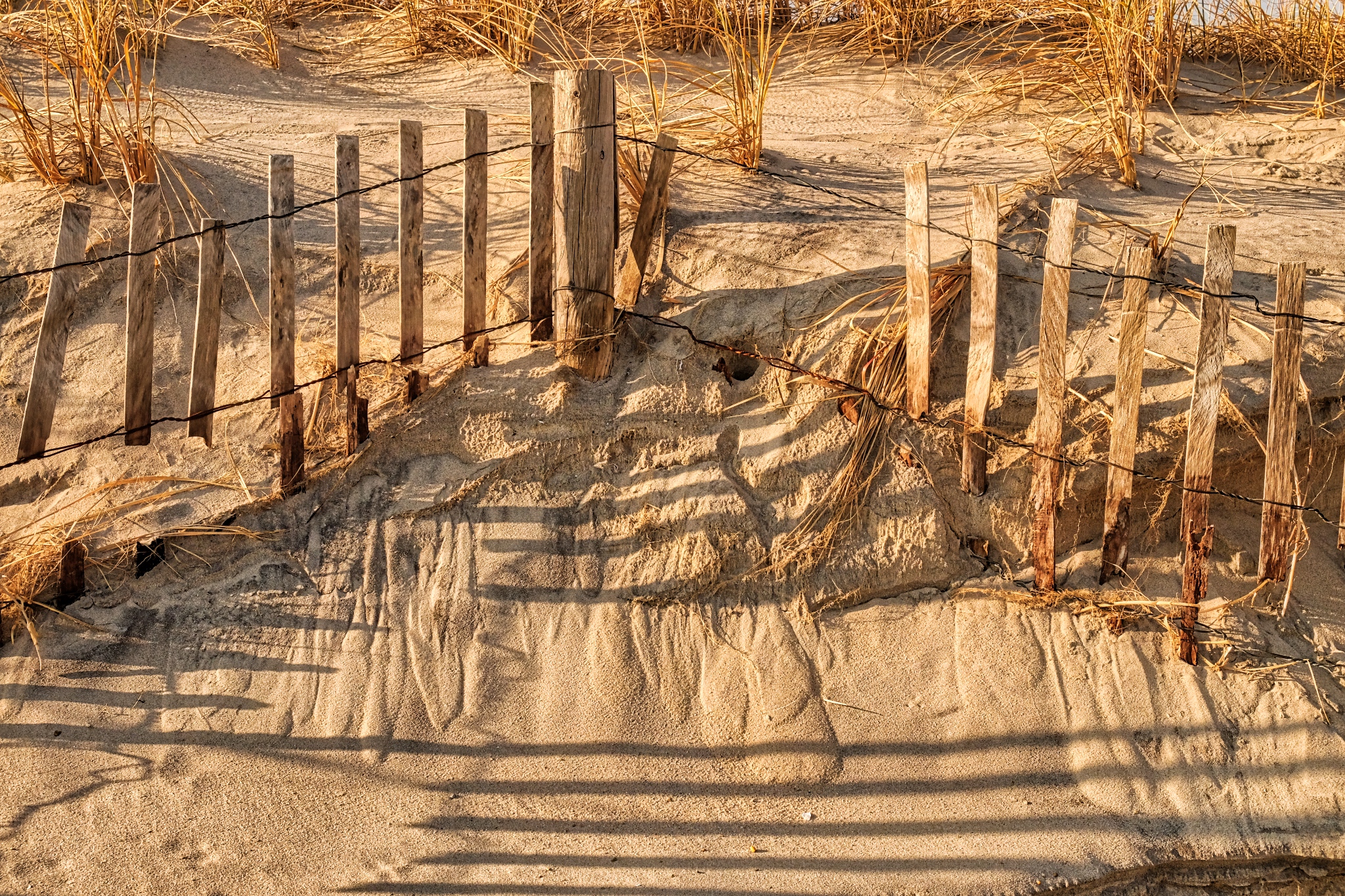 Wonderful patterns, shapes, and shadows in the beach dunes.
Wonderful patterns, shapes, and shadows in the beach dunes.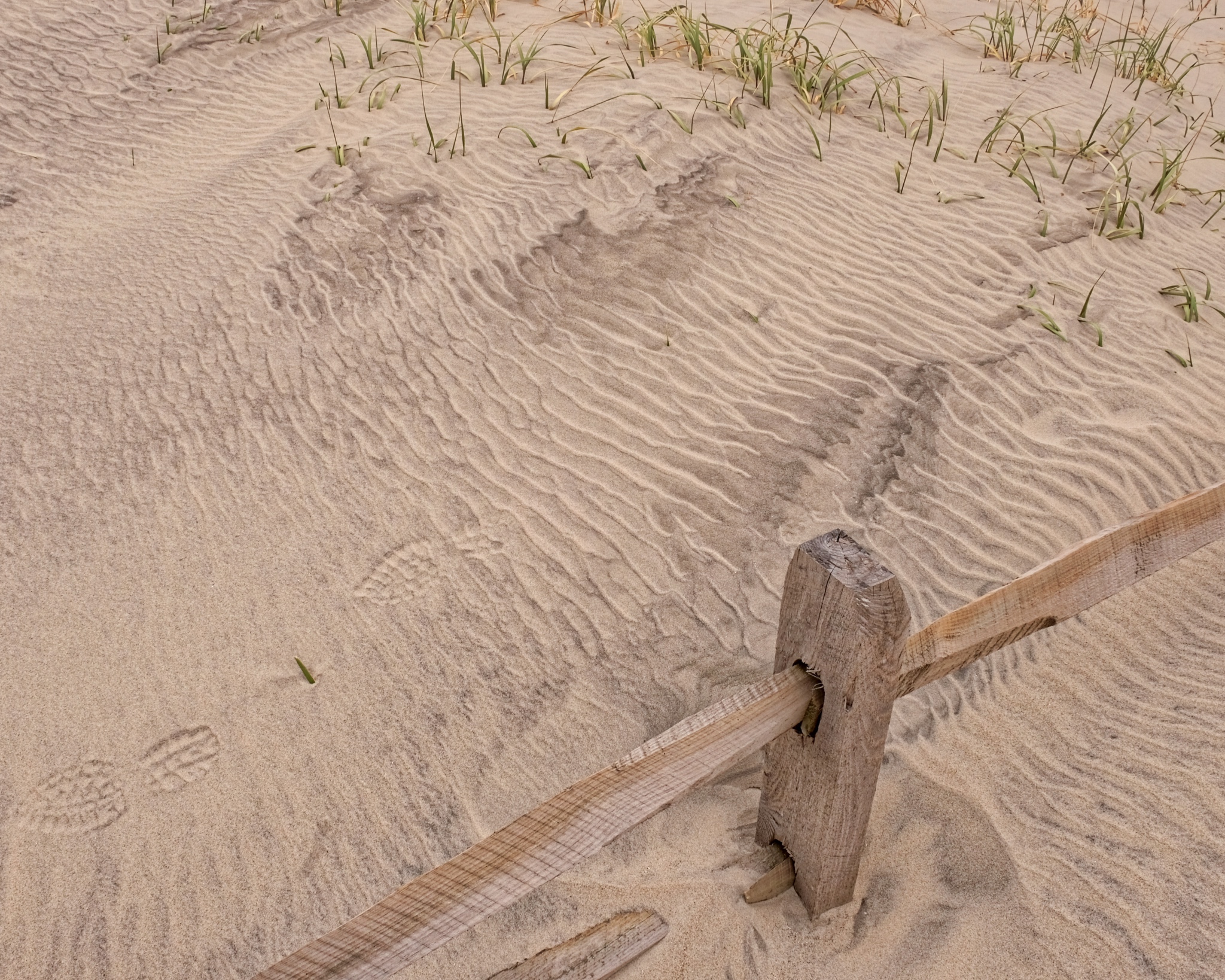 Wind patterns in the sand.
Wind patterns in the sand.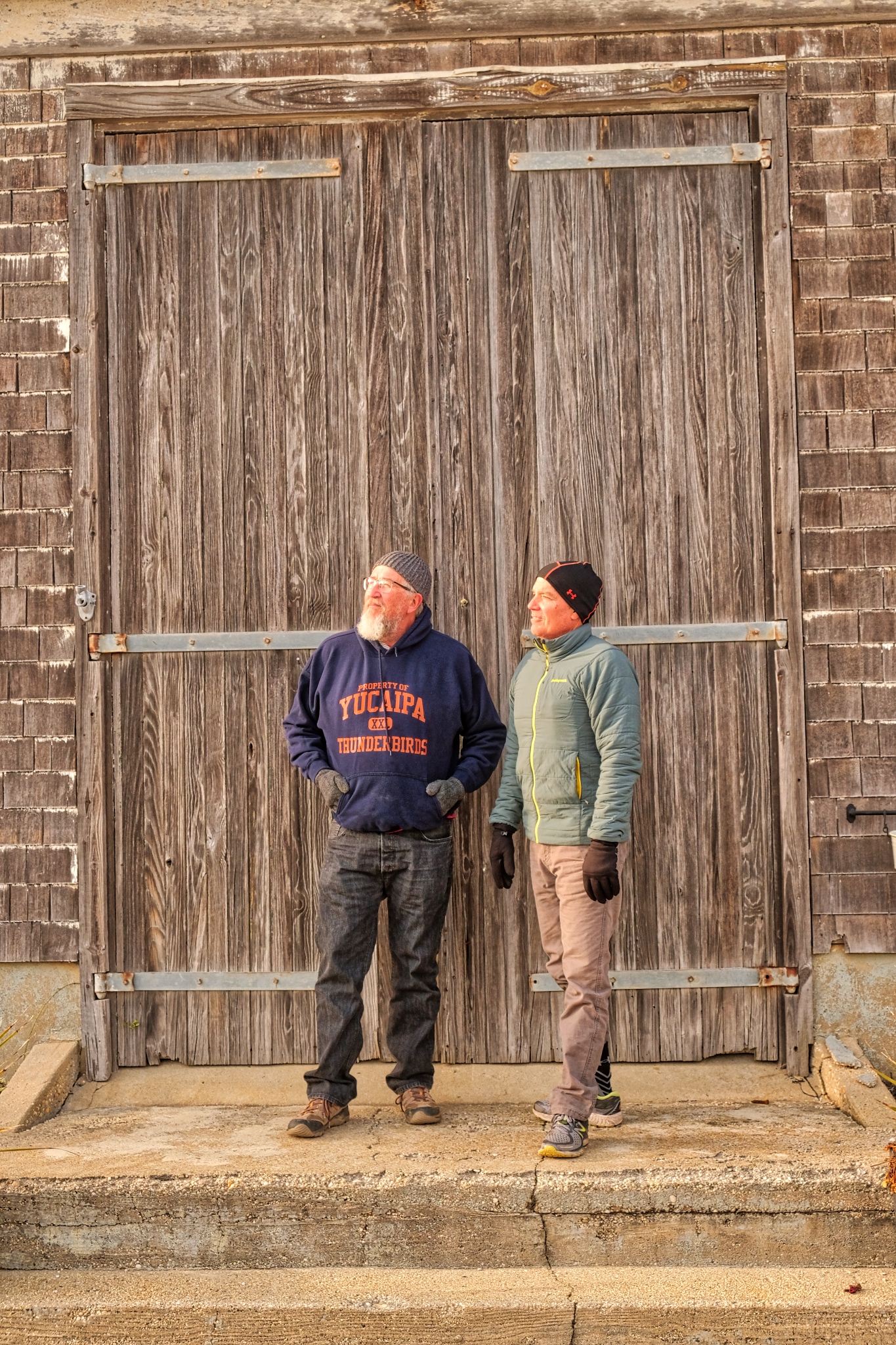 With my good buddy, Bud.
With my good buddy, Bud.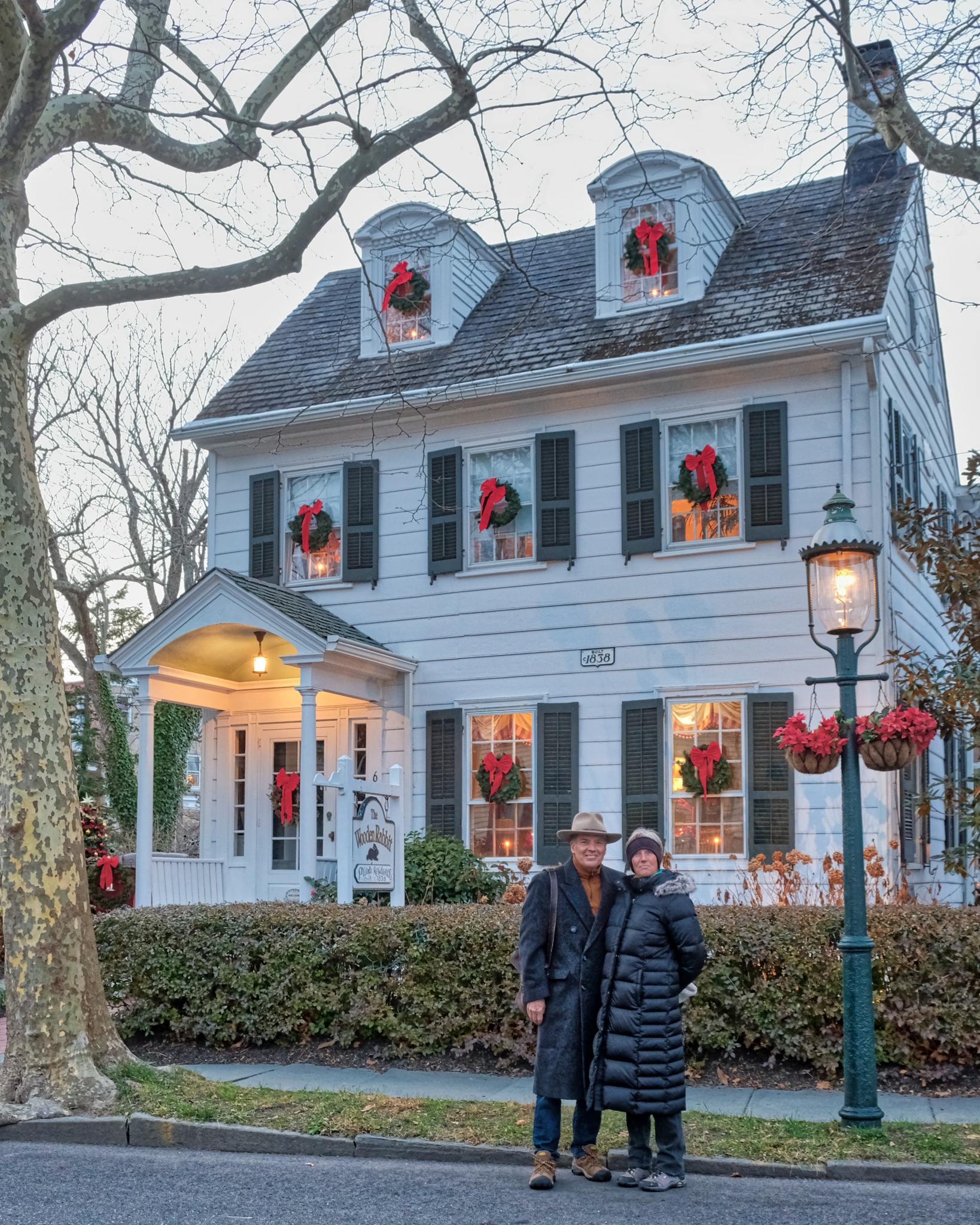 My friends and I drove 20 minutes south to the lovely colonial seaside village of Cape May in the late afternoon to see the decorated old Victorian and Colonial houses.
My friends and I drove 20 minutes south to the lovely colonial seaside village of Cape May in the late afternoon to see the decorated old Victorian and Colonial houses.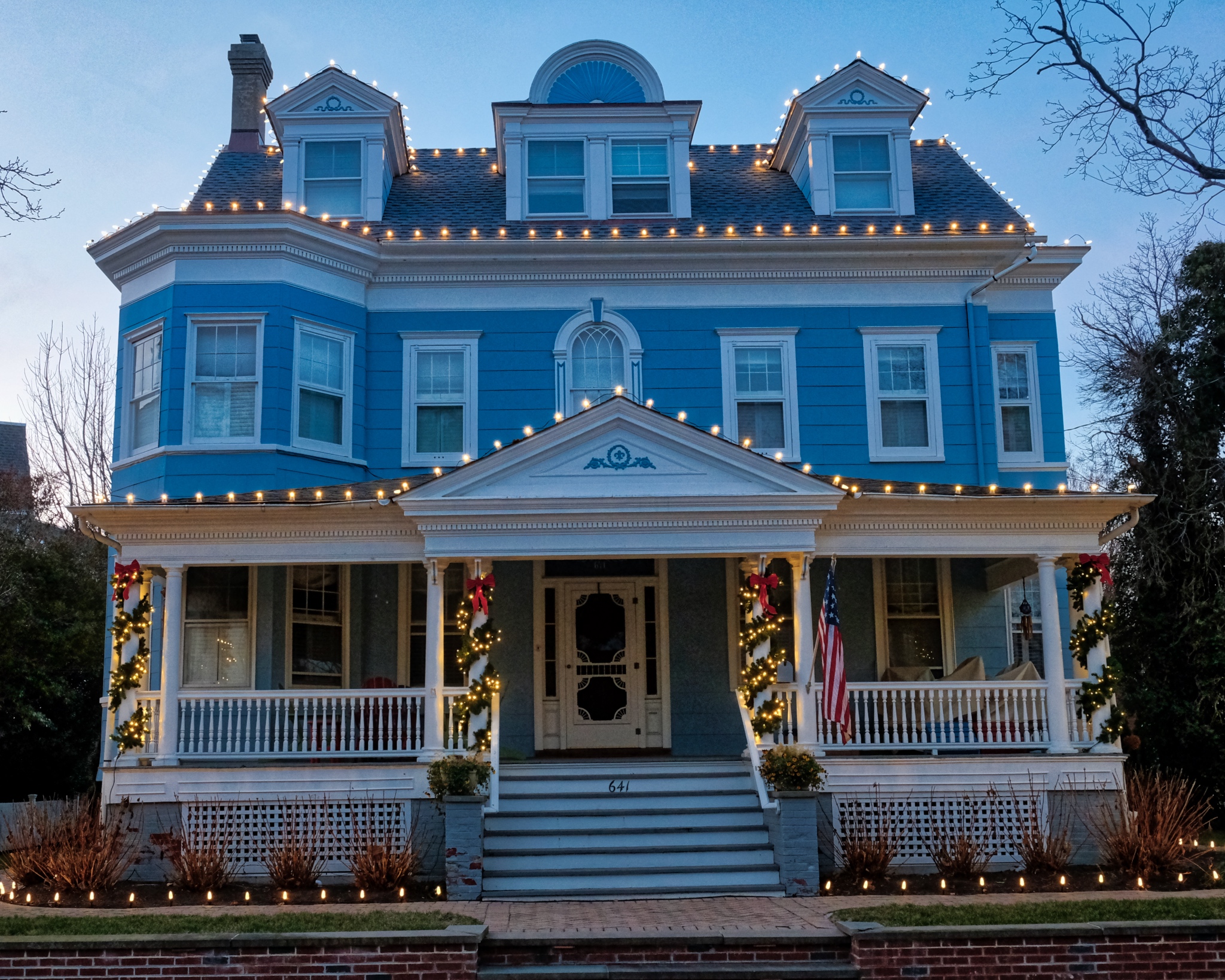 The sun had just gone down . . . and the houses were beginning to take on their night identity.
The sun had just gone down . . . and the houses were beginning to take on their night identity.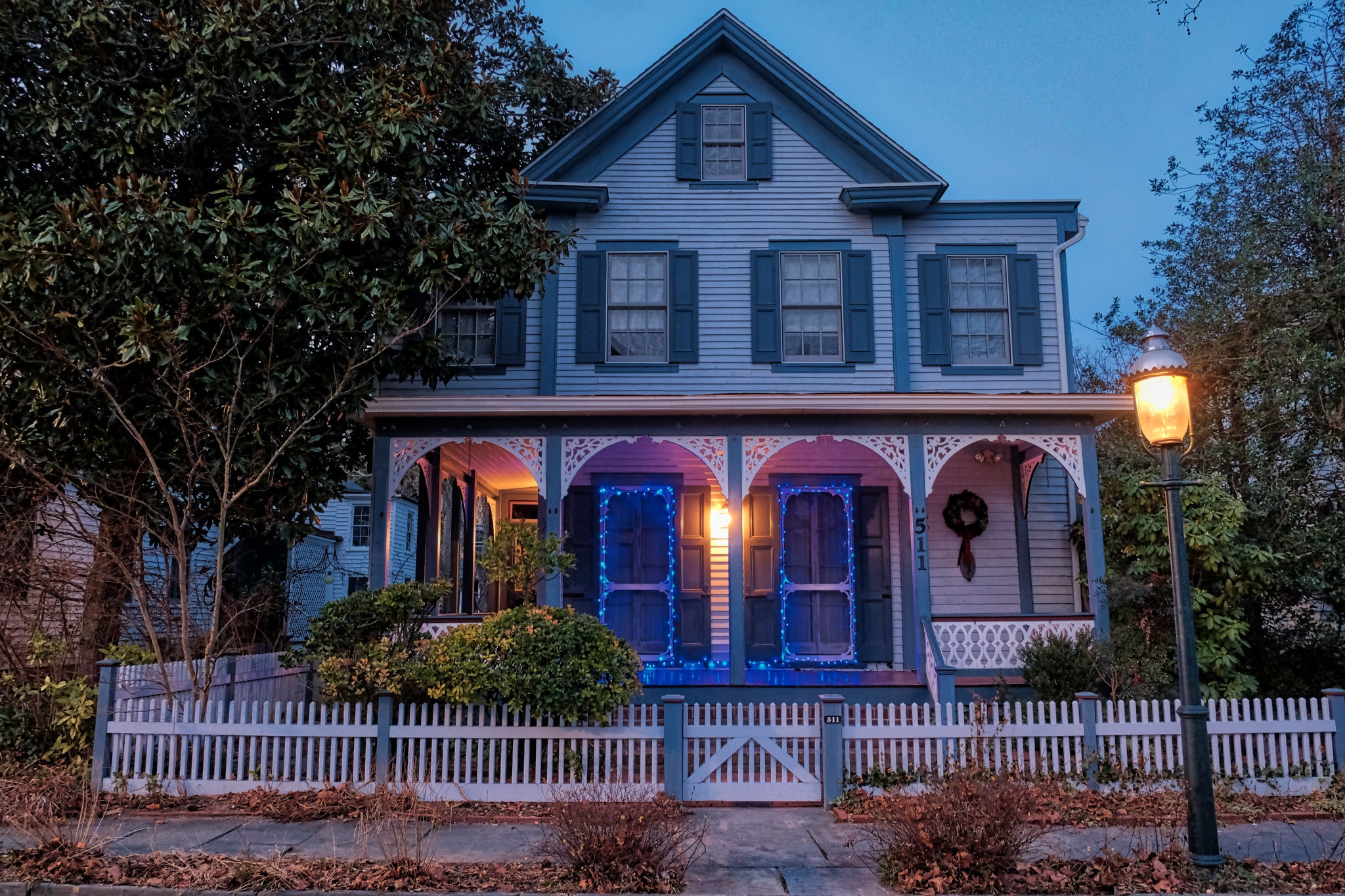 There are so many cute houses in Cape May. The Cape May Historic District has over 600 listed homes. Fantastic!
There are so many cute houses in Cape May. The Cape May Historic District has over 600 listed homes. Fantastic!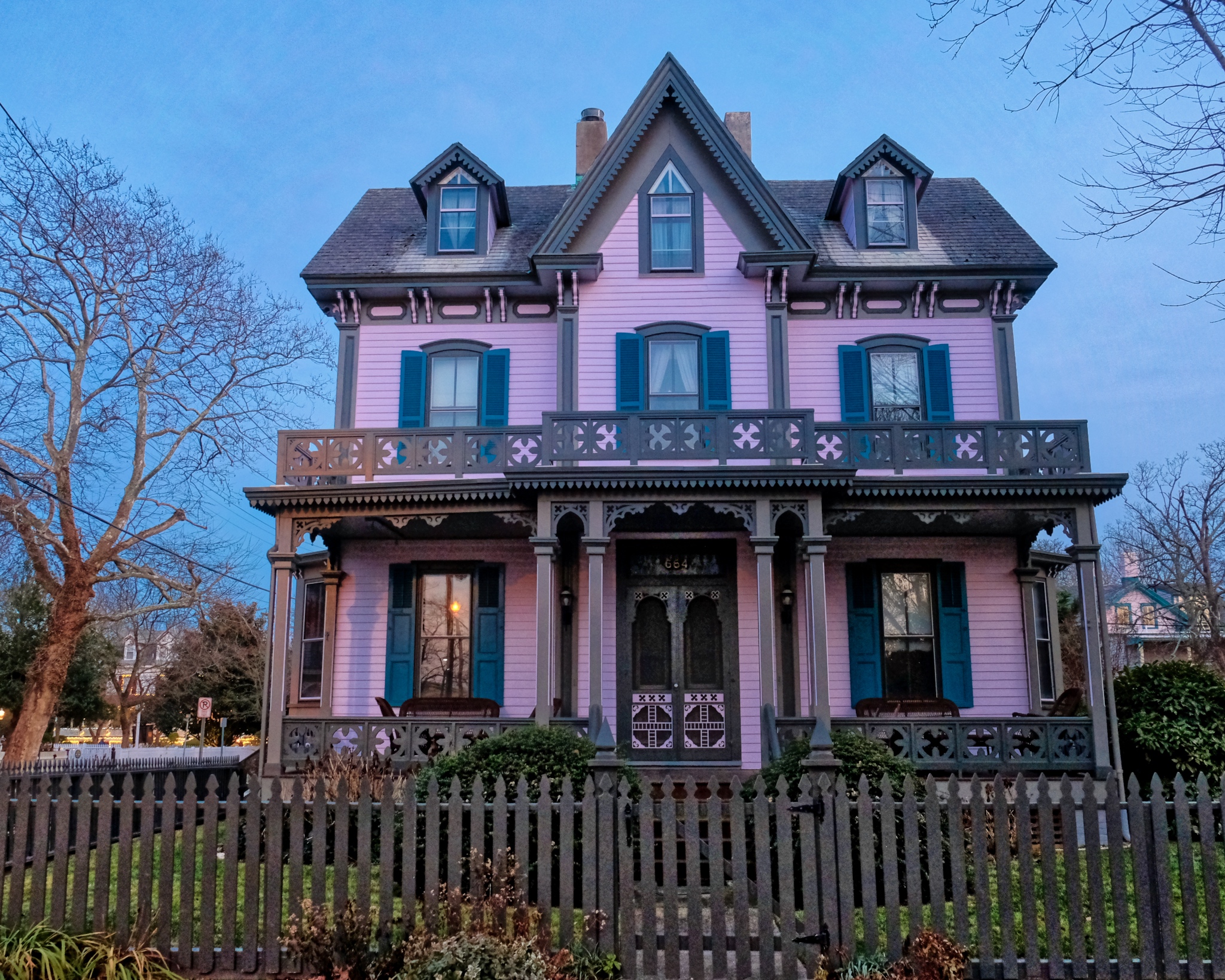 Cape May was first established as a village in 1632, on of the earliest settlements along the Atlantic coast. Most of the homes in the Historic District are of the Late Victorian Era Style.
Cape May was first established as a village in 1632, on of the earliest settlements along the Atlantic coast. Most of the homes in the Historic District are of the Late Victorian Era Style.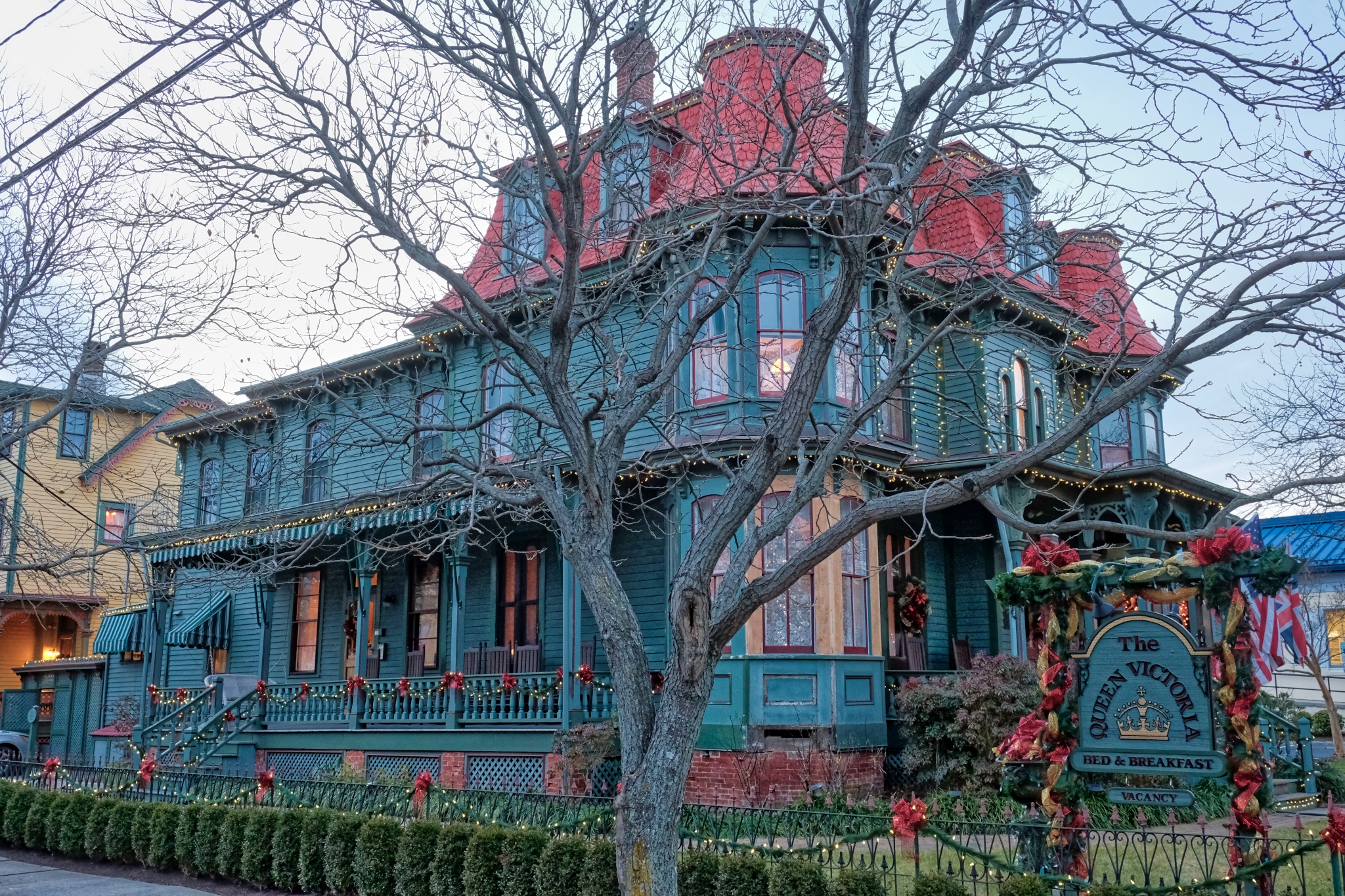 The beautiful Victoria B&B . . . .
The beautiful Victoria B&B . . . .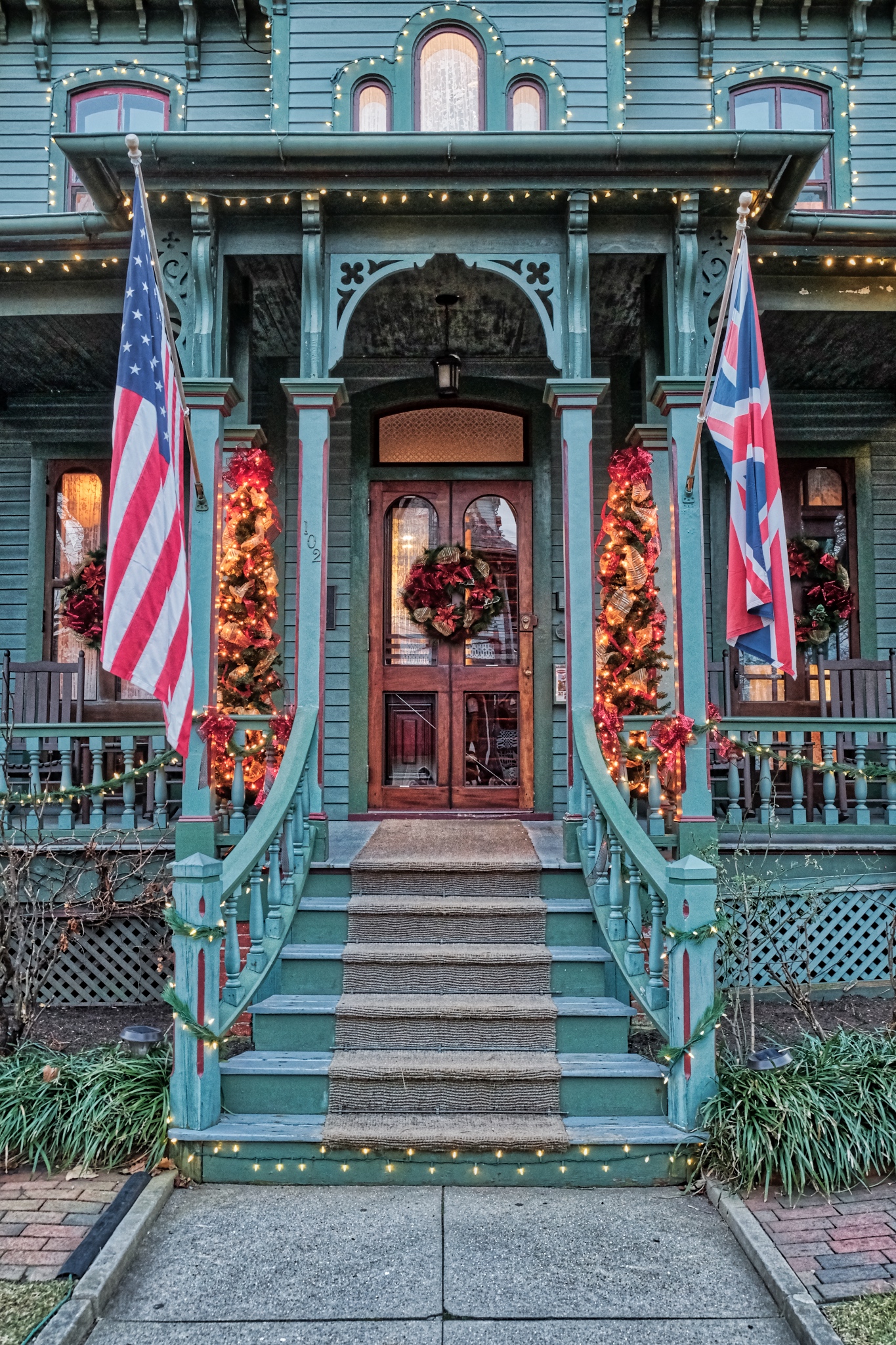 The Queen Victoria B&B front door.
The Queen Victoria B&B front door.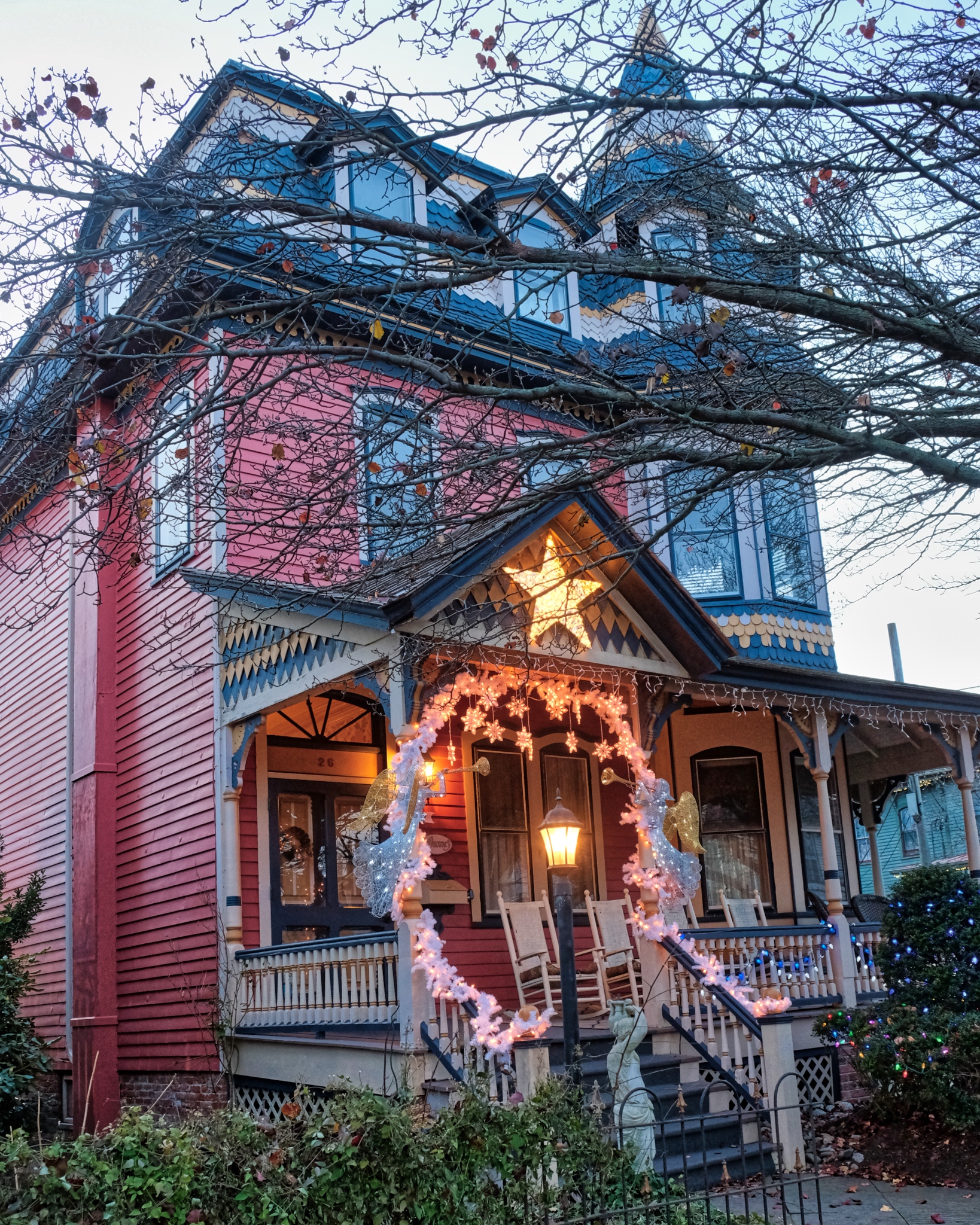 Lovely turreted Victorian mansion.
Lovely turreted Victorian mansion.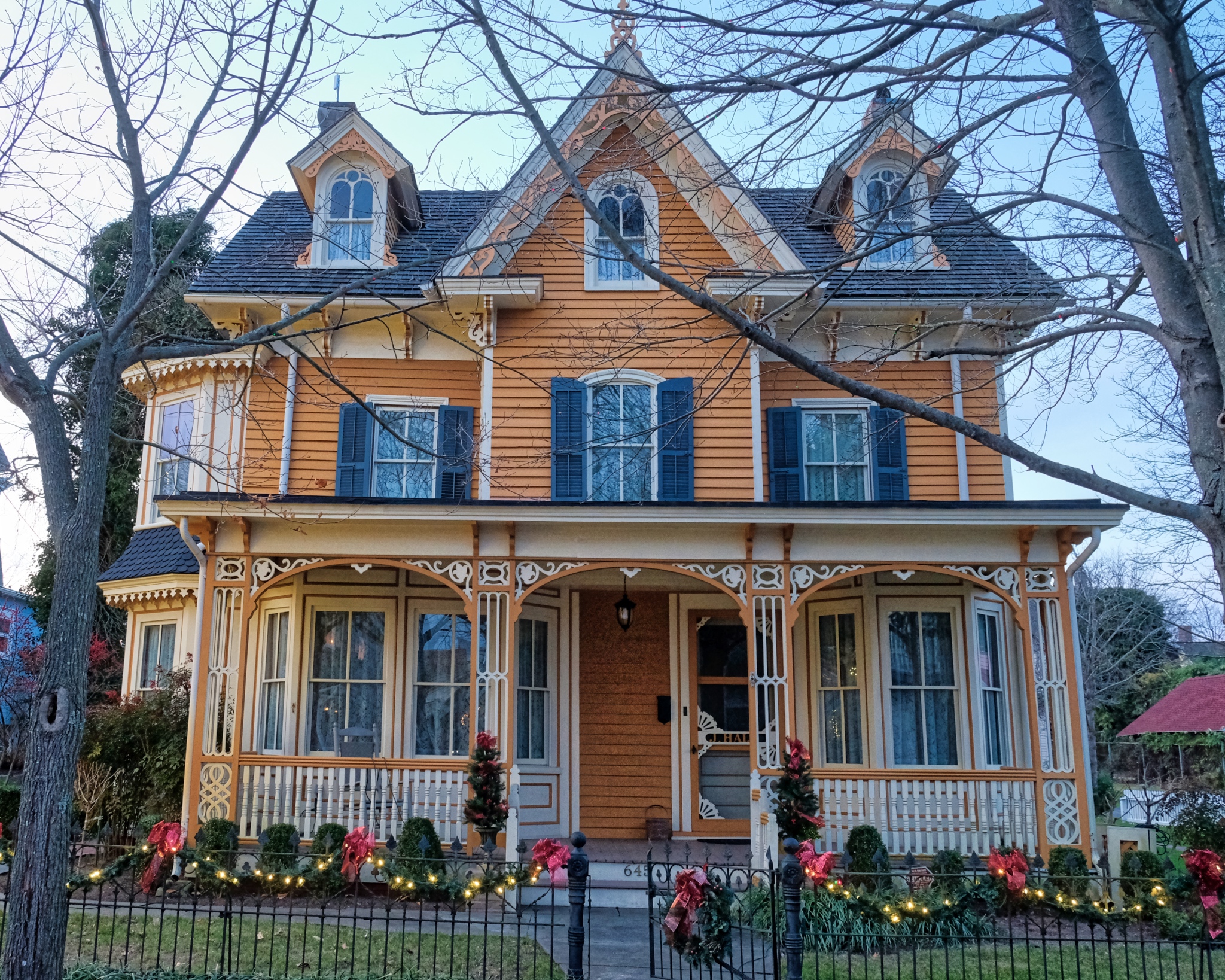 The pastel colors of the perfectly restored (maintained?) Victorians were so sweet.
The pastel colors of the perfectly restored (maintained?) Victorians were so sweet.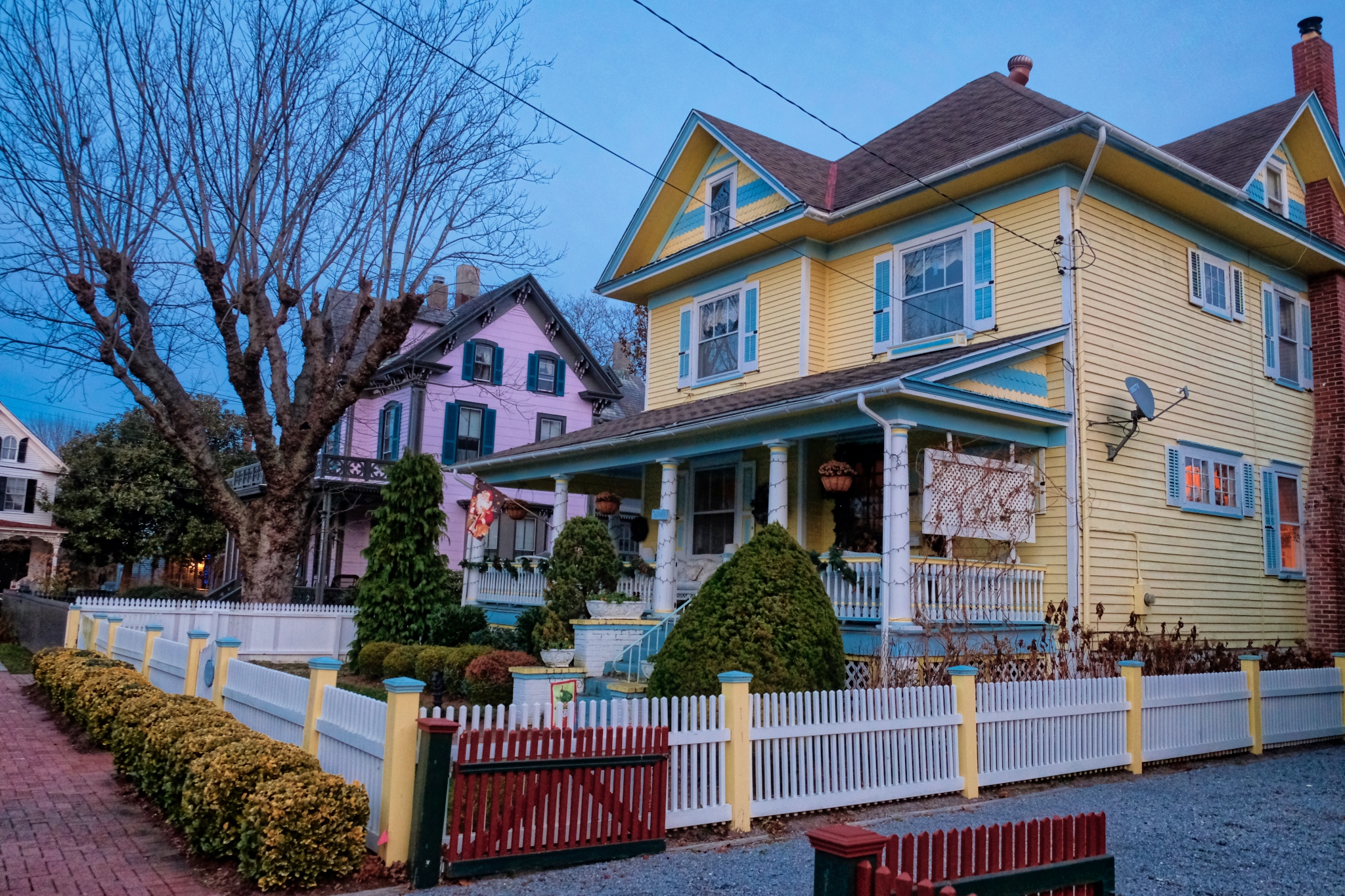 As the darkness continued to fall, the old houses began to light up in their Christmas charm.
As the darkness continued to fall, the old houses began to light up in their Christmas charm.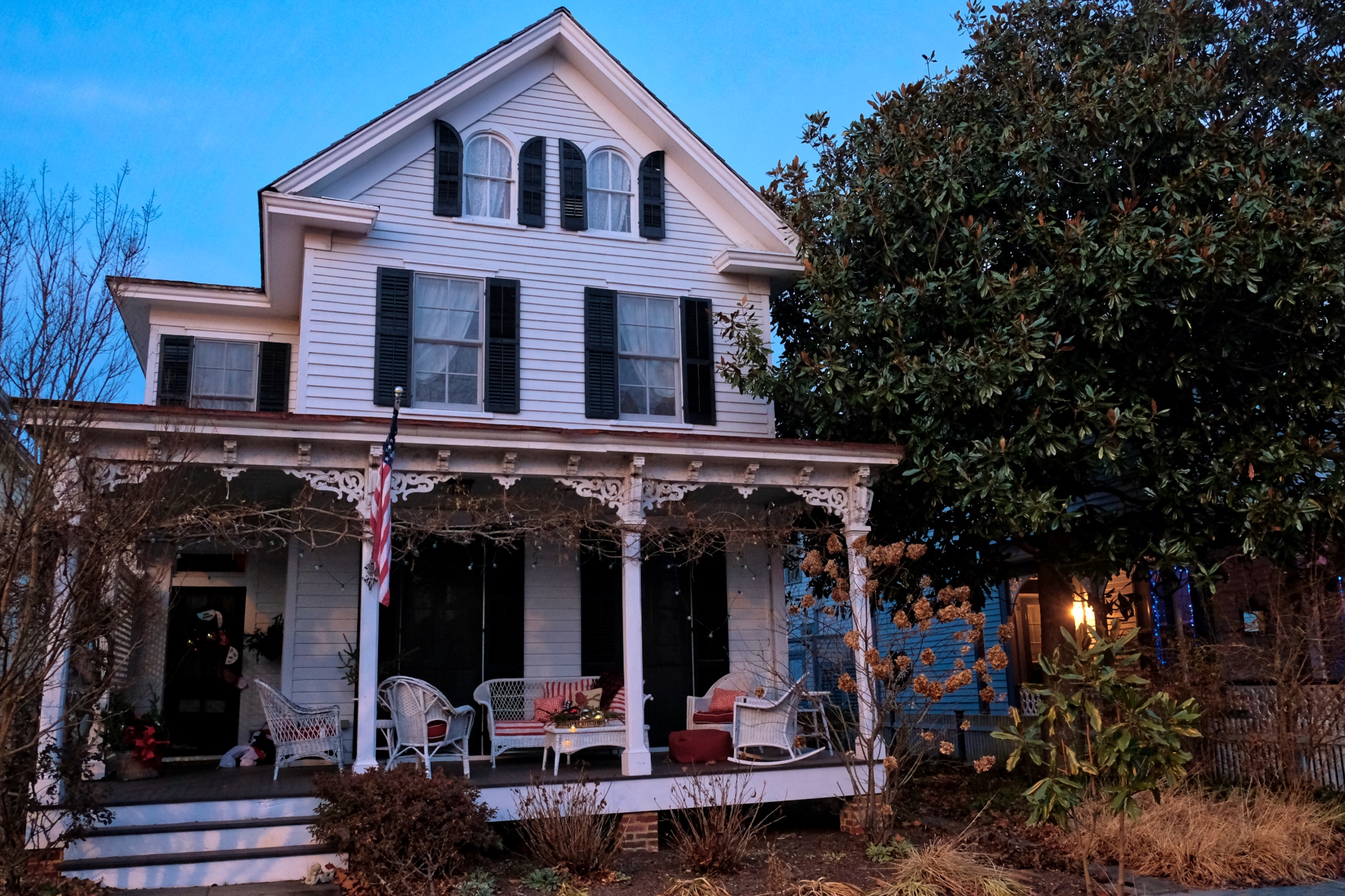 Although not as grand or ornate as some others in Cape May, I like this modest white house the most: it seems so inviting.
Although not as grand or ornate as some others in Cape May, I like this modest white house the most: it seems so inviting.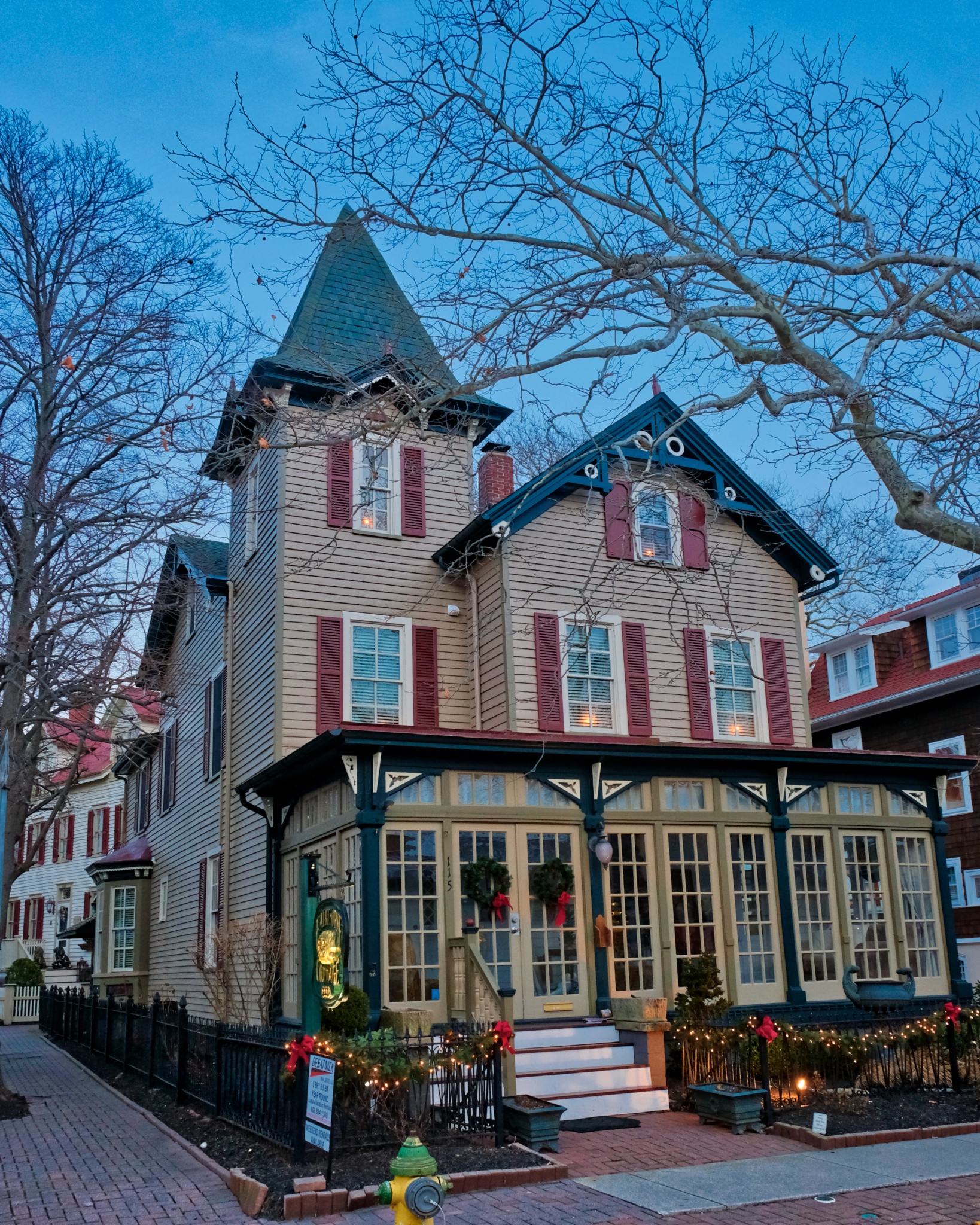 Another one of my favorites . . . that enclosed porch is just perfect!
Another one of my favorites . . . that enclosed porch is just perfect!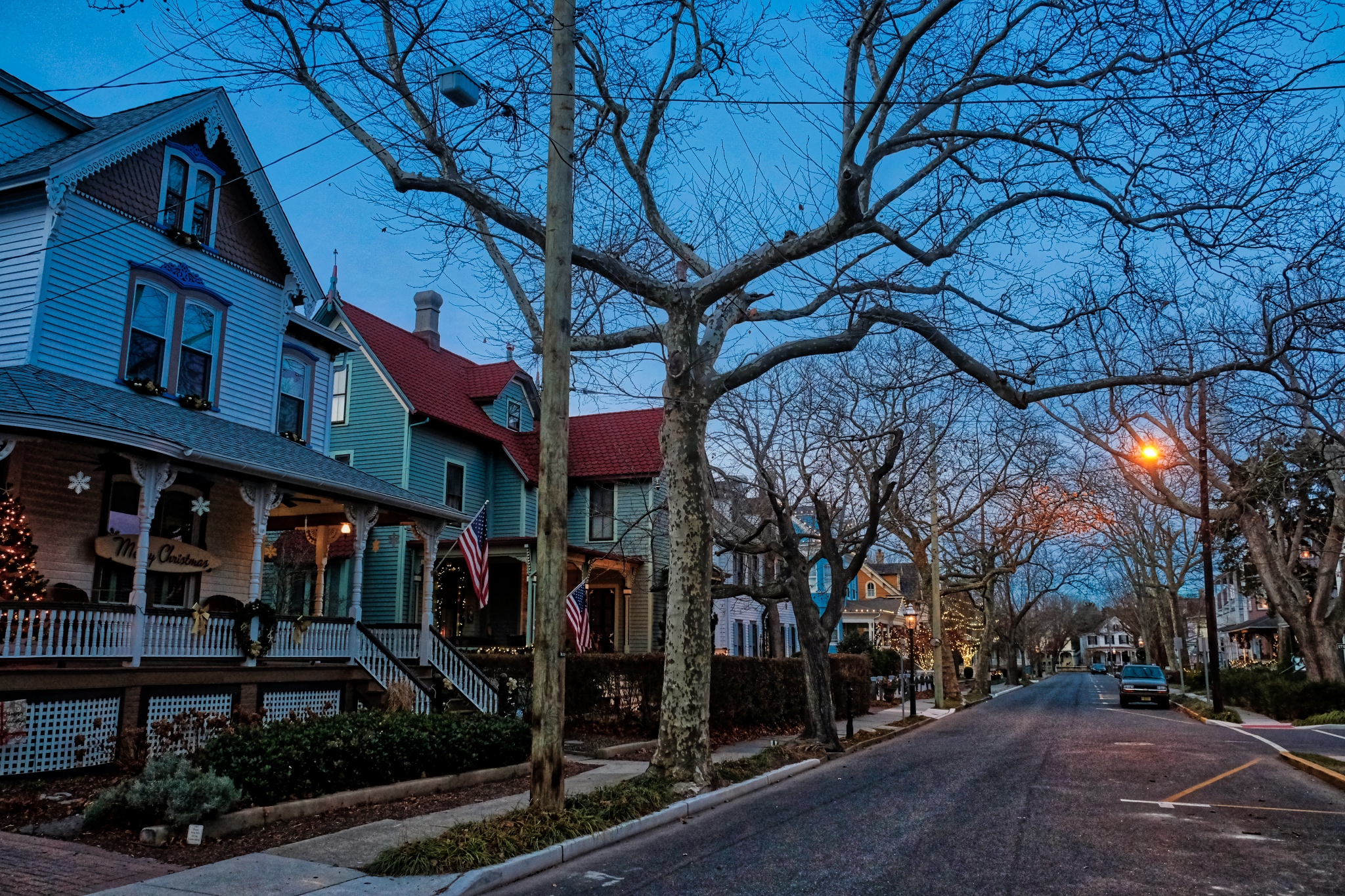 A typical Cape May street in the Historical District.
A typical Cape May street in the Historical District.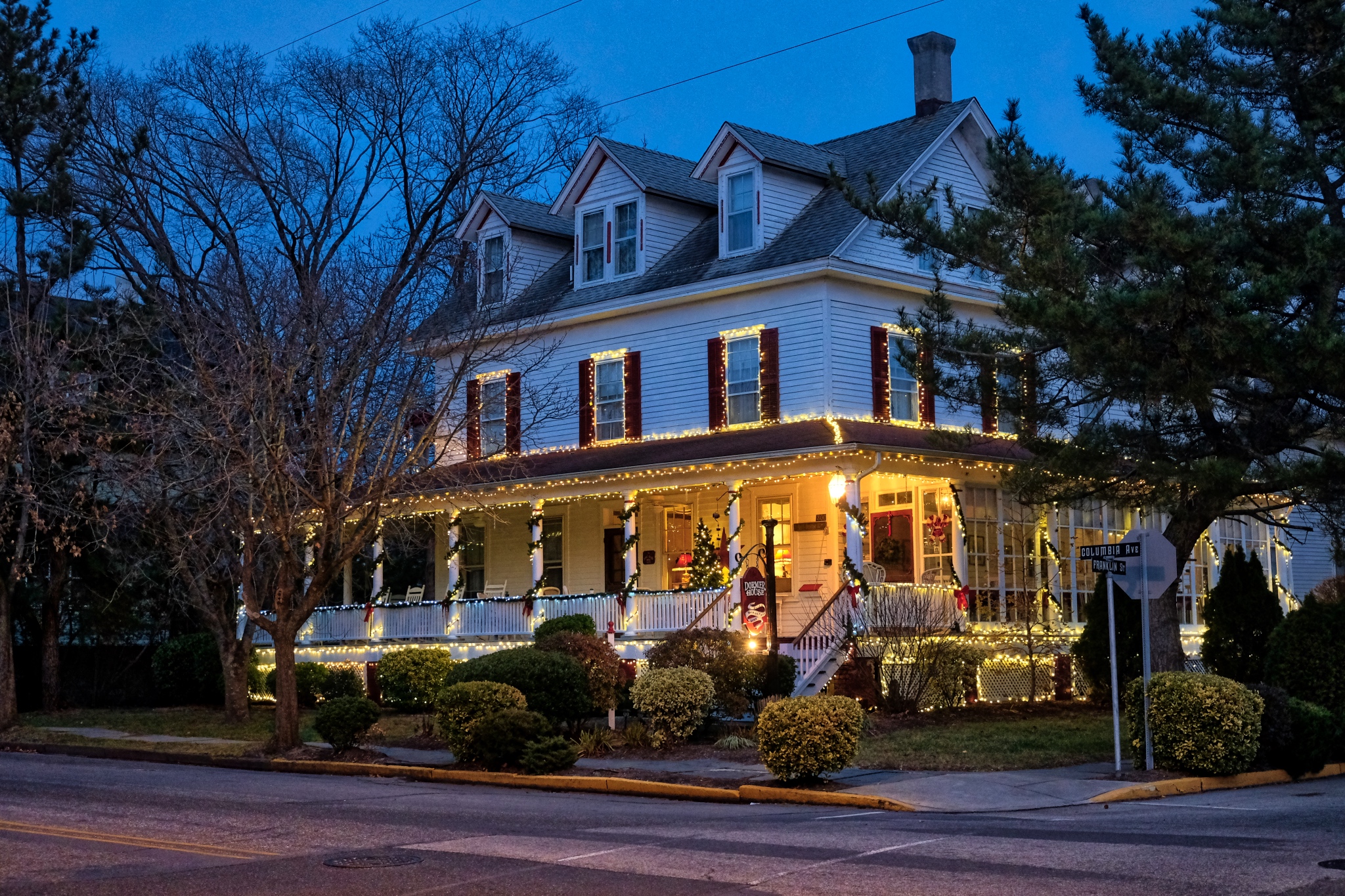 Photographers love the 'magic hour' - the first and last hour of sunlight, but we also love the 'Blue Hour' - the time just before dark when the sky is a deep blue.
Photographers love the 'magic hour' - the first and last hour of sunlight, but we also love the 'Blue Hour' - the time just before dark when the sky is a deep blue.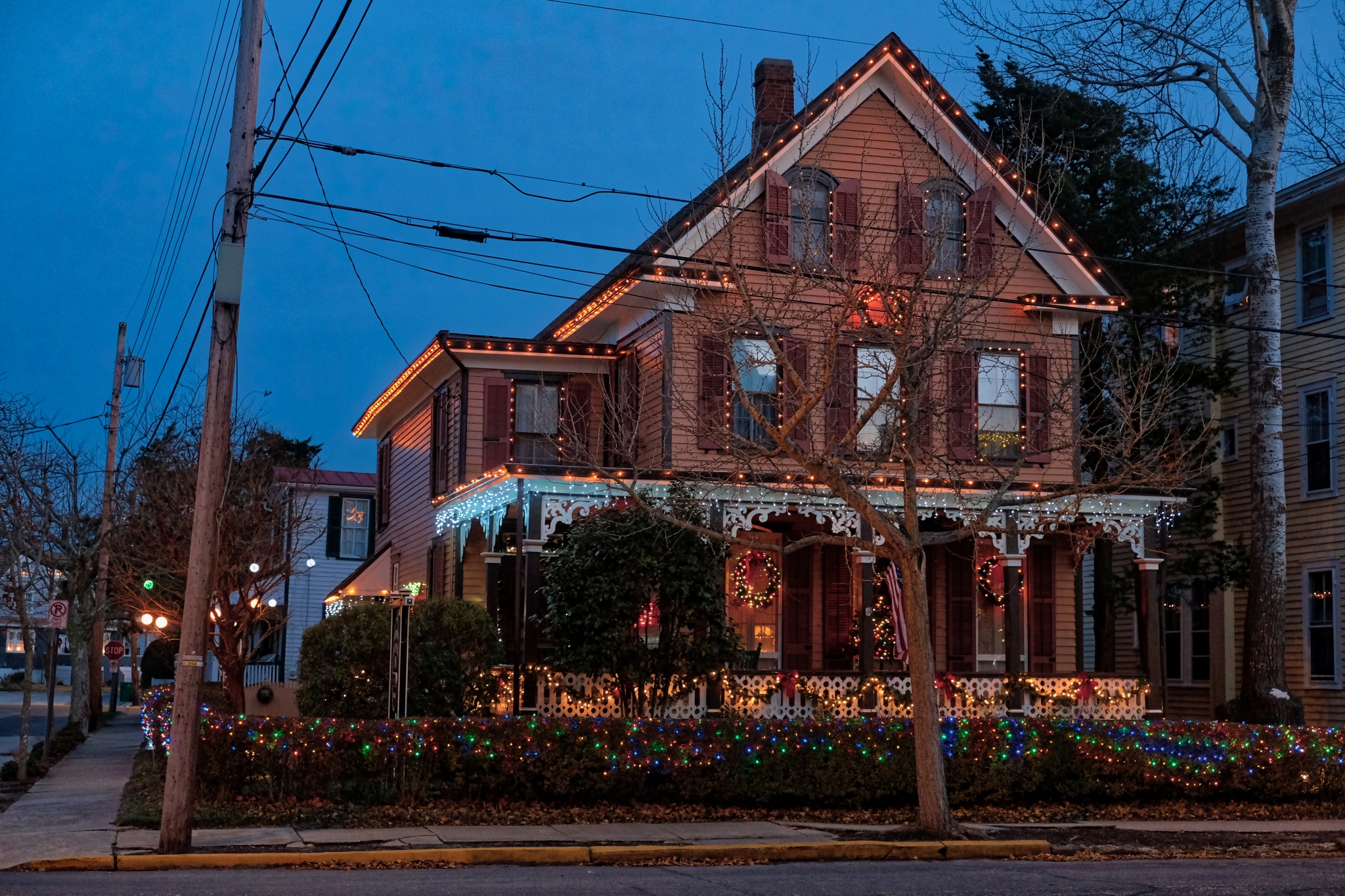 The holiday decorations were very nicely done . . . and NONE of those horrible inflatables!
The holiday decorations were very nicely done . . . and NONE of those horrible inflatables!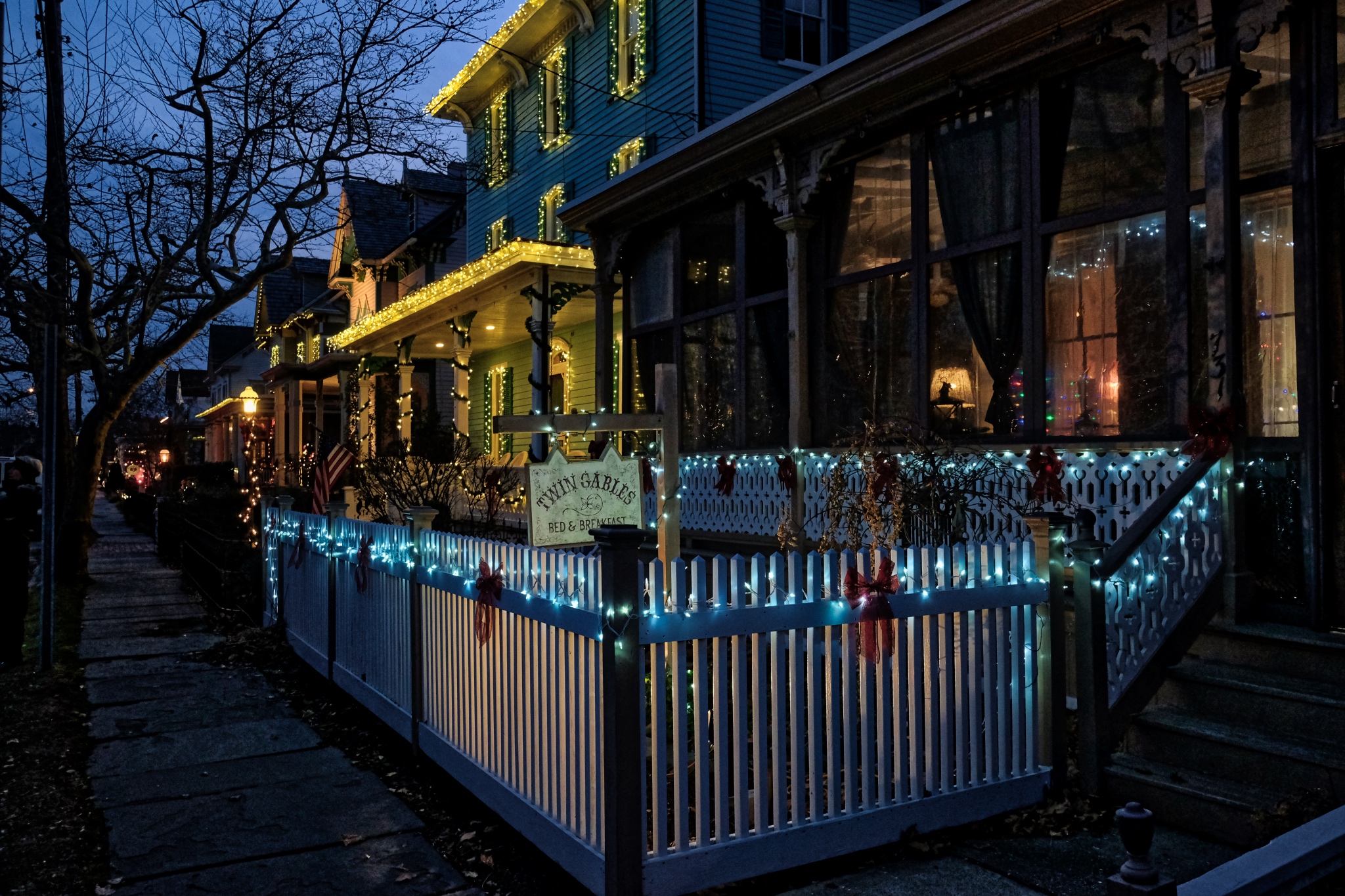 Such a lovely little town . . . "The way it used it be" . . . at least for the few who could afford it, even back then. My friends said this is "Philadelphia money."
Such a lovely little town . . . "The way it used it be" . . . at least for the few who could afford it, even back then. My friends said this is "Philadelphia money."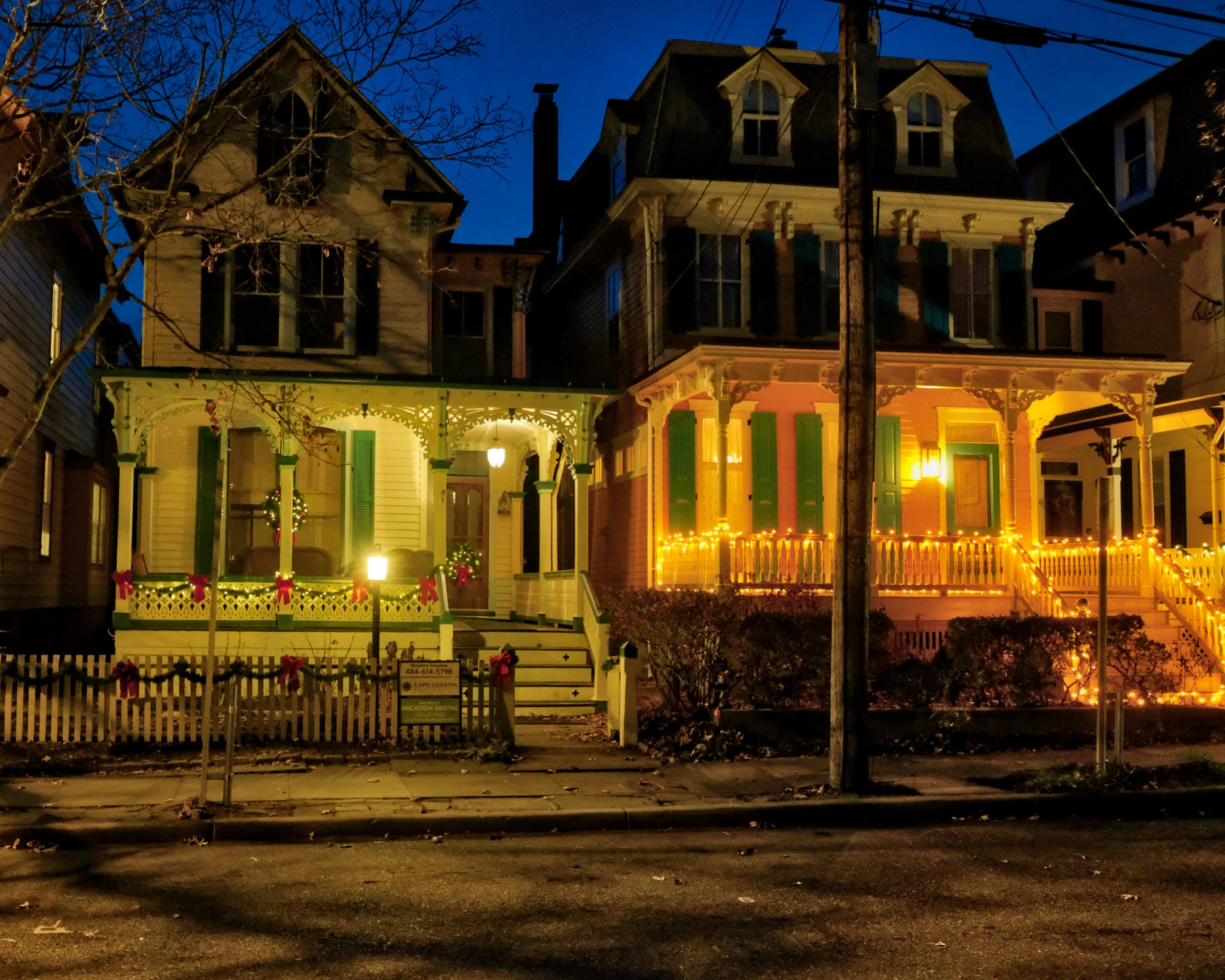 At times it seemed we were walking through a movie set . . . so perfect was the restoration . . .
At times it seemed we were walking through a movie set . . . so perfect was the restoration . . .  These two were gems: big porches on both floors!
These two were gems: big porches on both floors!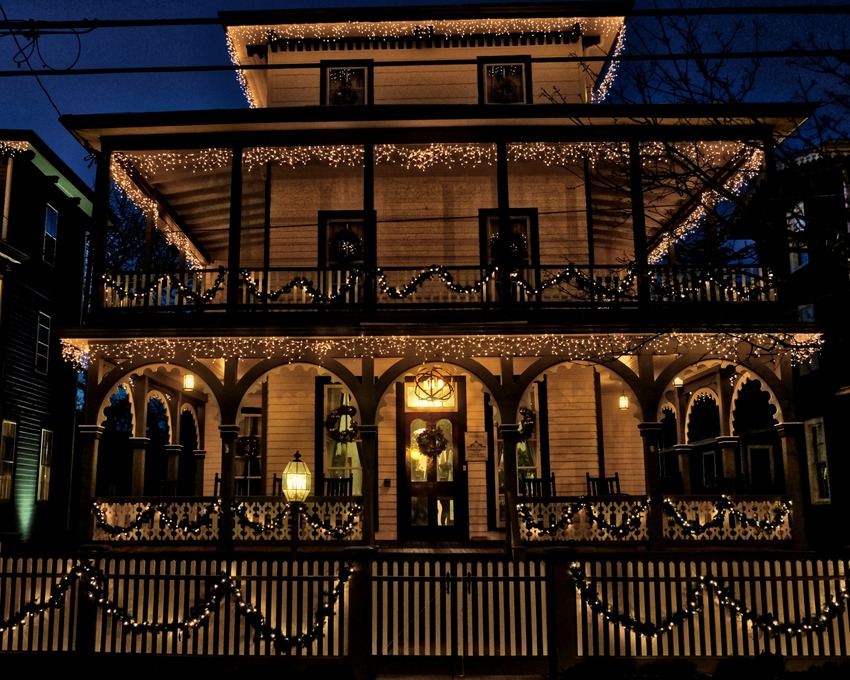 Such a fantasy house!
Such a fantasy house!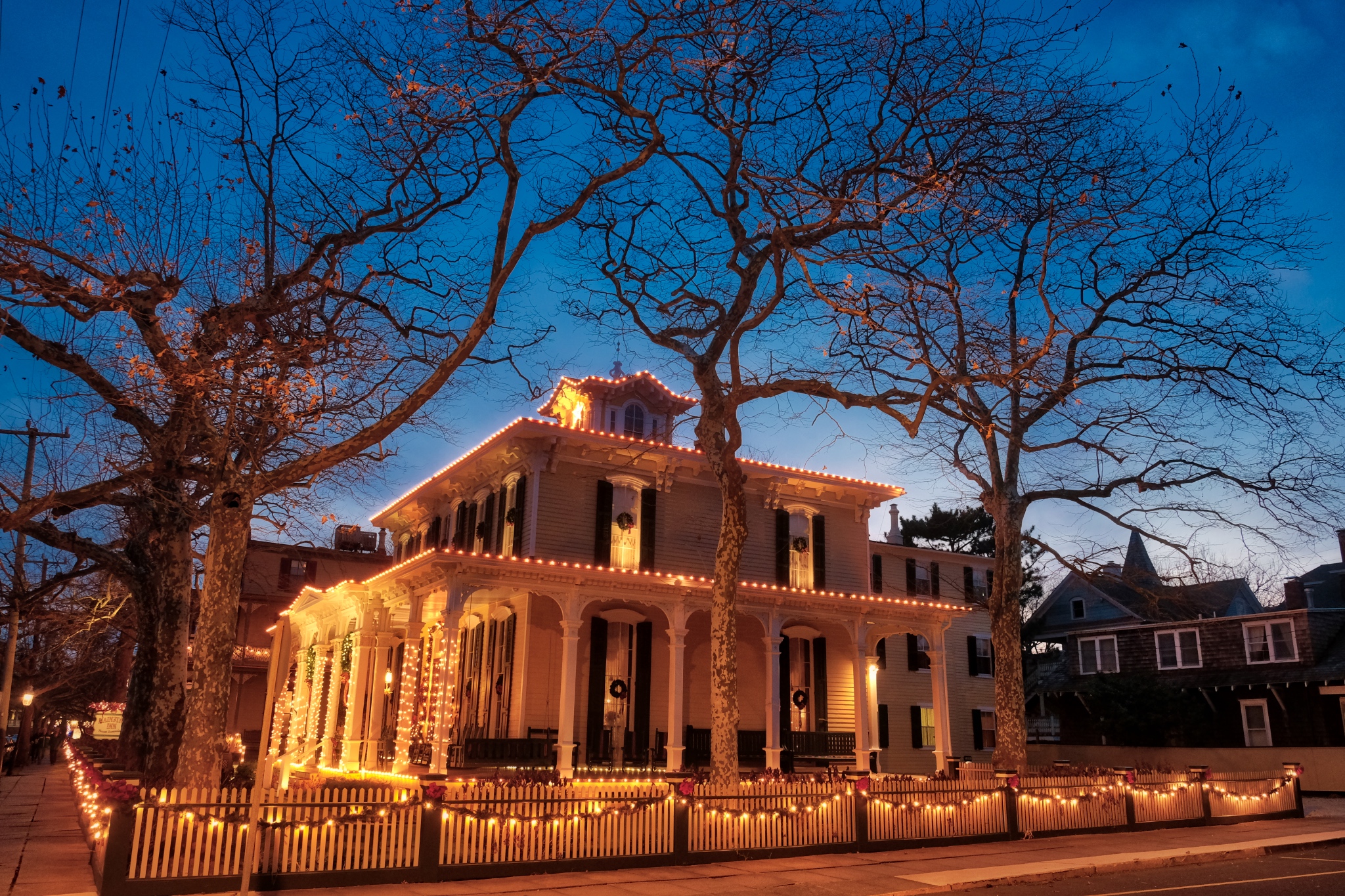 Cape May!
Cape May! 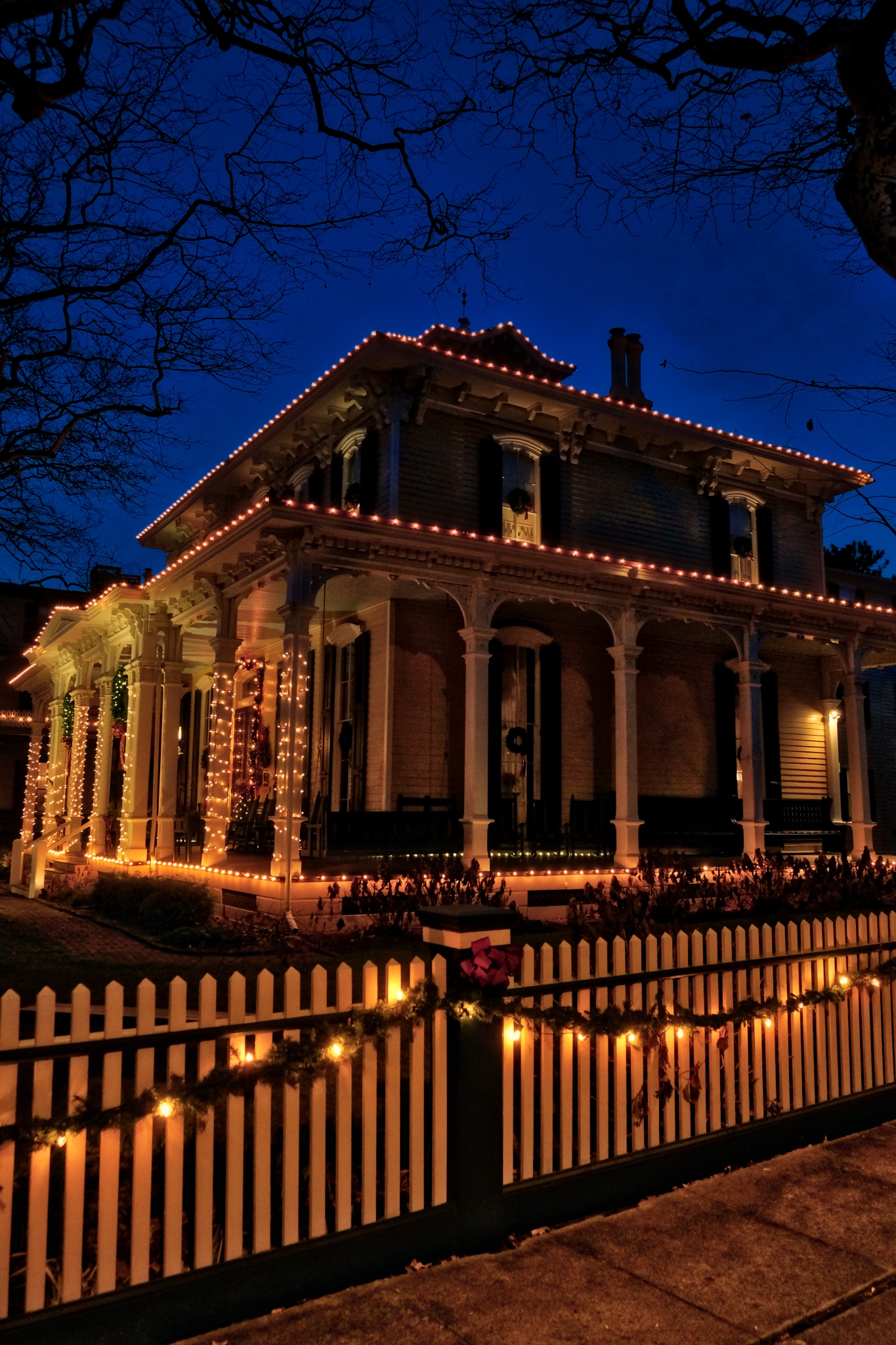 A beautiful gem in the blue hour.
A beautiful gem in the blue hour.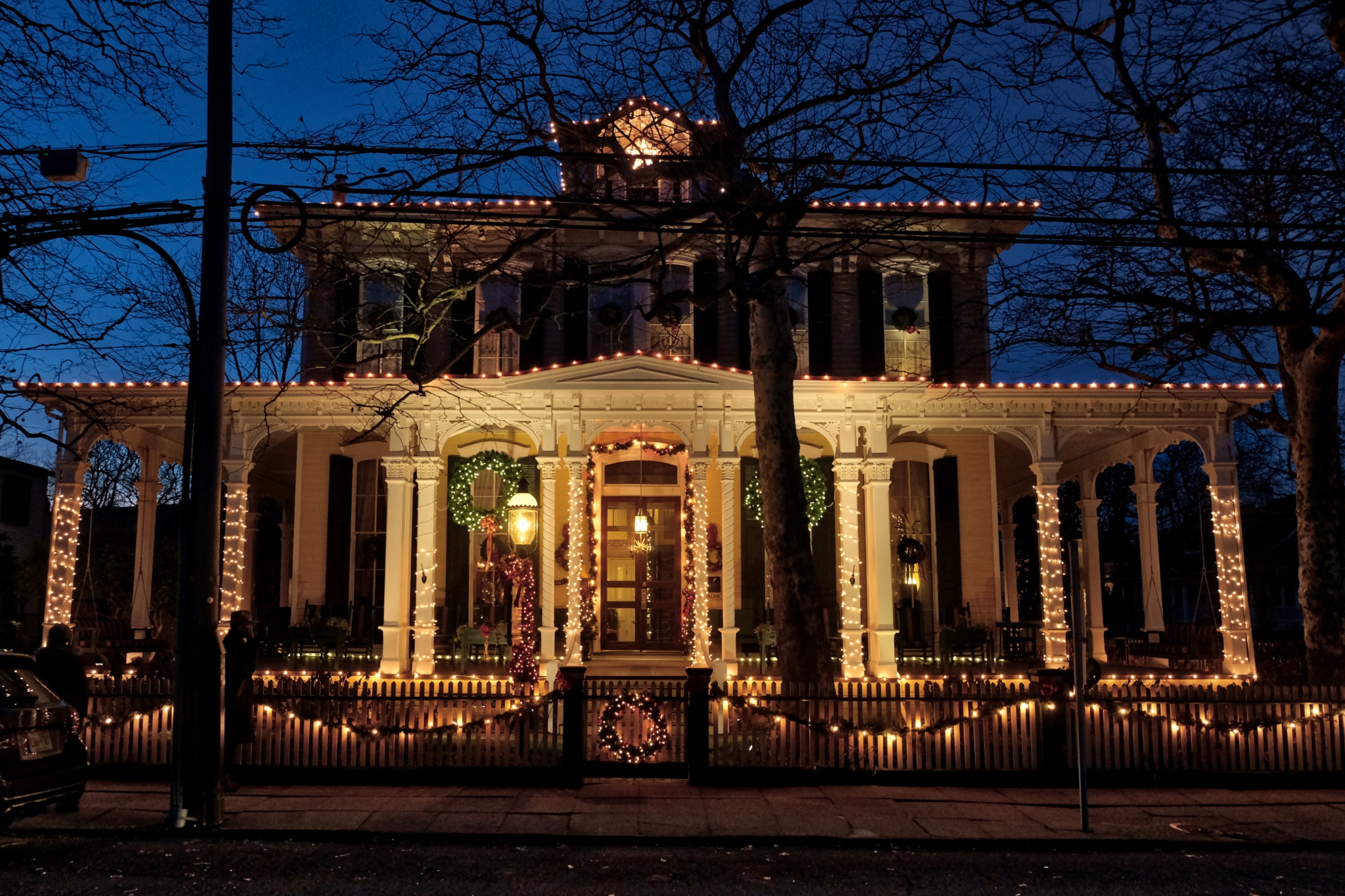 I could live here!
I could live here!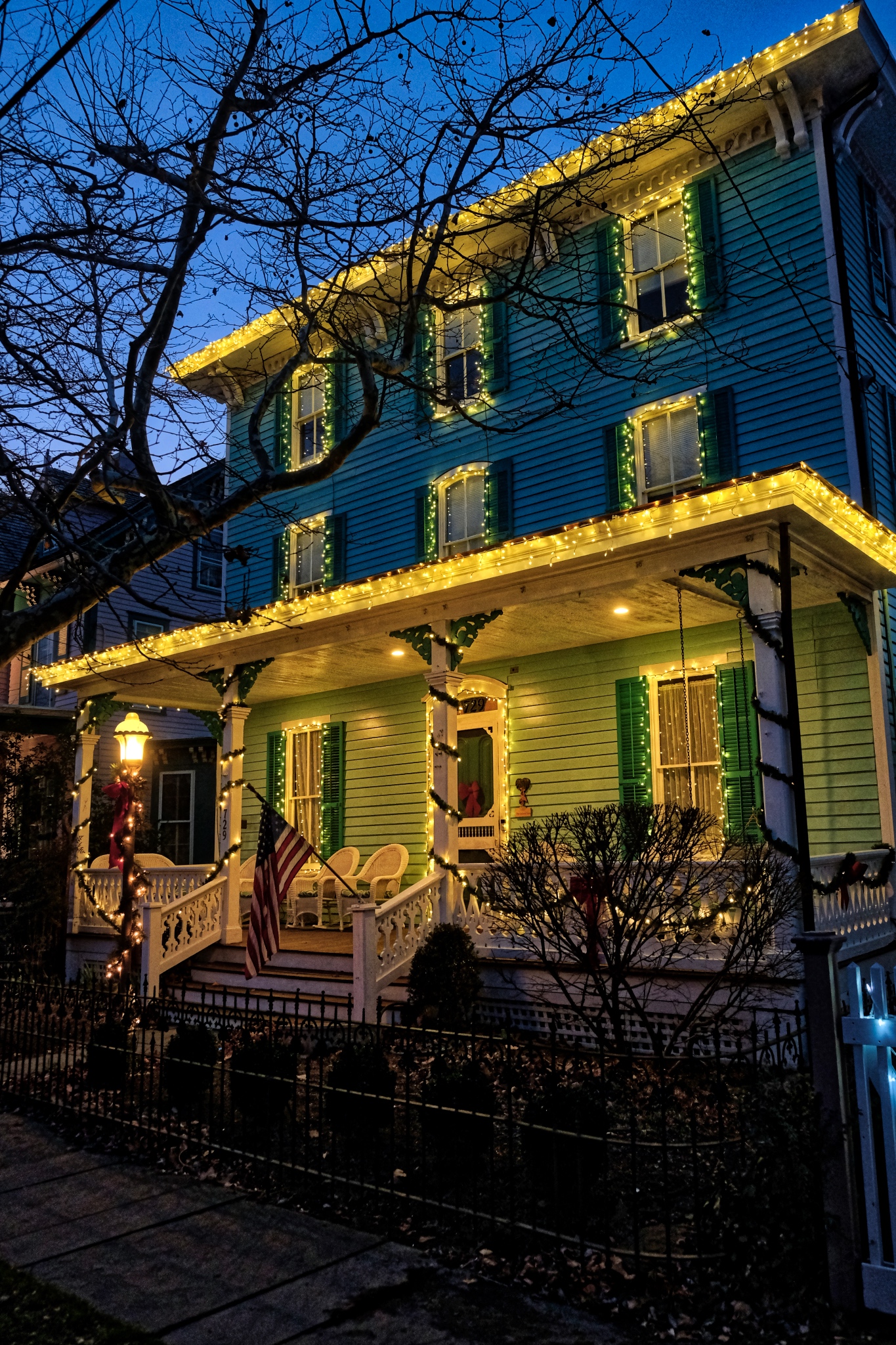 The old houses come in many colors.
The old houses come in many colors.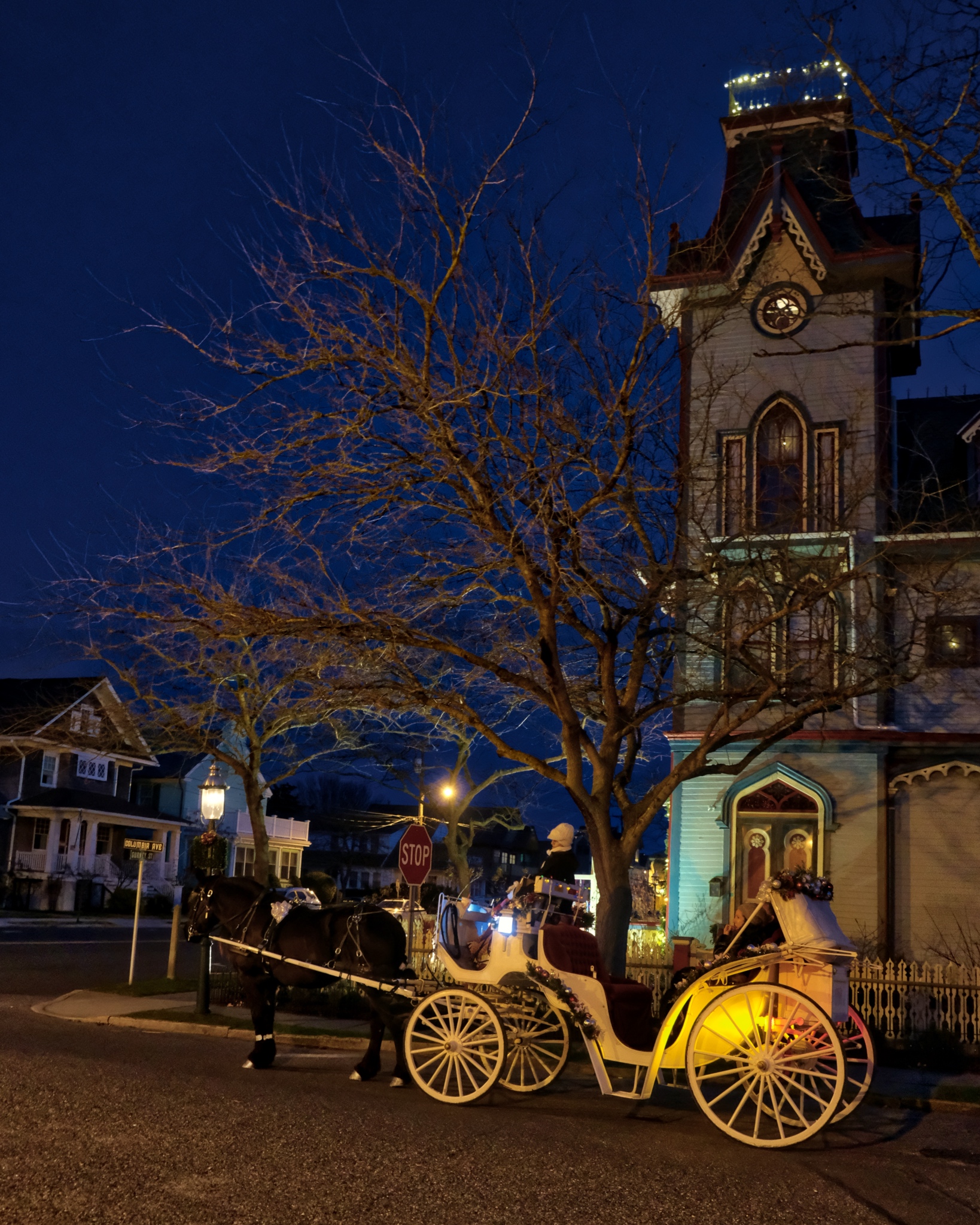 Tourists come to Cape May all year.
Tourists come to Cape May all year. 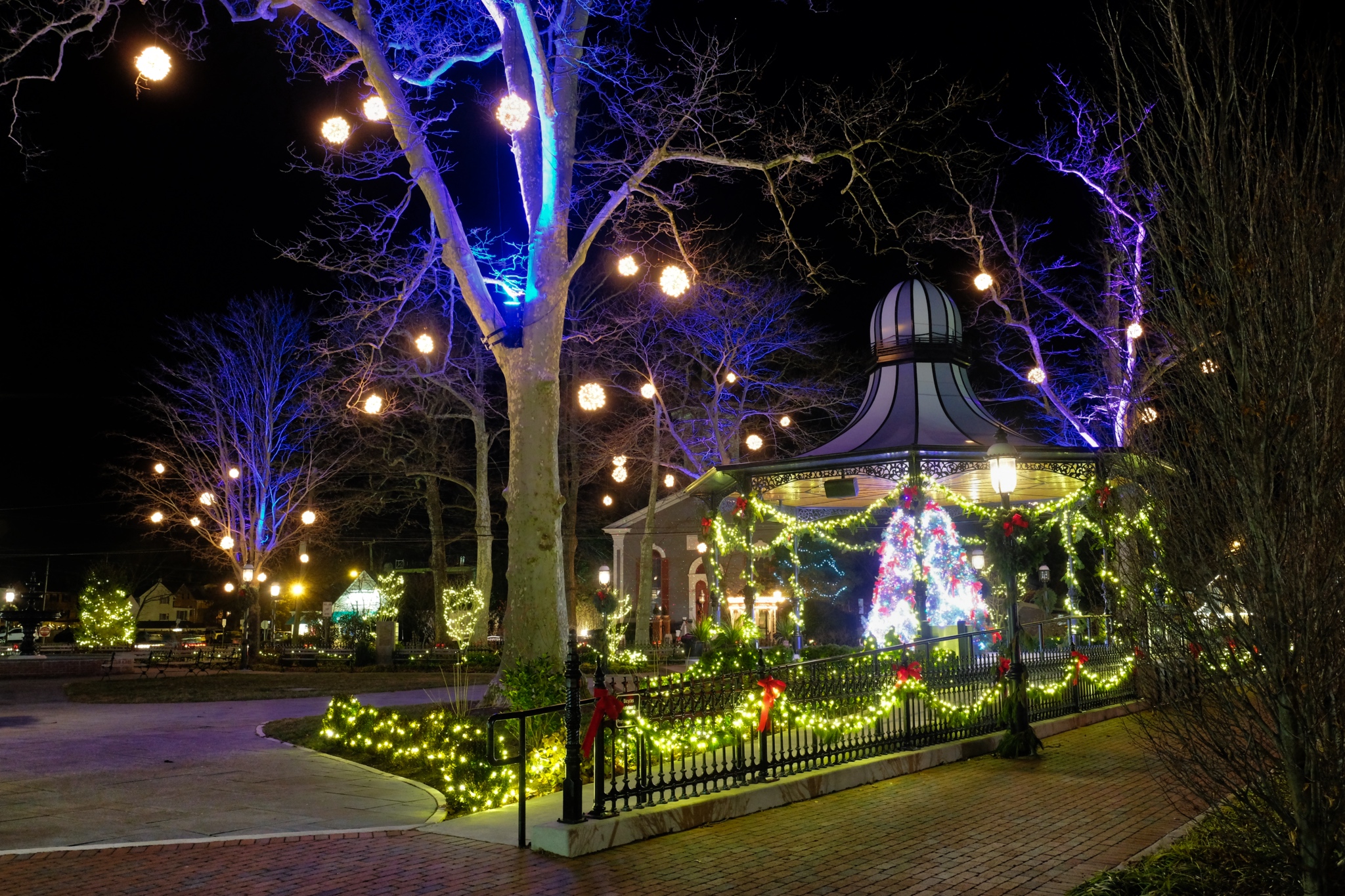 There is an old timey park in Cape May with a lovely gazebo.
There is an old timey park in Cape May with a lovely gazebo.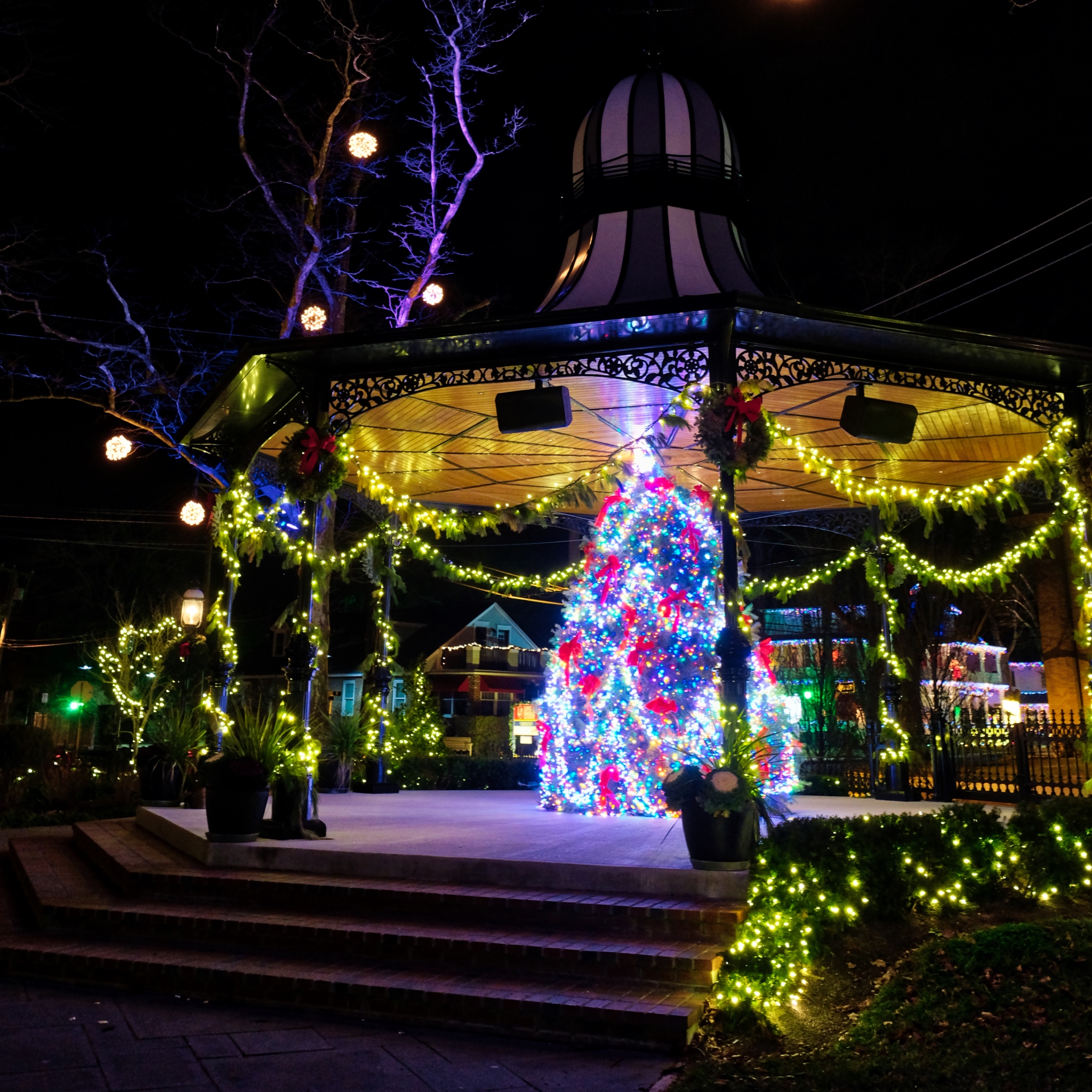 Such a festive feeling.
Such a festive feeling.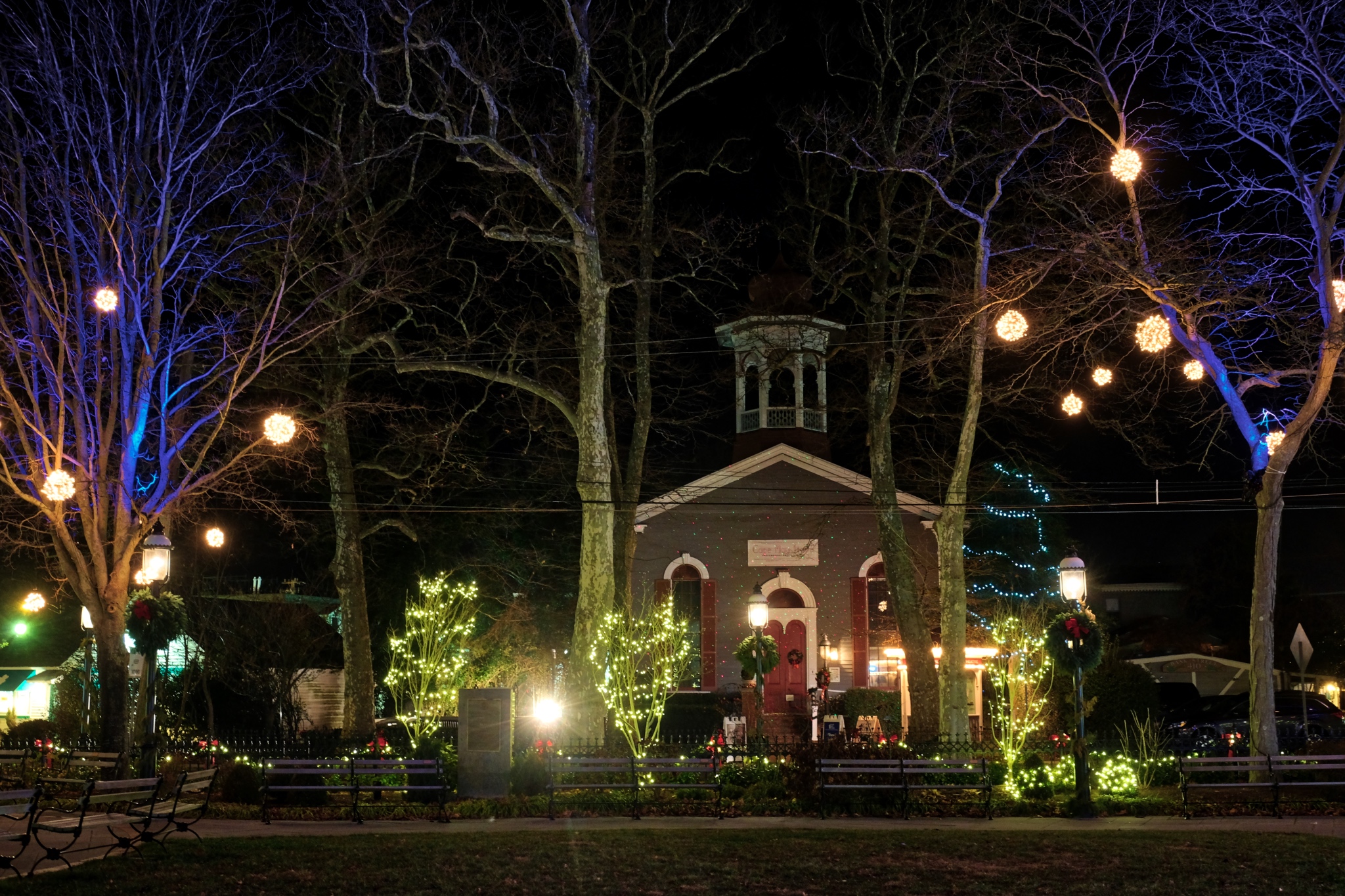 The buildings around the old town square.
The buildings around the old town square.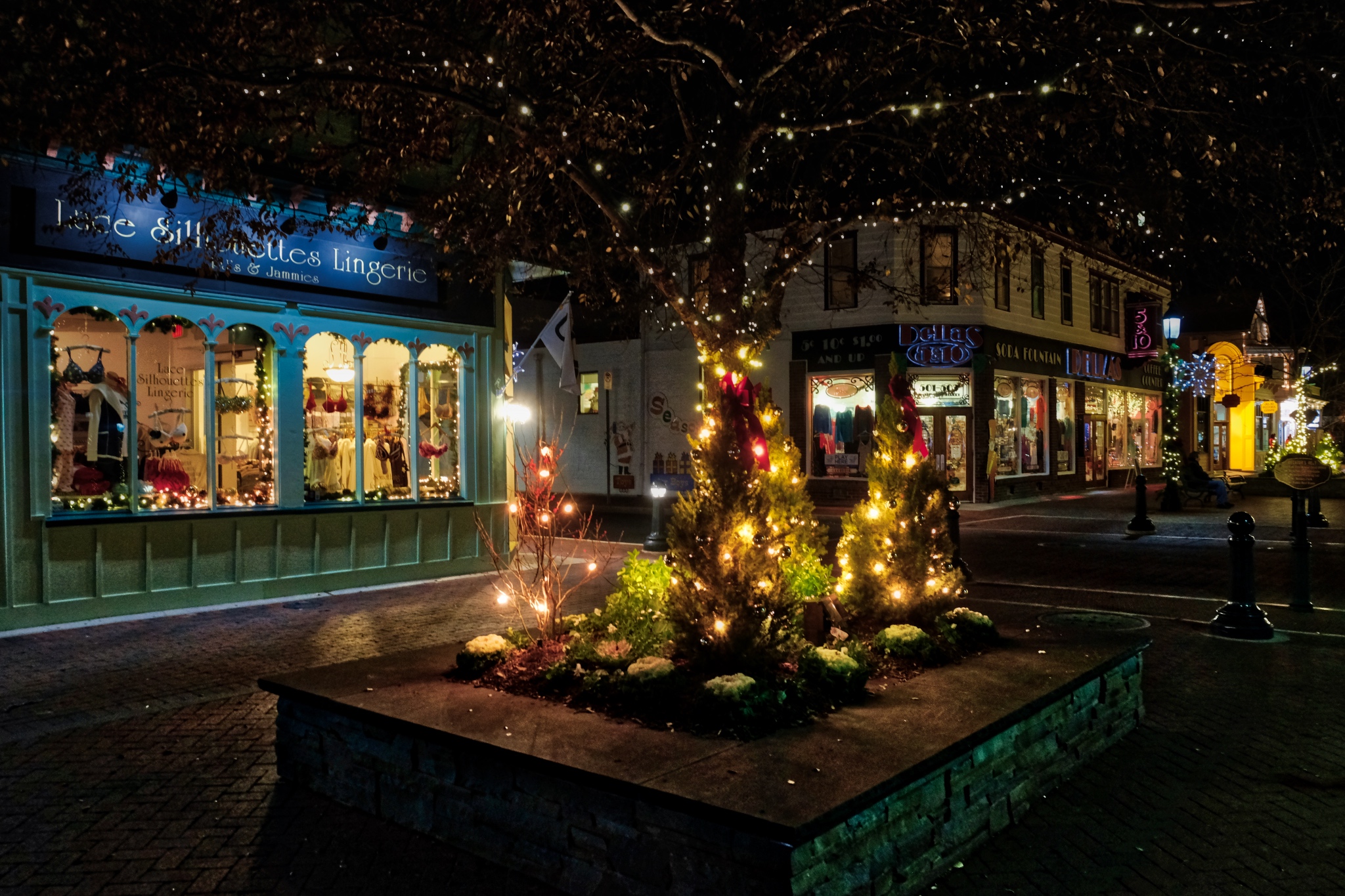 There is a nice walking street of old shops in Cape May proper.
There is a nice walking street of old shops in Cape May proper.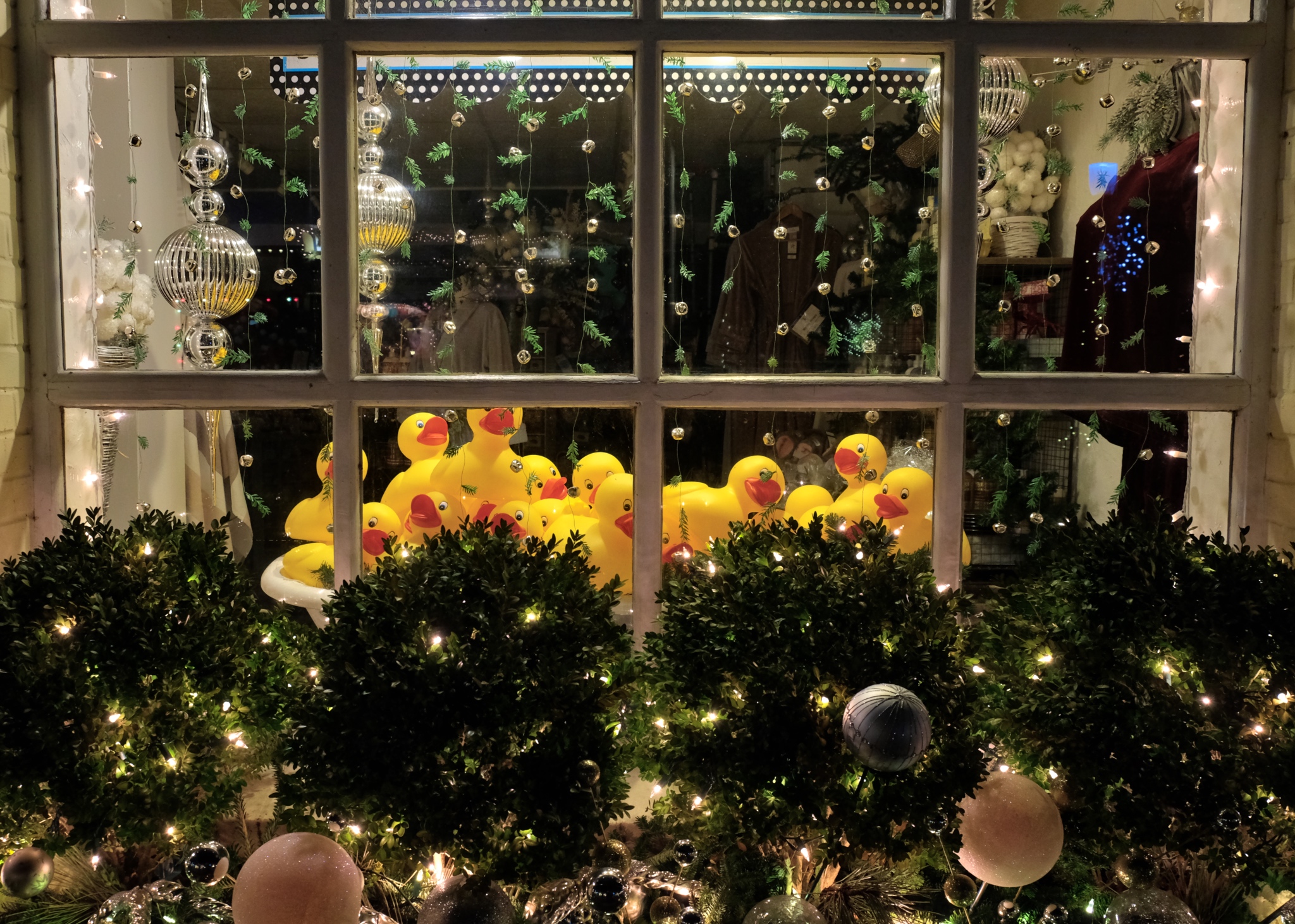 The shop windows were dressed for the season.
The shop windows were dressed for the season.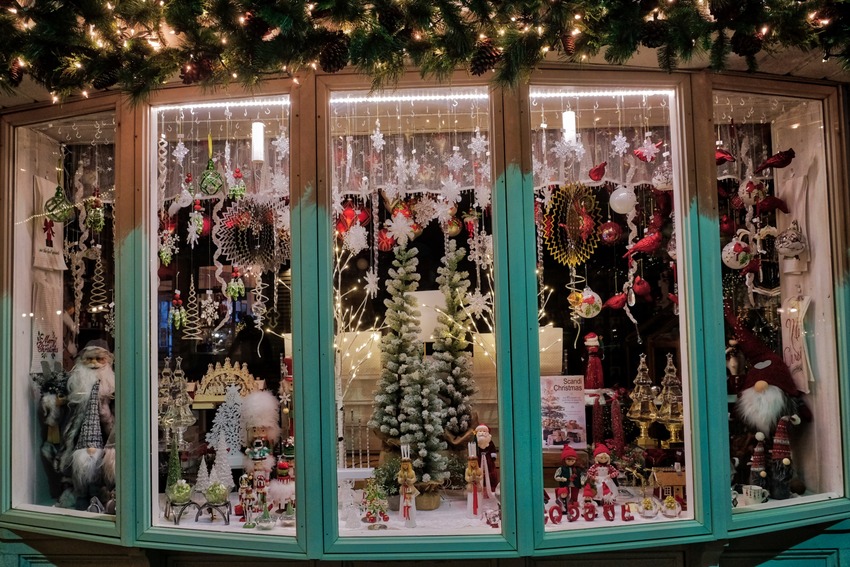 So pretty.
So pretty.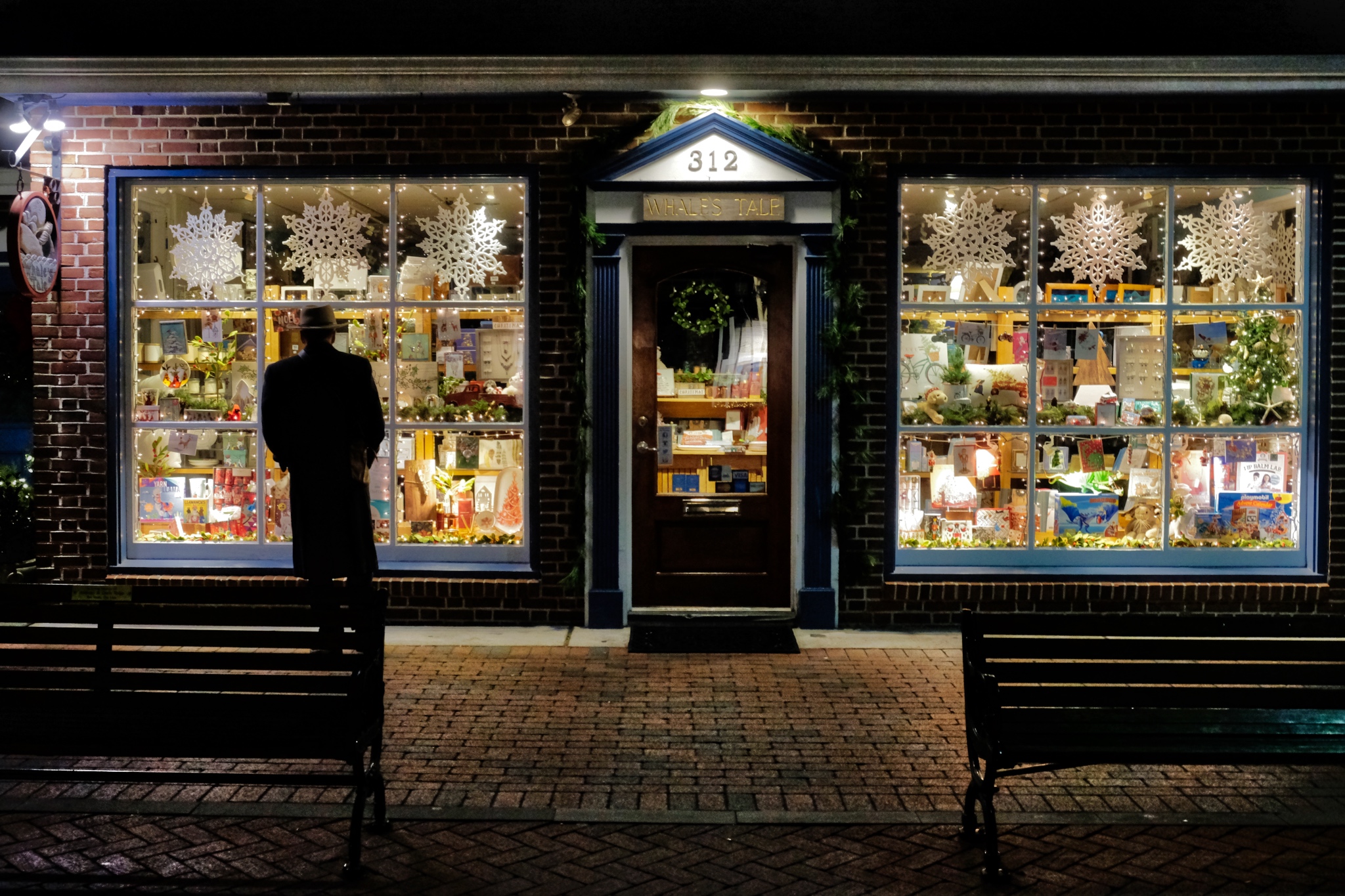 My friend, Bud, doing some last minute shopping.
My friend, Bud, doing some last minute shopping.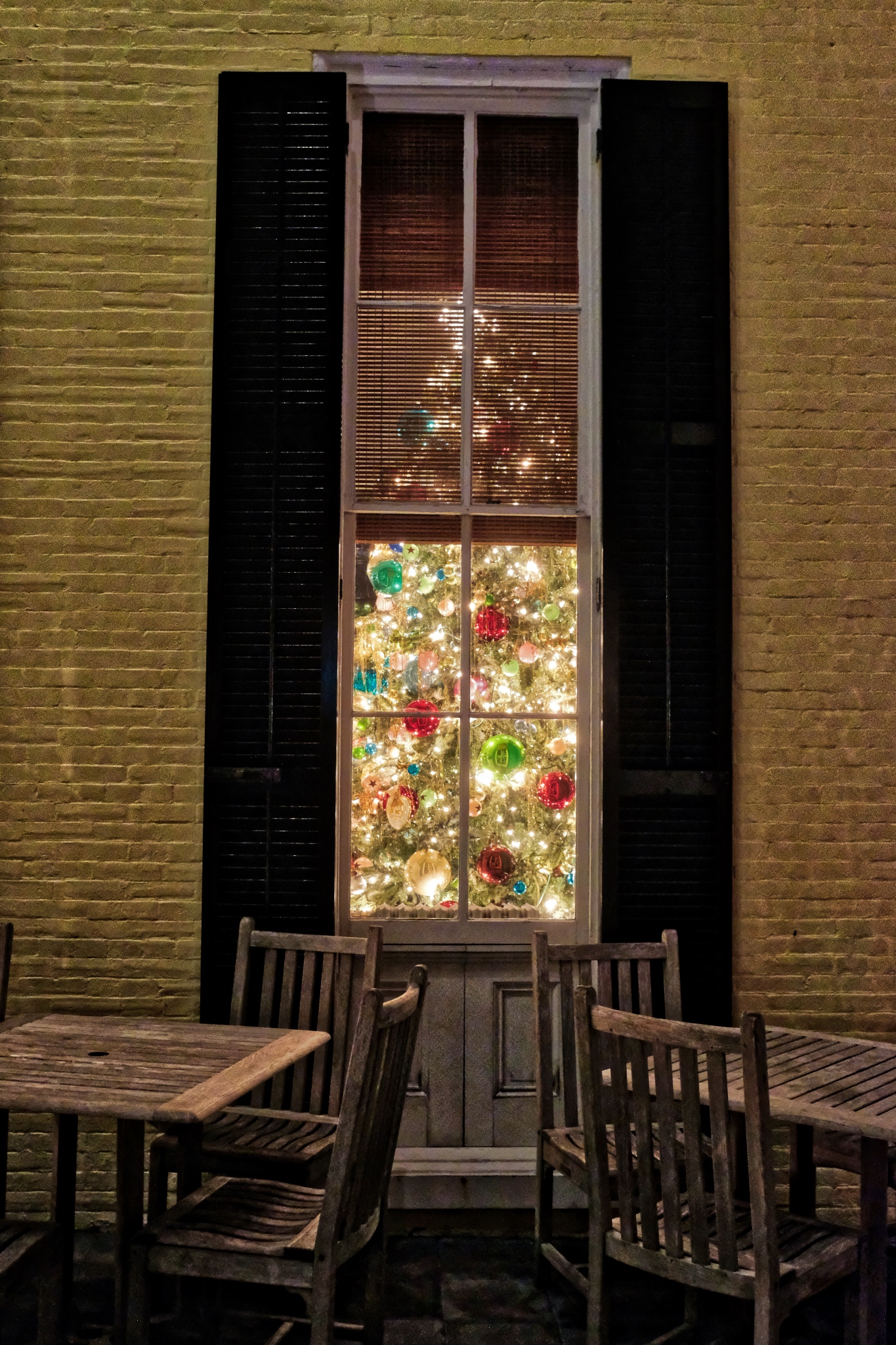 Christmas trees seemingly in every window!
Christmas trees seemingly in every window!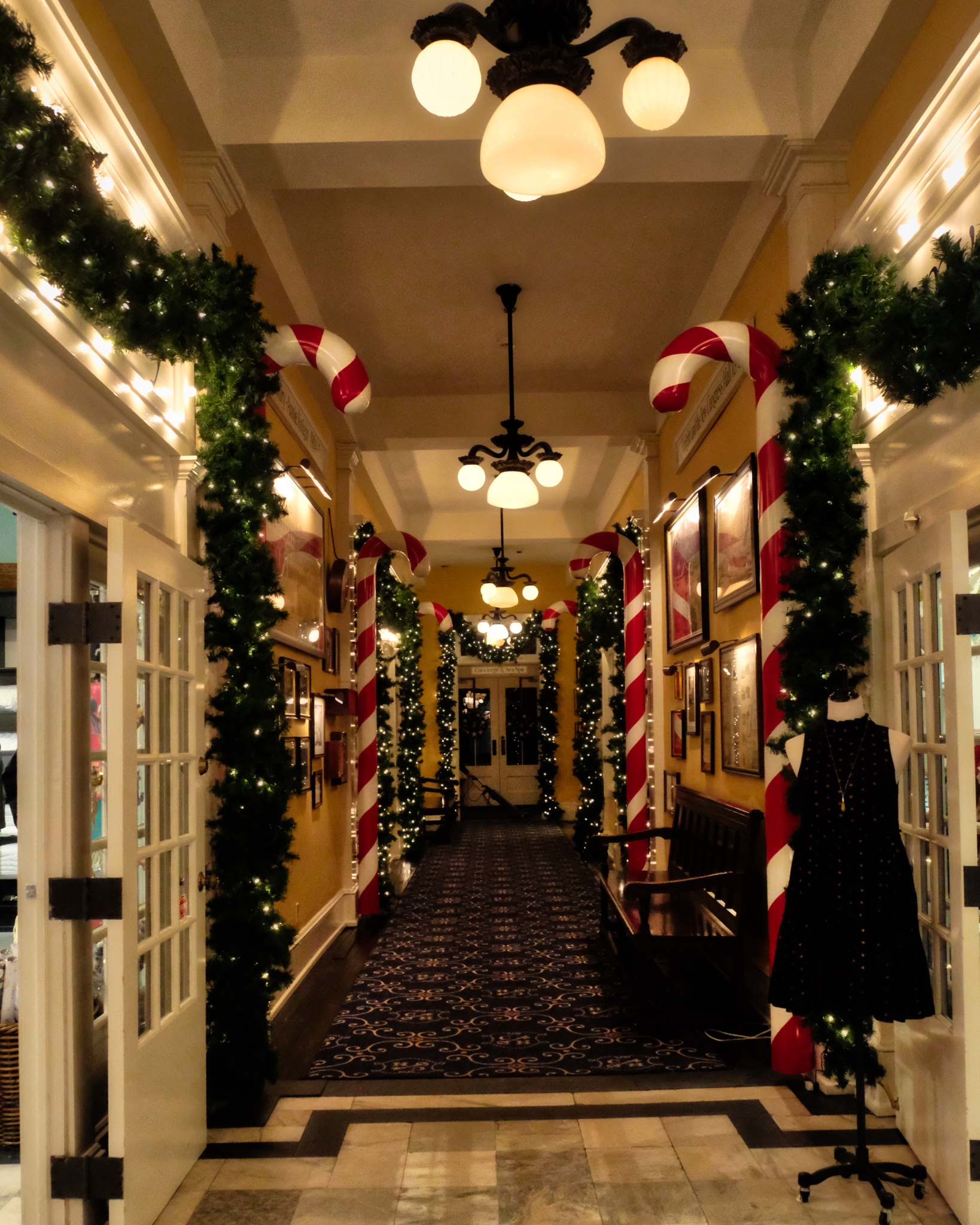 The interior of this hotel was nicely festooned with Christmas regalia.
The interior of this hotel was nicely festooned with Christmas regalia.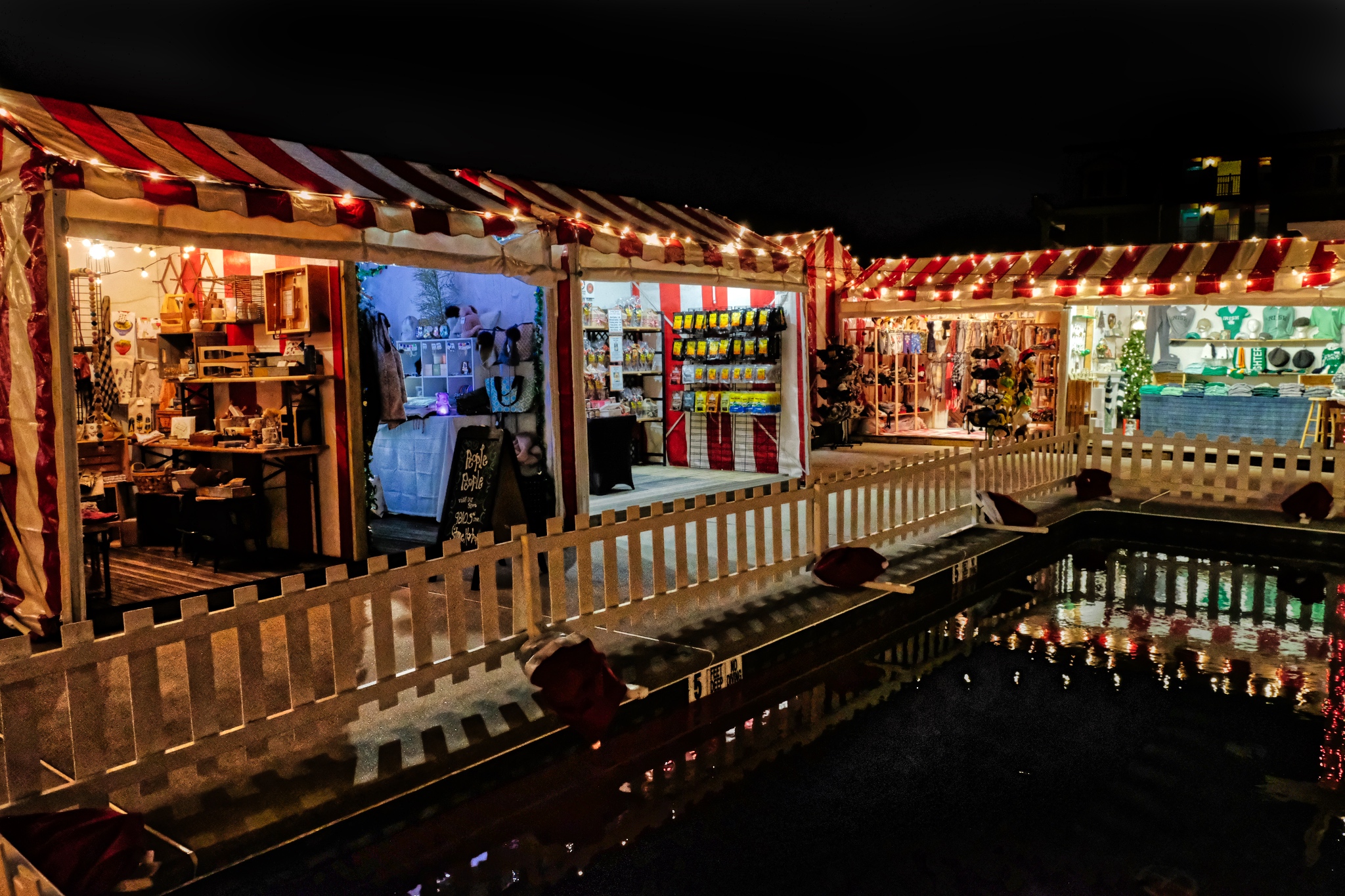 There was even a small Christmas Market in the garden of the old Heritage Hall Hotel. Yes, we had glüwine.
There was even a small Christmas Market in the garden of the old Heritage Hall Hotel. Yes, we had glüwine.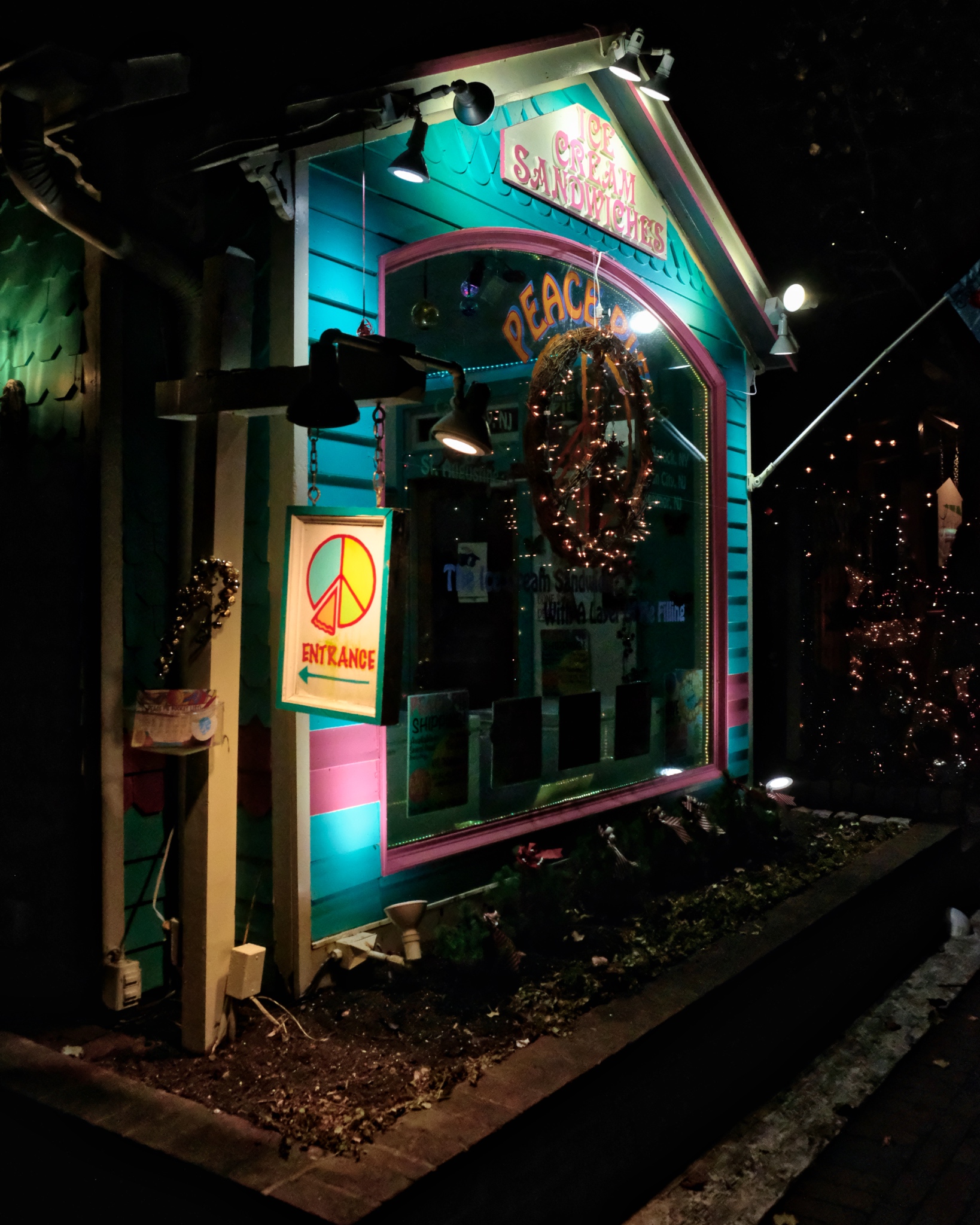 There were many cute little shops around the town center.
There were many cute little shops around the town center.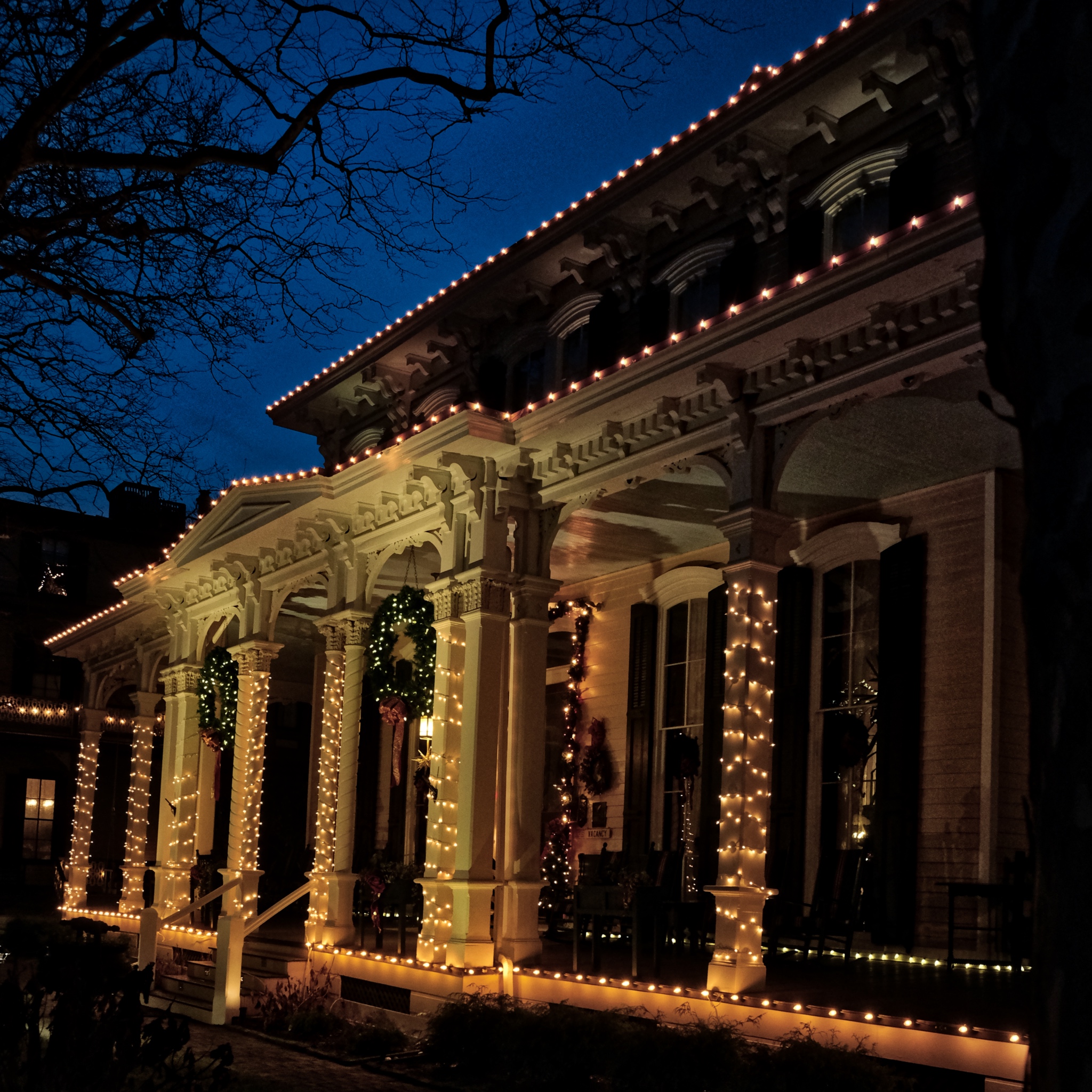 As sweet as the commercial area of Cape May was, the star of the city is the vast numbers of Victorian houses lit in Christmas decorations.
As sweet as the commercial area of Cape May was, the star of the city is the vast numbers of Victorian houses lit in Christmas decorations.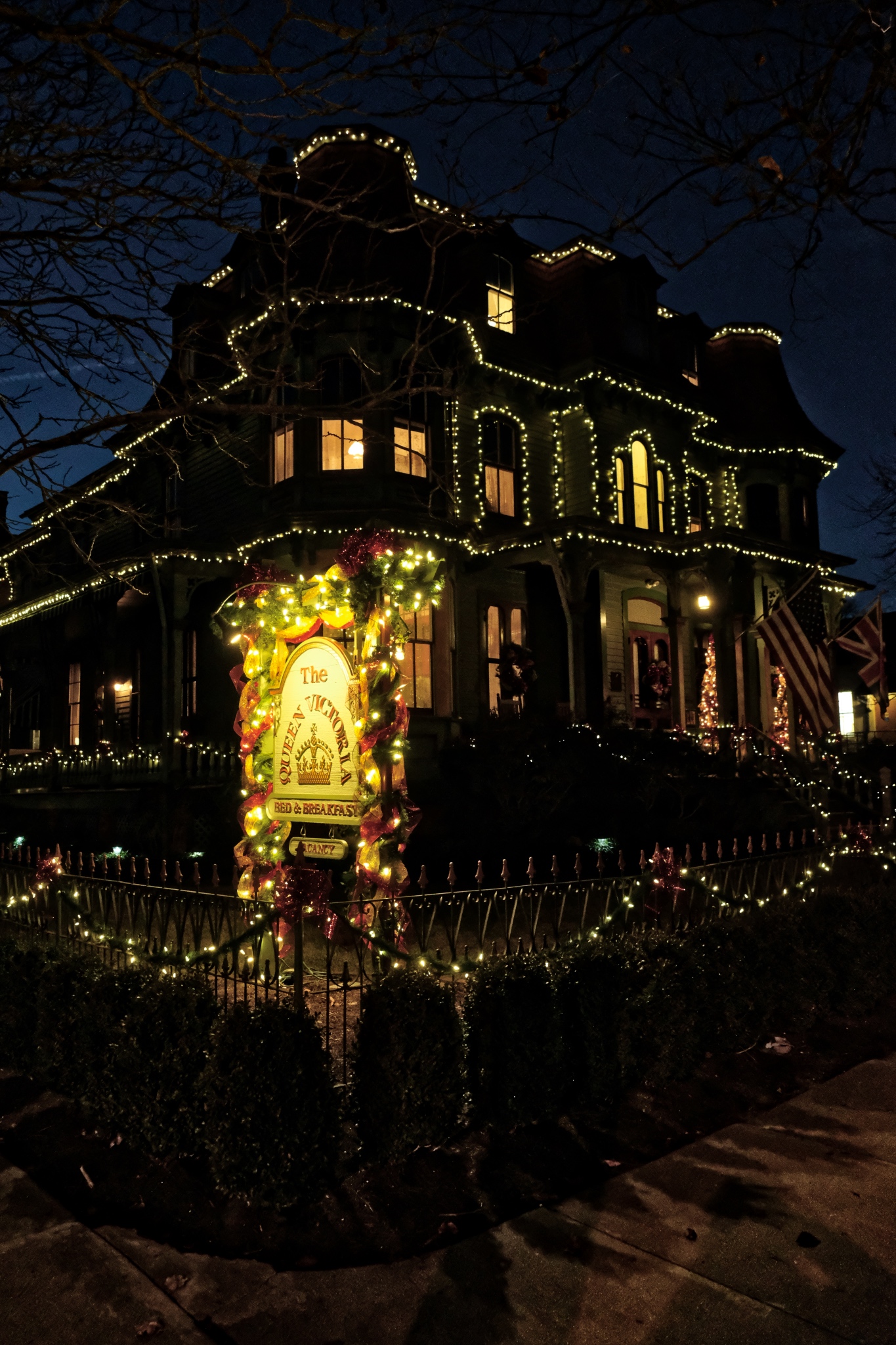 Gems in the night.
Gems in the night.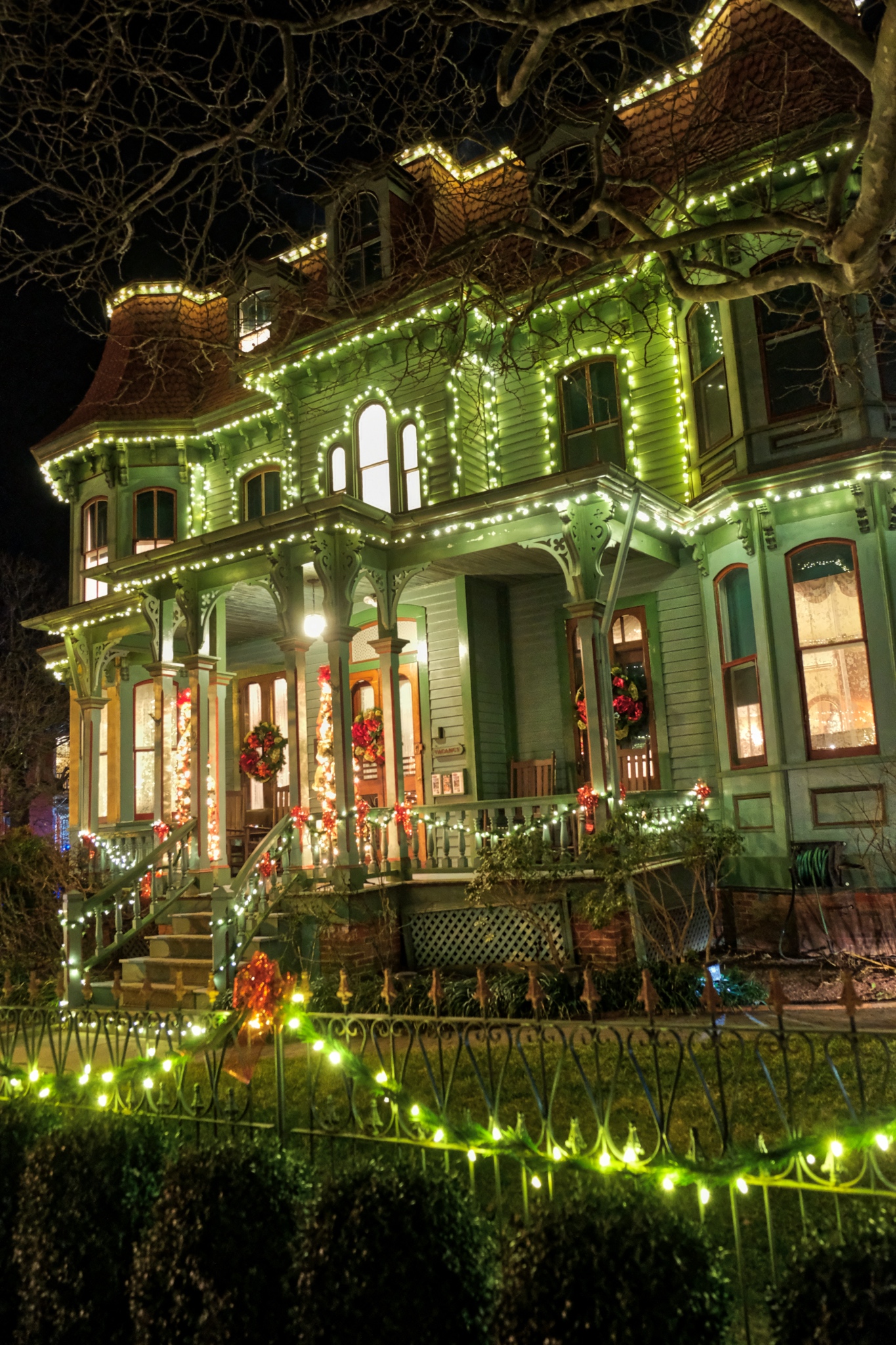 Lit up like Christmas, as they say.
Lit up like Christmas, as they say.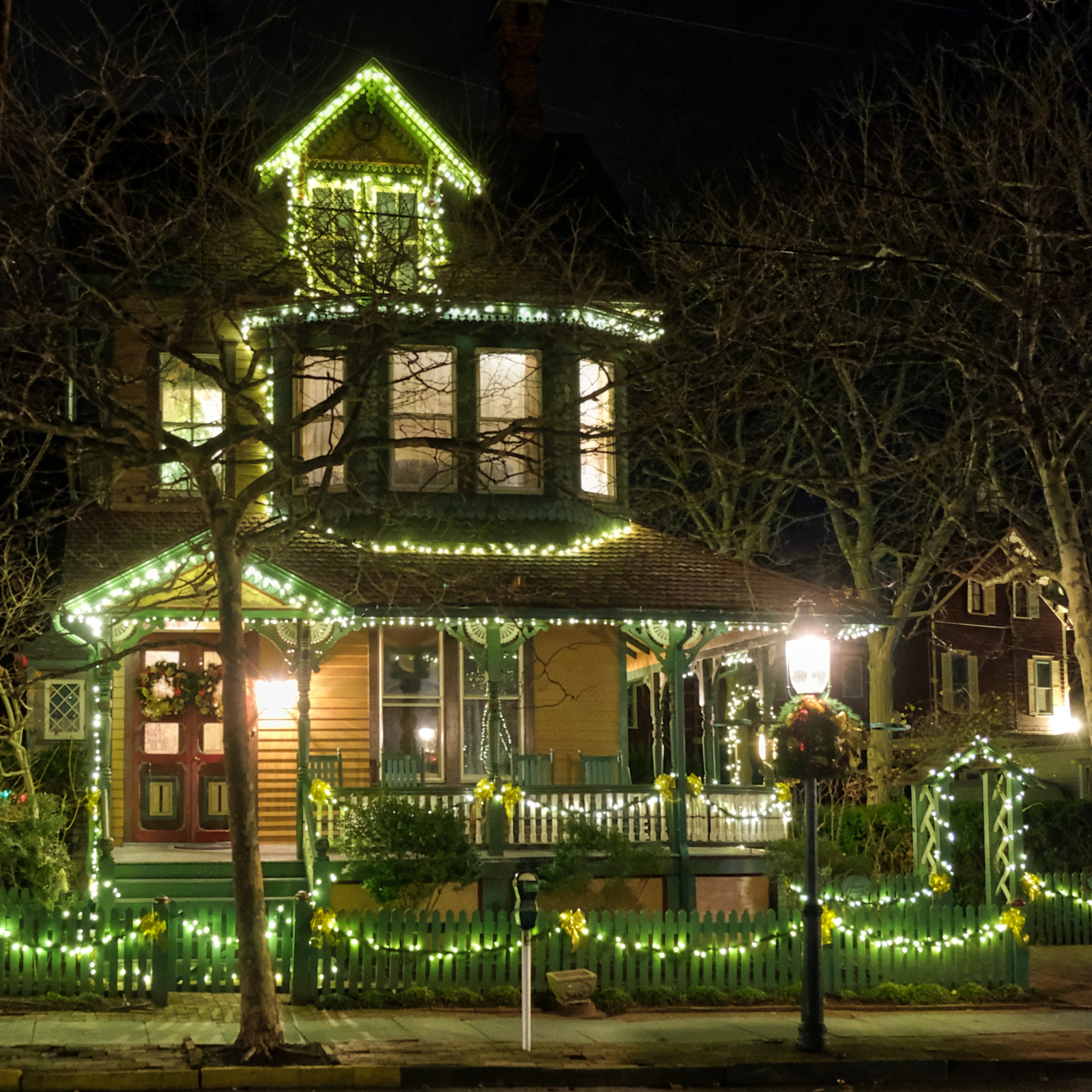 A dream house . . .
A dream house . . . 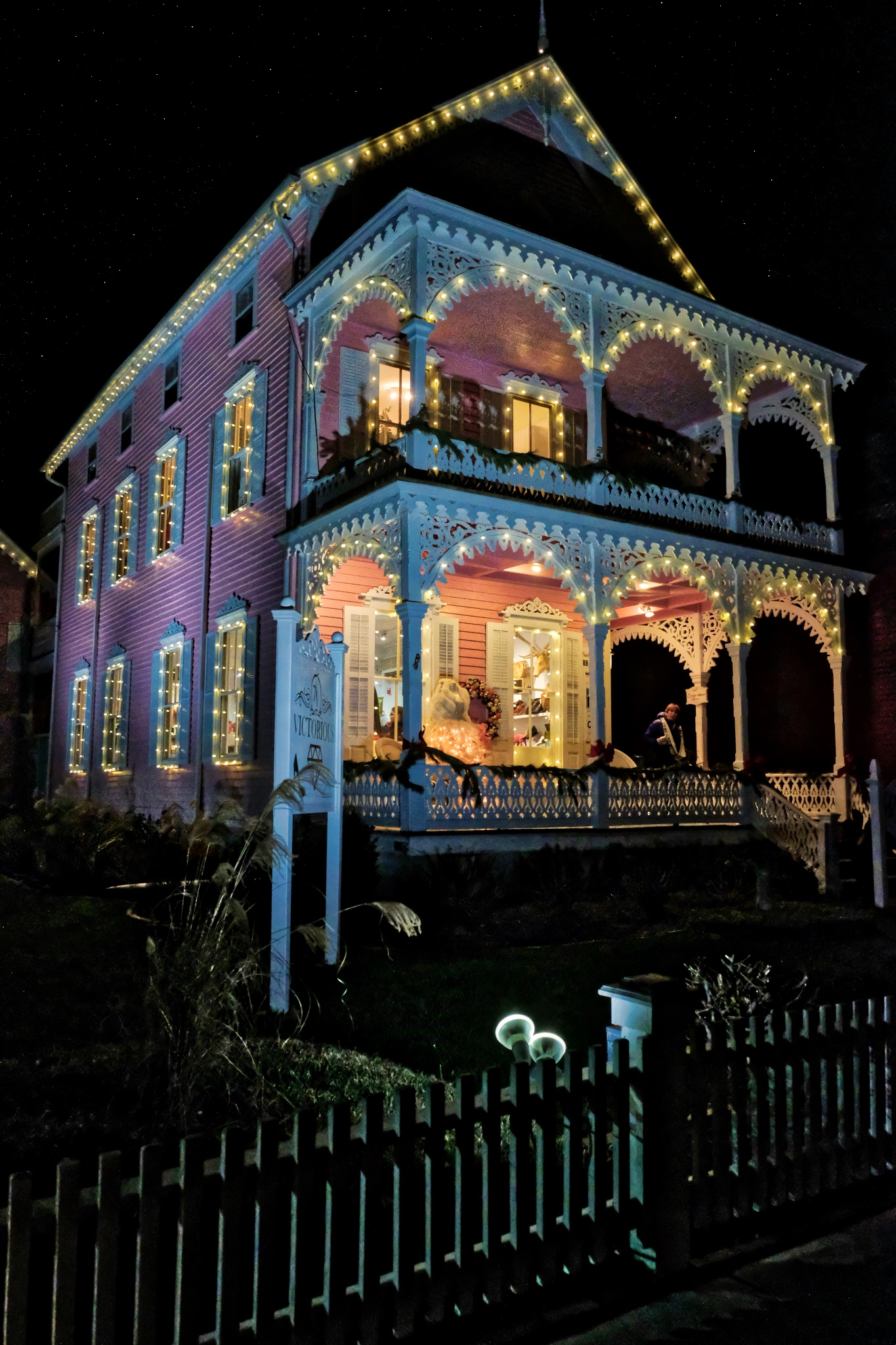 Another favorite of mine . . . this pink grand dame in all its glory!
Another favorite of mine . . . this pink grand dame in all its glory!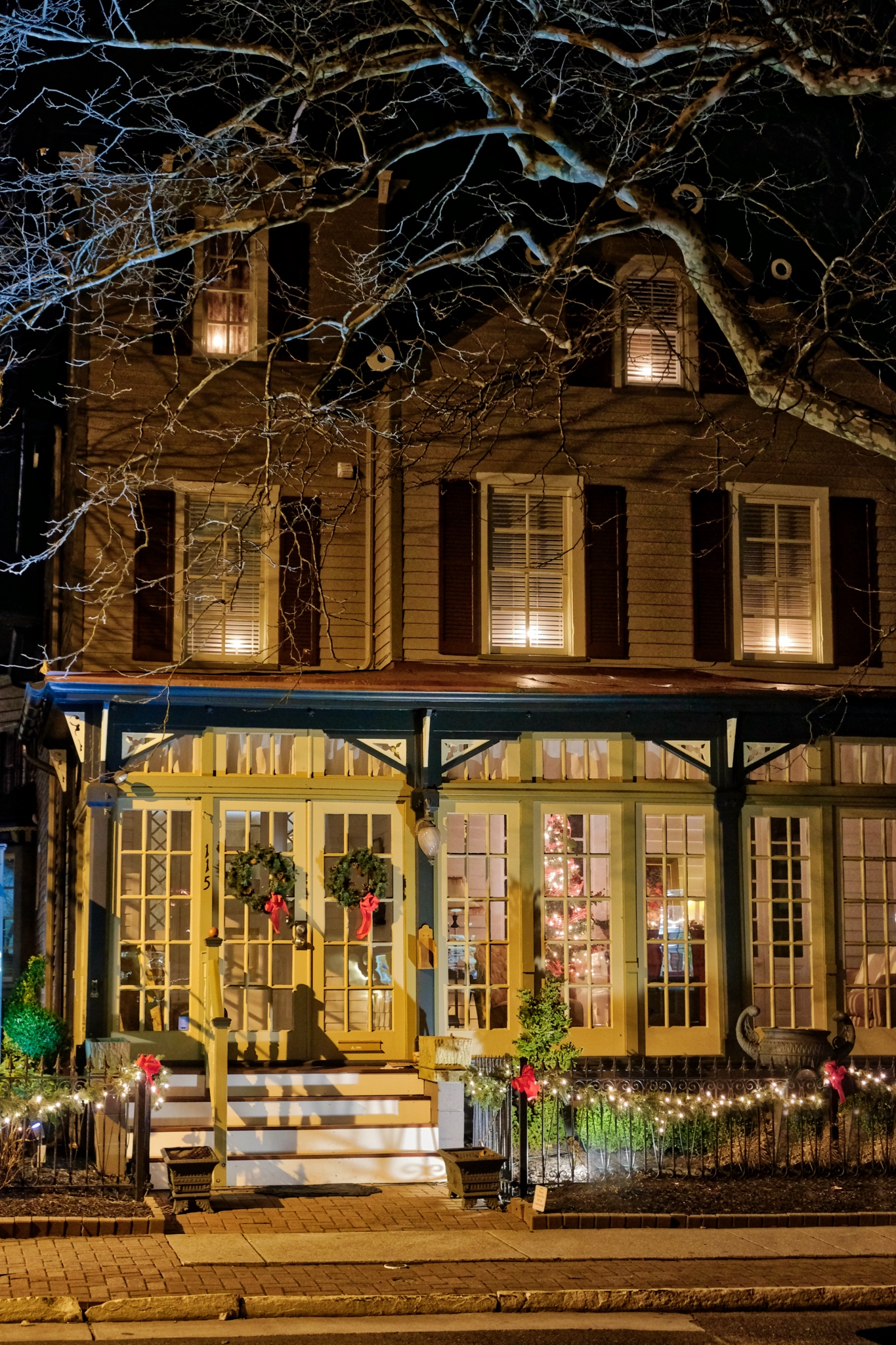 Seen earlier in the daylight, now a gem box of amazing color and form.
Seen earlier in the daylight, now a gem box of amazing color and form.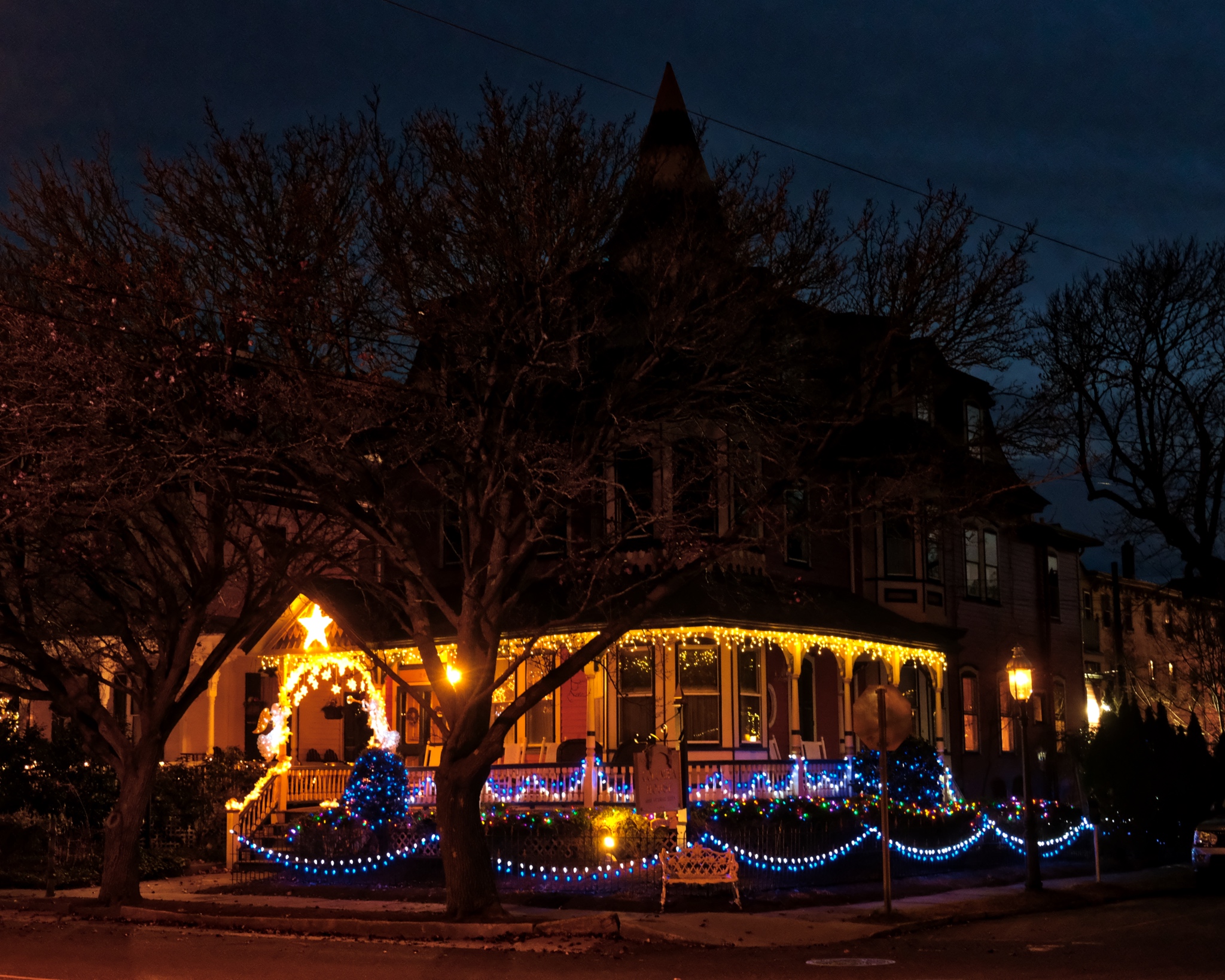 It was late (and cold!) when we finally left Cape May. I want to come back and stay in one of these old beauties. I have added an additional entry at the end of this blog focusing on just the front porches of these old Victorians (Bottom).
It was late (and cold!) when we finally left Cape May. I want to come back and stay in one of these old beauties. I have added an additional entry at the end of this blog focusing on just the front porches of these old Victorians (Bottom).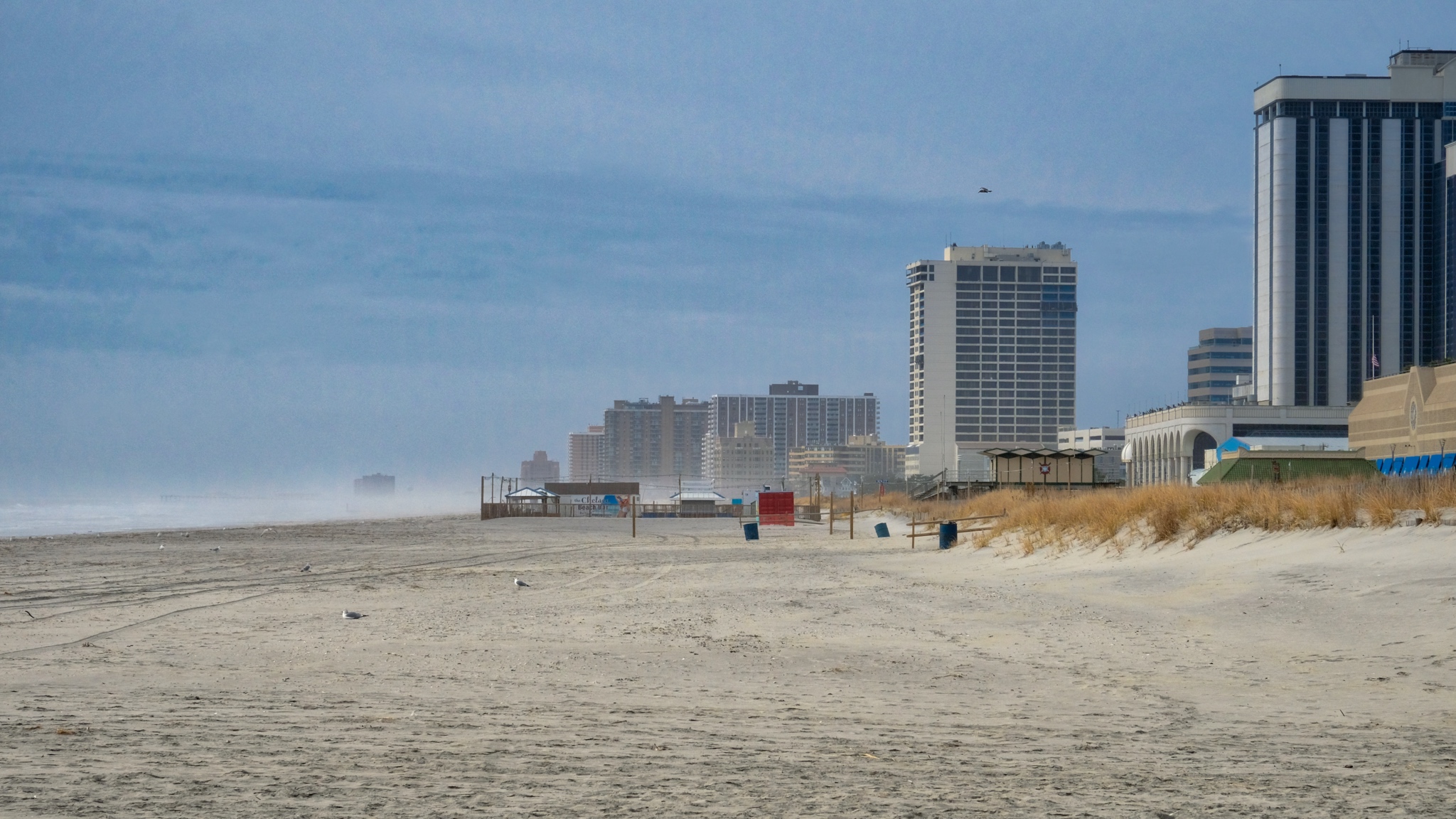 I drove north 30minutes from Ocean City one nice winter day. I brought my bicycle with me and had a nice 10 mile ride along he famous Atlantic City boardwalk.
I drove north 30minutes from Ocean City one nice winter day. I brought my bicycle with me and had a nice 10 mile ride along he famous Atlantic City boardwalk.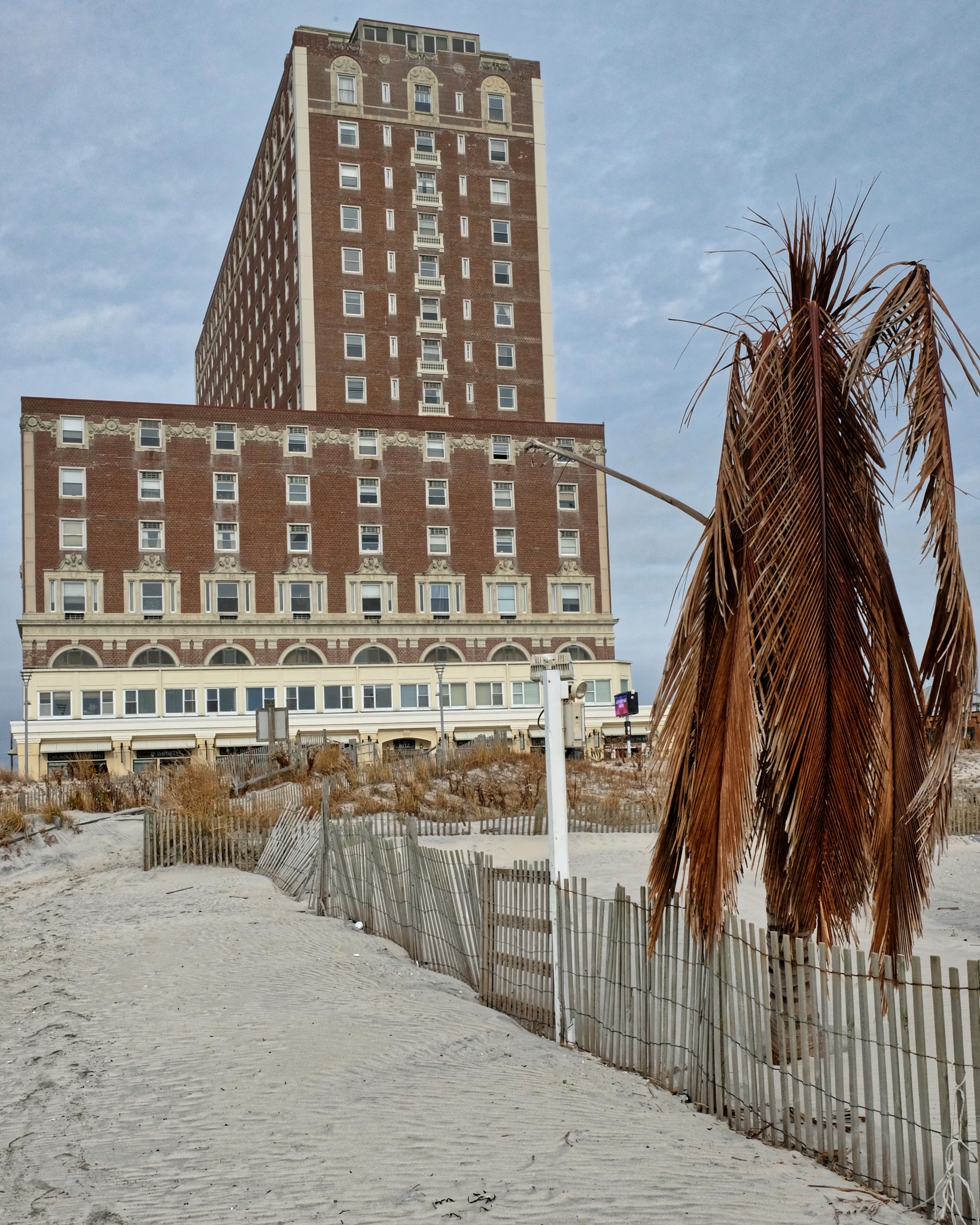 Atlantic City has been the dream retirement spot for eastcoasters for generations. . .
Atlantic City has been the dream retirement spot for eastcoasters for generations. . .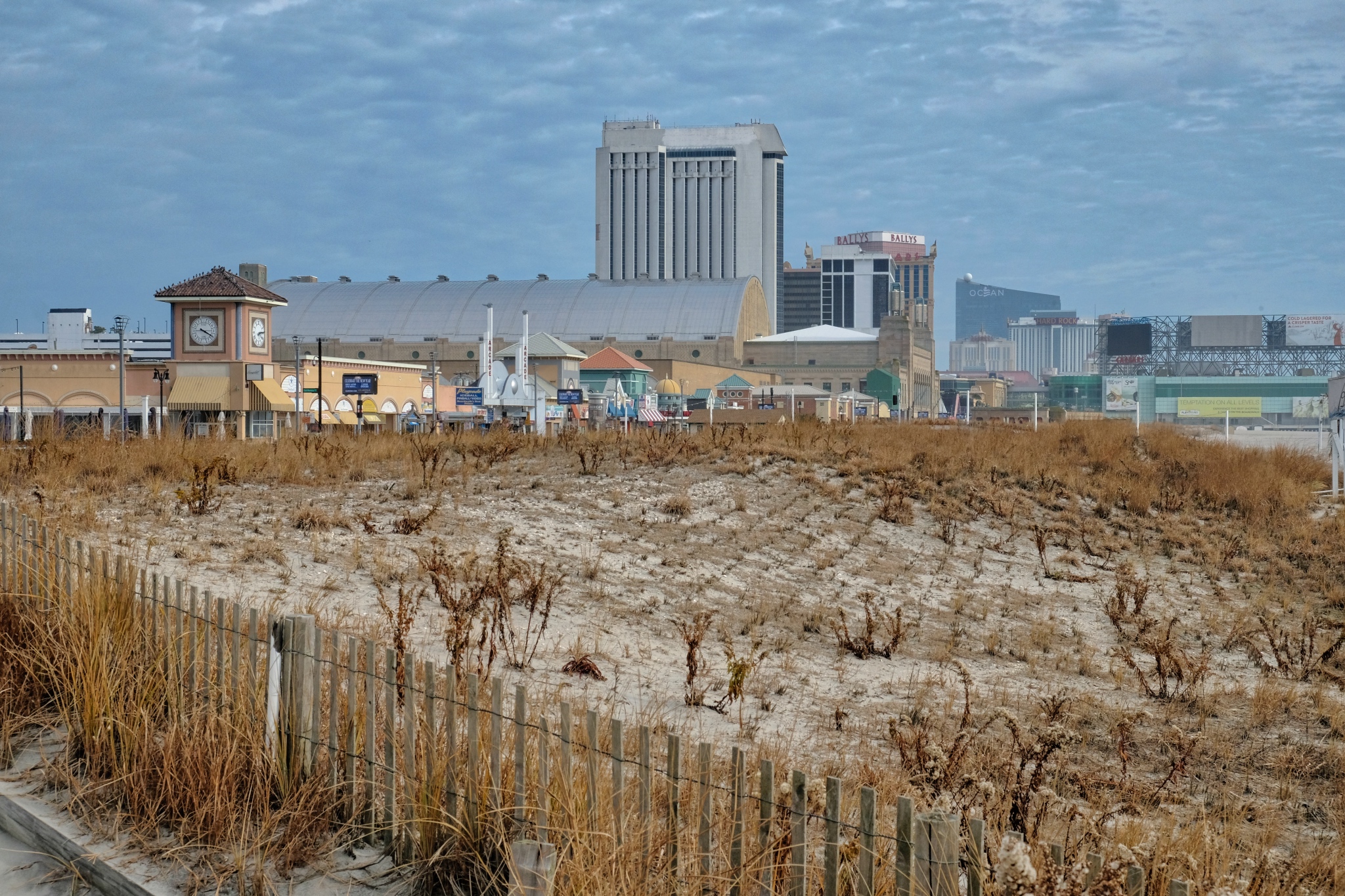 Hurricane Sandy and other major storms have played havoc with the Jersey Shore. After dredged sand was blown in, an attempt to stabilize the new beach.
Hurricane Sandy and other major storms have played havoc with the Jersey Shore. After dredged sand was blown in, an attempt to stabilize the new beach.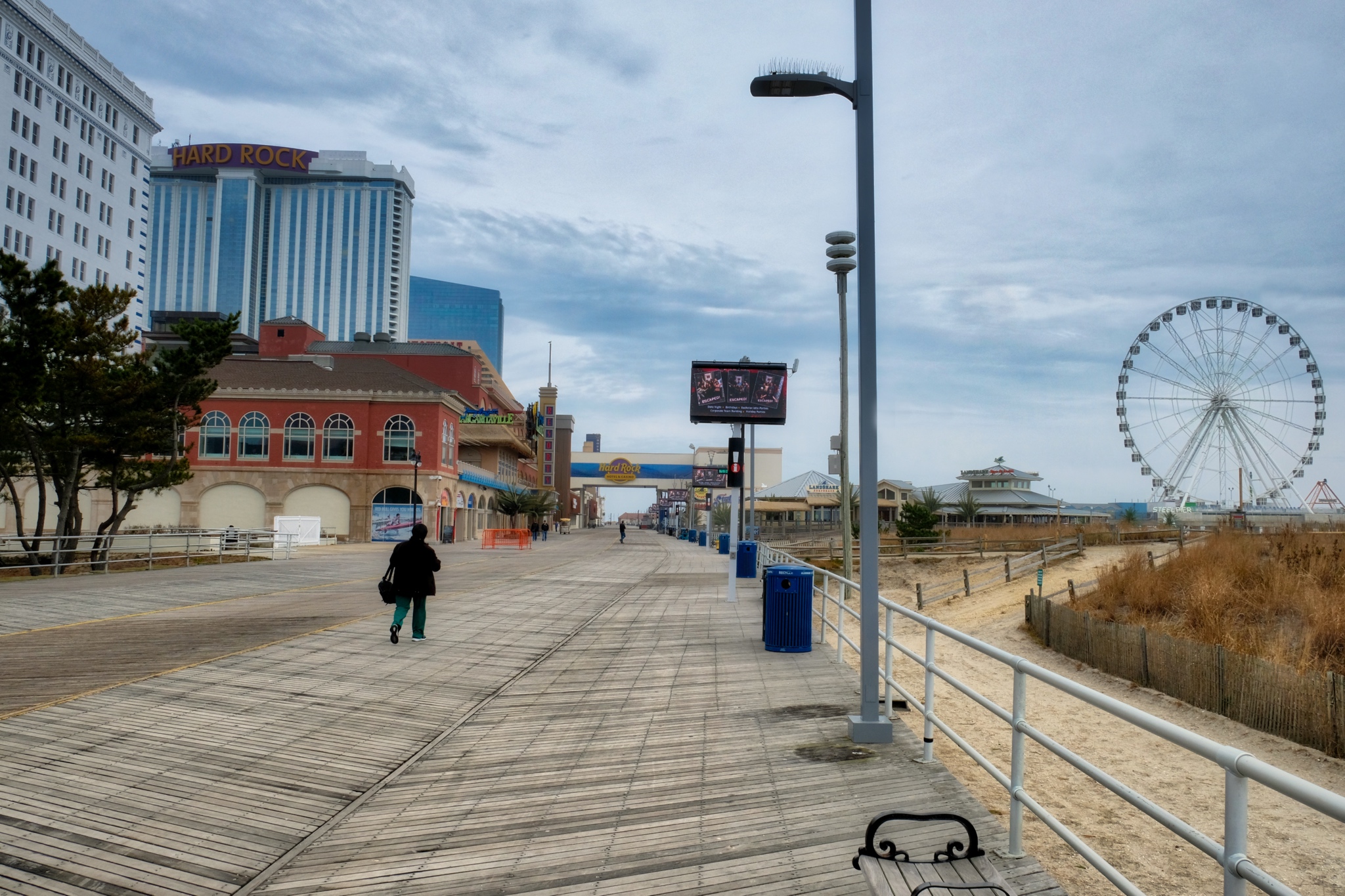 The boardwalk and most of the buildings seemed to be in a good state of repair.
The boardwalk and most of the buildings seemed to be in a good state of repair.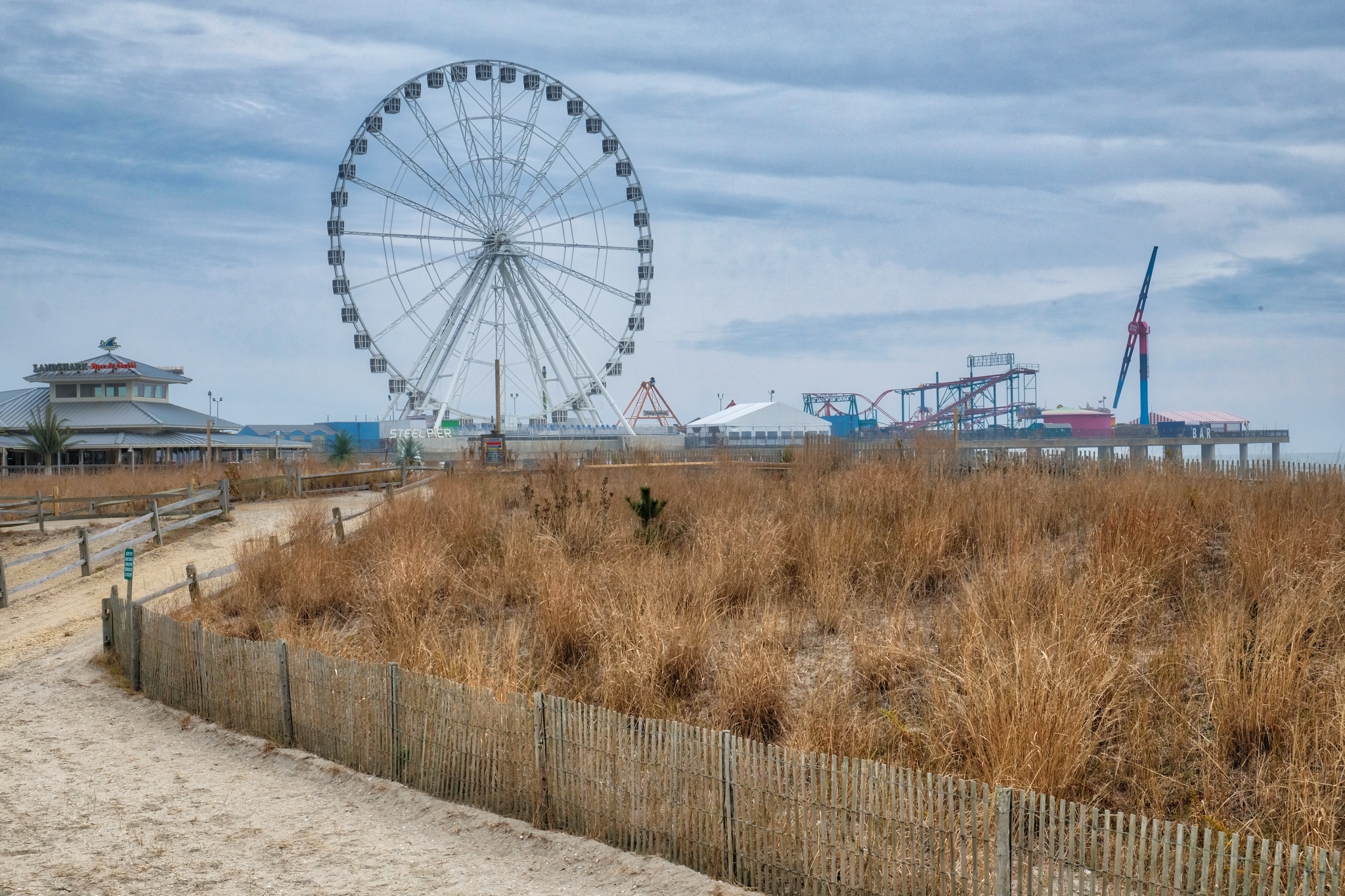 The famous pier at Atlantic City was closed for the season.
The famous pier at Atlantic City was closed for the season.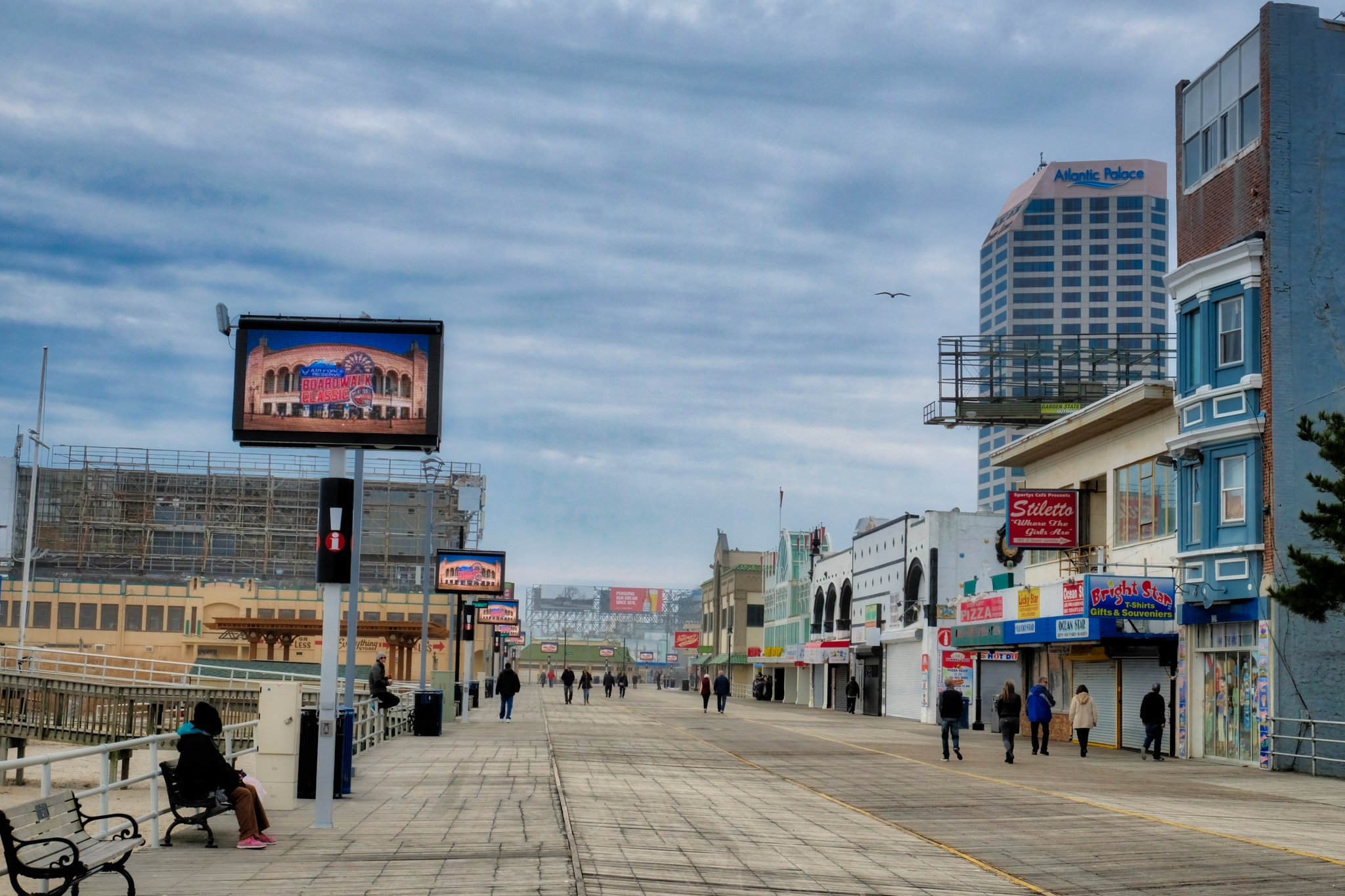 But, of curse, it is the Atlantic City boardwalk that attracts people, even on this cold and clear December day. I really enjoyed my 10 mile bike ride along this wooden bike path.
But, of curse, it is the Atlantic City boardwalk that attracts people, even on this cold and clear December day. I really enjoyed my 10 mile bike ride along this wooden bike path.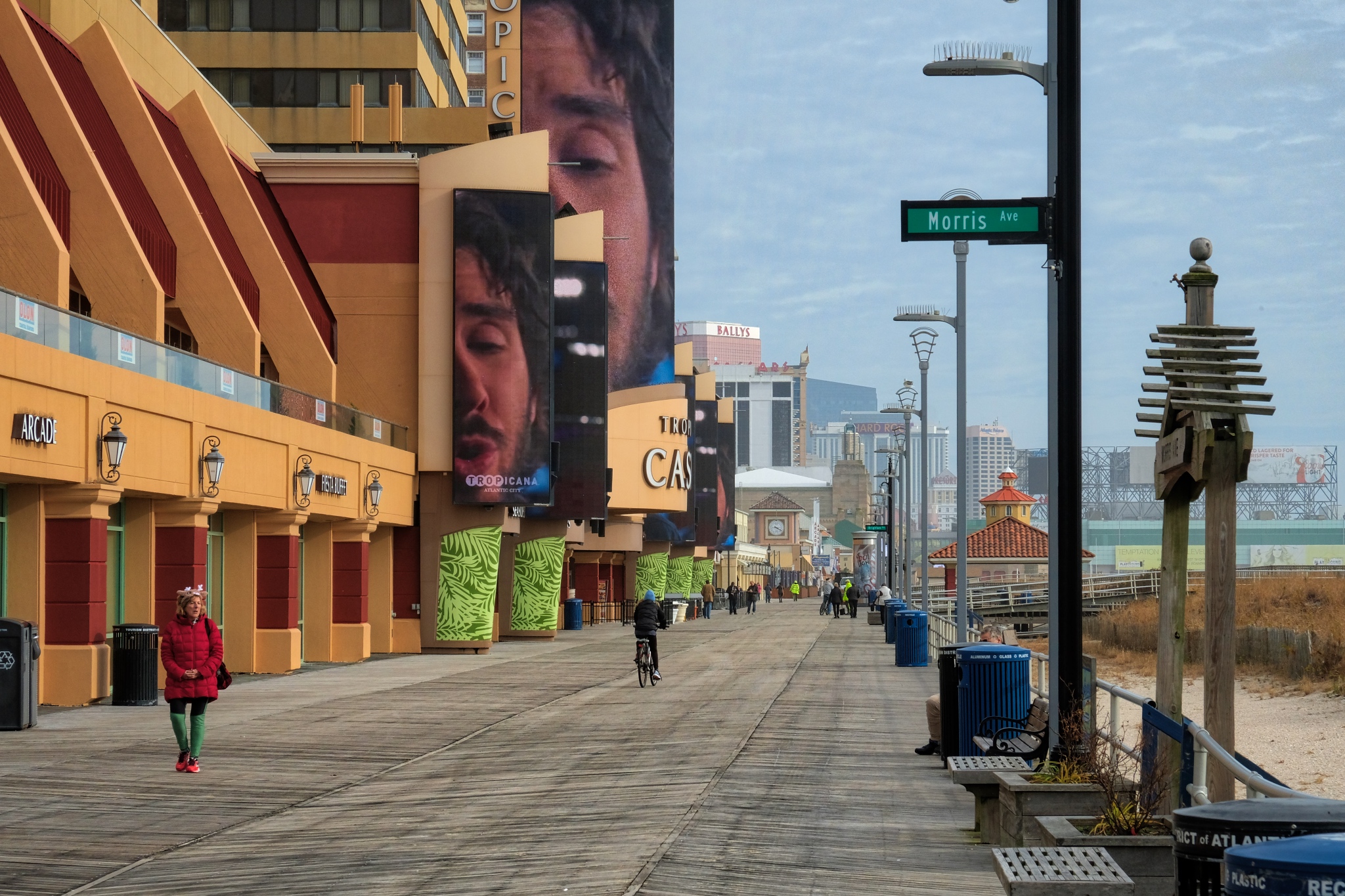 As I took a closer look at the large hotels, I was shocked to see so many of them boarded up . . . closed and abandoned. The economic collapse of 2008 and the establishment of Native American casinos in Pennsylvania had a major negative eeconomic impact on Atlantic City.
As I took a closer look at the large hotels, I was shocked to see so many of them boarded up . . . closed and abandoned. The economic collapse of 2008 and the establishment of Native American casinos in Pennsylvania had a major negative eeconomic impact on Atlantic City.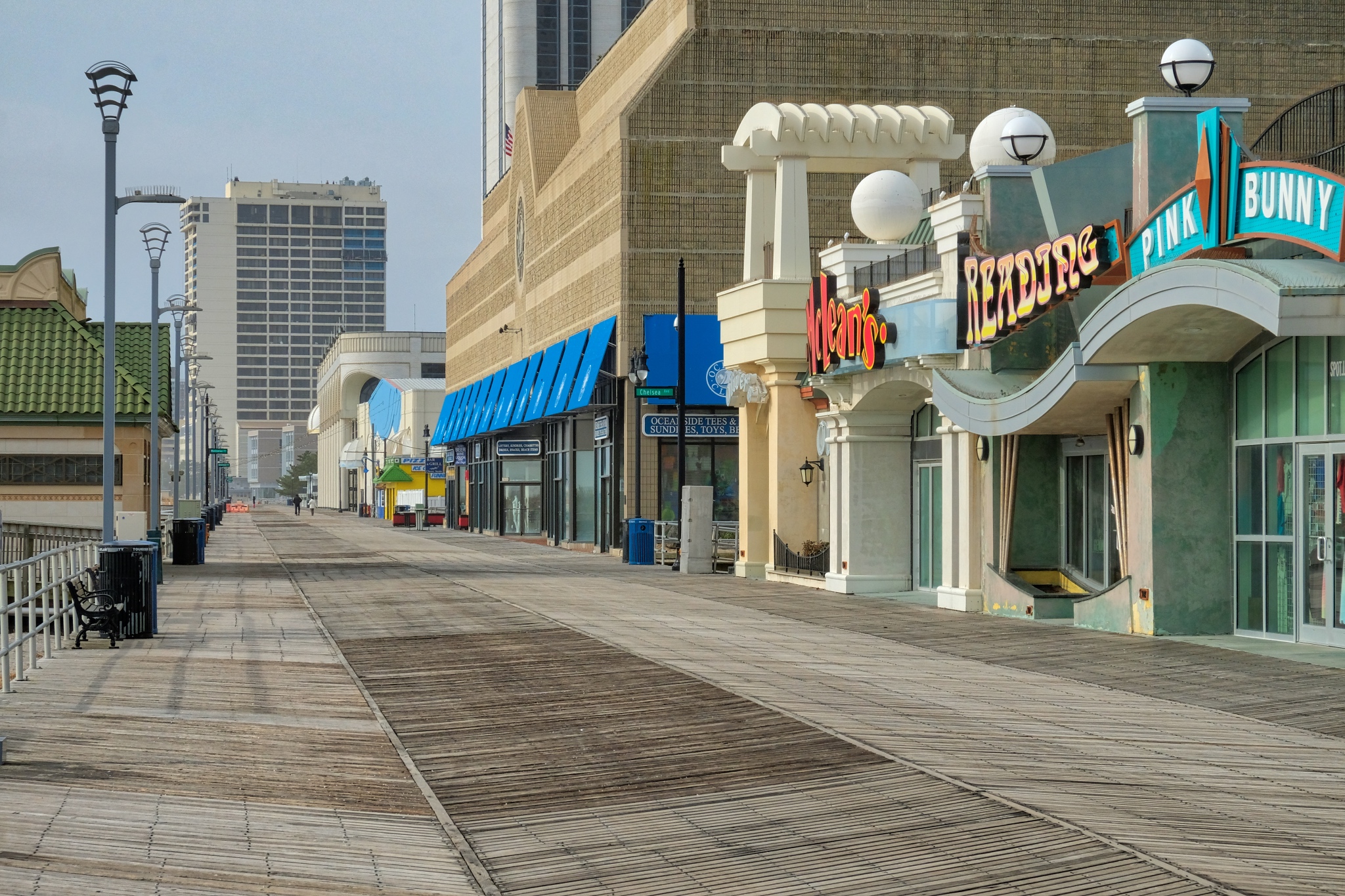 There were a few shops and a couple of cafes open to service the winter wanderers, like me.
There were a few shops and a couple of cafes open to service the winter wanderers, like me.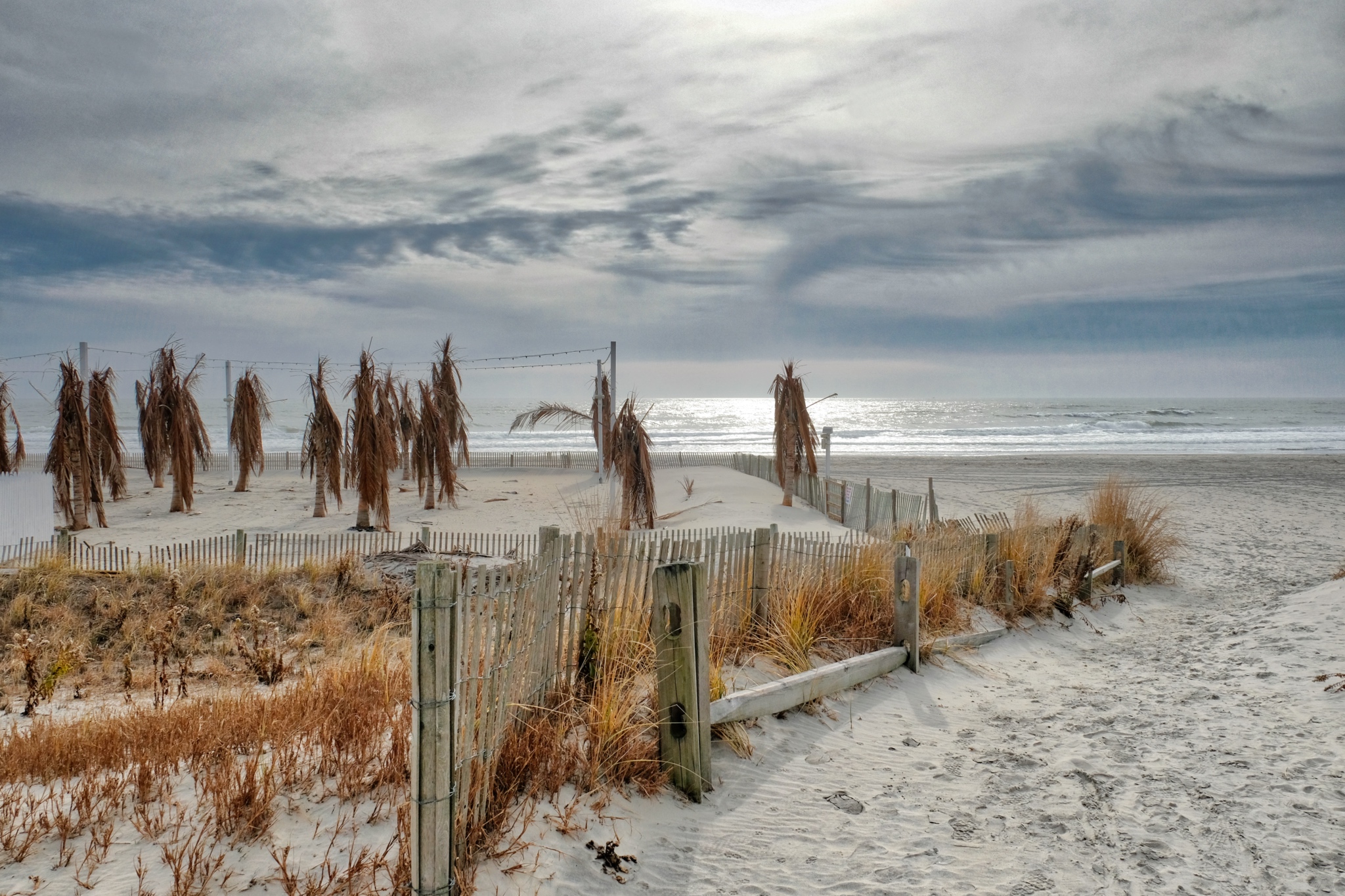 The weathered remains of a hotel beach party set-up . . . the last trace of the summer season. I rode my bike back five miles, loaded it into my camper, and drove back to Ocean City . . . good exercise for the day.
The weathered remains of a hotel beach party set-up . . . the last trace of the summer season. I rode my bike back five miles, loaded it into my camper, and drove back to Ocean City . . . good exercise for the day. Dr. Jeff Harper
Dr. Jeff Harper
The Victorian Porches of Cape May, New Jersey
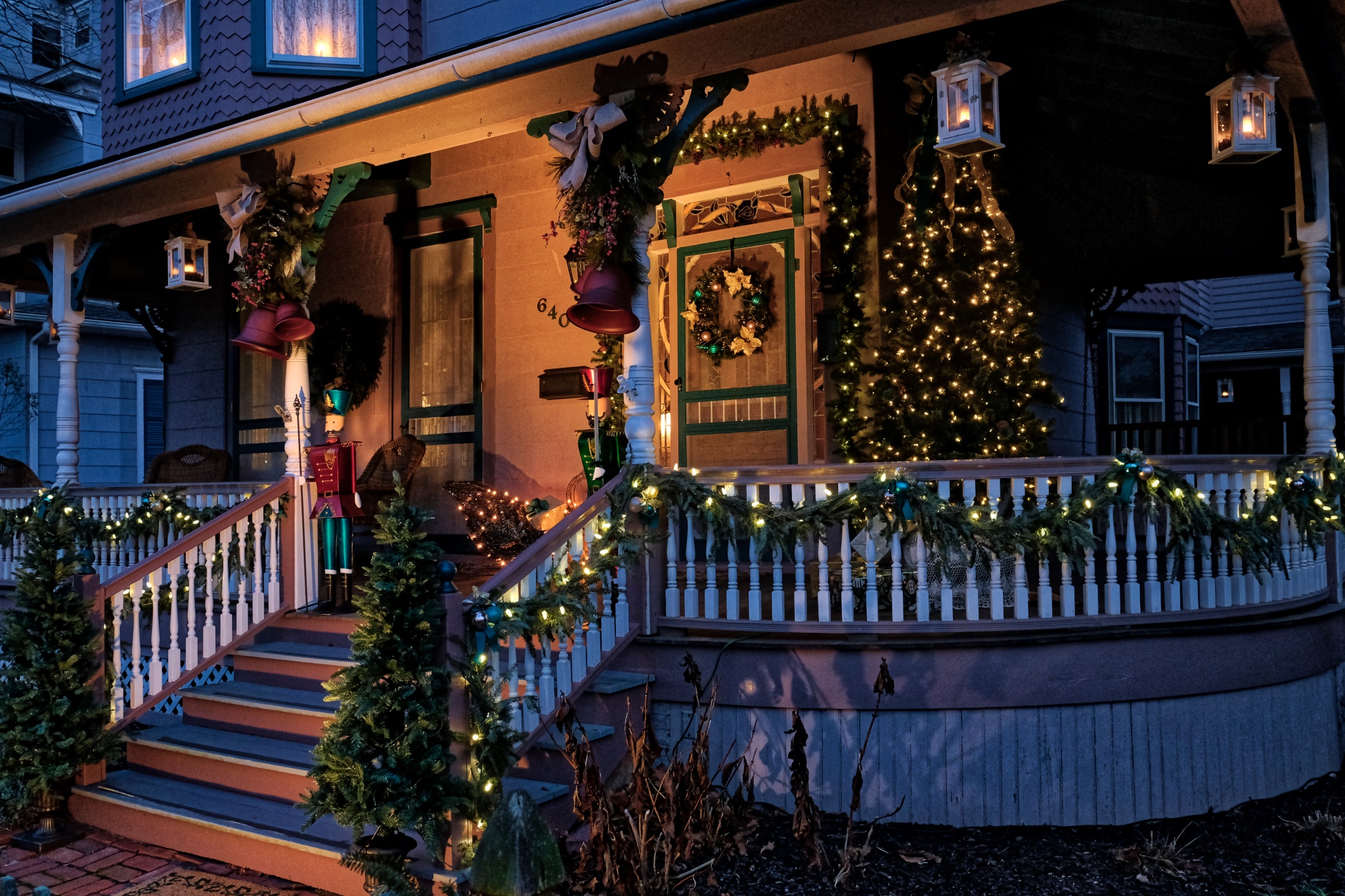 One of the most beautiful architectural features of Cape May, New Jersey are the front porches of the old Victorian houses.
One of the most beautiful architectural features of Cape May, New Jersey are the front porches of the old Victorian houses.
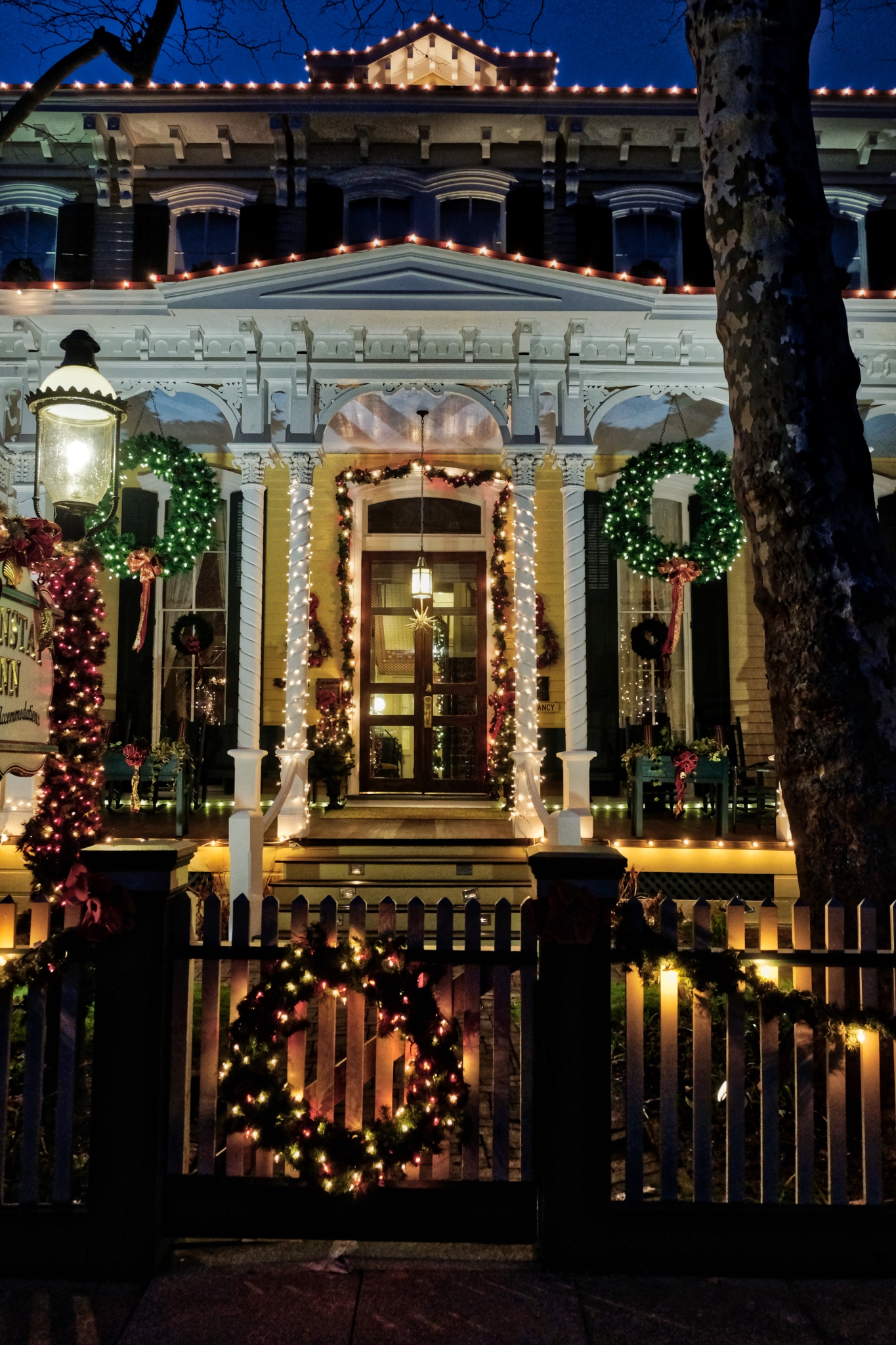 These houses date form a period in cultural history when the front door mattered as the face of the family that lived inside.
These houses date form a period in cultural history when the front door mattered as the face of the family that lived inside.
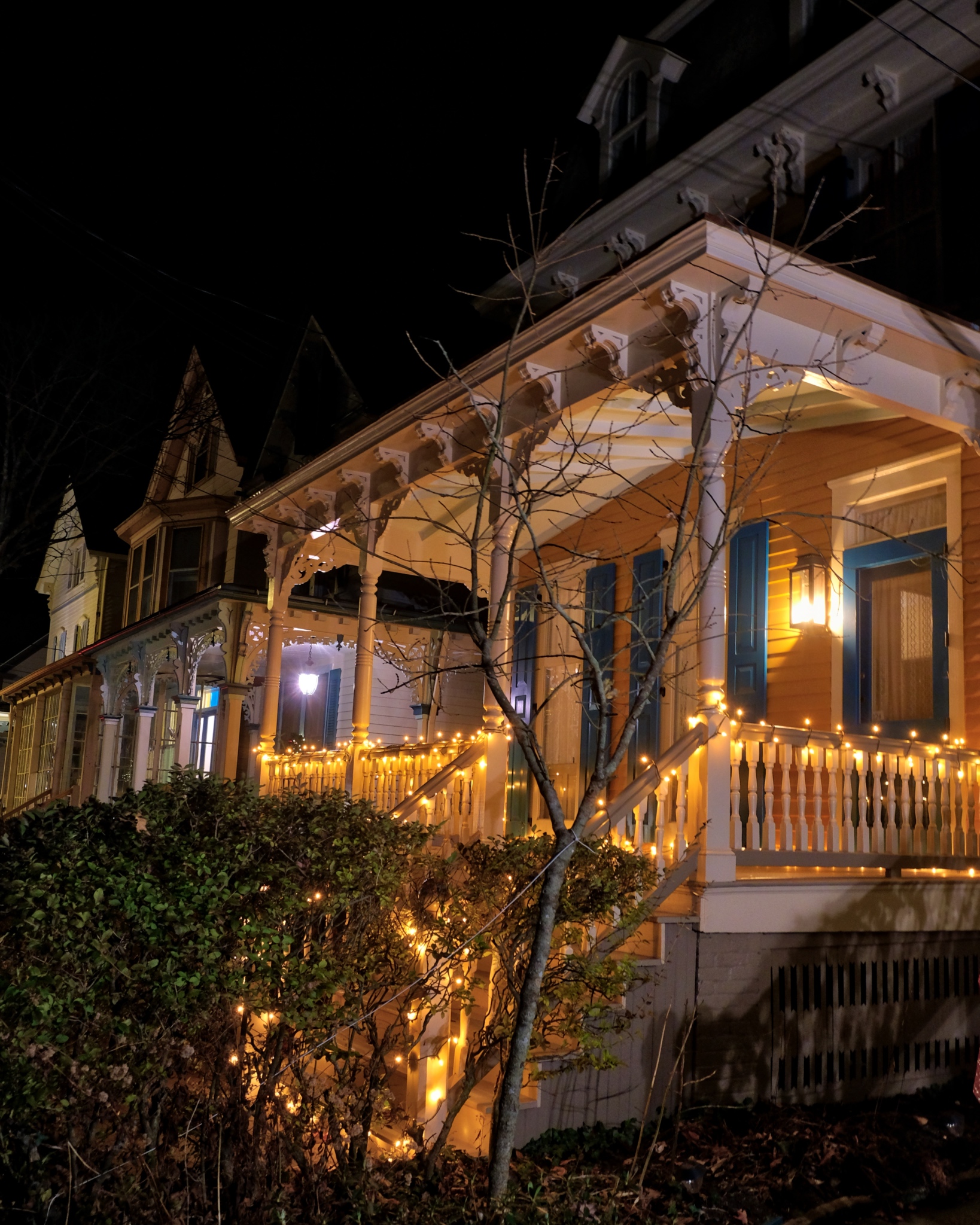 In summer the porch serves as a place to sit and greet your neighbors as they pass by. In winter, it serves as a stage to light the Holiday Season.
In summer the porch serves as a place to sit and greet your neighbors as they pass by. In winter, it serves as a stage to light the Holiday Season.
 Closed or open porches . . . they are such a beautiful feature one wonders why they ever fell out of fashion.
Closed or open porches . . . they are such a beautiful feature one wonders why they ever fell out of fashion.
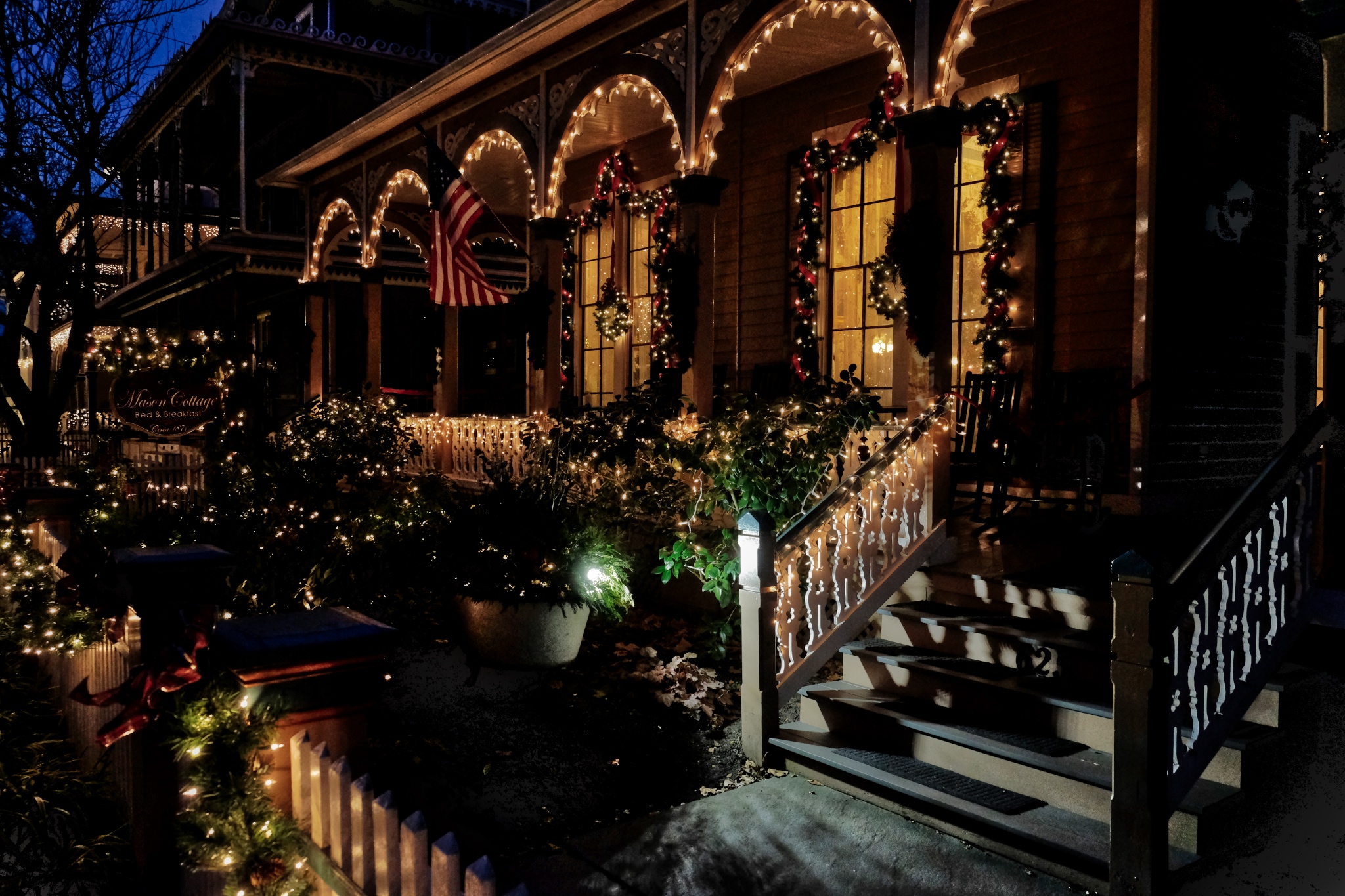 Please, step on in . . .
Please, step on in . . .
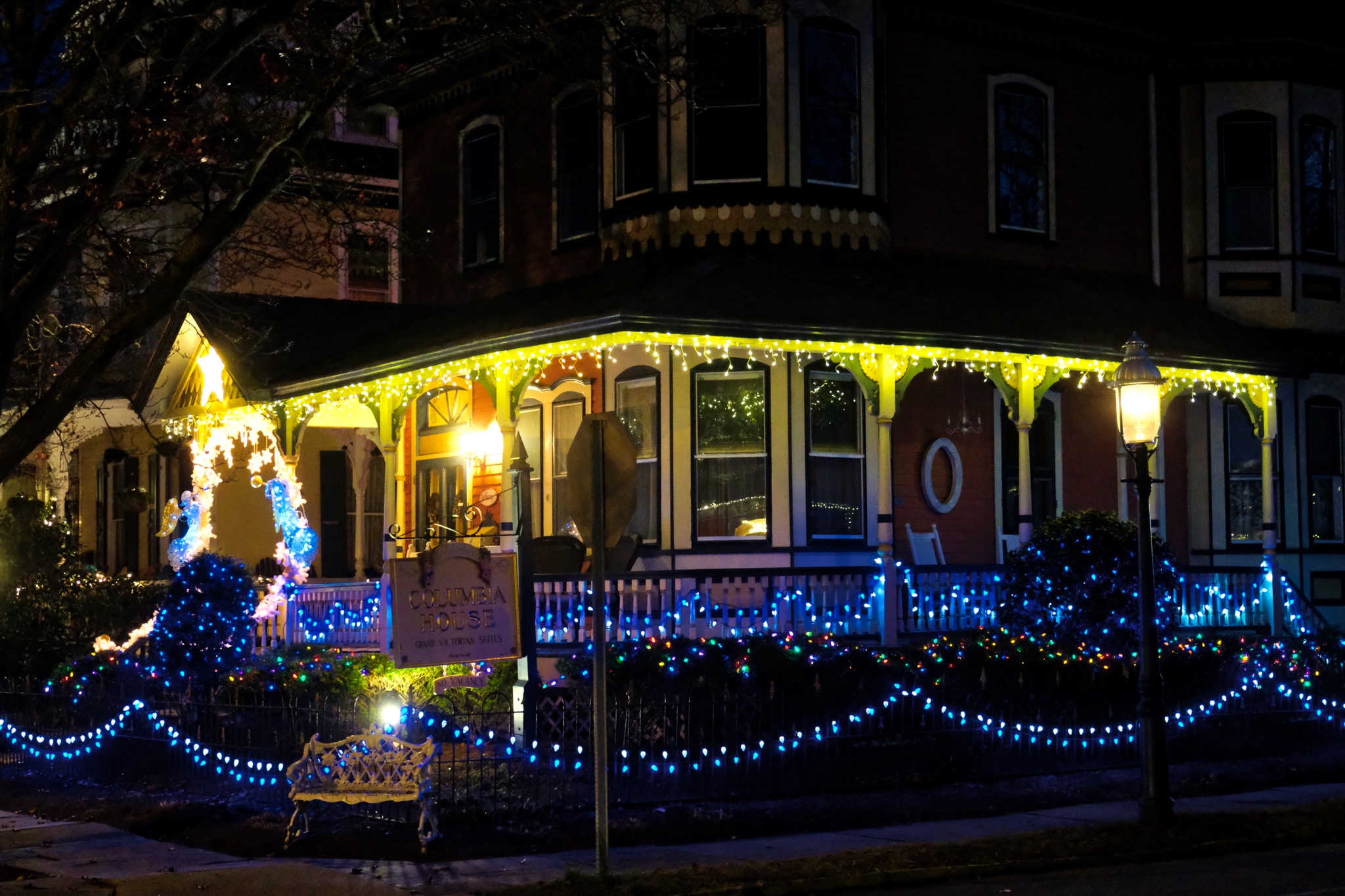 The many B&Bs in Cape May must be packed during the summer season . . . and the rocking chairs on the porches fully occupied.
The many B&Bs in Cape May must be packed during the summer season . . . and the rocking chairs on the porches fully occupied.
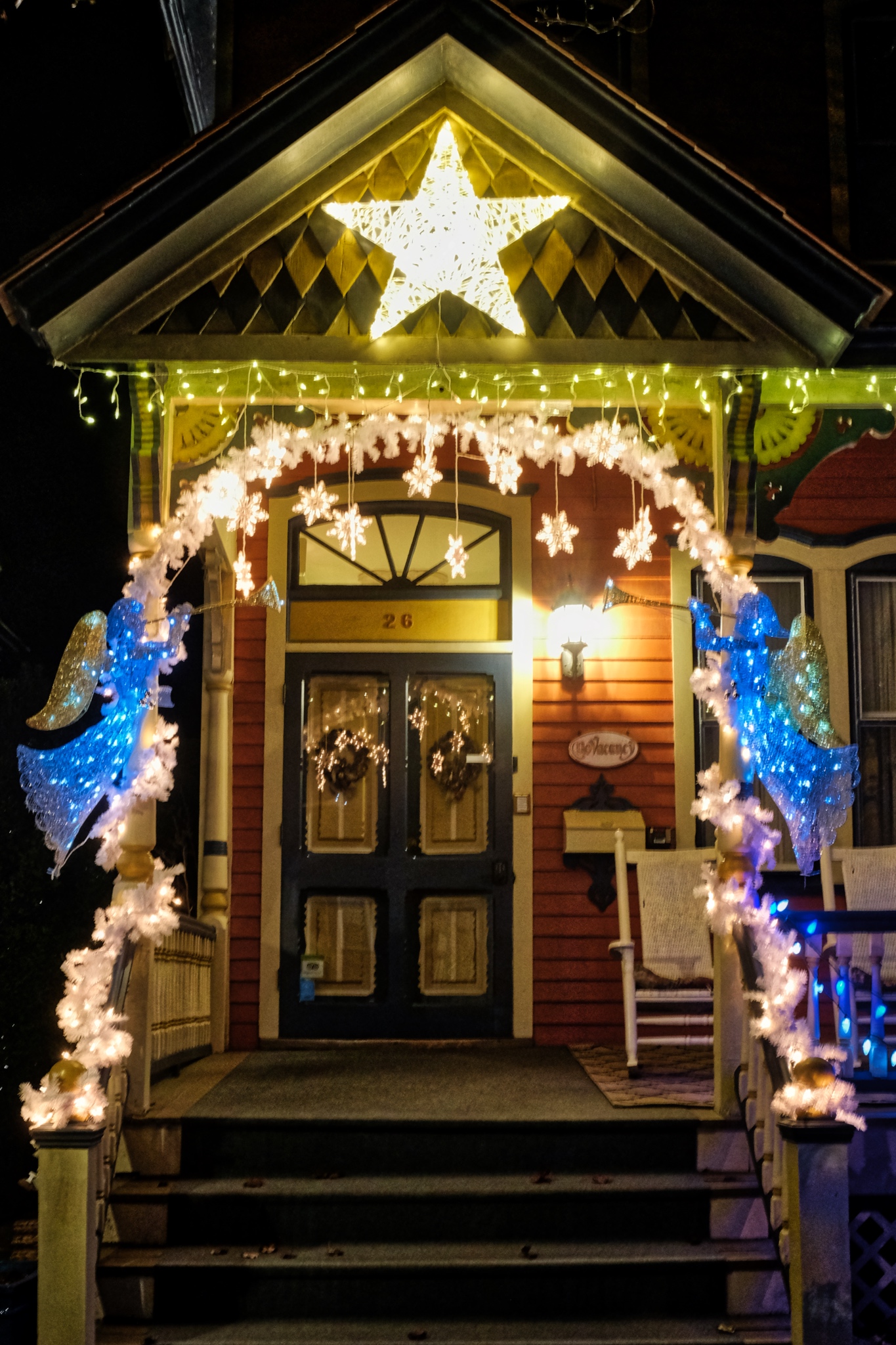 Festive, to say the least.
Festive, to say the least.
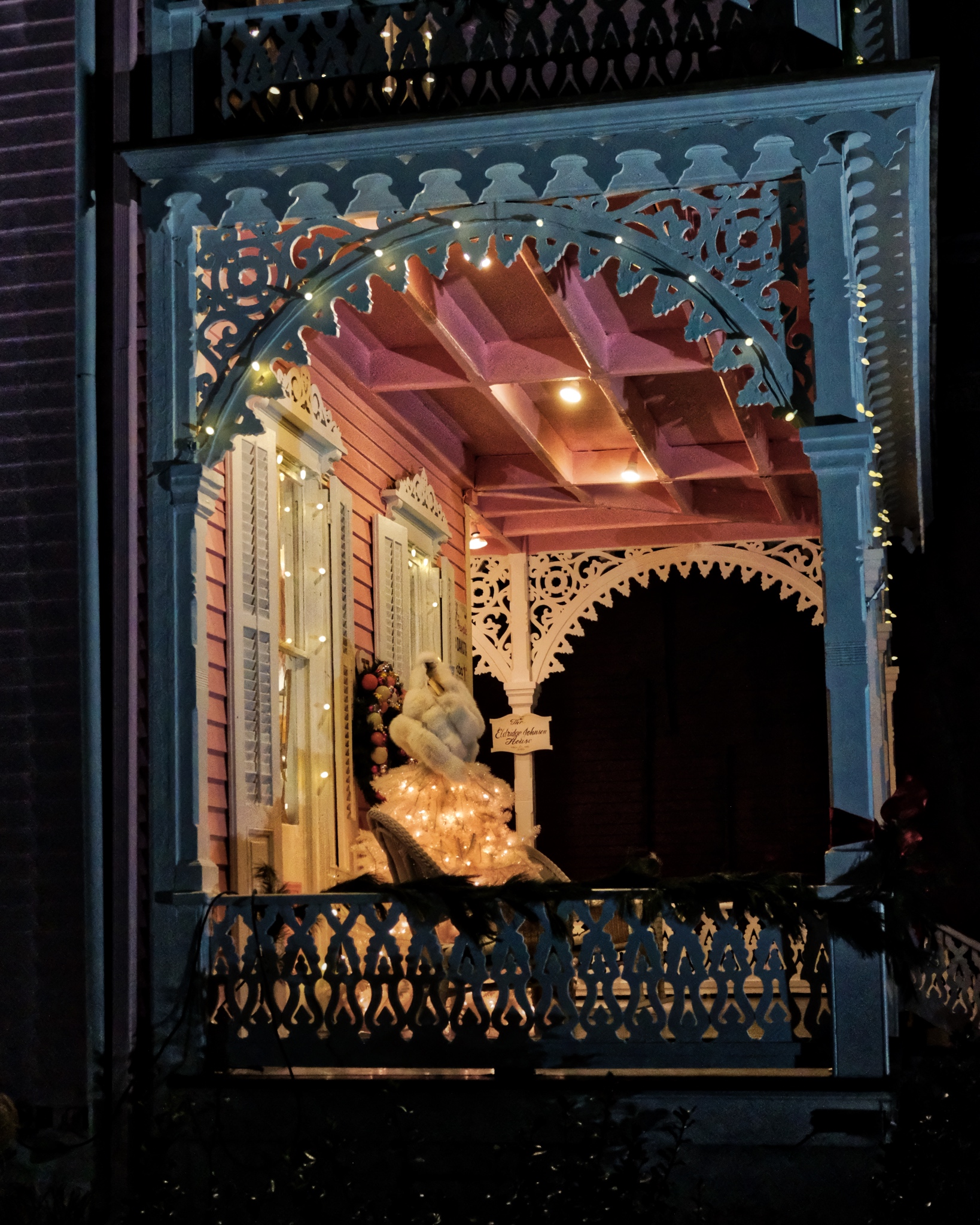 The Carpenter Victorian porch is just pure fantasy!
The Carpenter Victorian porch is just pure fantasy!
 Charming and bold colors.
Charming and bold colors.
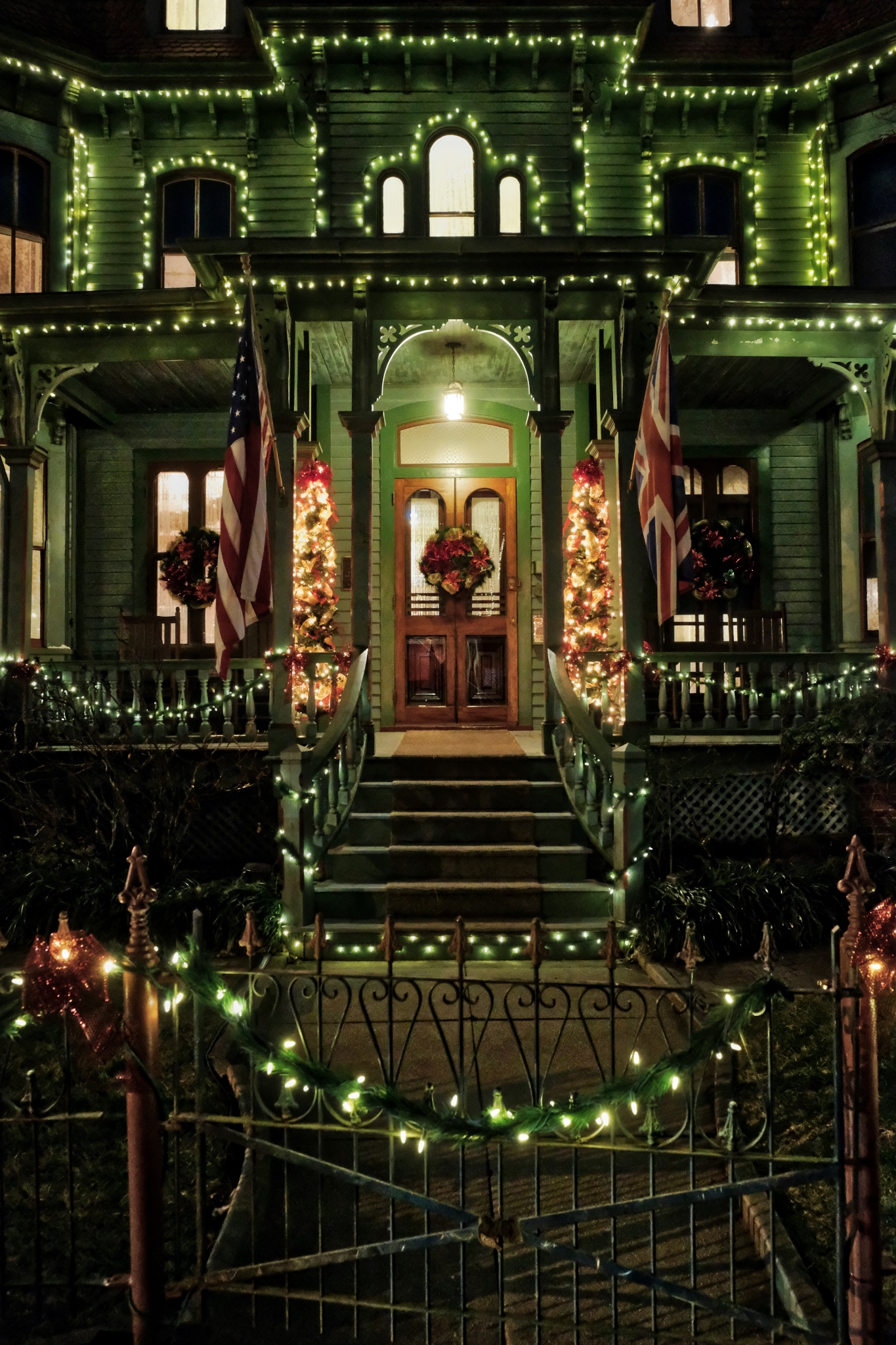 An old Victorian in all its Yuletide glory.
An old Victorian in all its Yuletide glory.
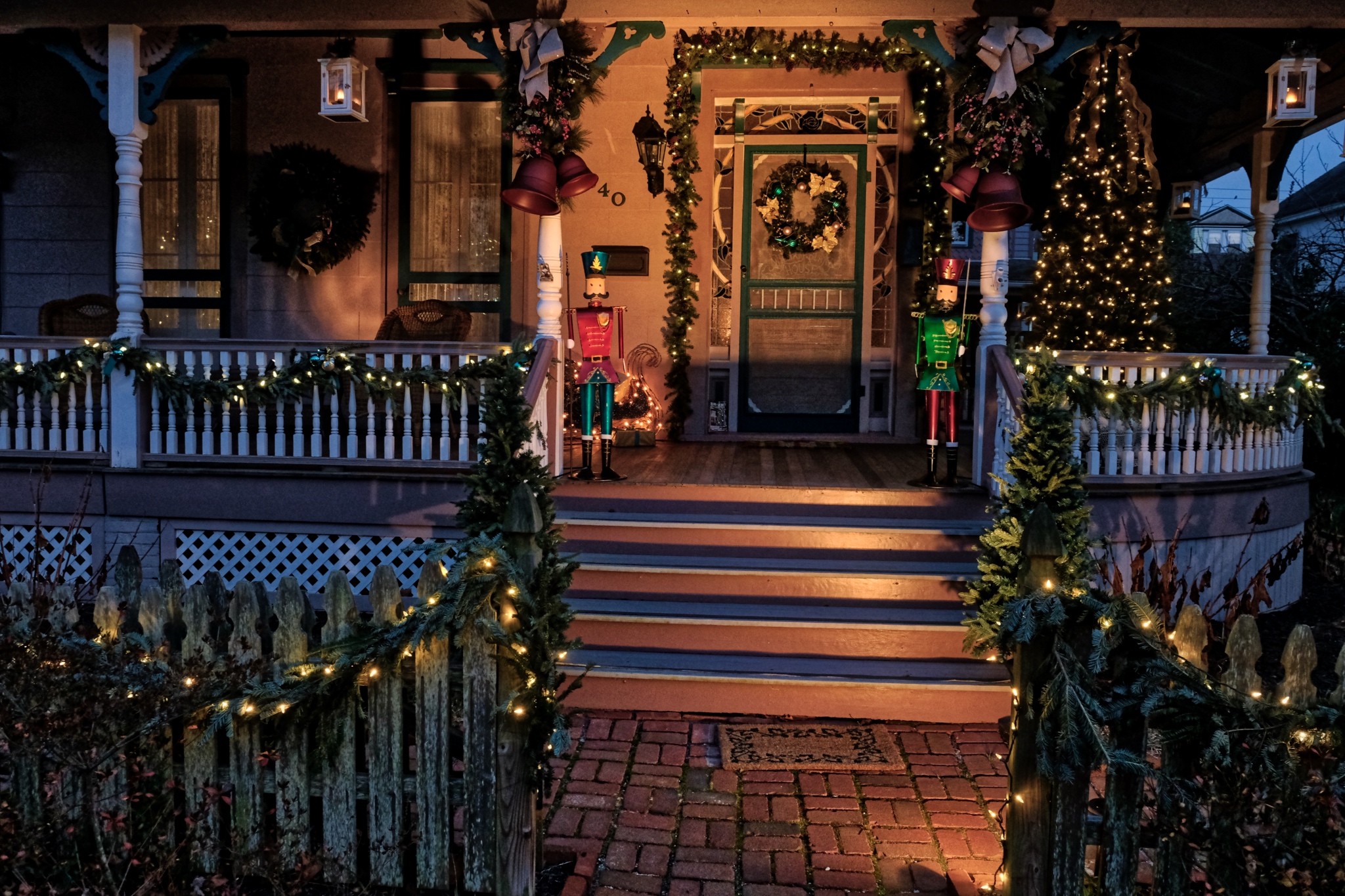 Soooo inviting!
Soooo inviting!
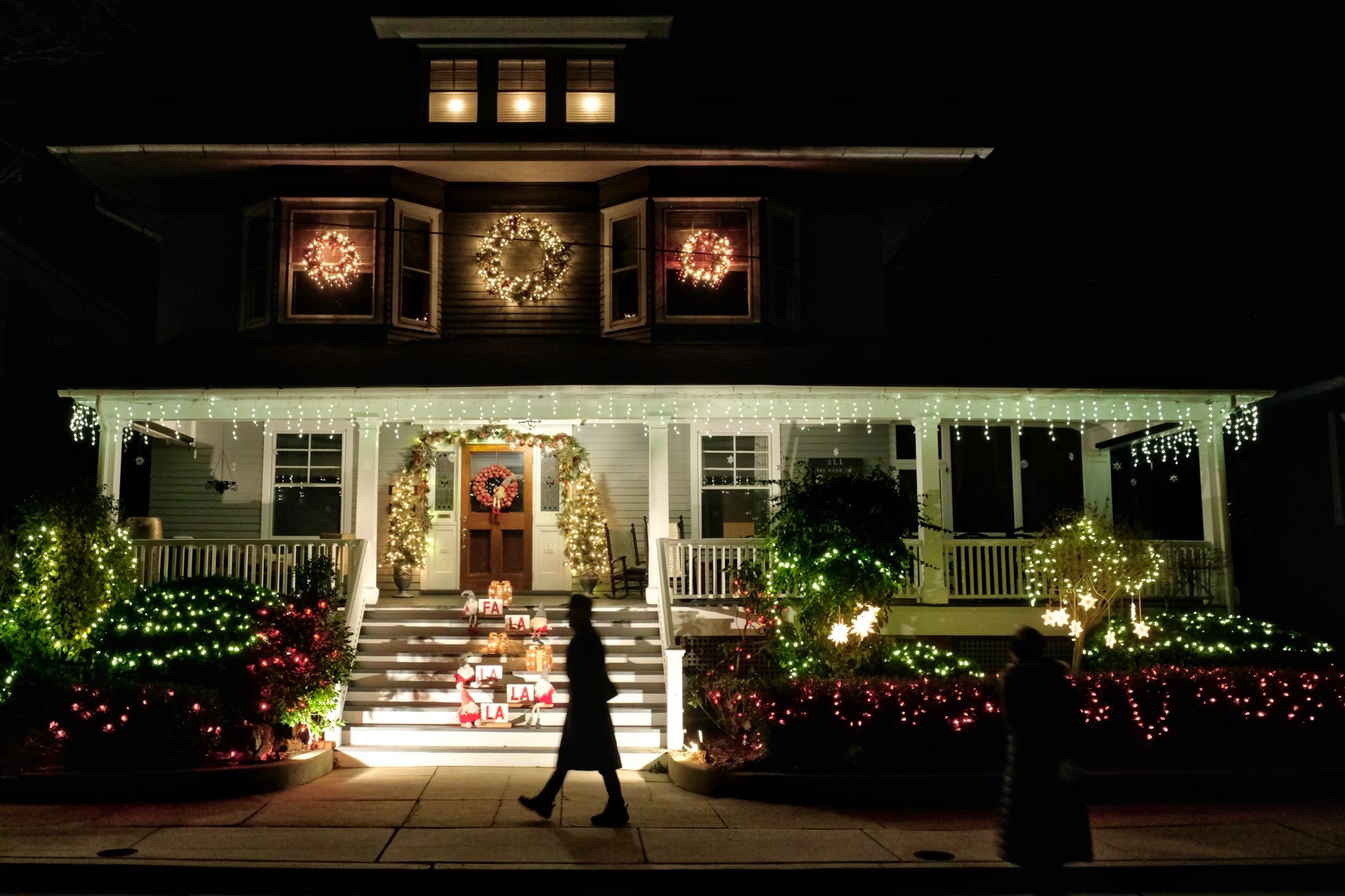 Porch Life has not vanished from the Earth . . . it lives on in Cape May, New Jersey!
Porch Life has not vanished from the Earth . . . it lives on in Cape May, New Jersey!
